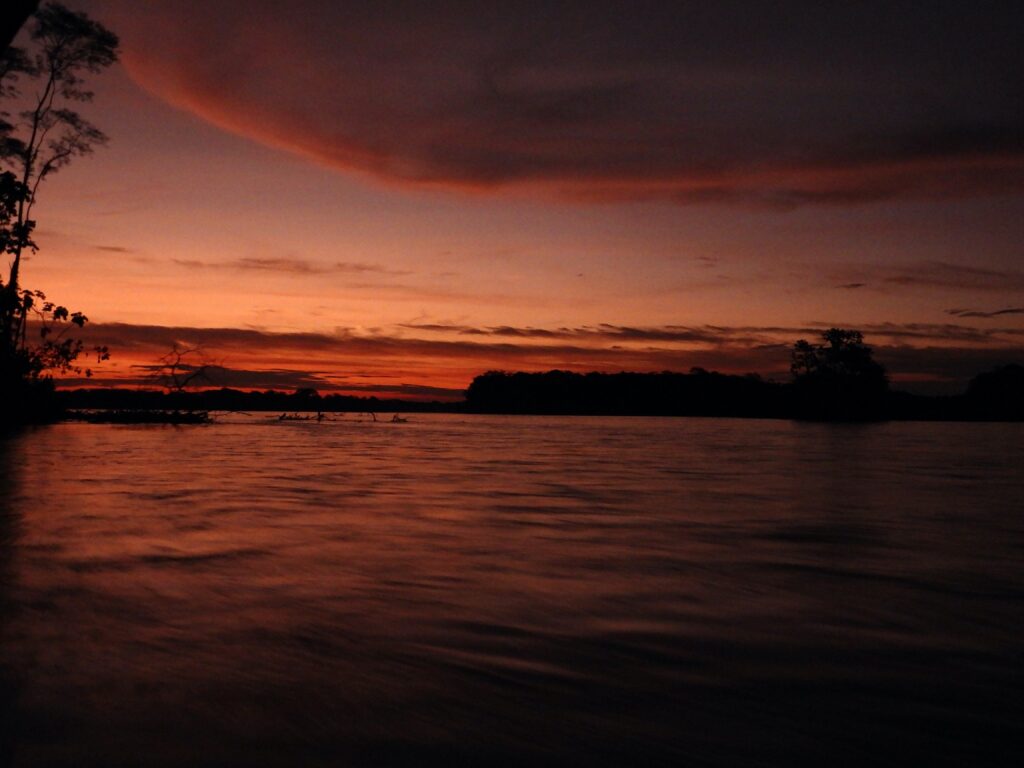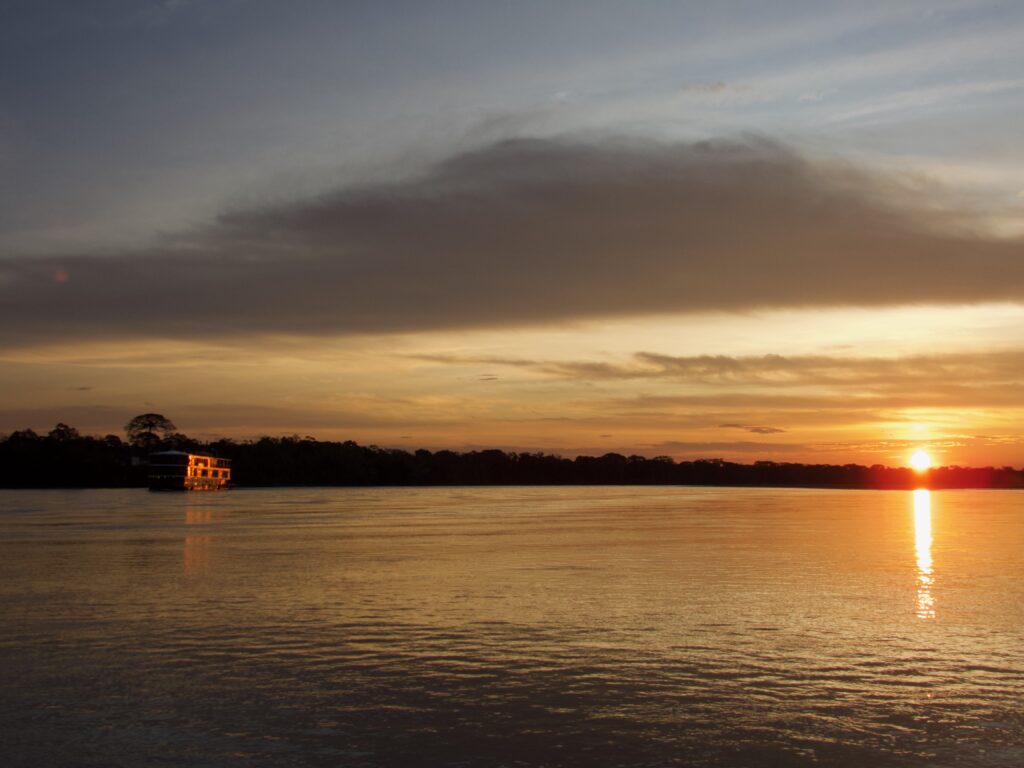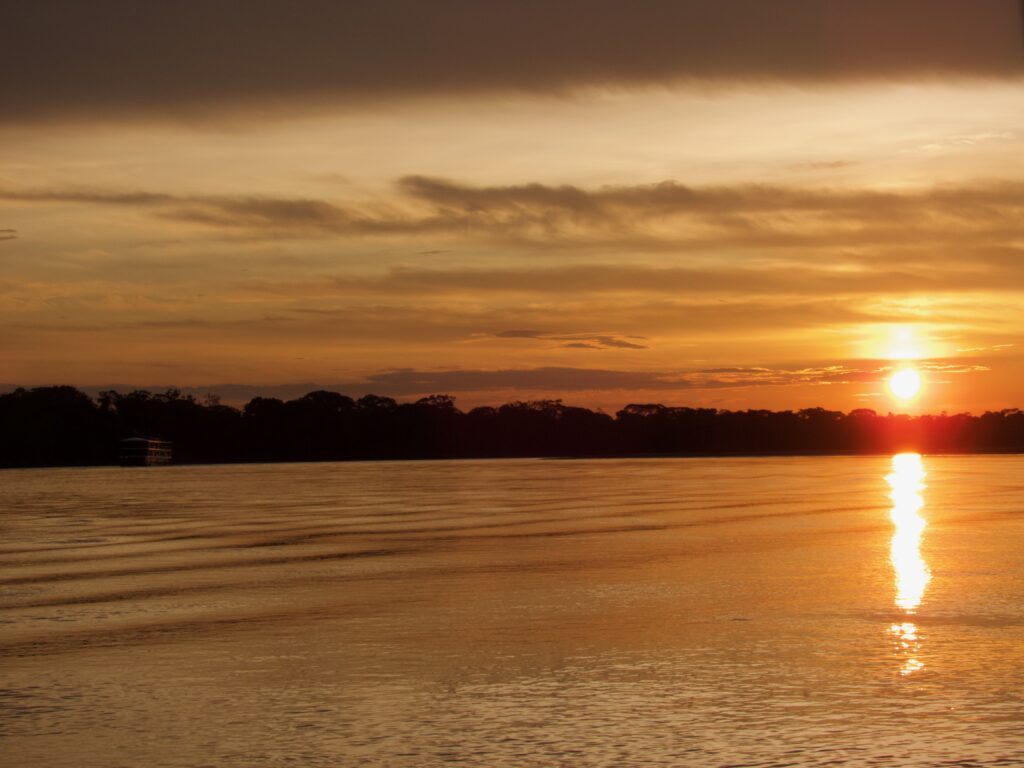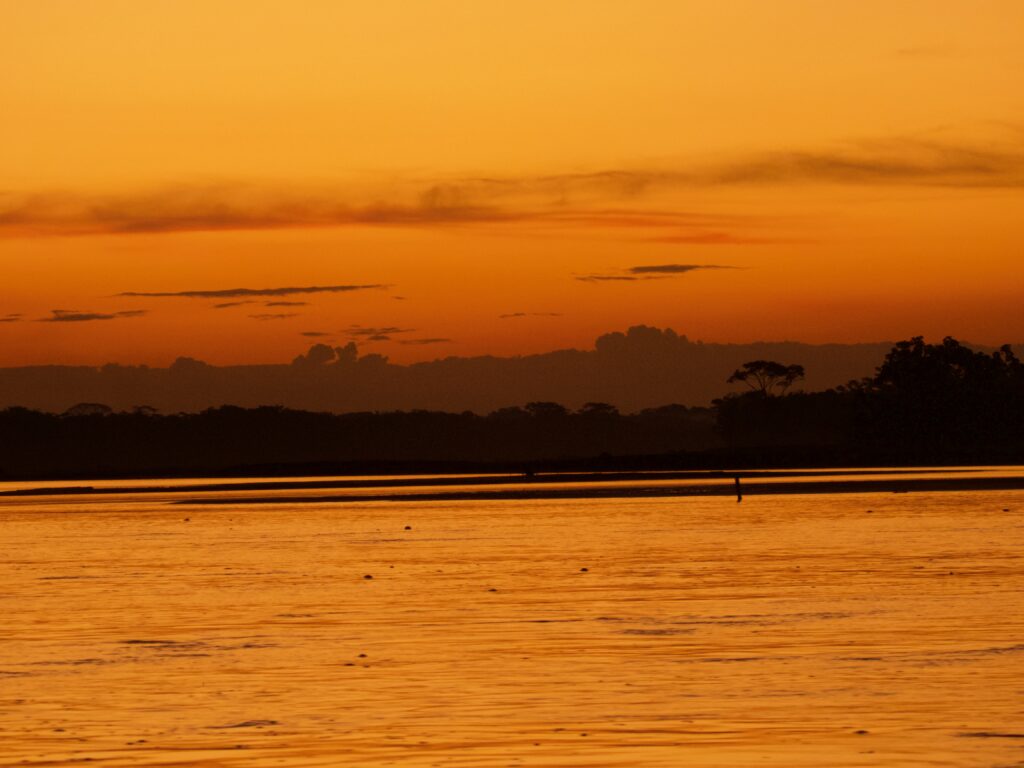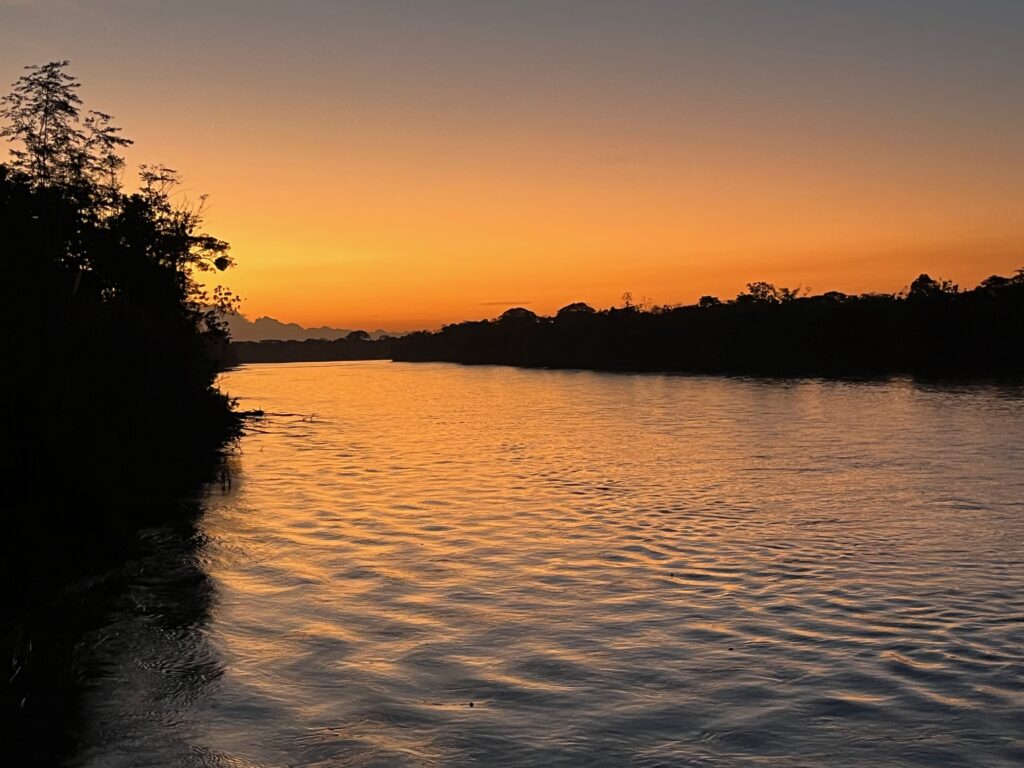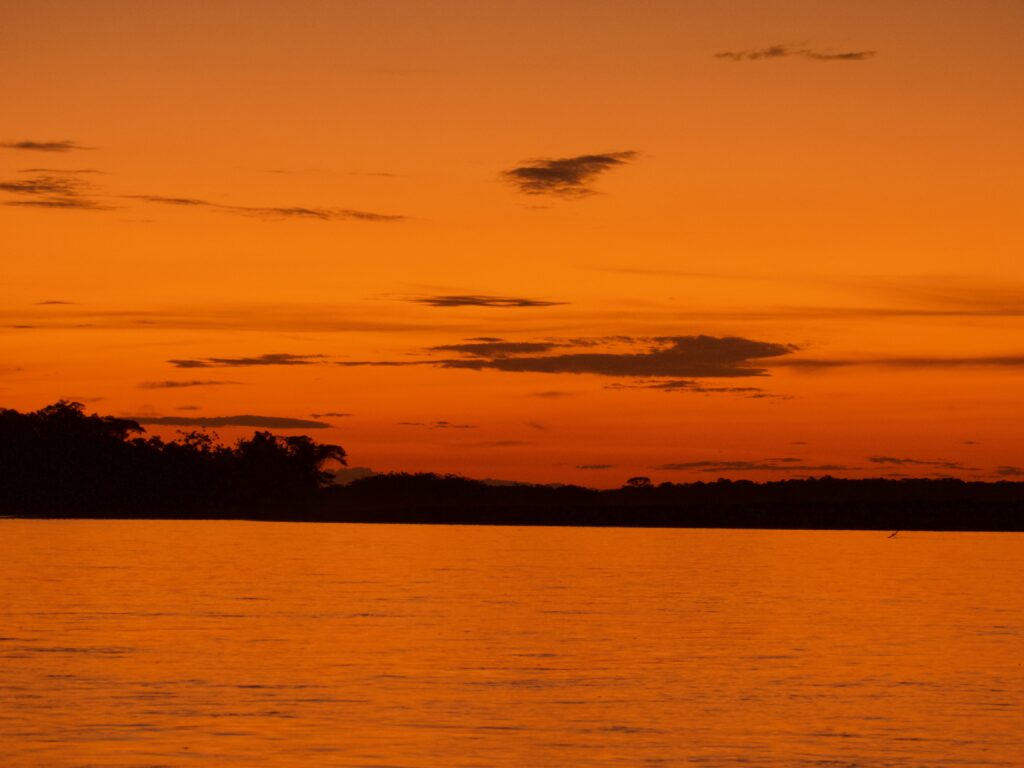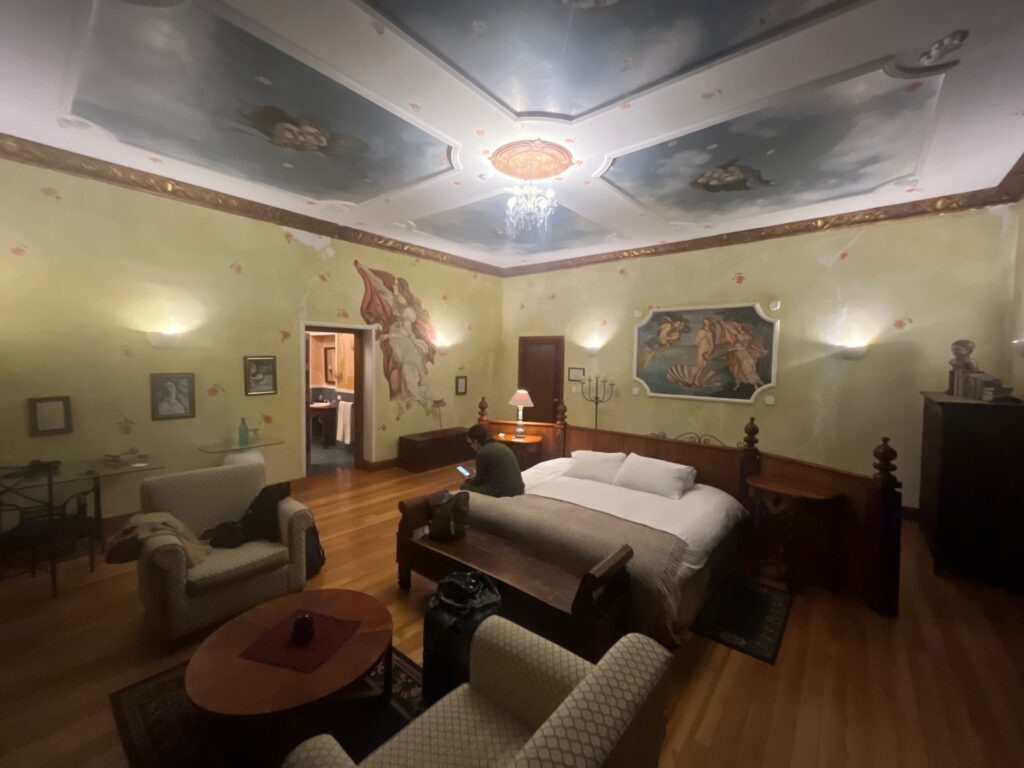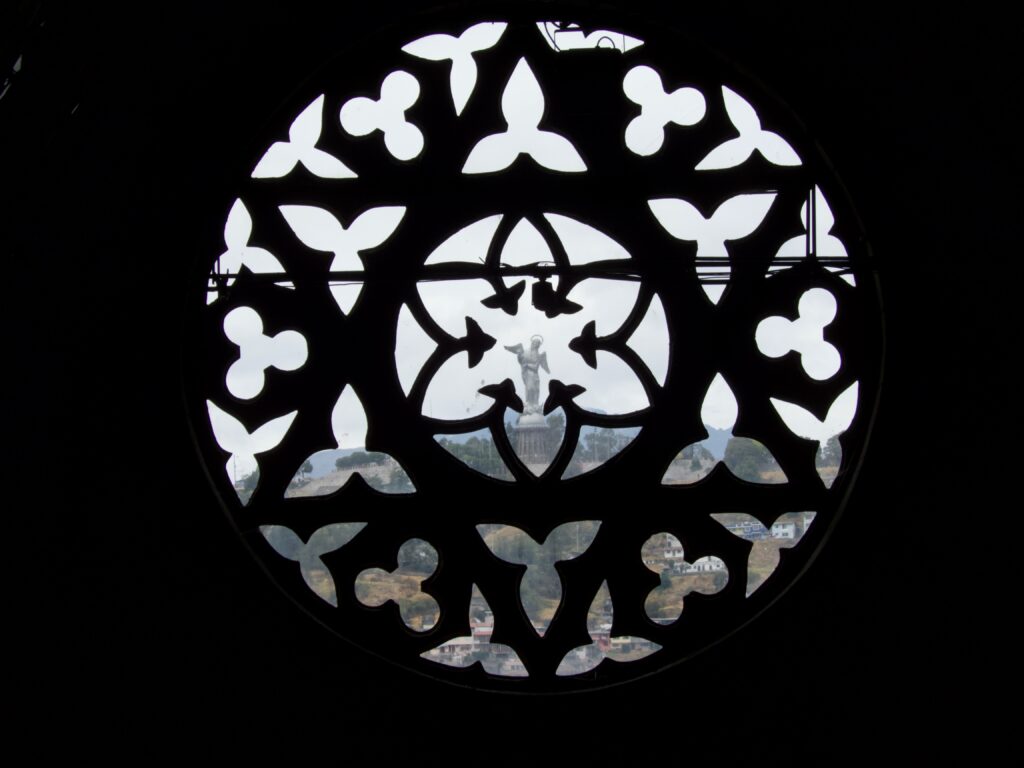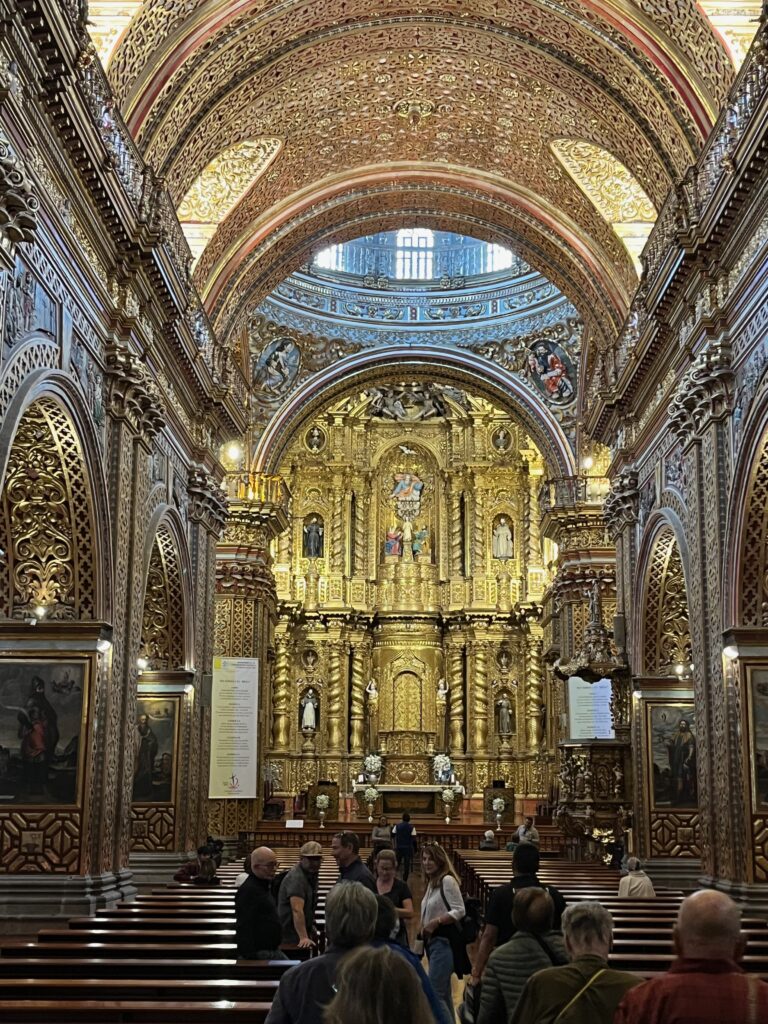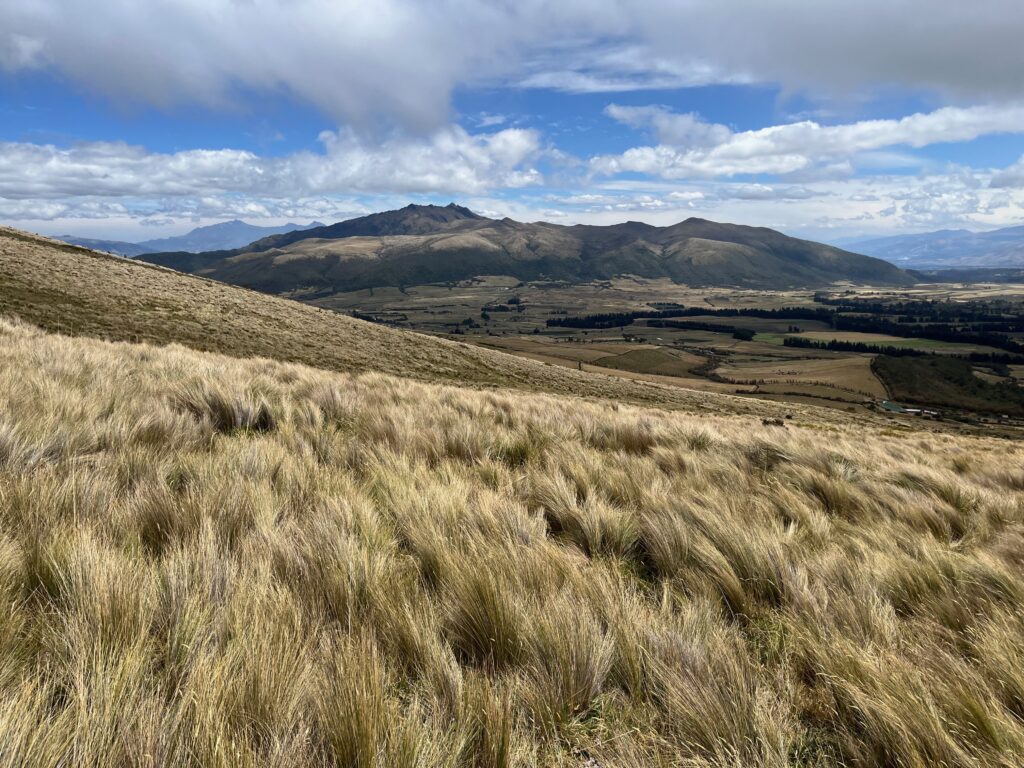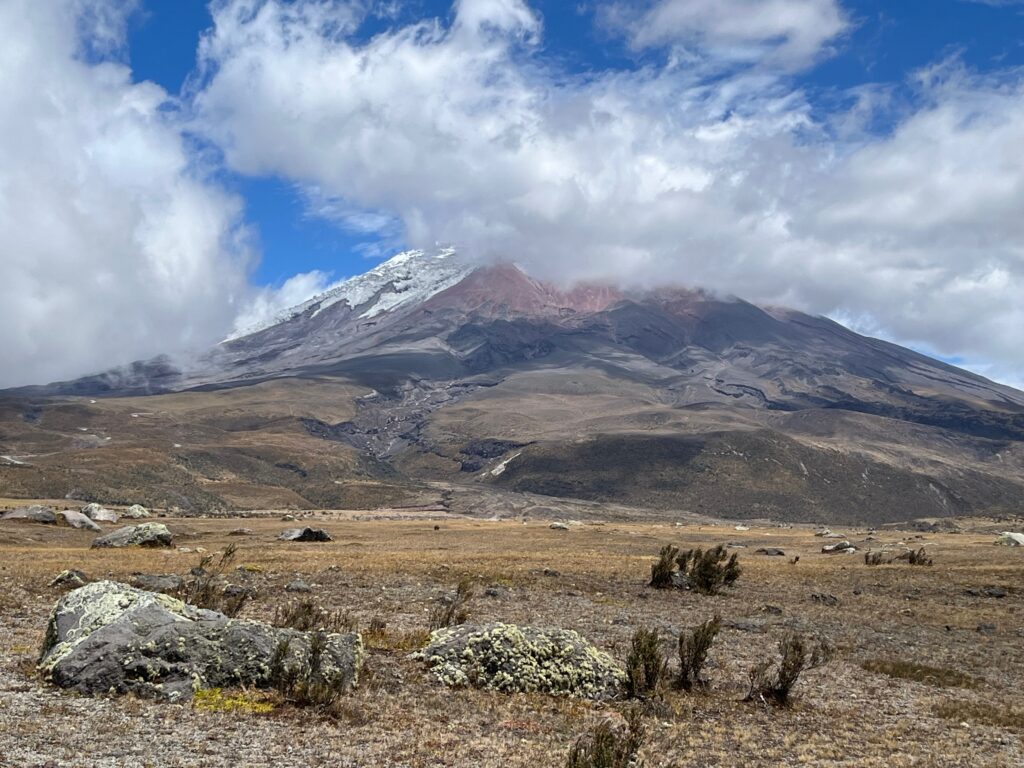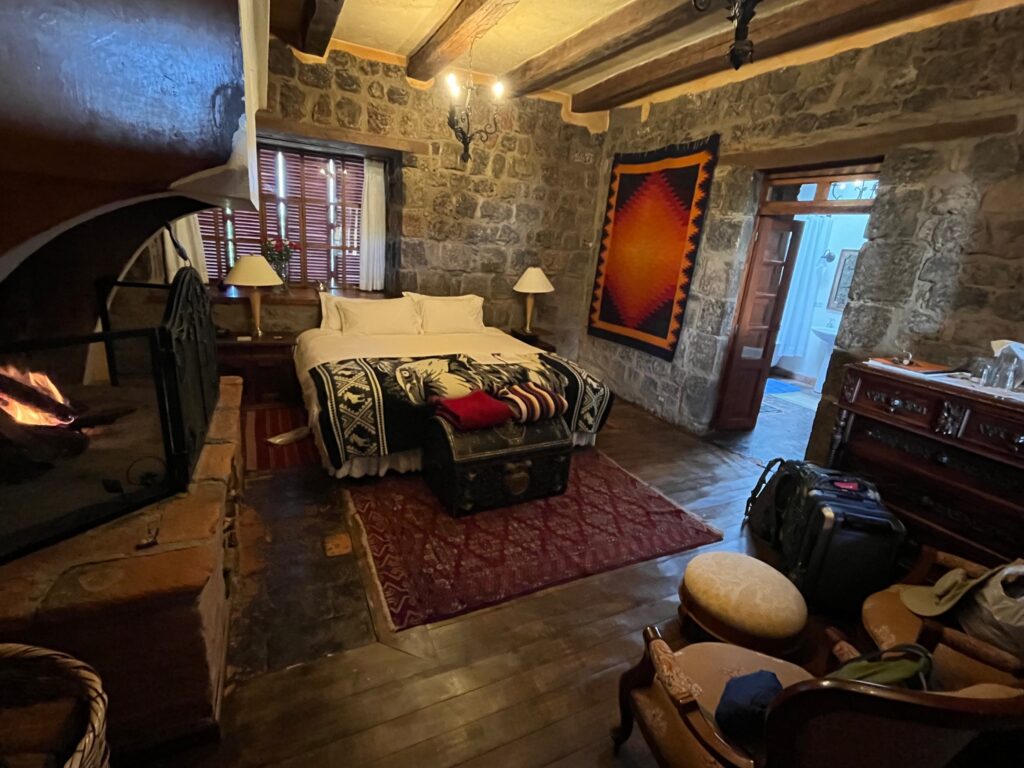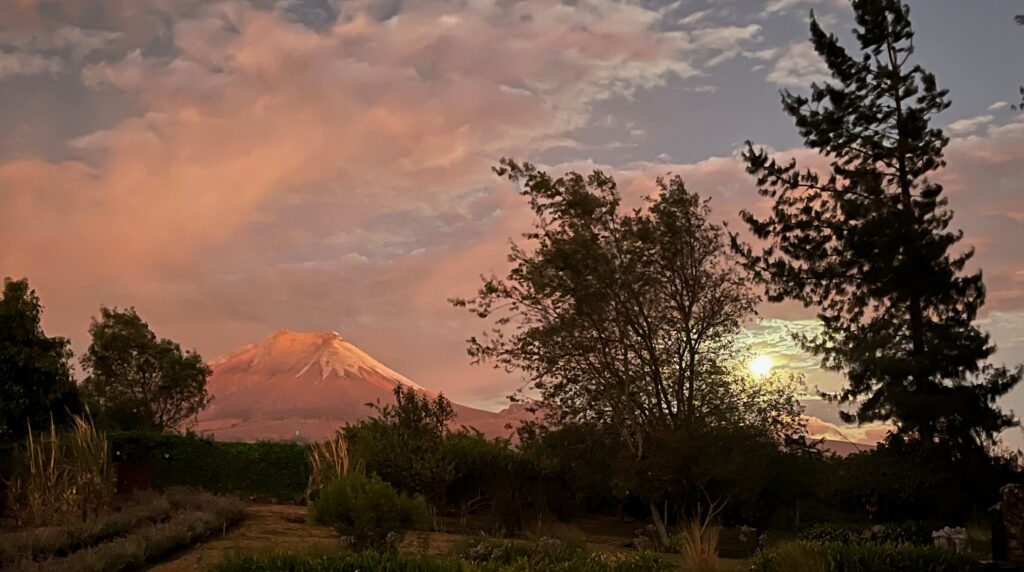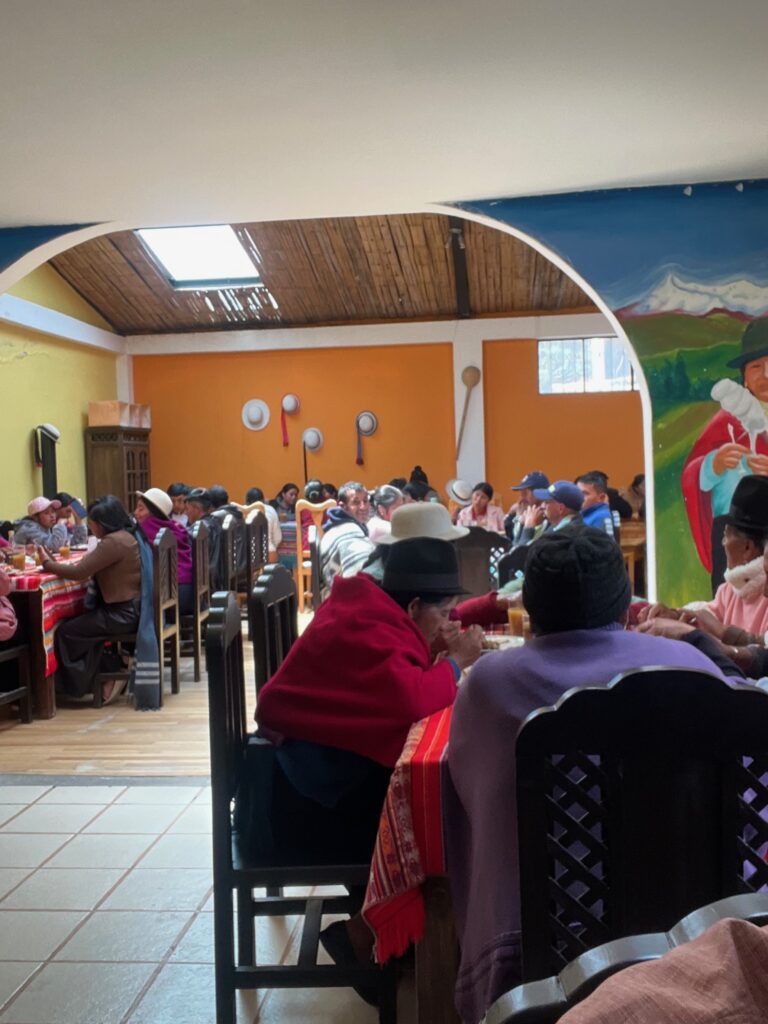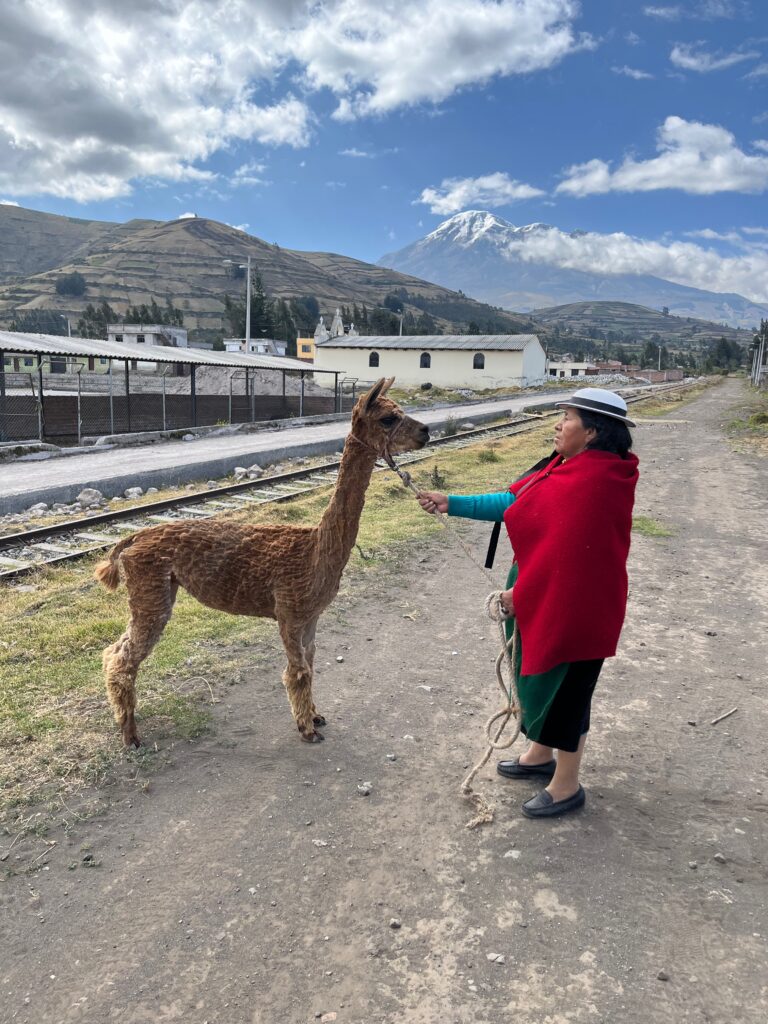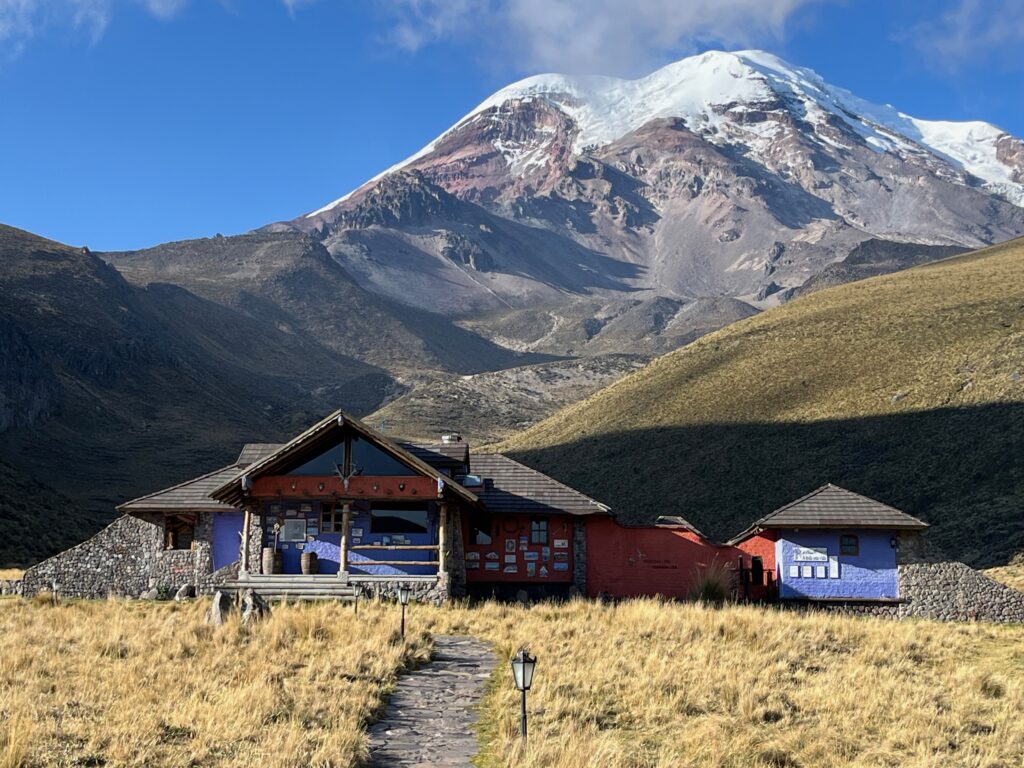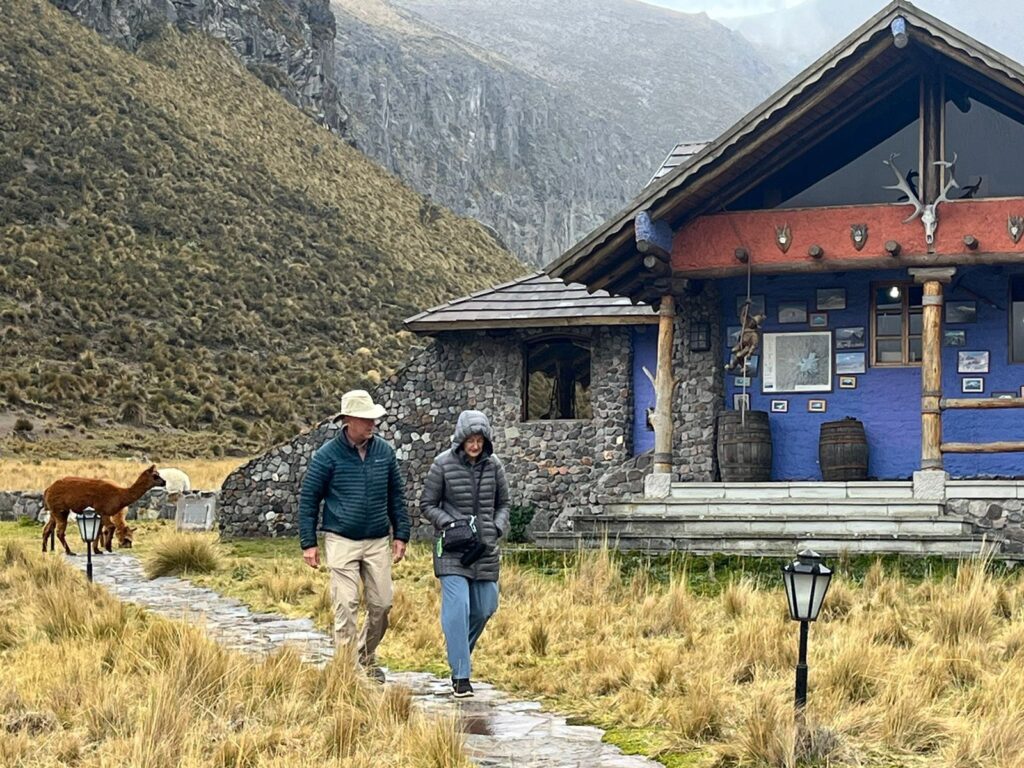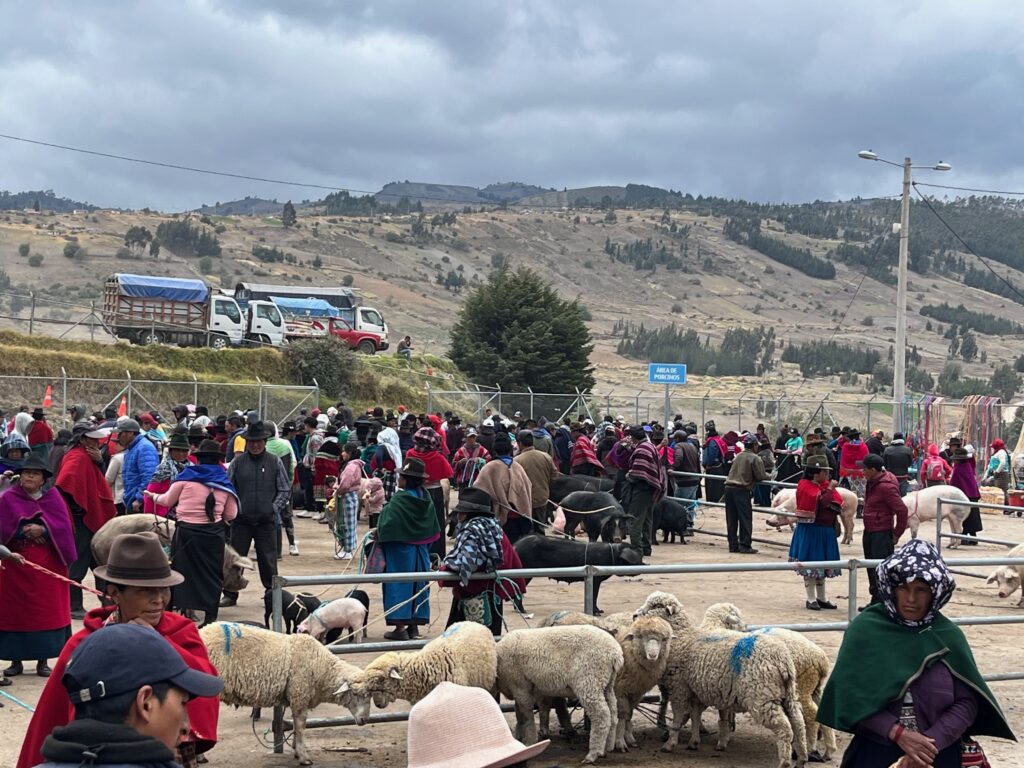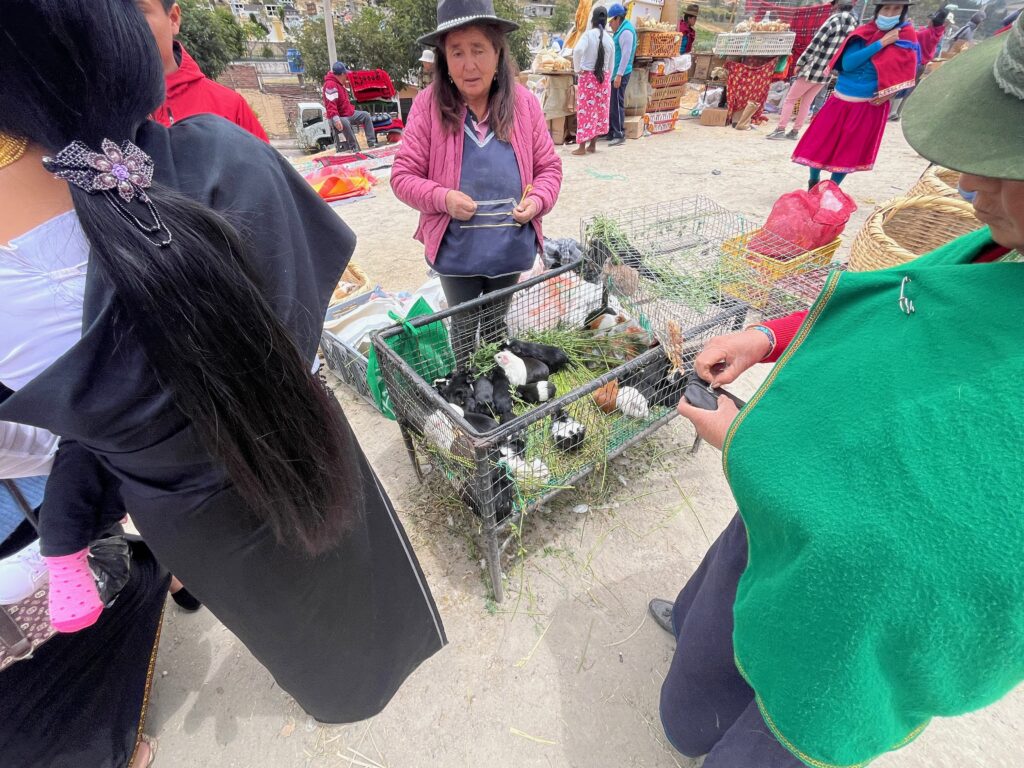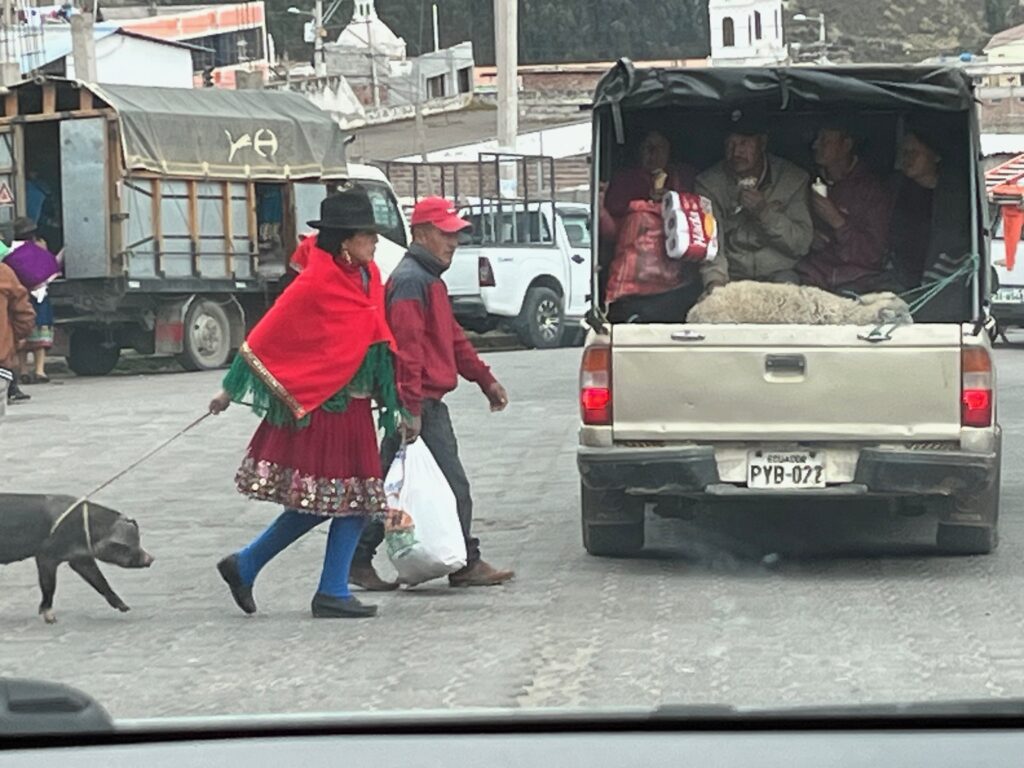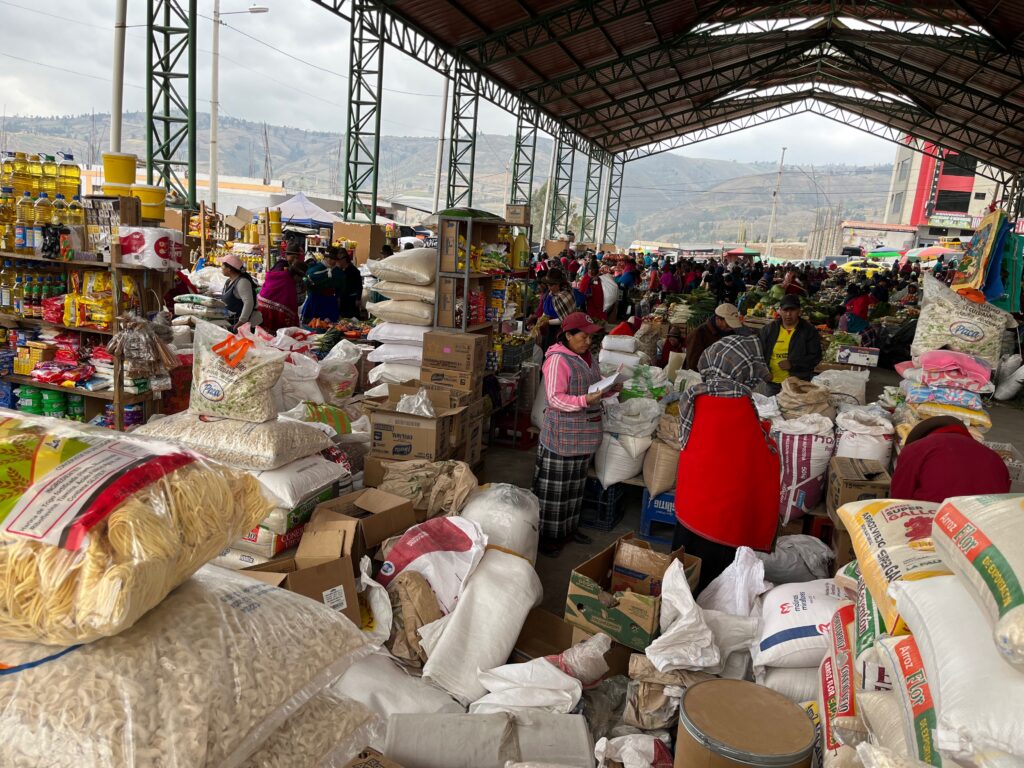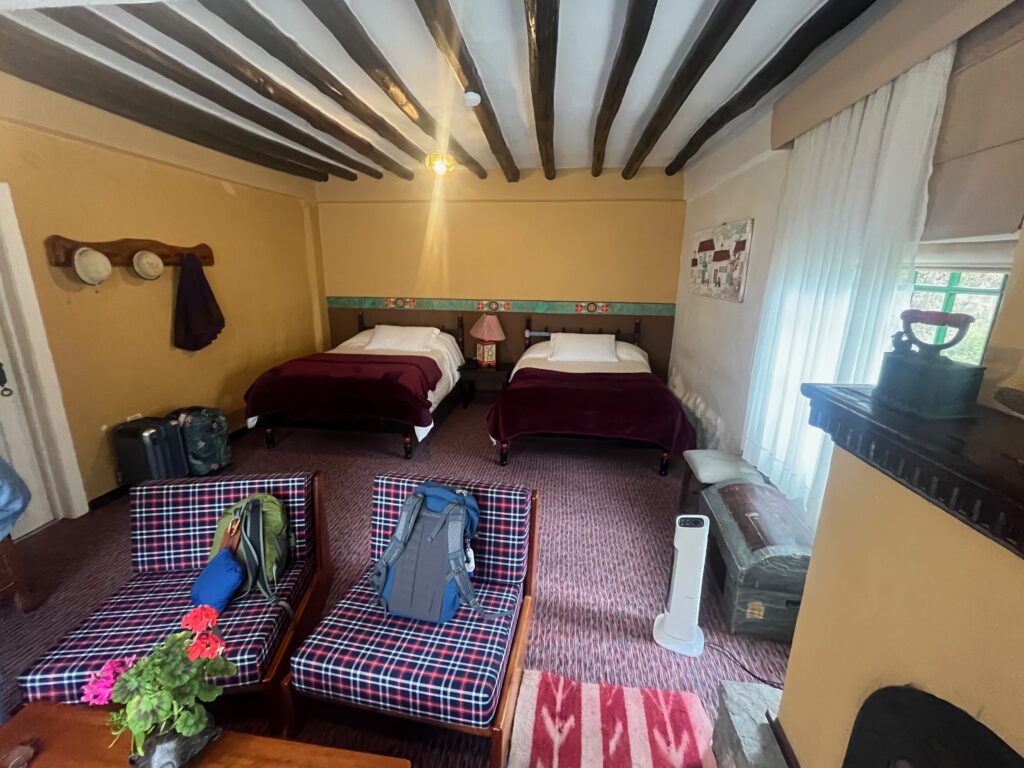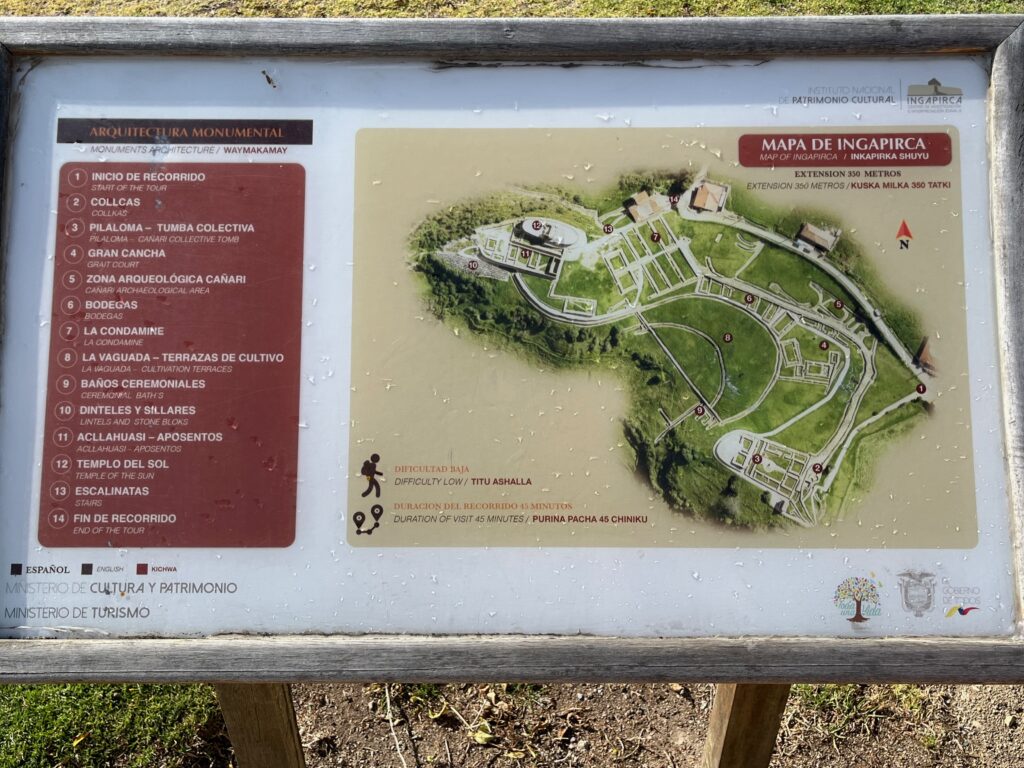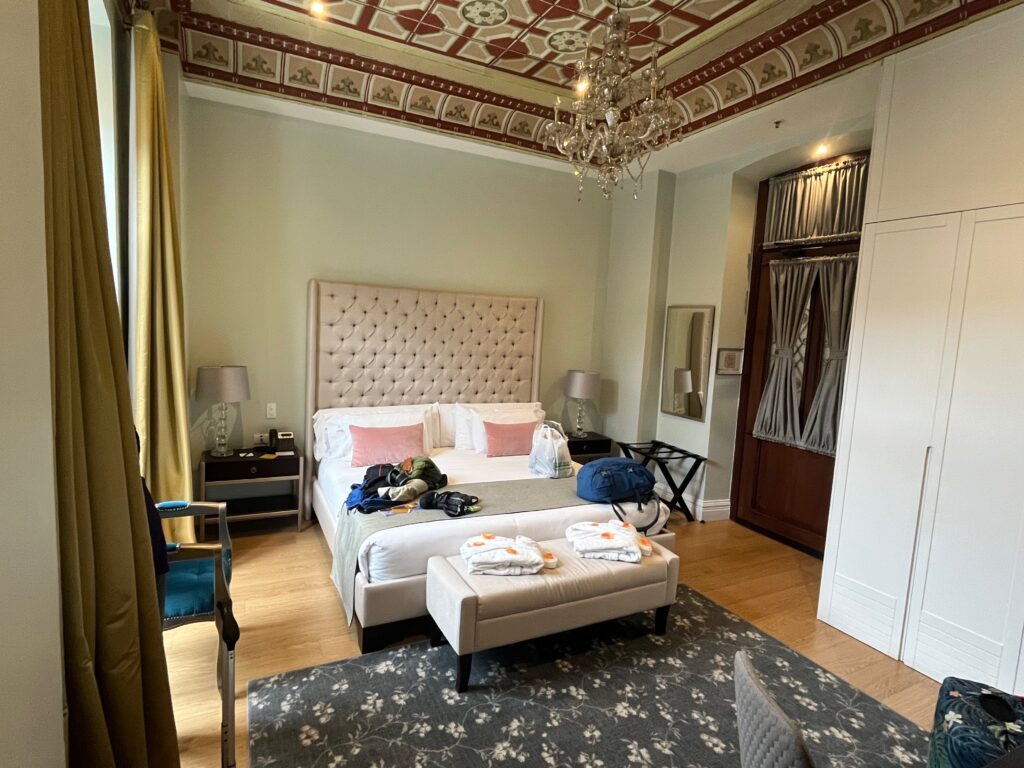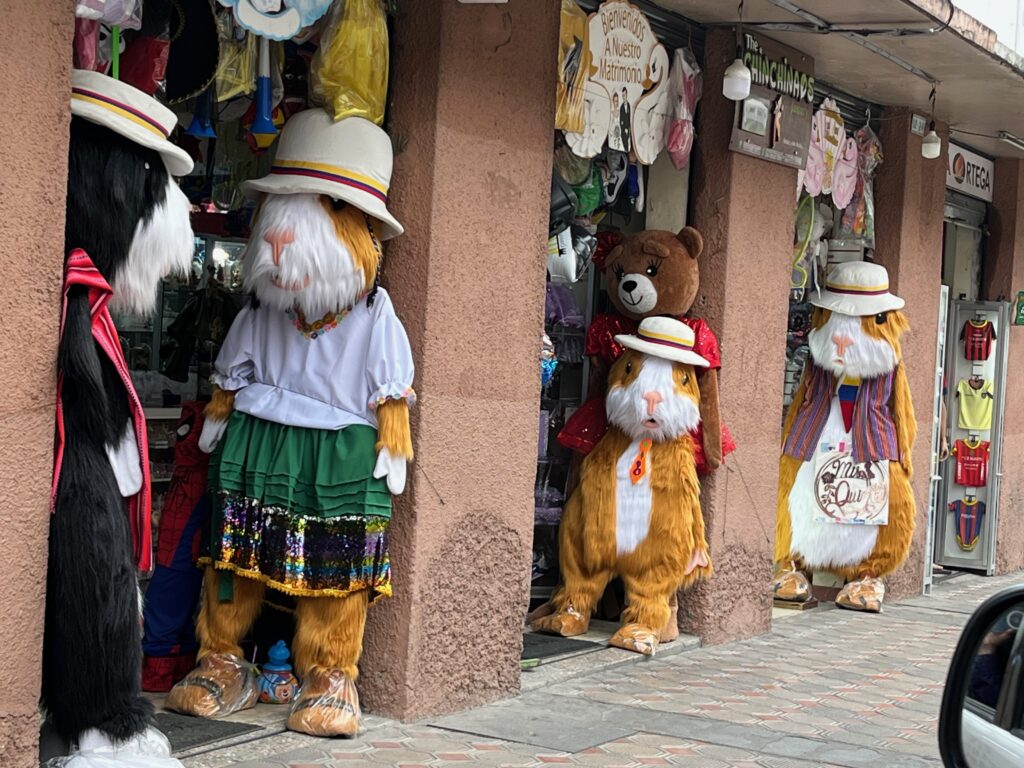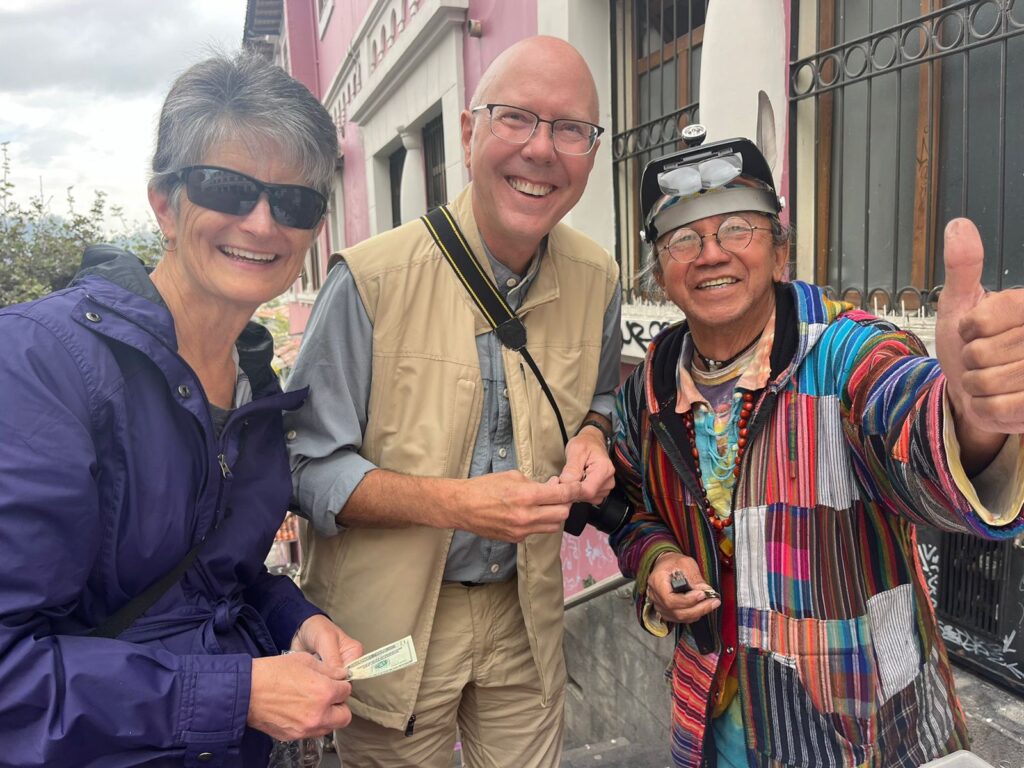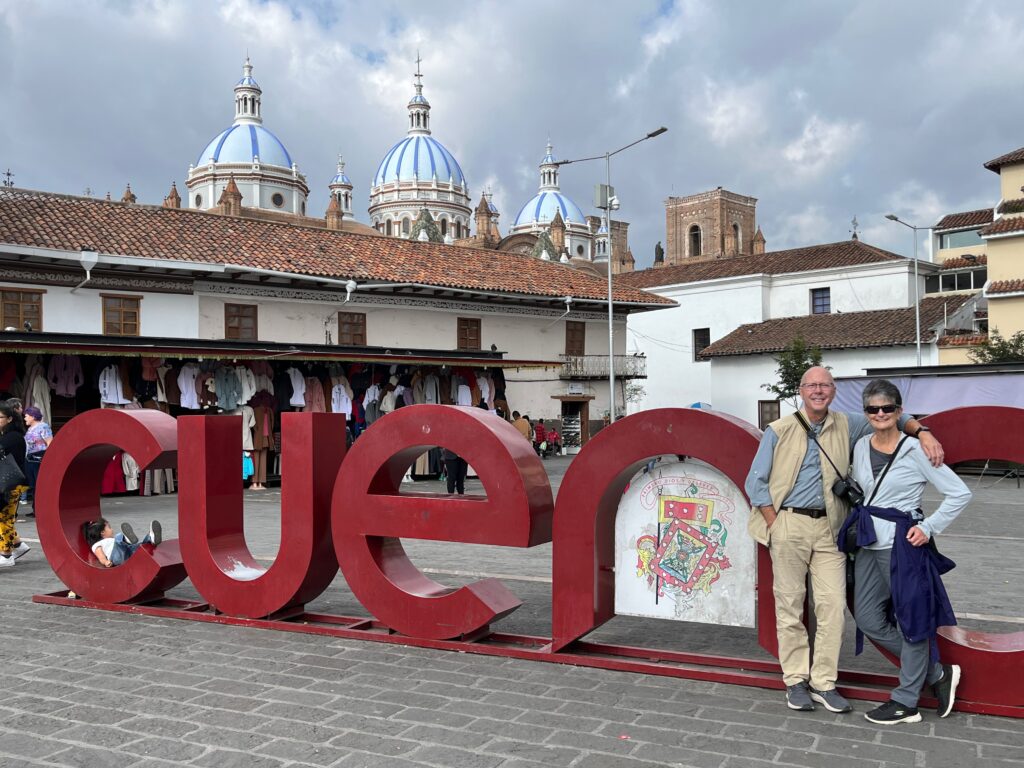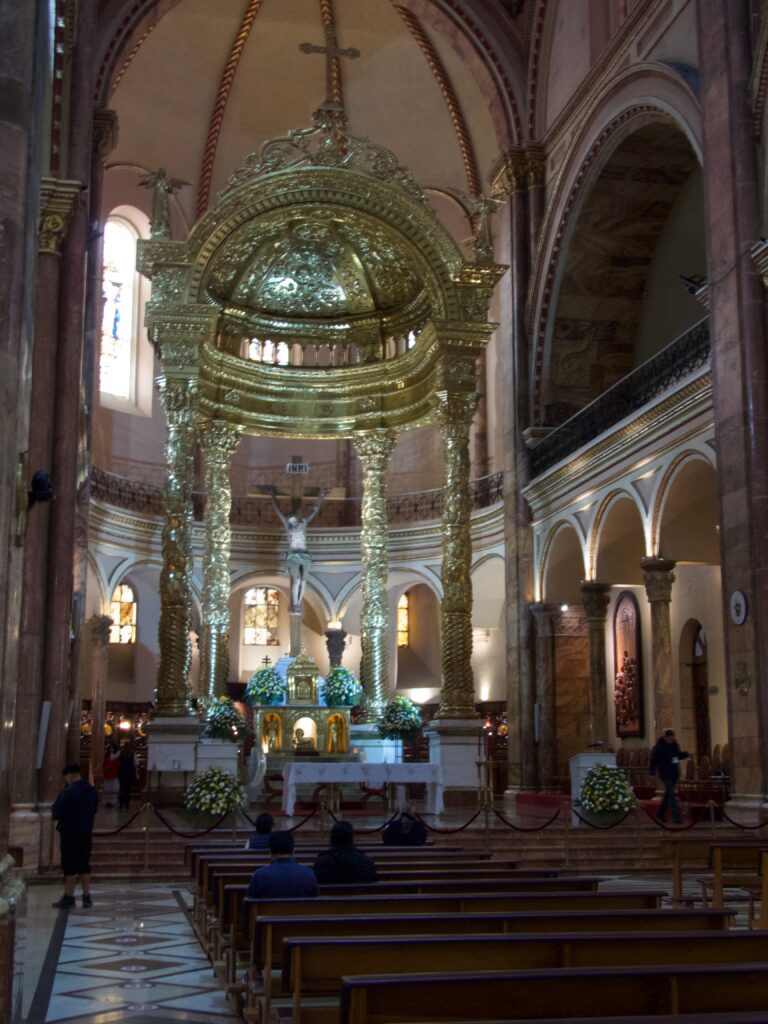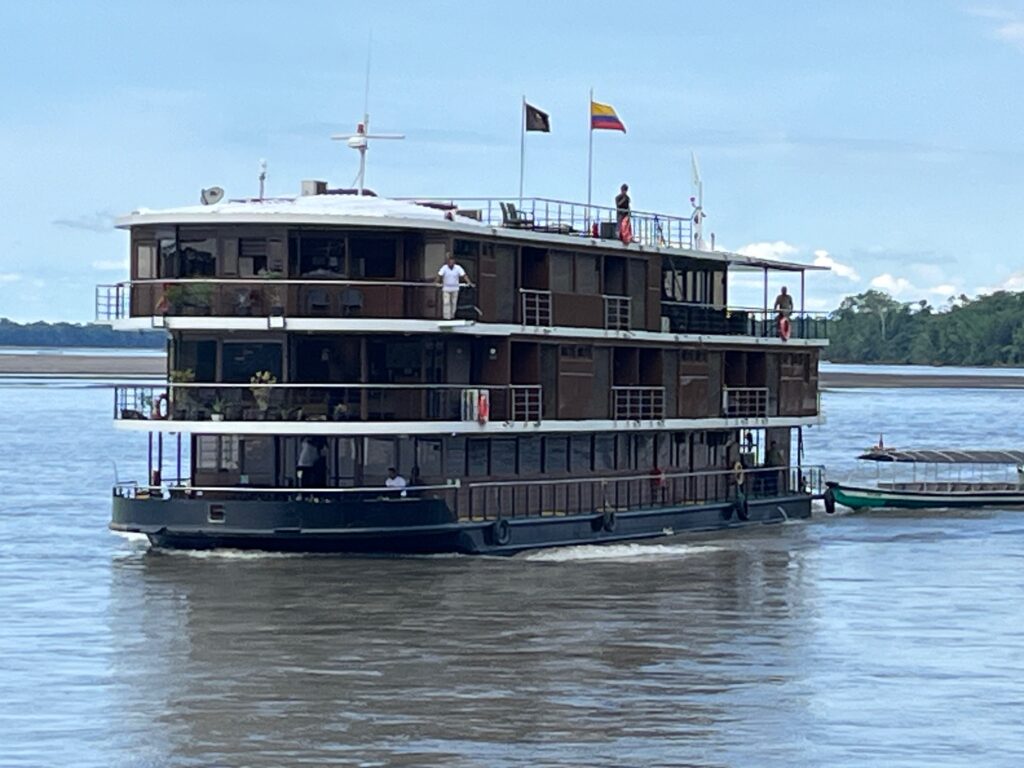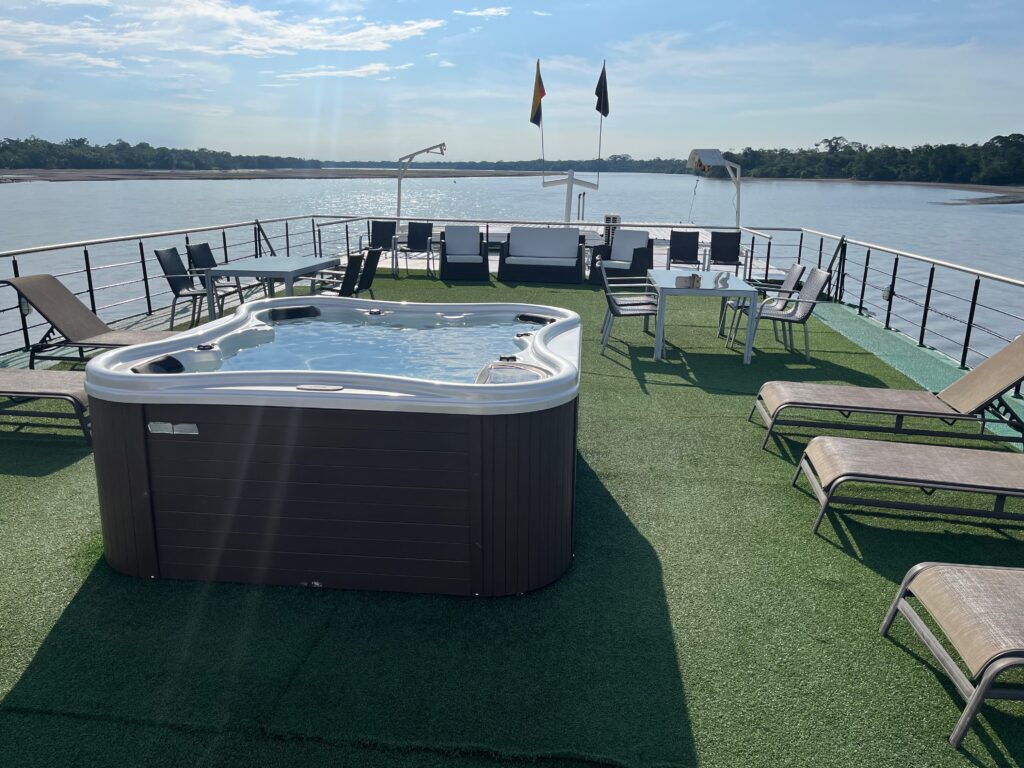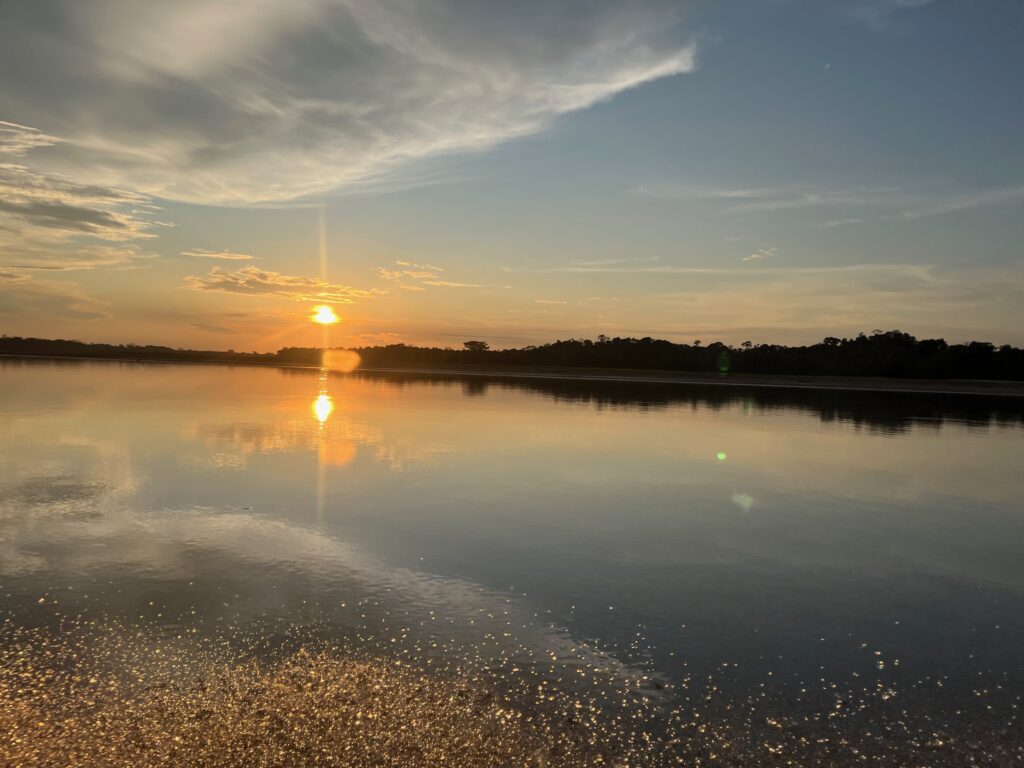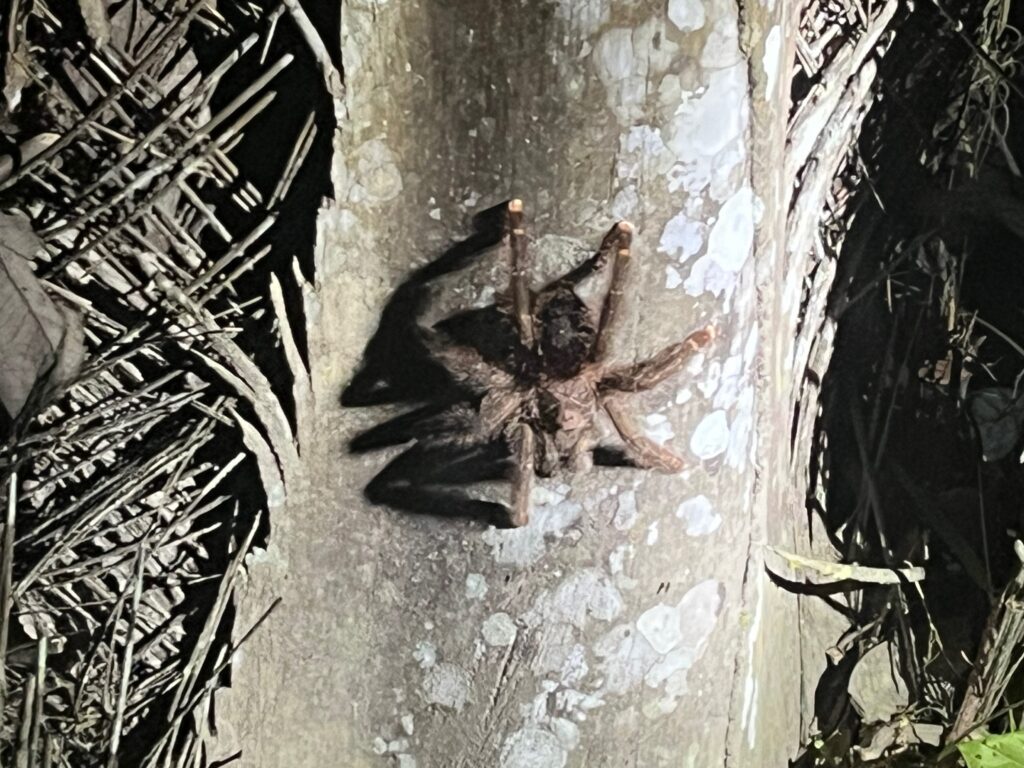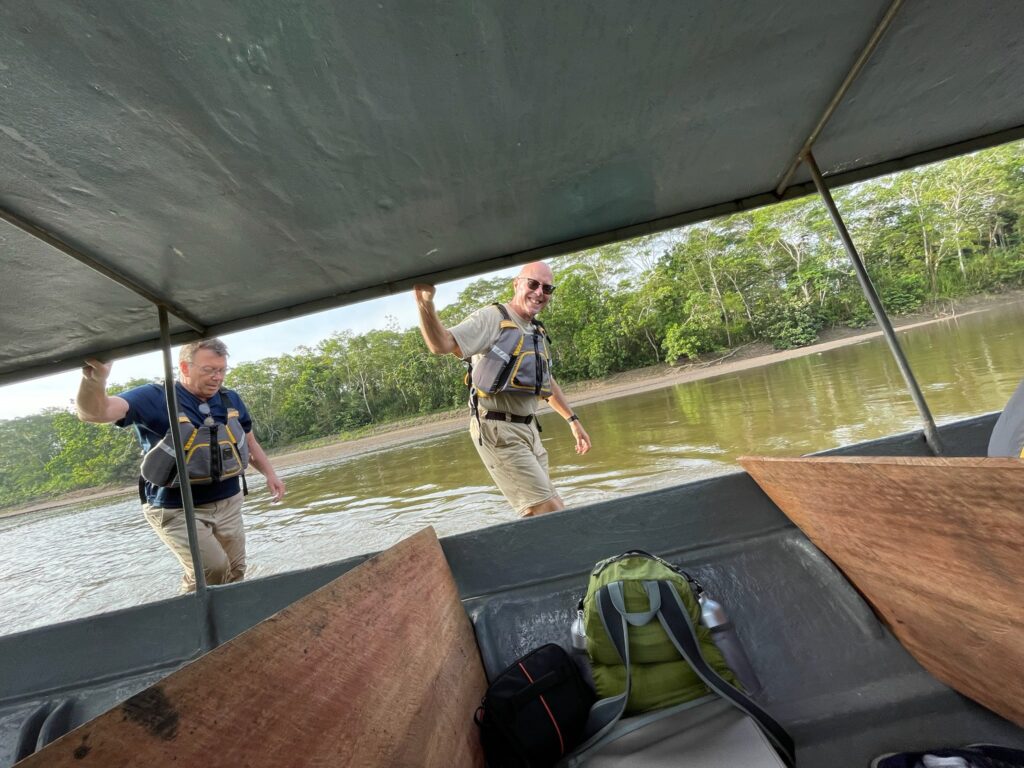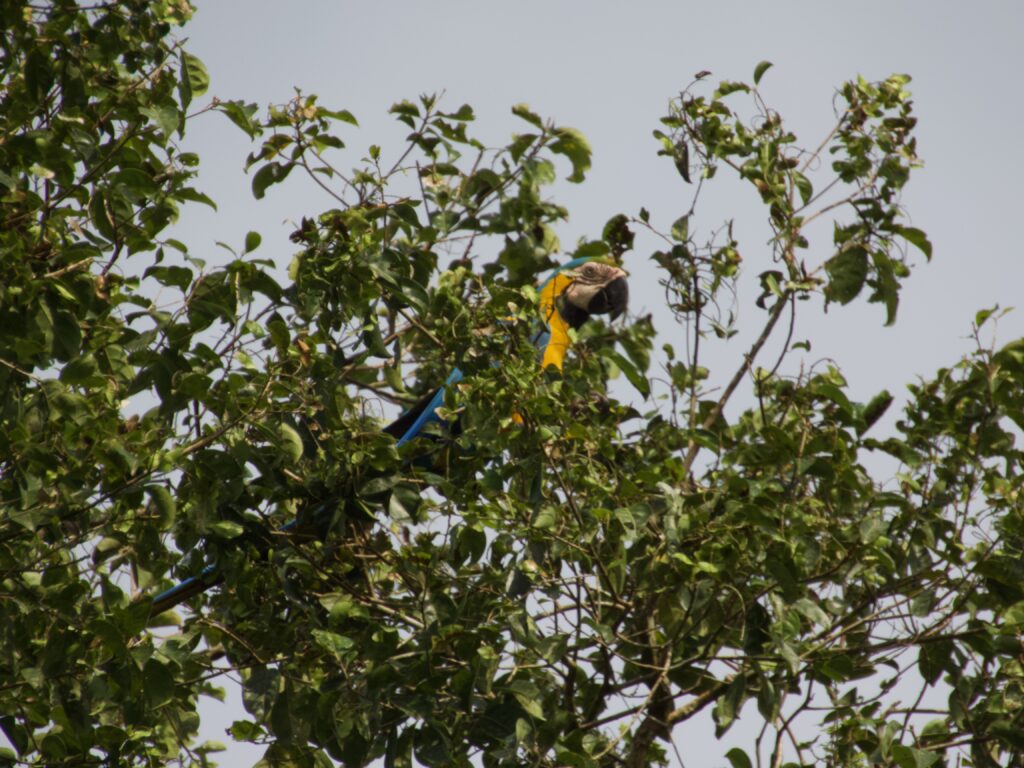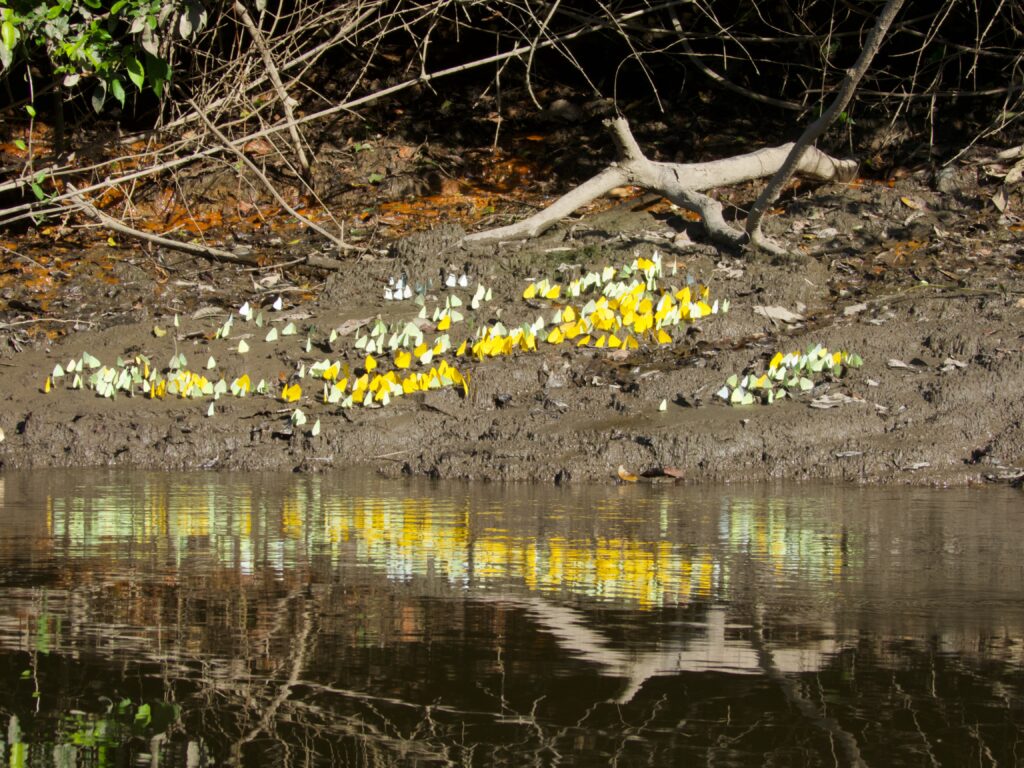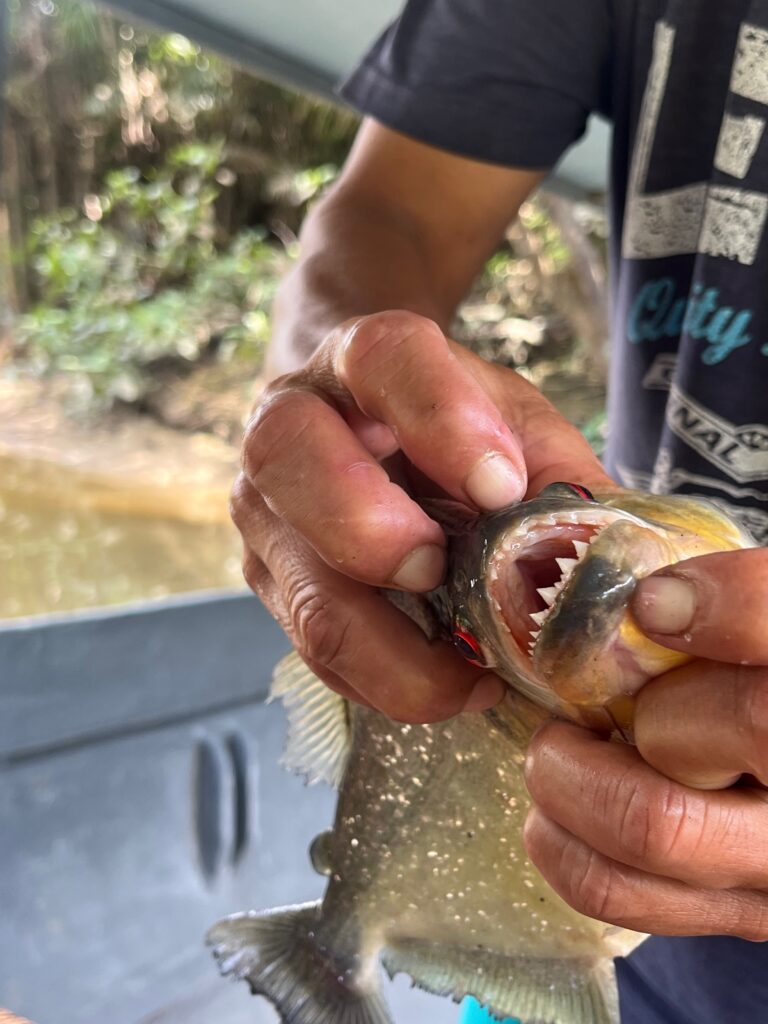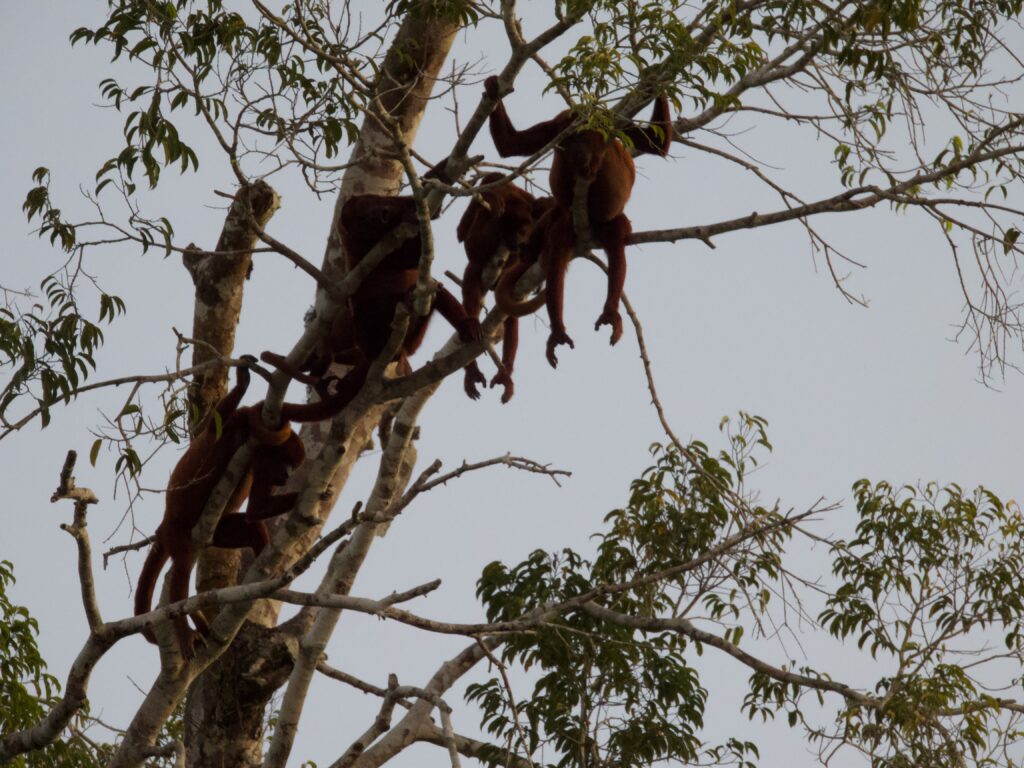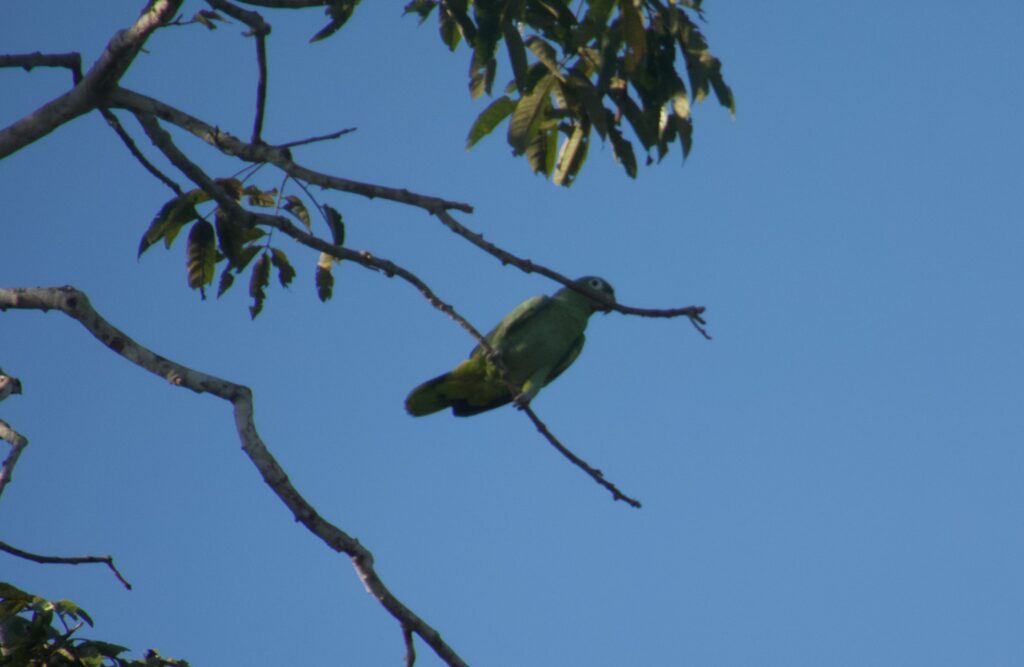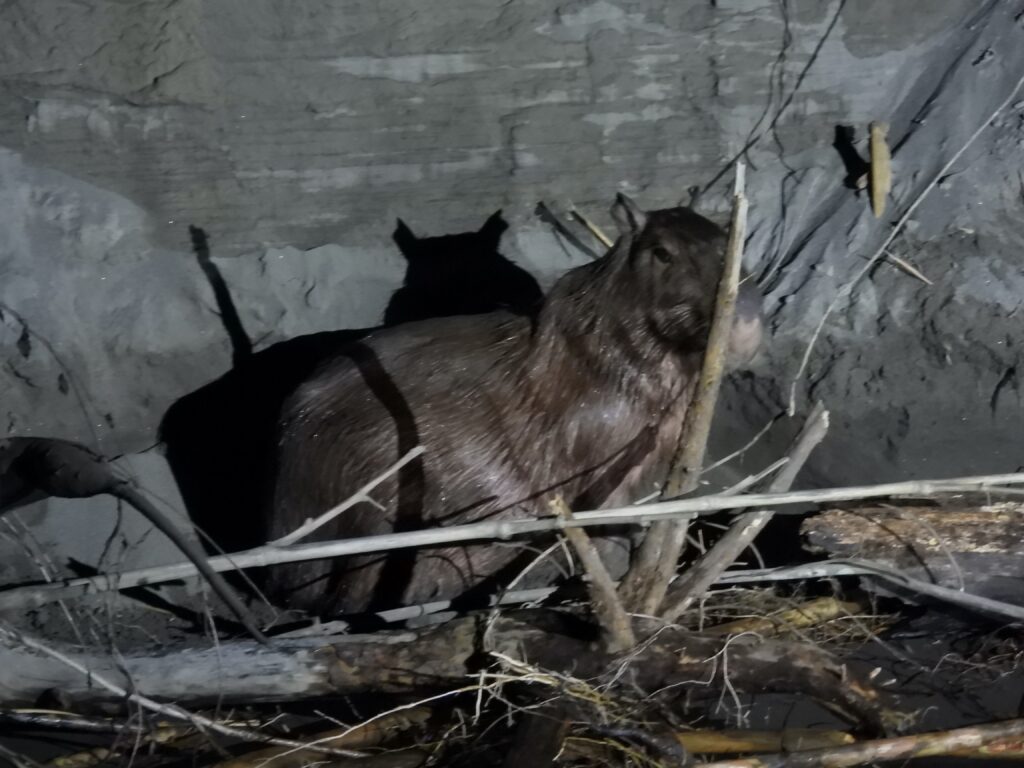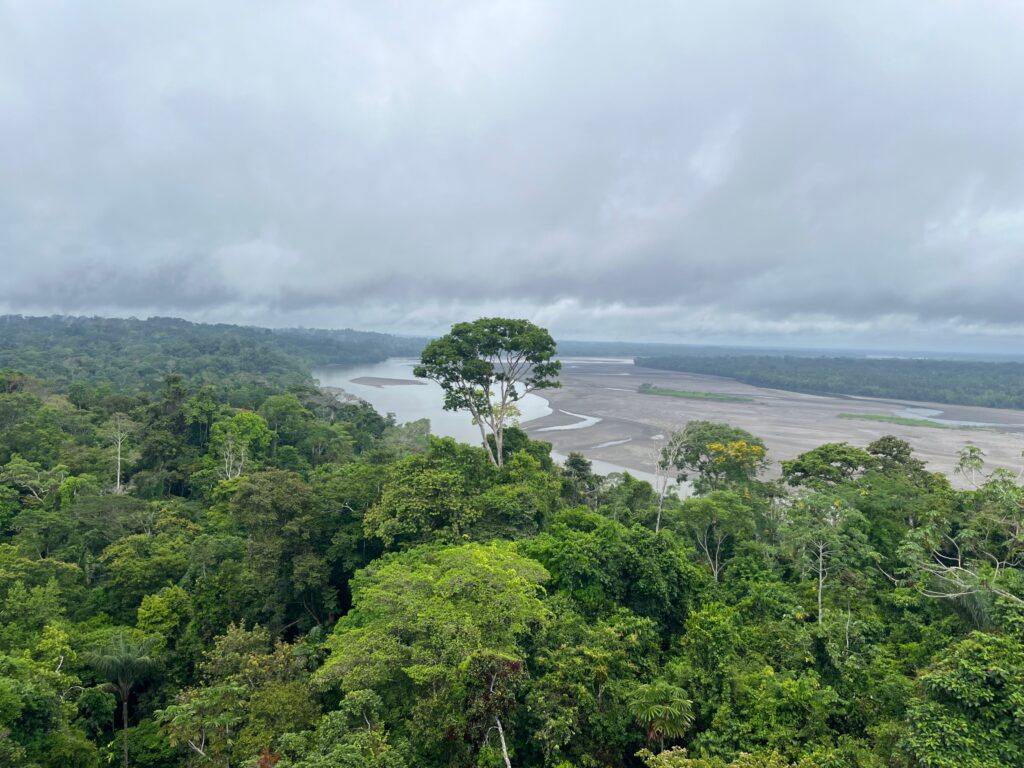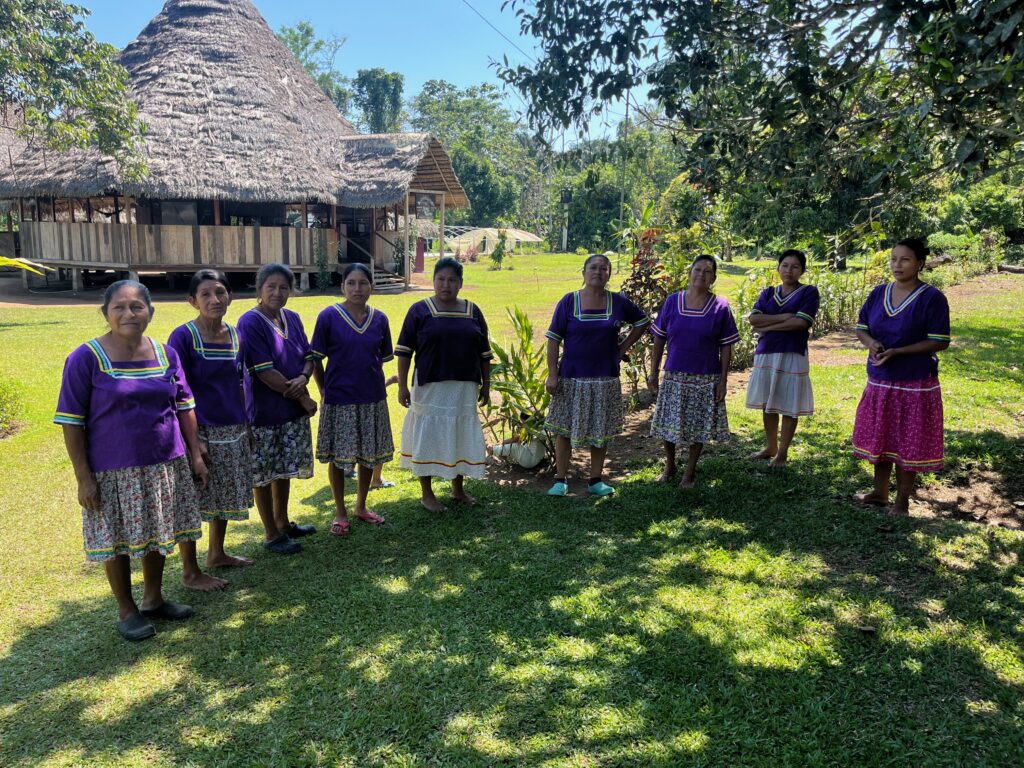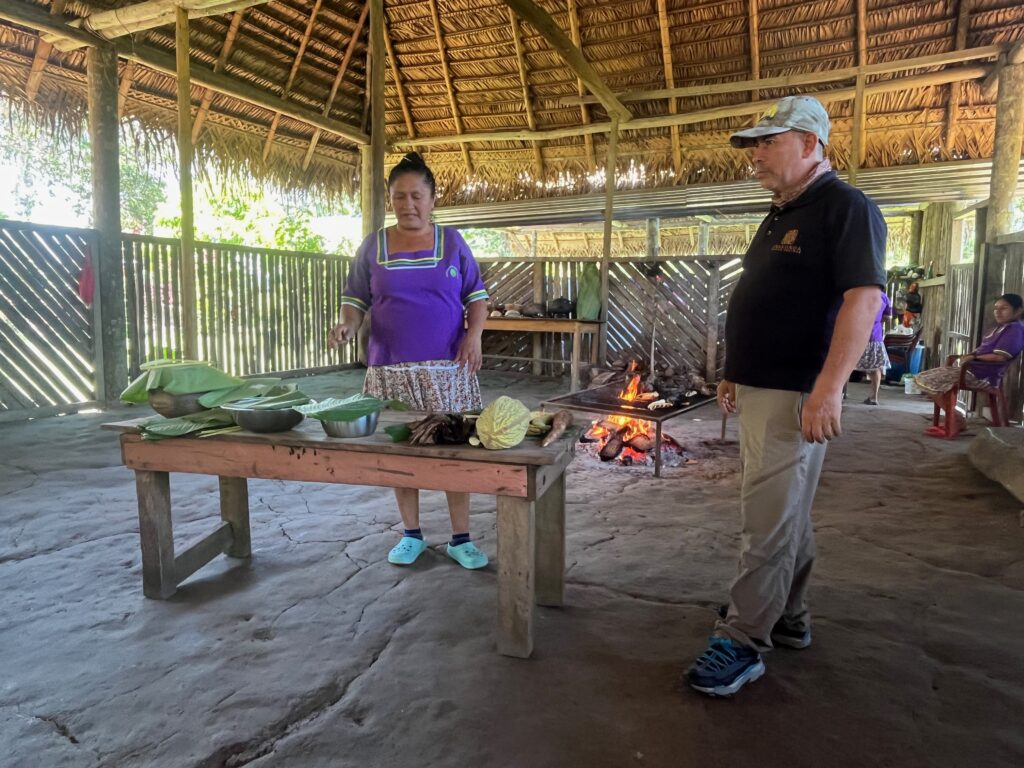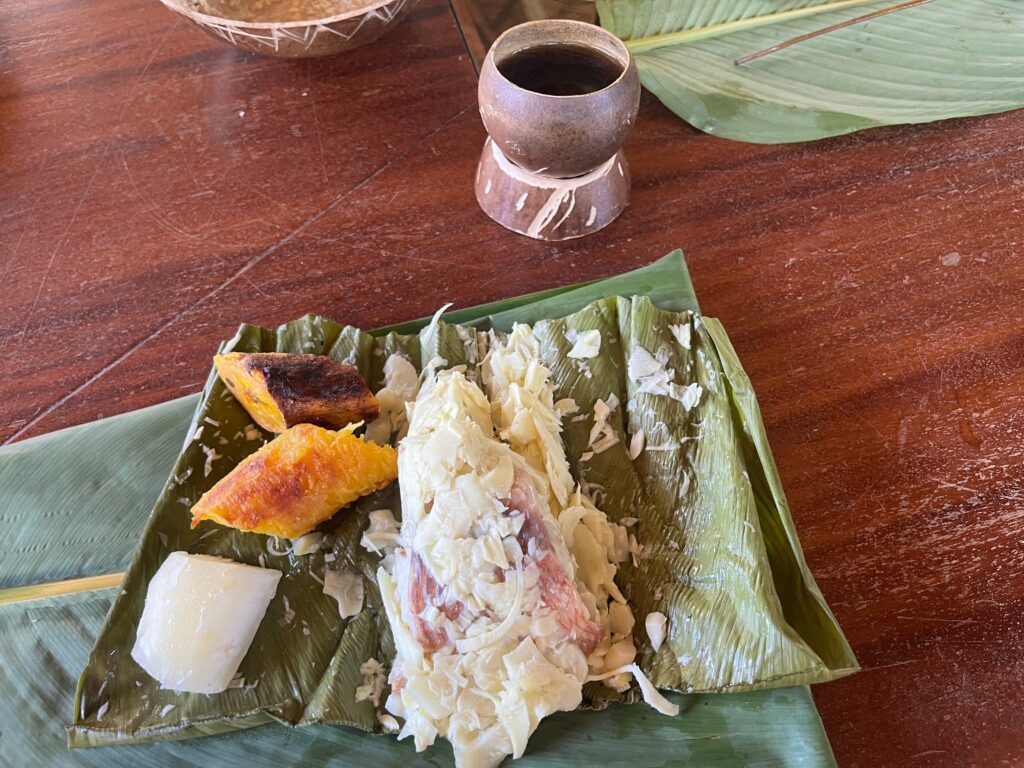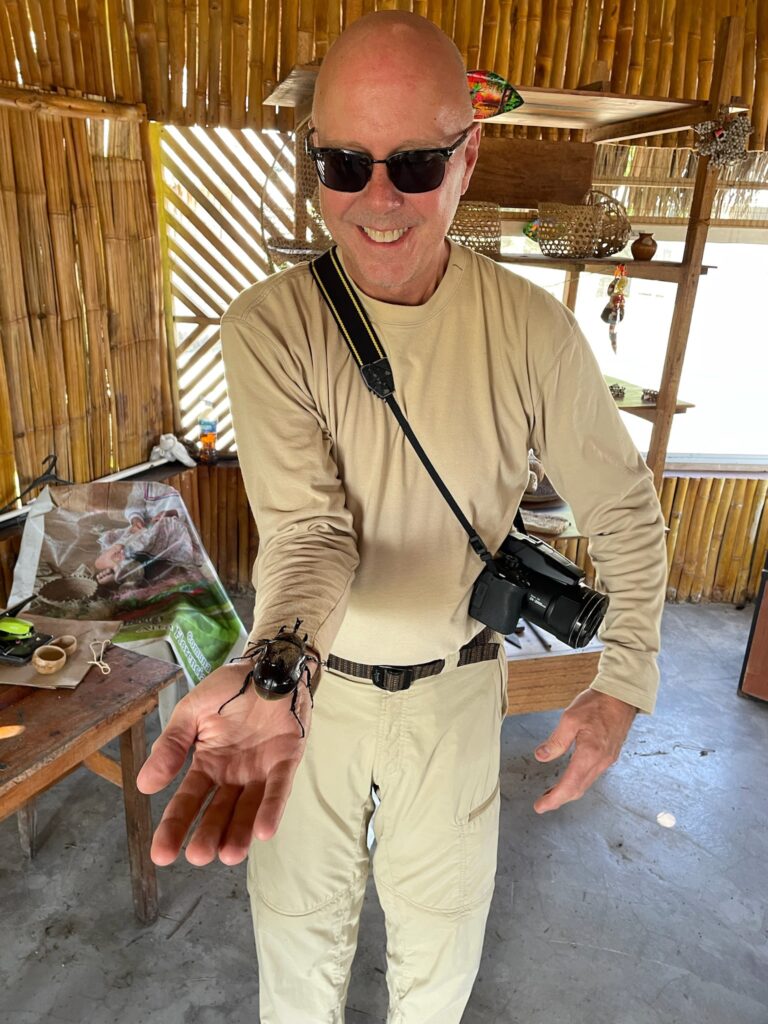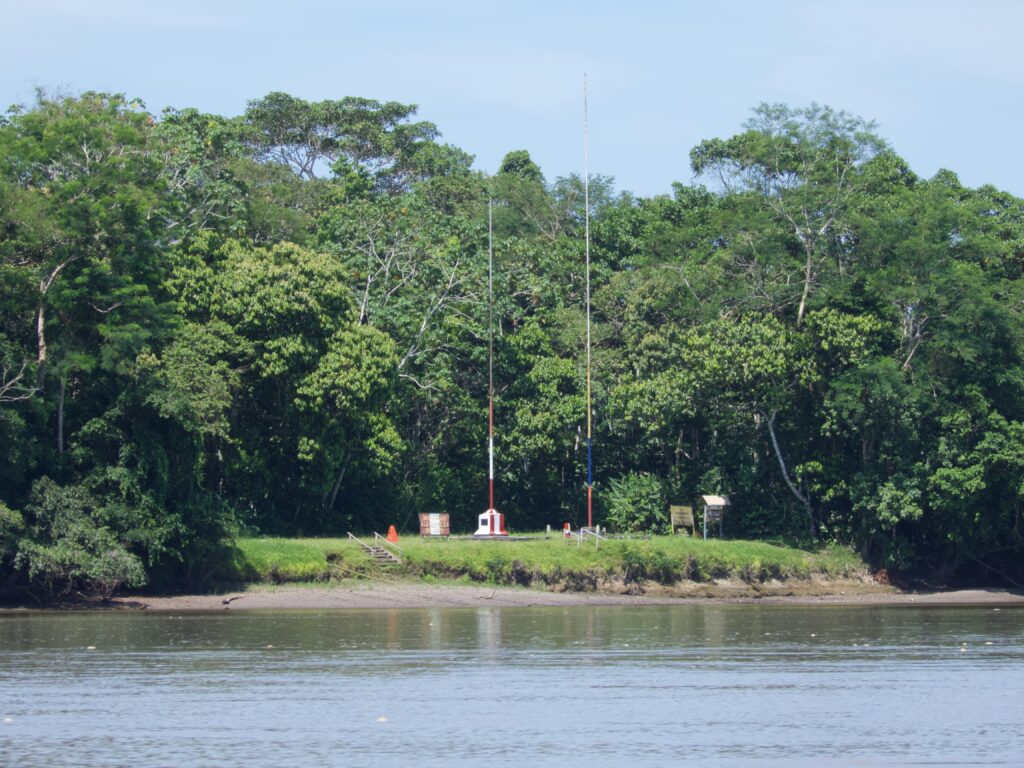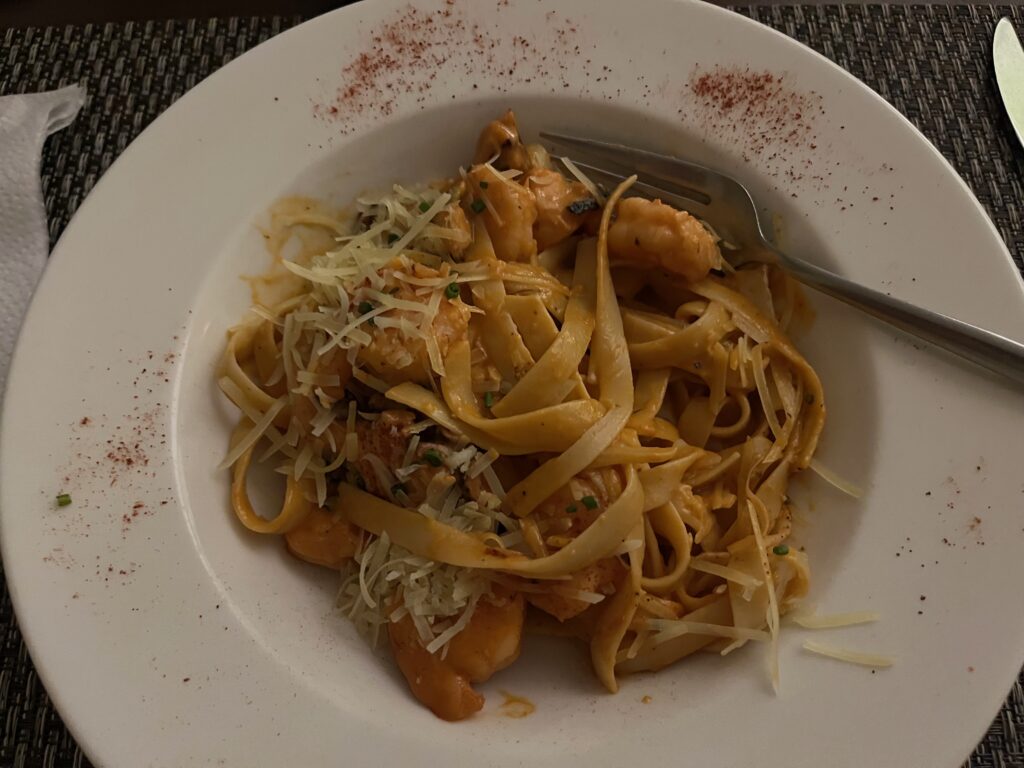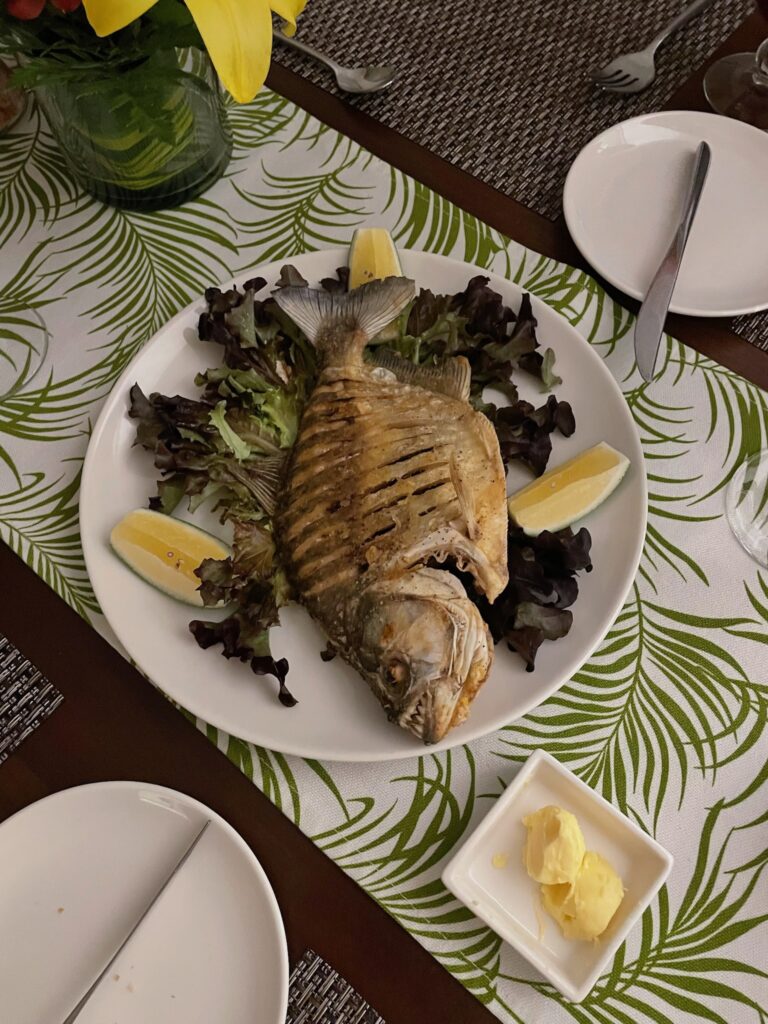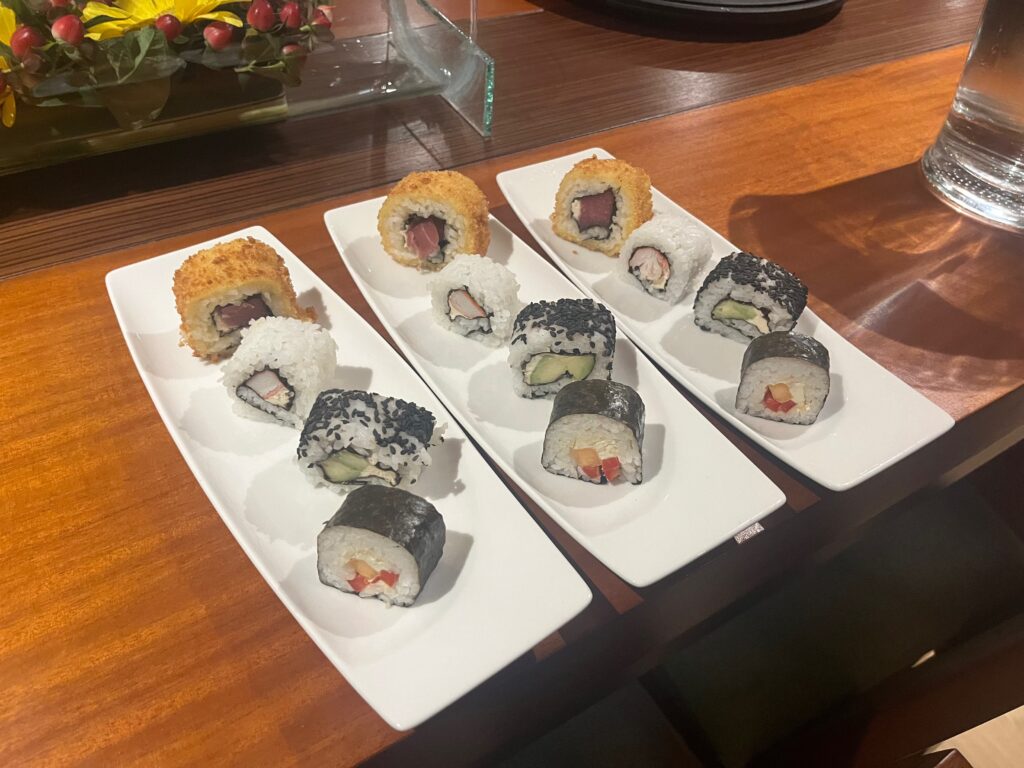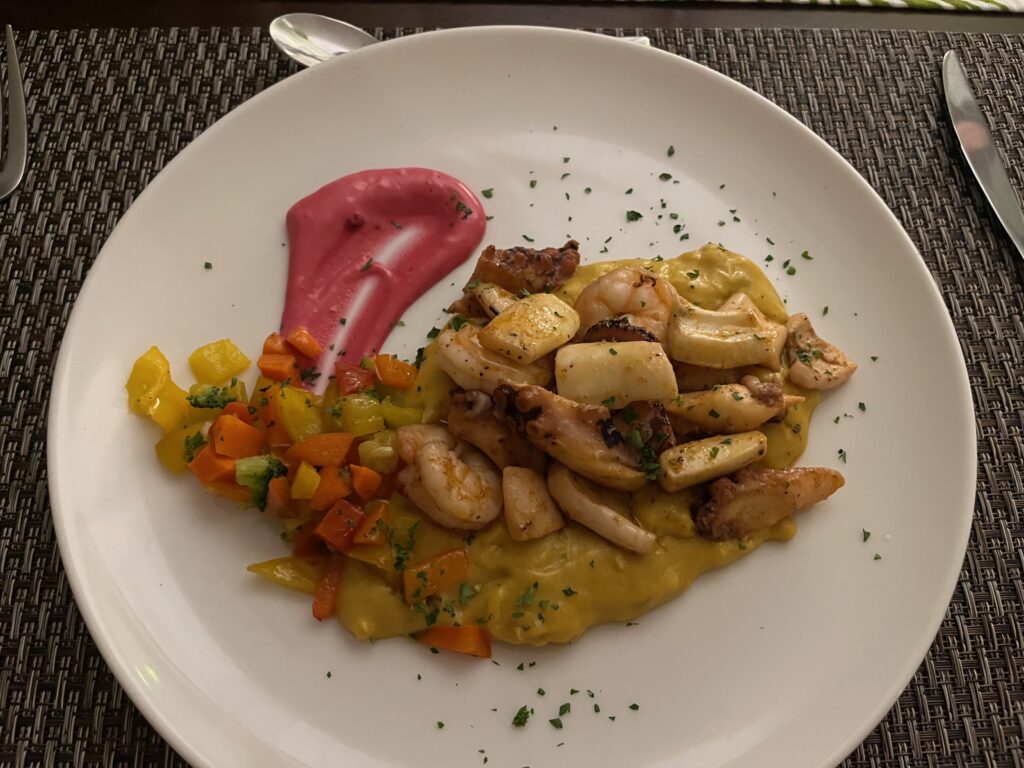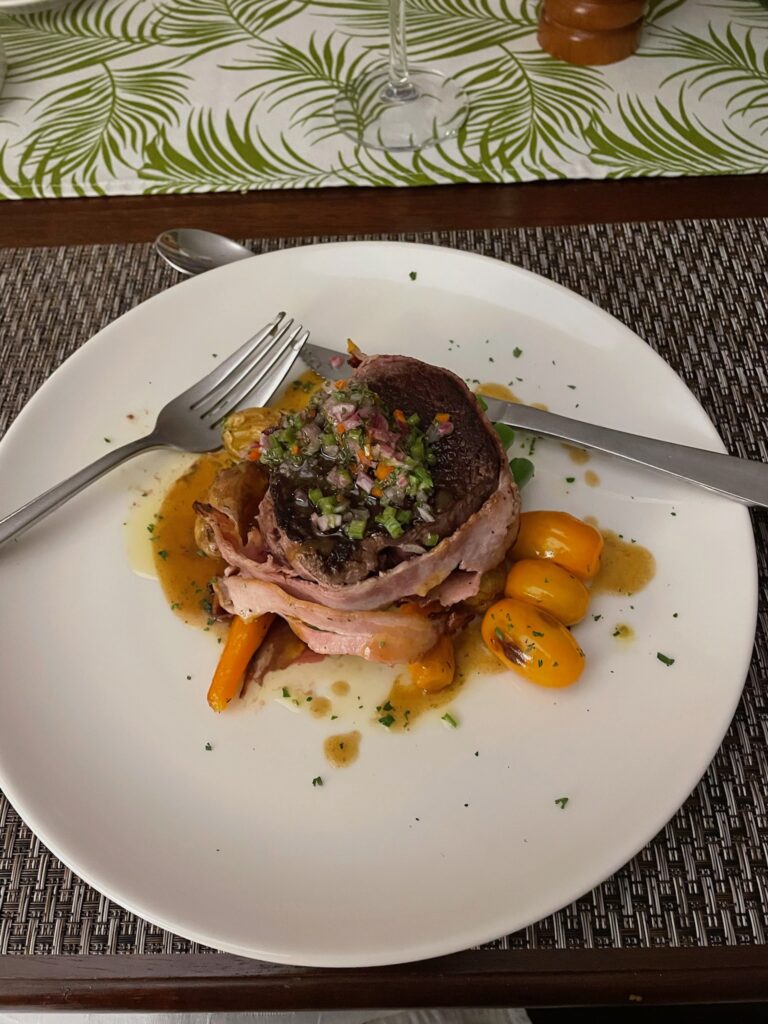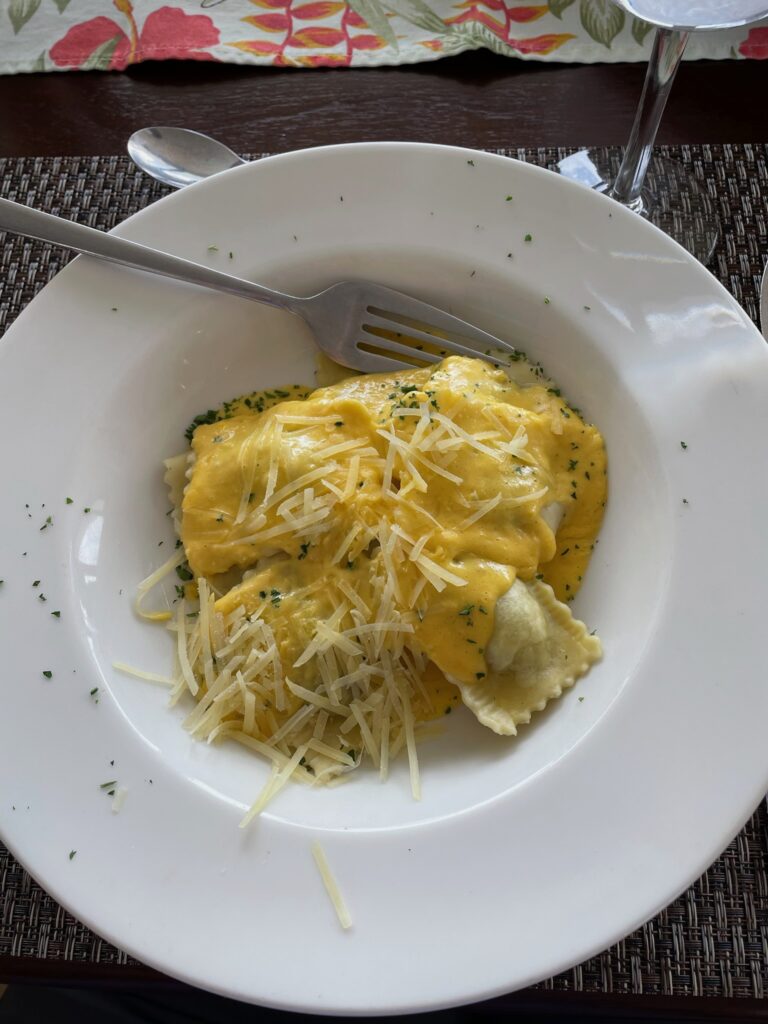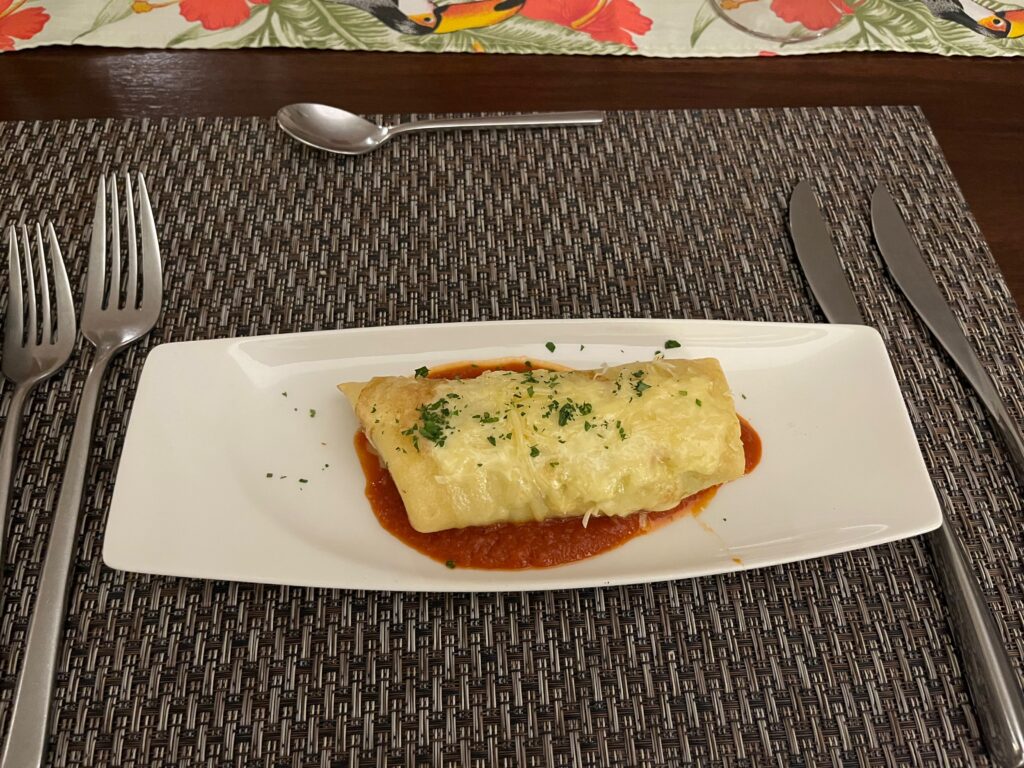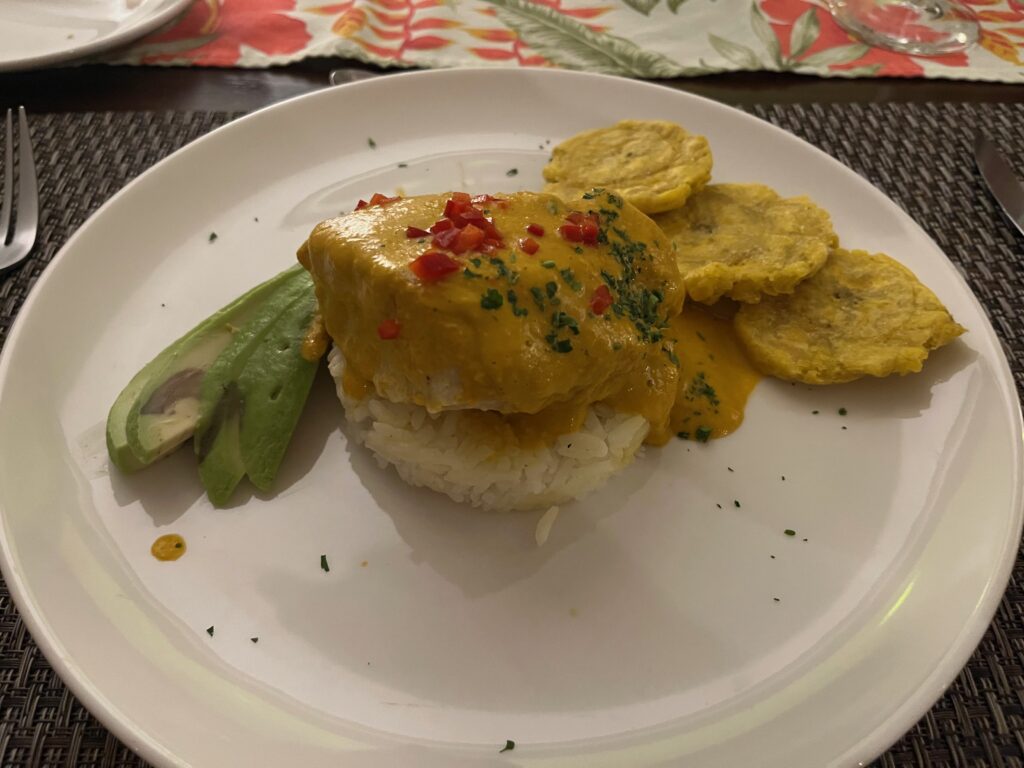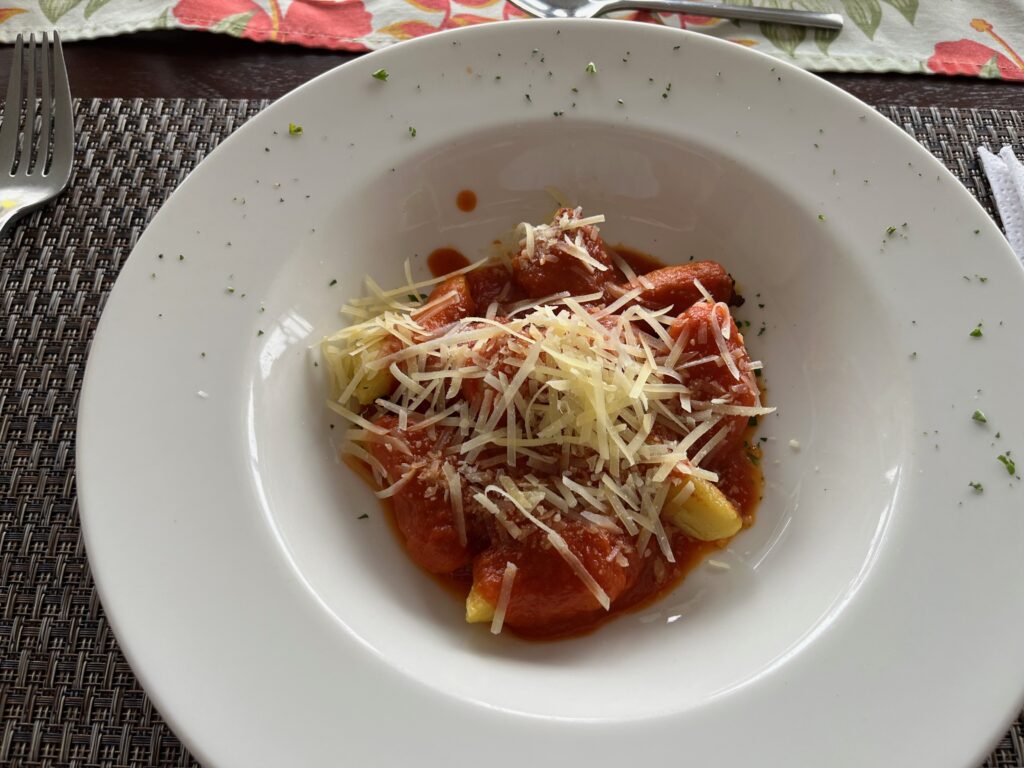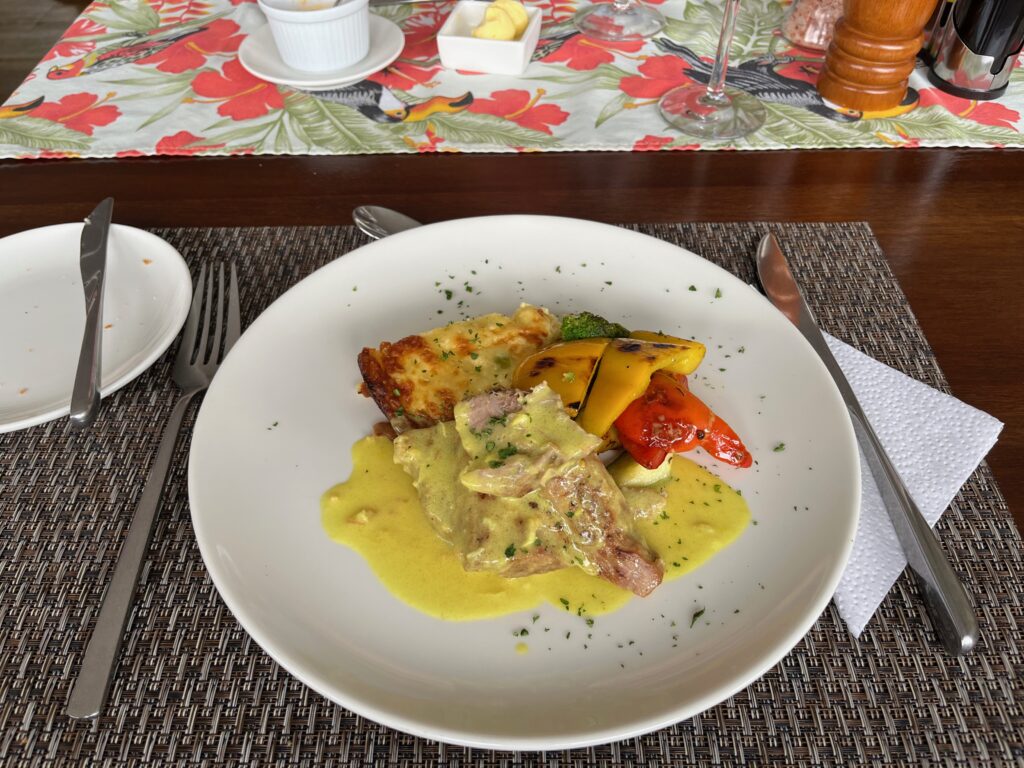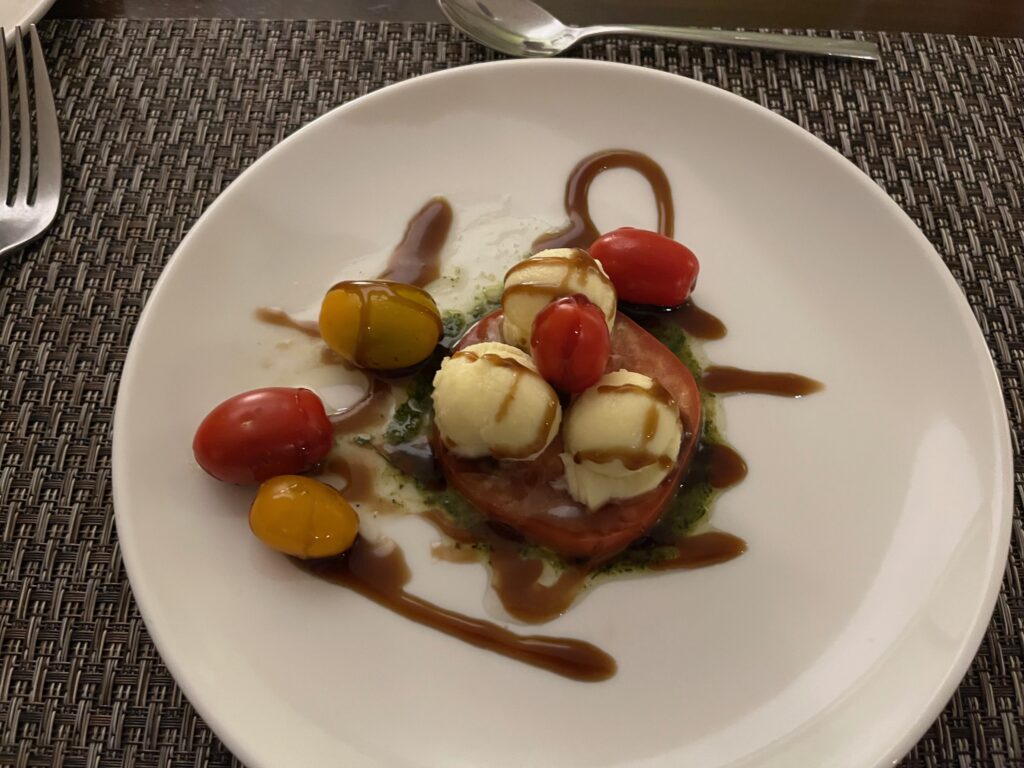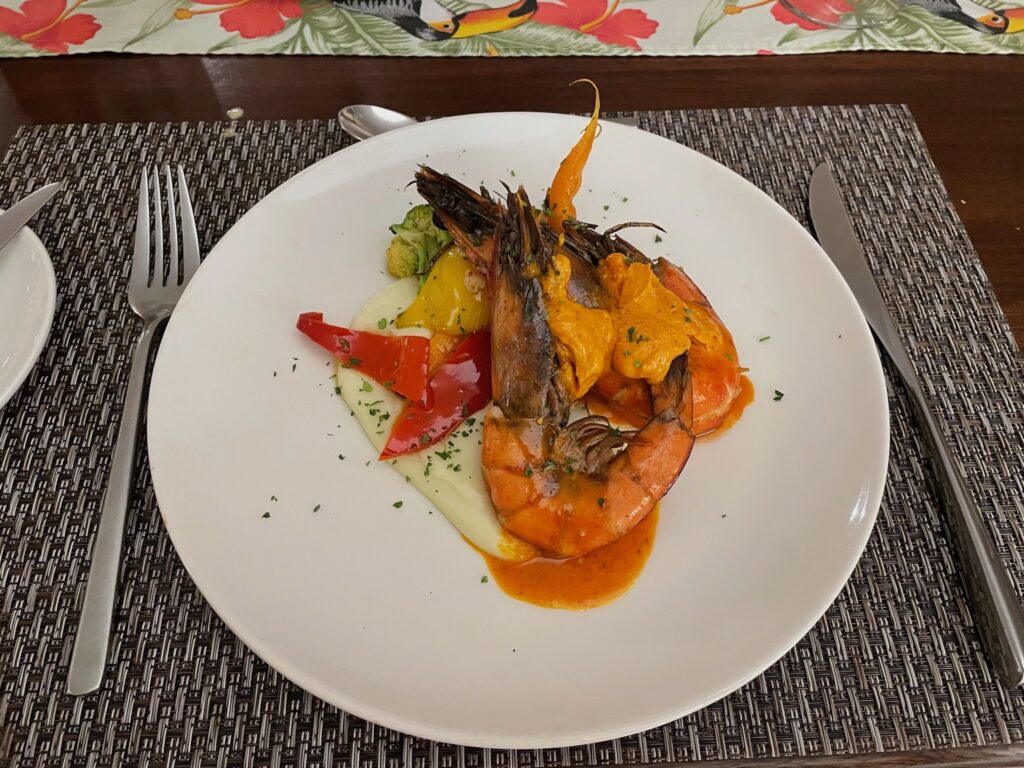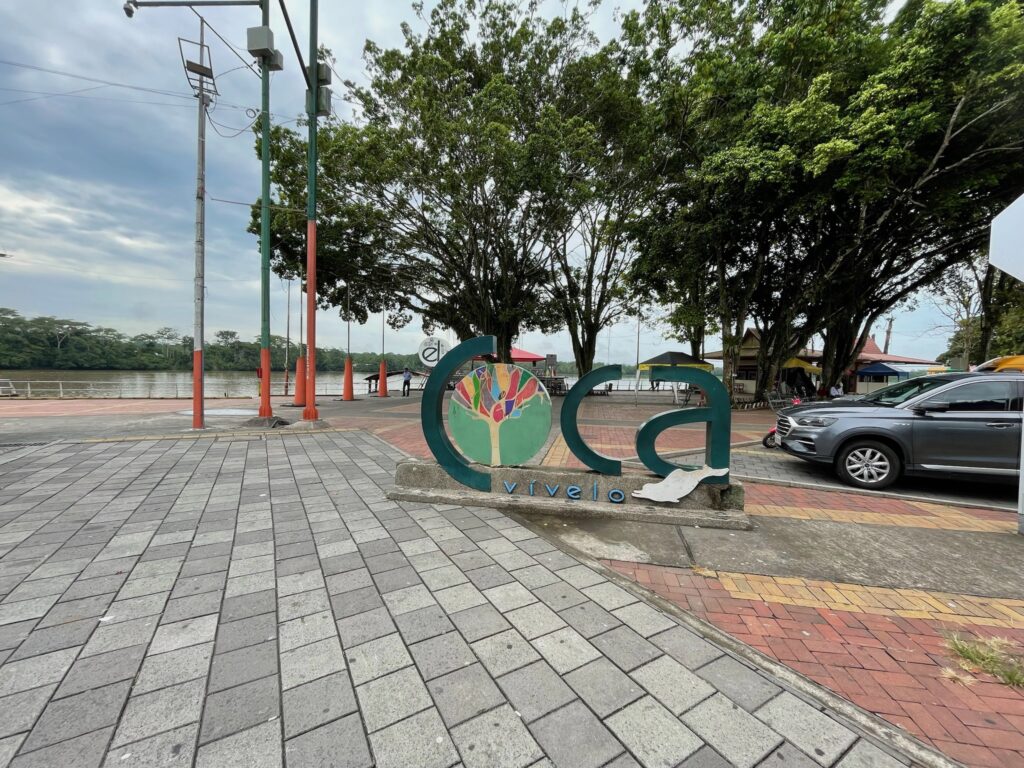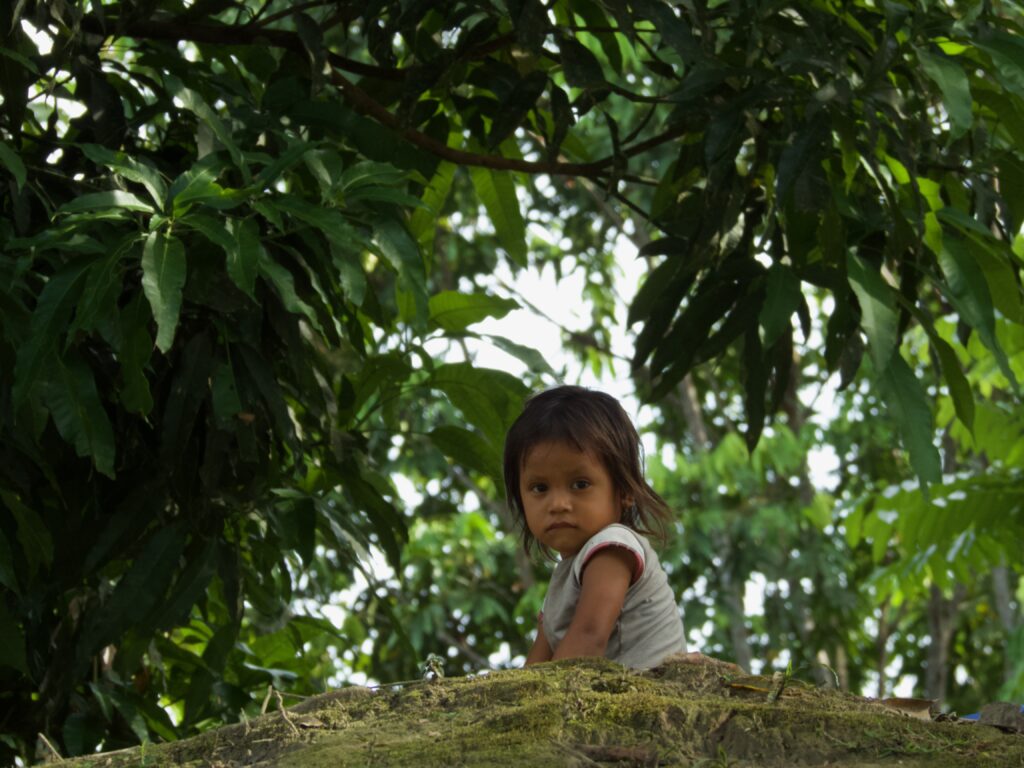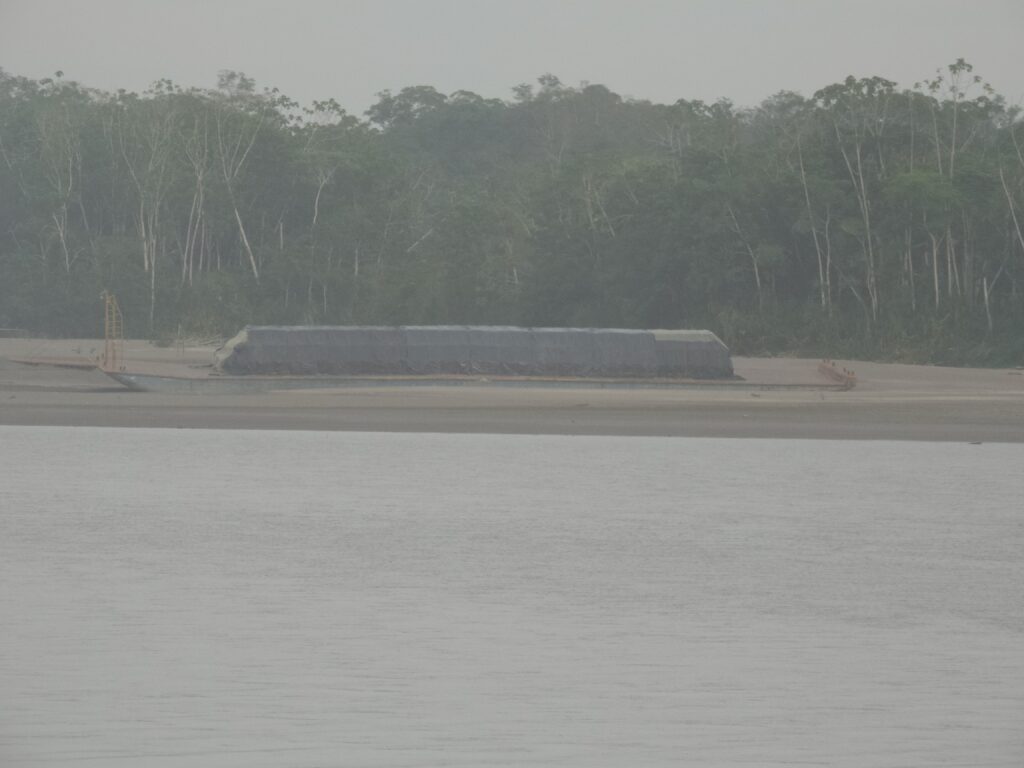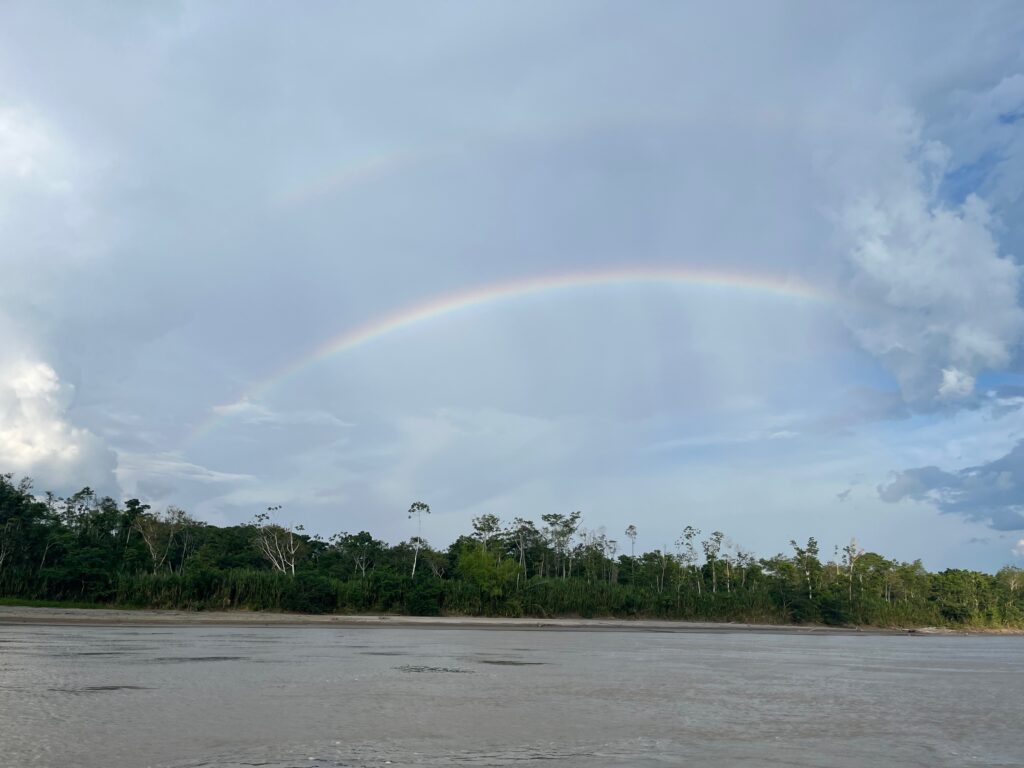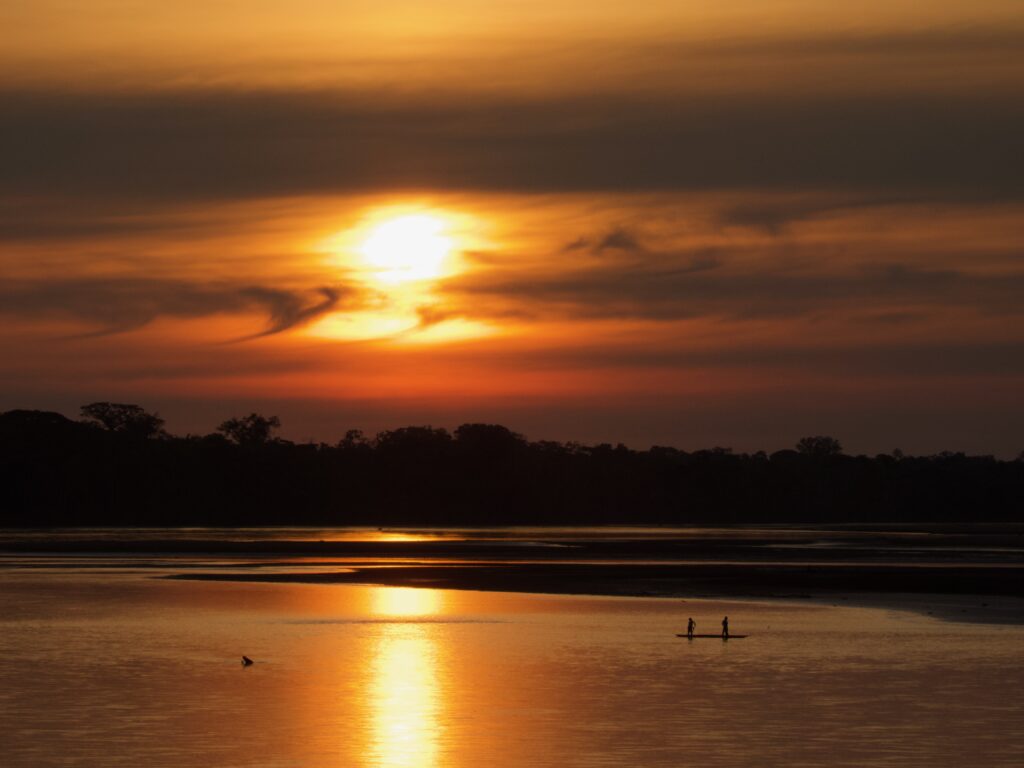Thank you for your interest in our trip to Ecuador. Let me begin with a little background information about Ecuador from Wikipedia.
“Ecuador [meaning “equator” in Spanish], officially the Republic of Ecuador, is a country in northwestern South America, bordered by Colombia on the north, Peru on the east and south, and the Pacific Ocean on the west. It also includes the Galápagos Islands in the Pacific….
The country’s capital is Quito and its largest city is Guayaquil. The territories of modern-day Ecuador were once home to a variety of indigenous peoples that were gradually incorporated into the Inca Empire during the 15th century. The territory was colonized by Spanish Empire during the 16th century, achieving independence in 1820 as part of Gran Colombia, from which it emerged as a sovereign state in 1830. The legacy of both empires is reflected in Ecuador’s ethnically diverse population, with most of its 17.8 million people being mestizos, followed by large minorities of Europeans, Native American, African, and Asian descendants. Spanish is the official language spoken by a majority of the population, although 13 native languages are also recognized, including Quechua [Kichwa]….
Ecuador is a representative democratic presidential republic and a developing country whose economy is highly dependent on exports of commodities, primarily petroleum and agricultural products…. According to the Center for Economic and Policy Research, between 2006 and 2016, poverty decreased from 36.7% to 22.5% and annual per capita GDP growth was 1.5 percent…. Ecuador adopted the United States dollar on April 13, 2000 as its national currency and on September 11, the country eliminated the Ecuadorian sucre, in order to stabilize the country’s economy. The US Dollar has been the only official currency of Ecuador since then.
Ecuador is one of seventeen megadiverse countries in the world according to Conservation International, and it has the most biodiversity per square kilometer of any nation. Ecuador has 1,600 bird species (15% of the world’s known bird species) in the continental area and 38 more endemic in the Galápagos. In addition to more than 16,000 species of plants, the country has 106 endemic reptiles, 138 endemic amphibians, and 6,000 species of butterfly.
According to the Ecuadorian National Institute of Statistics and Census, 91.95% of the country’s population have a religion, 7.94% are atheists and 0.11% are agnostics. Among the people who have a religion, 80.44% are Catholic, 11.30% are Evangelical Protestants, 1.29% are Jehovah’s Witnesses and 6.97% other (mainly Jewish, Buddhists and Latter-day Saints).”
Our two-week trip to Ecuador was broken into two distinct segments. The first week was spent touring the Avenue of the Volcanos, a region in the Andes mountains stretching from Quito in the north to Cuenca in the south. The Avenue of the Volcanoes was named by explorer Alexander Van Humboldt in the 19th century and is descriptive of the Andean scenery which enchants visitors making the journey. Towering volcanic peaks rise above the patchwork of green and gold farmland below. The valley was created by the collision of the Nazca and South America tectonic plates 100 million years ago. The numerous national parks, towns, and cities visited along the way are home to an equally mosaic mixture of cultures. The second week was spent on the Napo River, a tributary of the Amazon River. Ecuador contains only three percent of the territory of the Amazon Basin, but is generally recognized as the most diverse. For purposes of our trip, we chose to experience the Amazon Basin on a boat, as opposed to a land-based lodge, as we felt it gave us the opportunity to explore more of the area.
With all that as background, what follows is a description of our trip. By the way, you can click on any of the photos to see the full-size image.
Sunday, September 15
We arrived in San Francisco de Quito (Quito) at approximately 9:15 pm. Quito, the capital city of Ecuador. It is located in north-central Ecuador in the Guayllabamba river basis, on the eastern slopes of Pichincha, an active stratovolcano in the Andes Mountains. With a population of nearly 1.4 million, Quito is the second most populated city in Ecuador after Guayaquil.
The elevation of the city’s central square (Plaza de La Independencia or Plaza Grande) is about 9,350 ft, making Quito the second-highest administrative capital city in the world (after La Paz in Bolivia). The central square of Quito is located about 15 miles south of the equator; the city itself extends to within about 1 km of zero latitude. A monument and museum marking the general location of the equator is known locally as la mitad del mundo (the middle of the world). After a fairly quick passport and customs process, we were met by our driver Juan who drove us about 30 minutes to our lodging at Hotel Cultura Manor, where we retired for the evening.
Monday, September 16
We ate breakfast at about 7:30. Breakfast began with yogurt, fruit, granola and coffee, which were followed by eggs, a wonderful homemade croissant, and passion fruit juice. The jam was raspberry, but was more tart than ours at home.
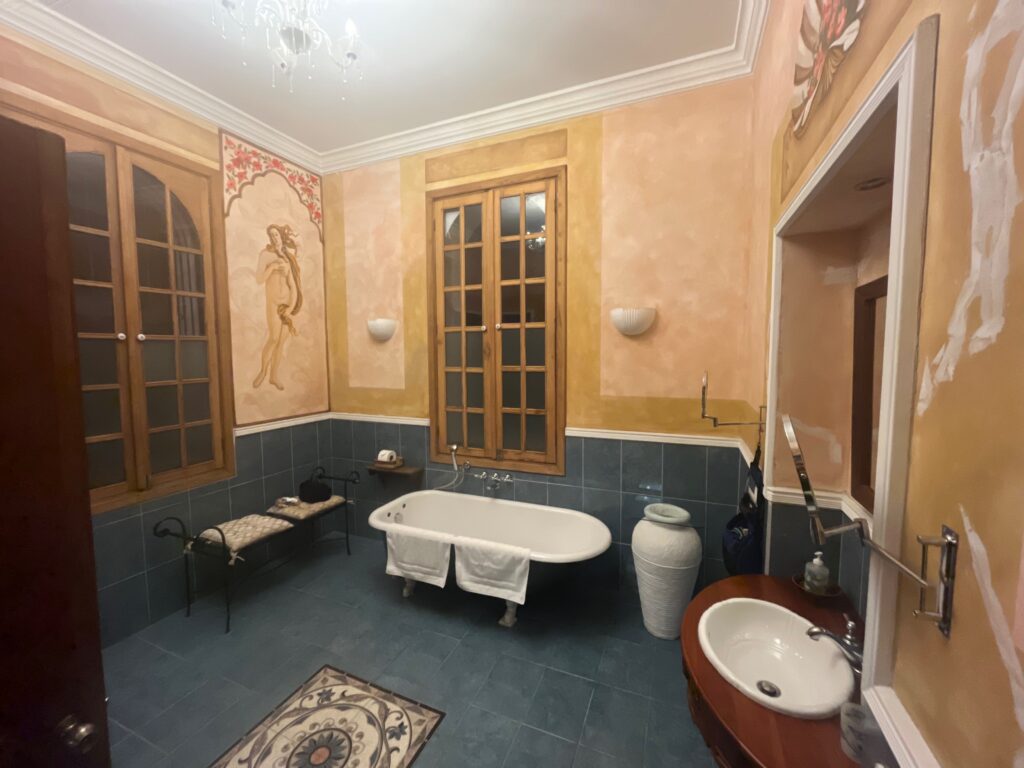
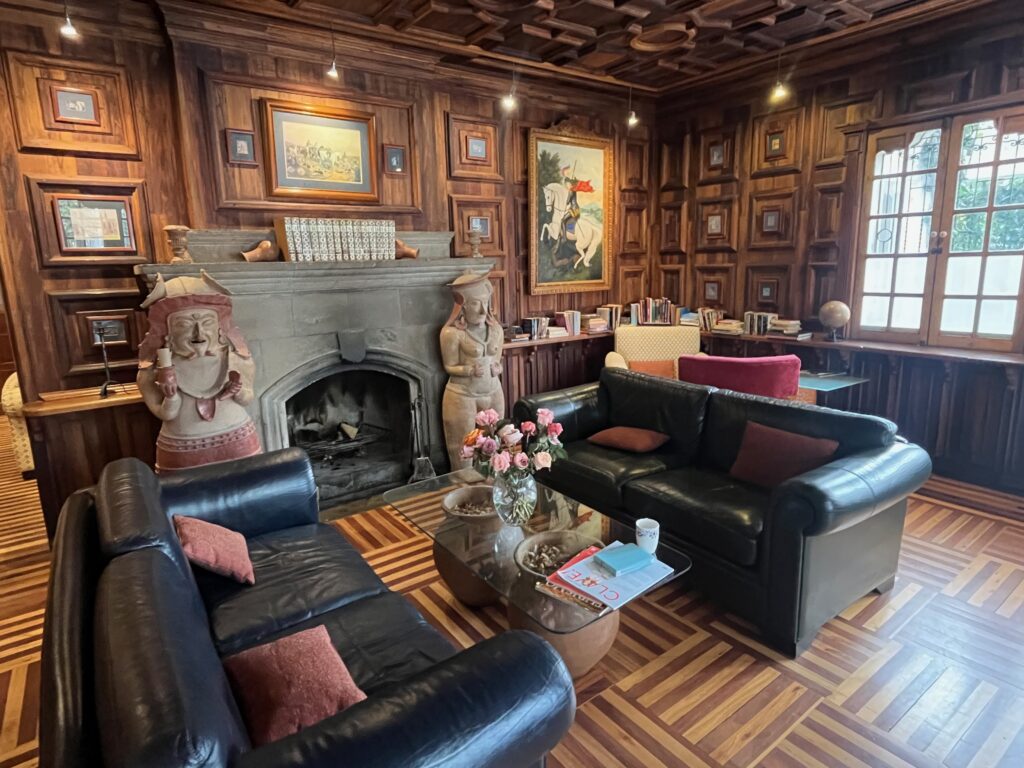
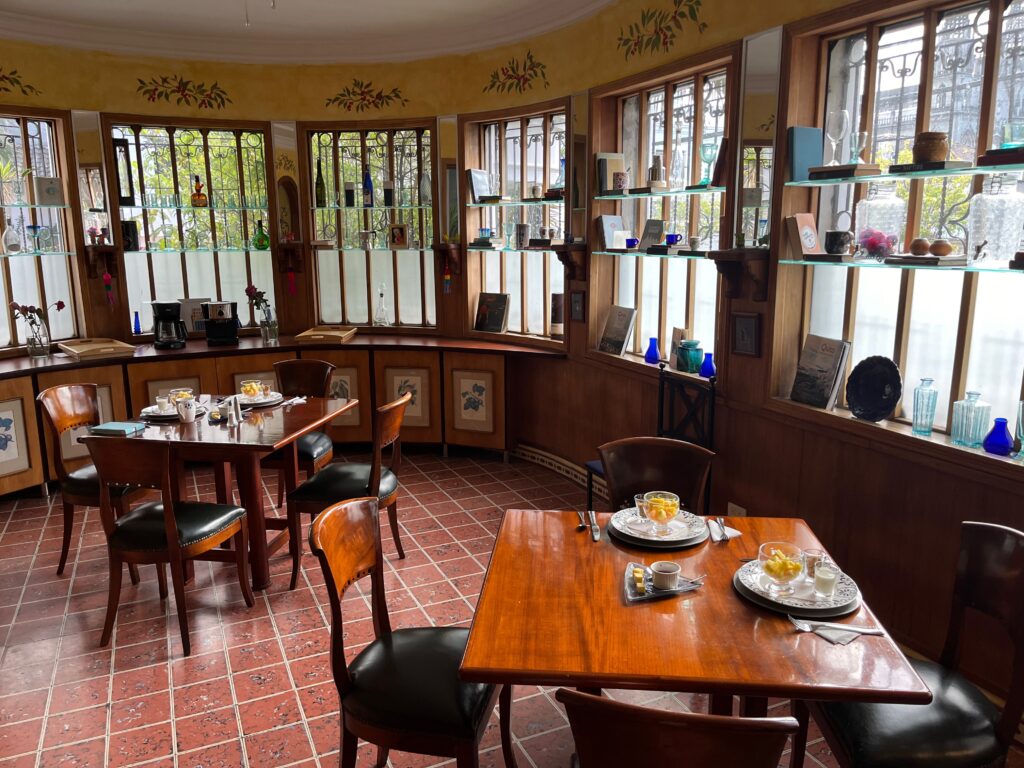
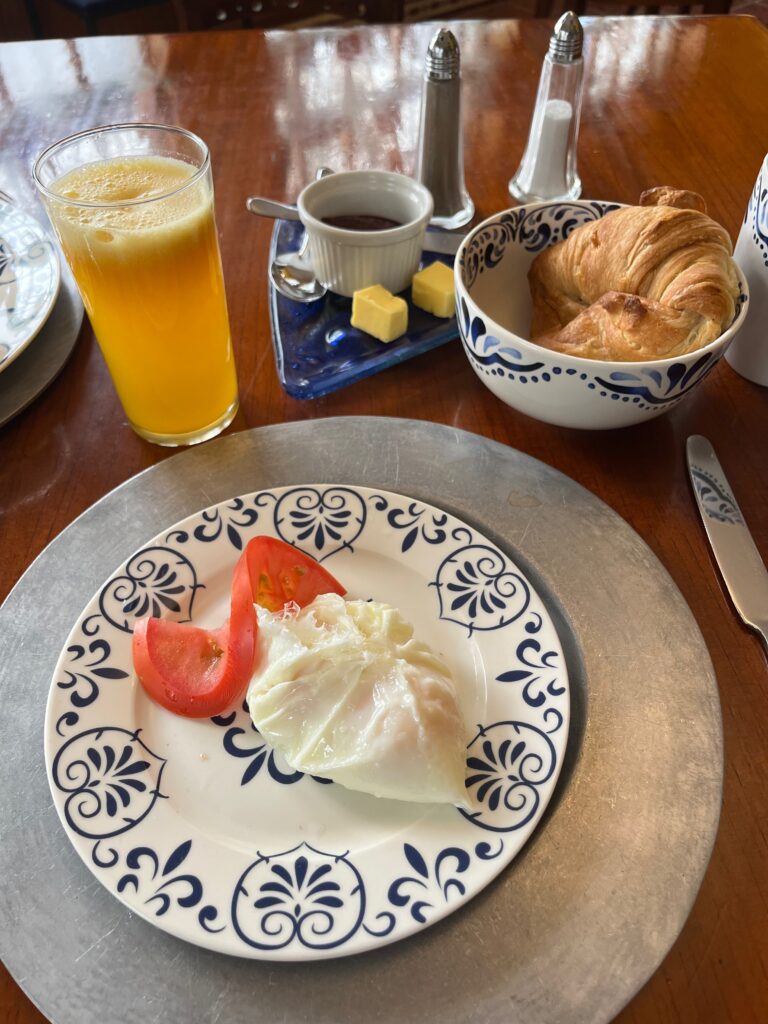
Hotel Cultura Manor is located in a beautiful building with lovely architecture. The interior is beautiful and reflected great attention to detail. The furniture and rooms were clean and in good condition, particularly given how many of the furniture pieces are antiques. The staff was very friendly, including the manager, Fernando. The room we stayed in during this portion of our trip was called “Renaissance Suite 1, Aphrodite.” The walls were covered with murals depicting the birth of Venus from renaissance master Botticelli. Further, “[t]he winds that brought Venus alive have occupied the ceiling while the Nymph that received the Goddess invite you to come into the bathroom.”
We began our day at 9:15 with a guided tour of La Basílica del Voto Nacional. The basilica is a beautiful building which allows views from above the city due to observation decks atop the building. On the exterior, which has been inspired by Notre-Dame in Paris, there are a multitude of gargoyles that look like animals native to Ecuador such as iguanas, pumas, iguanas, and condors, created by the indigenous artisans. From the observation decks you can also see the Virgen de Quito statue atop the Panecillo. We next visited colonial sites of old Quito, including the Main Plaza, the Government Palace, and the La Compañía de Jesús, one of the finest examples of Latin American baroque architecture. We then walked to La Vid Restaurante for a wonderful meal of creamy potato soup with cheese and avocado, slow cooked lamb, shrimp in coconut sauce, pineapple ovenless tart, and a “Naranjilla” mousse.
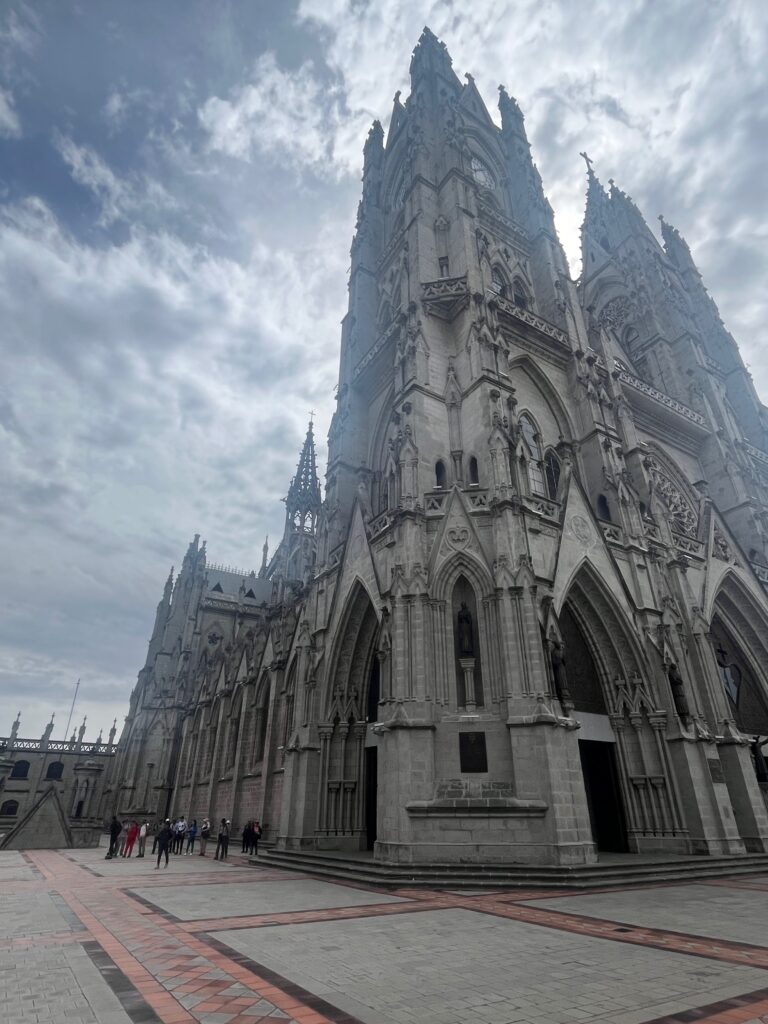
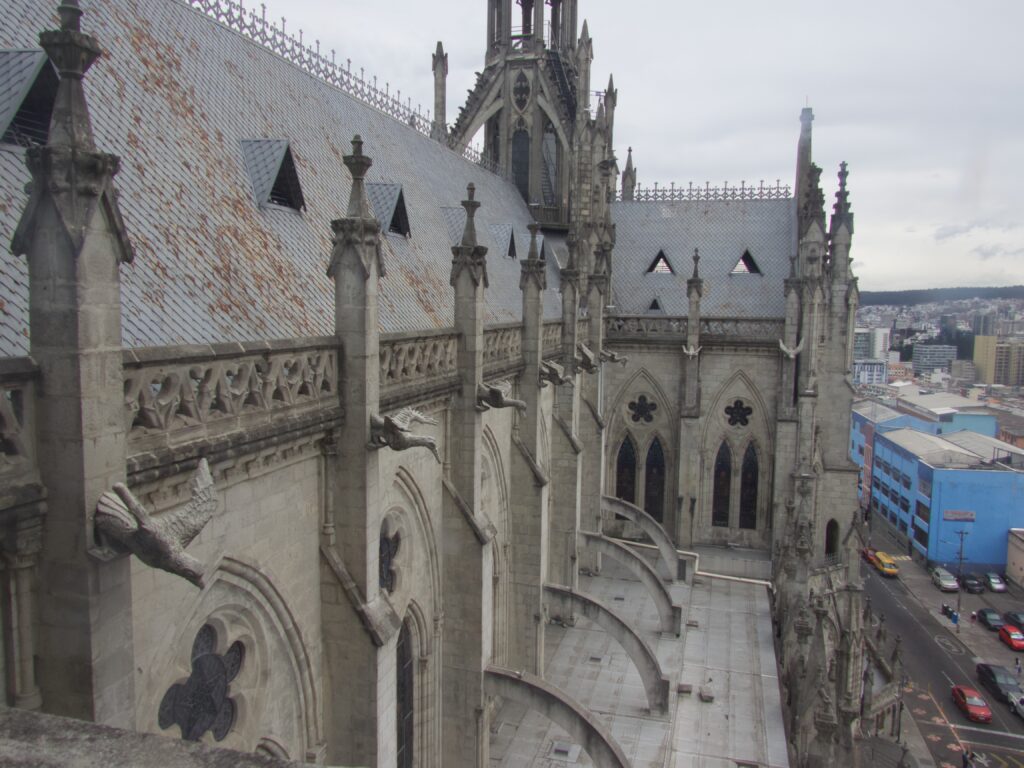
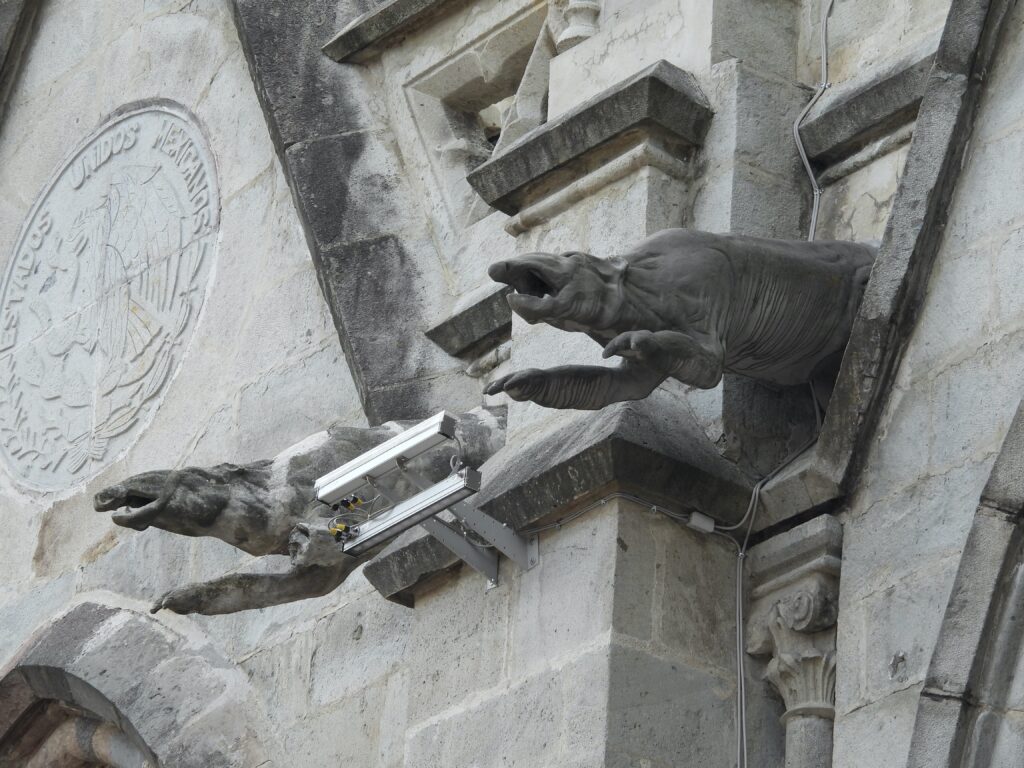
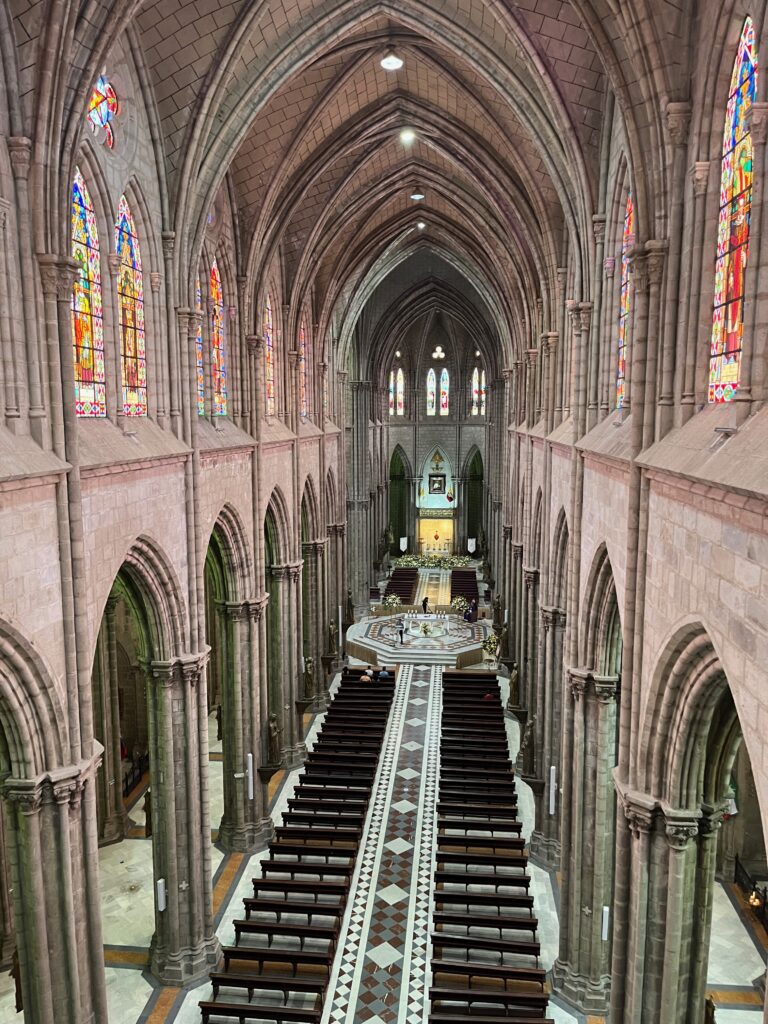
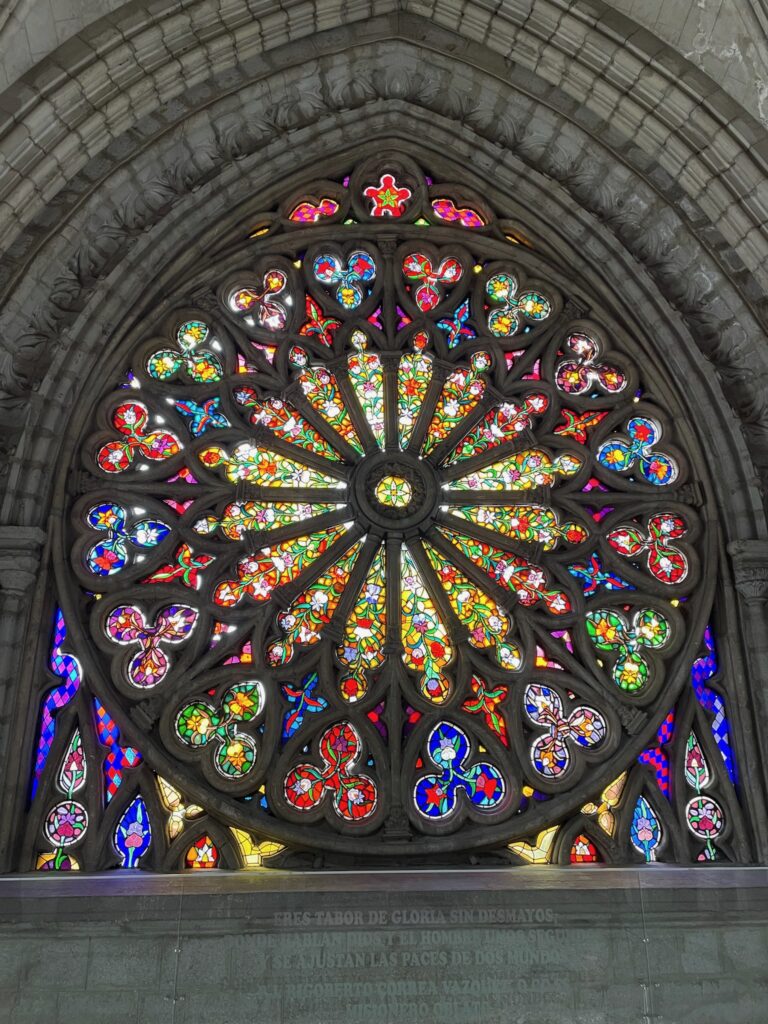
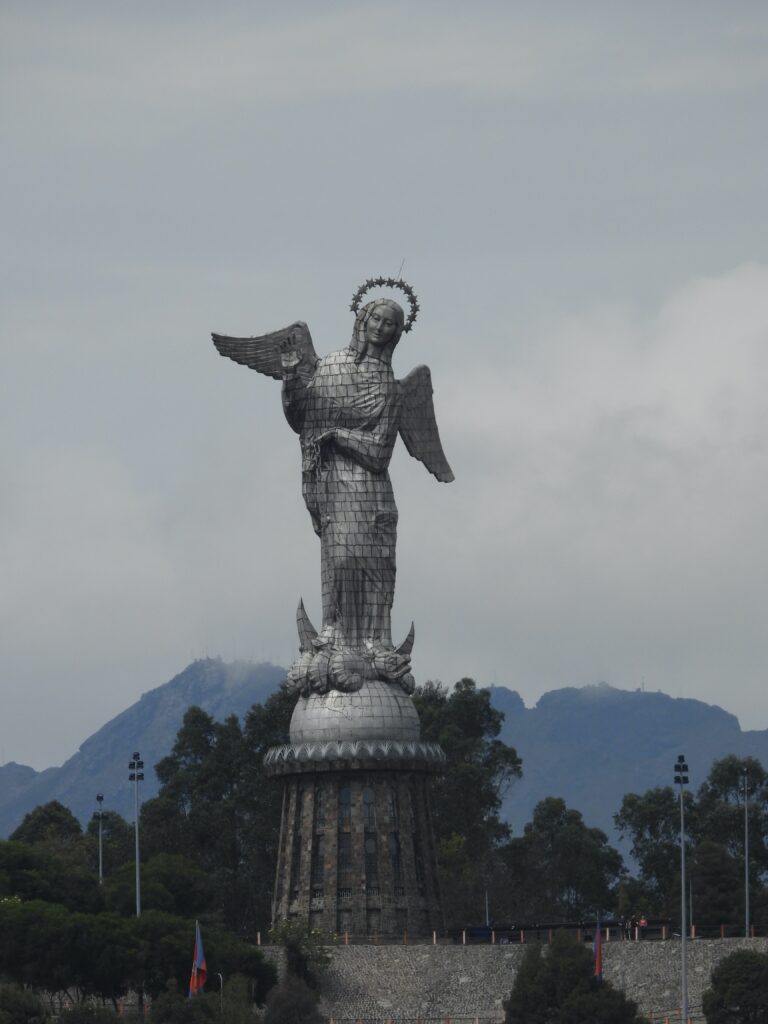
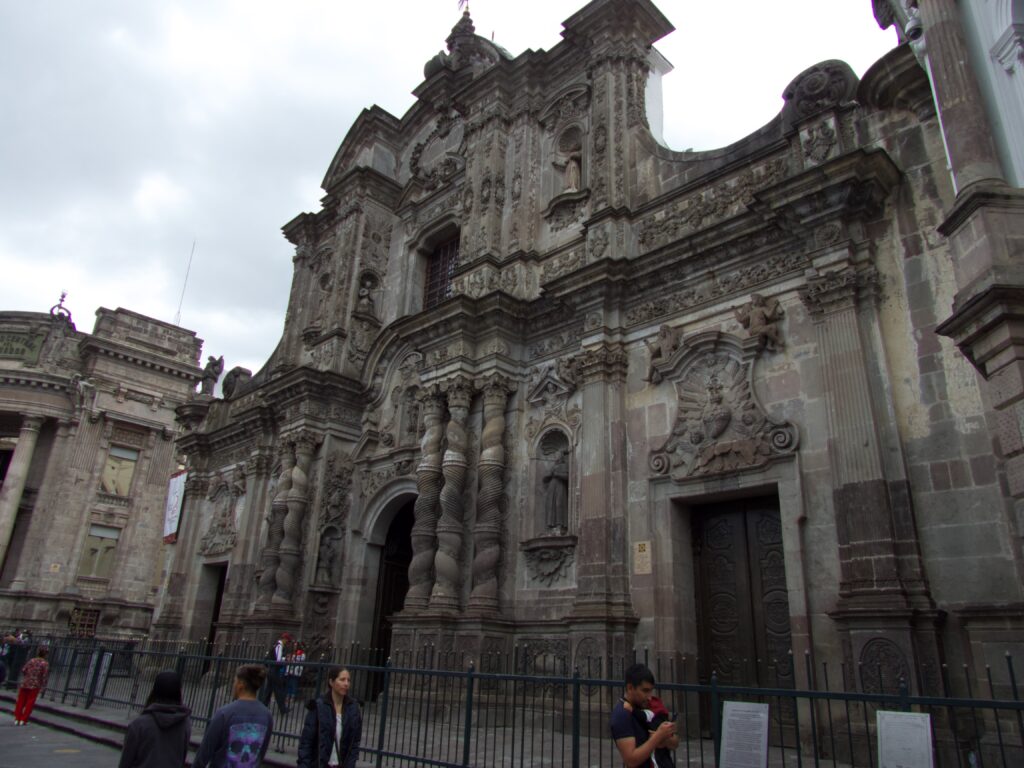
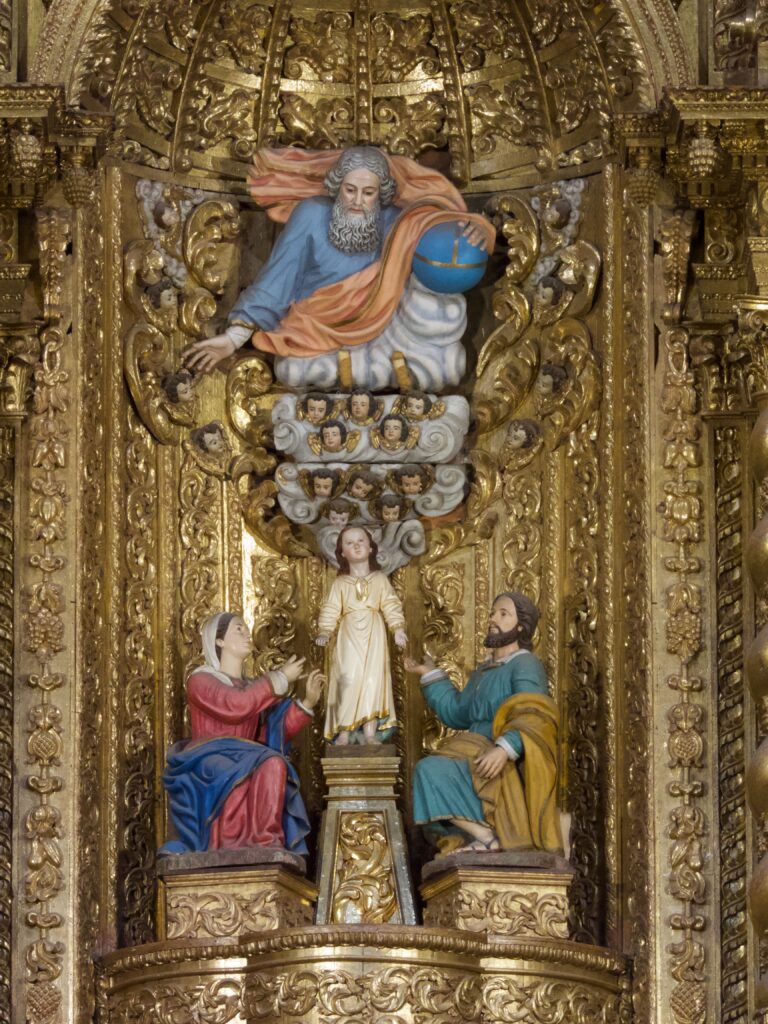
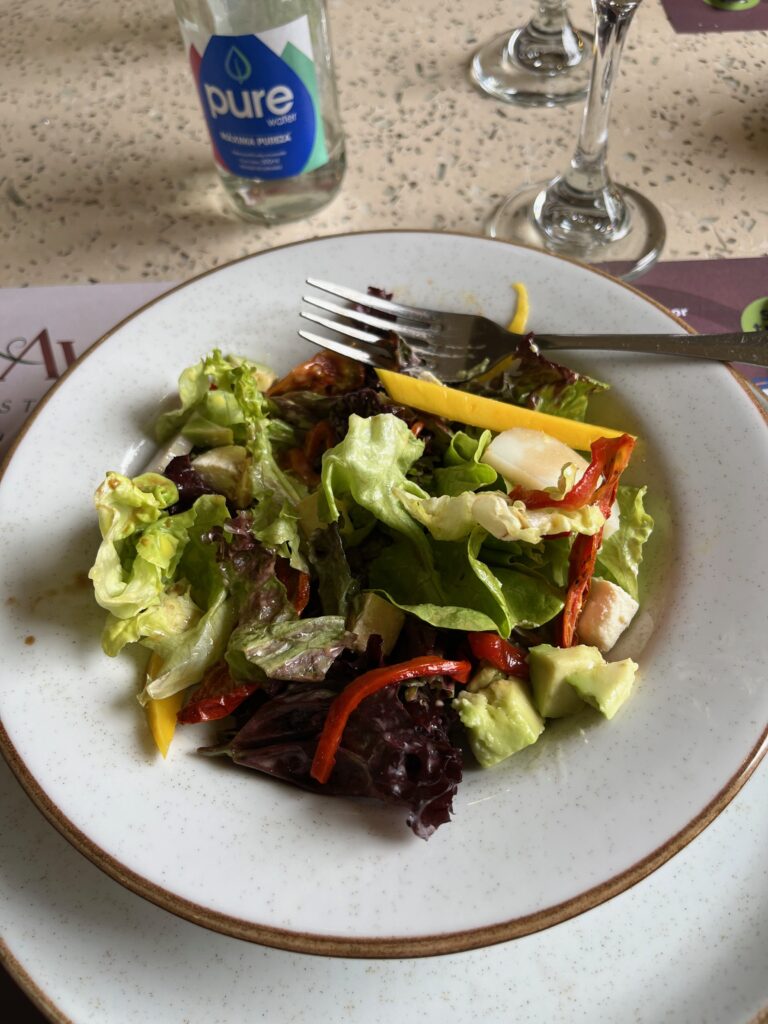
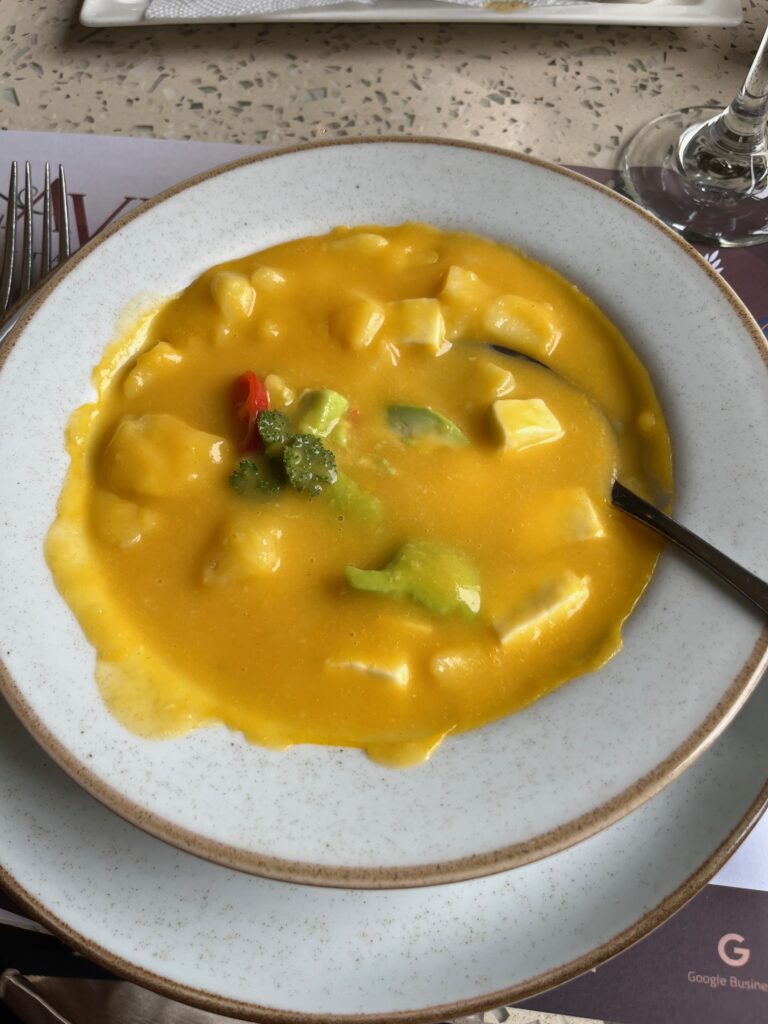
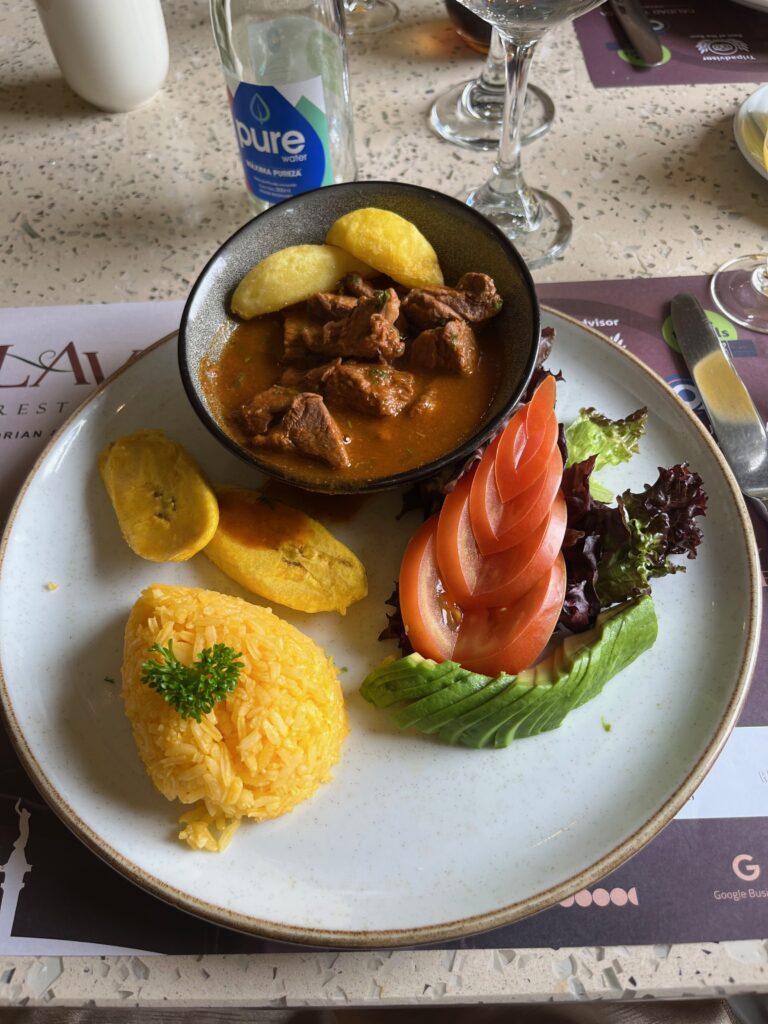
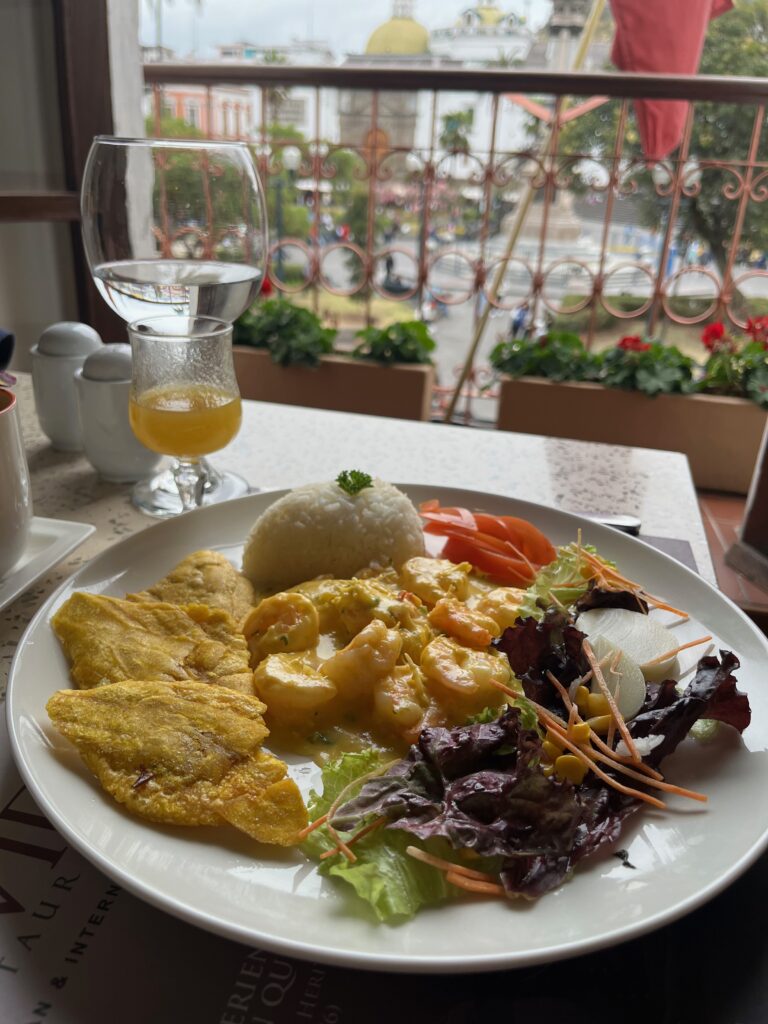

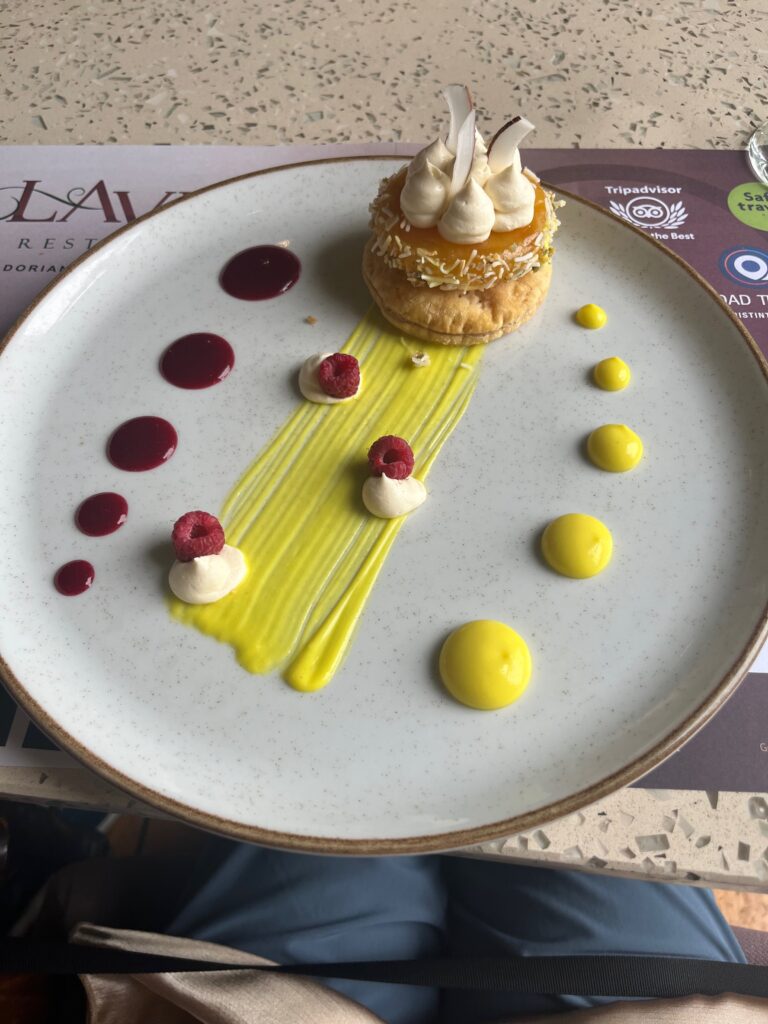
After lunch, we returned to the car and drove to the Equatorial Line located just 40 minutes north of Quito. The equator line “experience” included demonstrations of how water drains differently (e.g., clockwise or counterclockwise) depending which side of the equator you are located! There are two competing museums related to the position of the equator: the one described above and the “Middle of the World” museum.
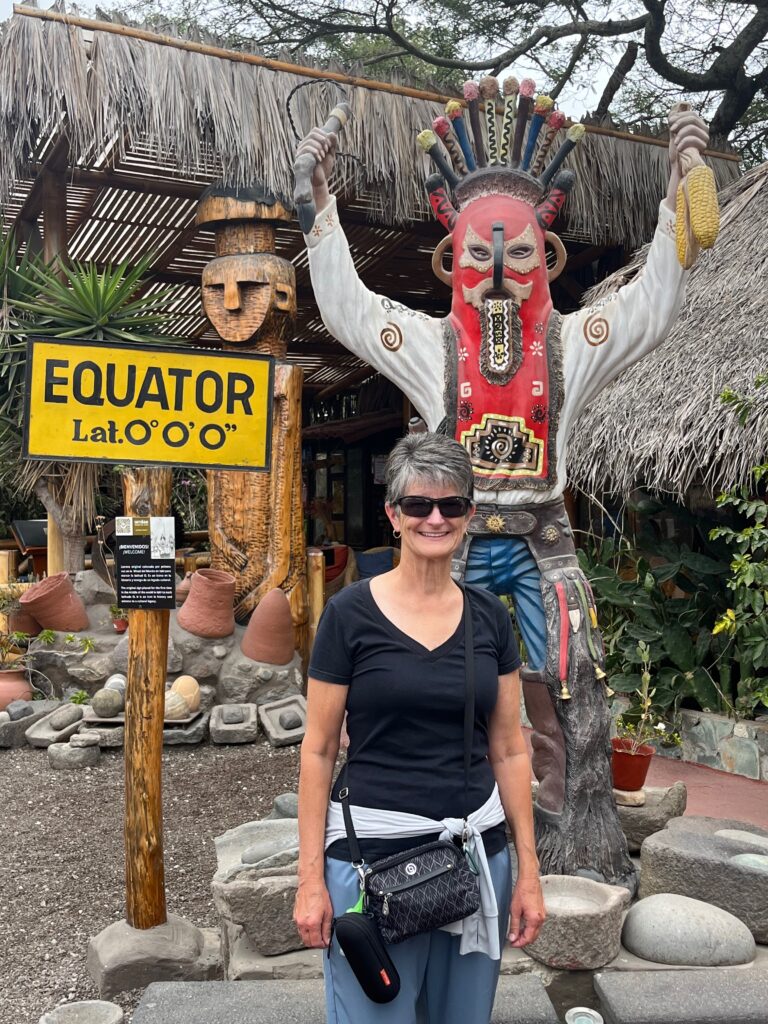

We then toured of The Fungus Garden close to Calacali town. The farm is run by Ricardo Viteri, a biologist and Ecuadorian fungus expert who has been involved in exploring the use of fungi to clean up oil spills, to develop related medicines, and to assist the local population in developing sustainable businesses. During our visit we learned about the production of different organic fungi, including shitake, white and pink oysters. We then returned to Hotel Cultura Manor for another night’s stay.
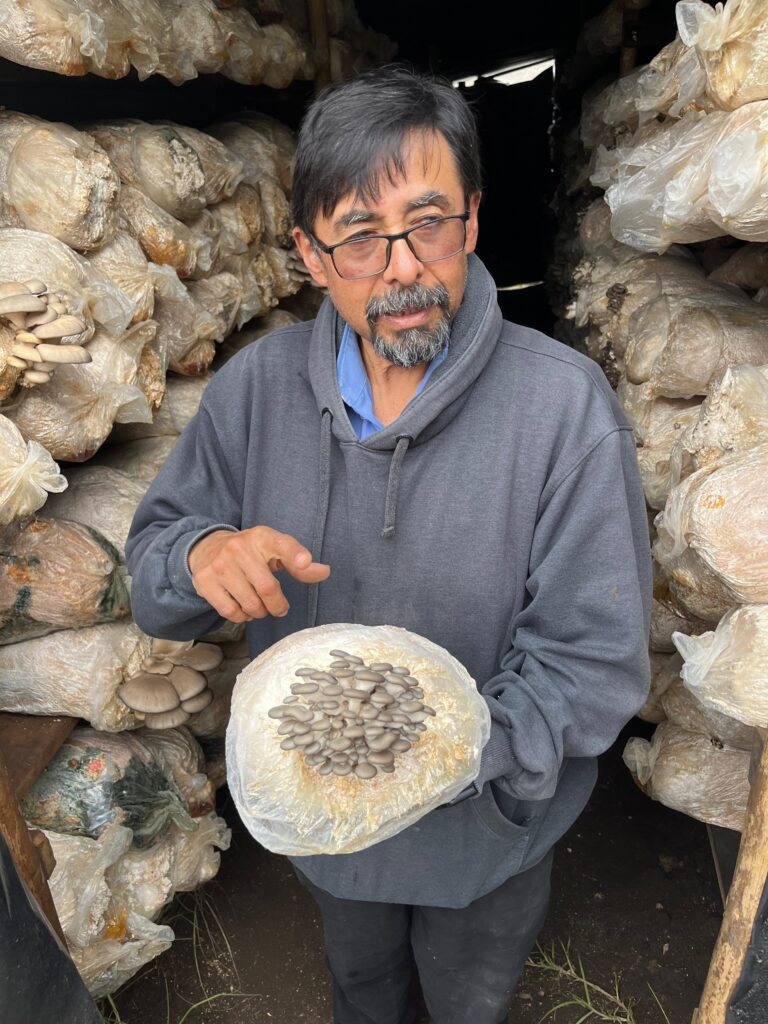
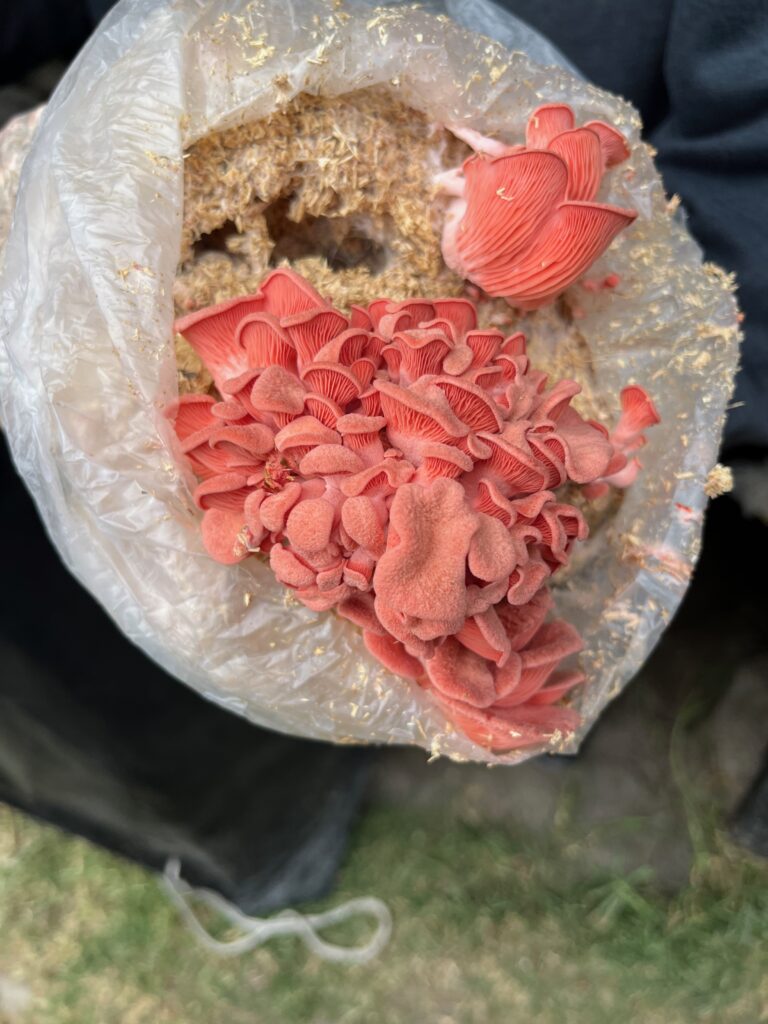
Tuesday, September 17
We departed at 7:45 am to drive to Hacienda El Porvenir (~1.5 hour drive) for a horseback riding trip amidst the stunning Avenue of Volcanoes scenery. I rode a horse to a ridge with a beautiful view of Cotopaxi Volcano, where stopped to have a cup of tea and a bite of Swiss chocolate. Paula stayed back at the hacienda, went for a walk, and relaxed in the comfortable living room.
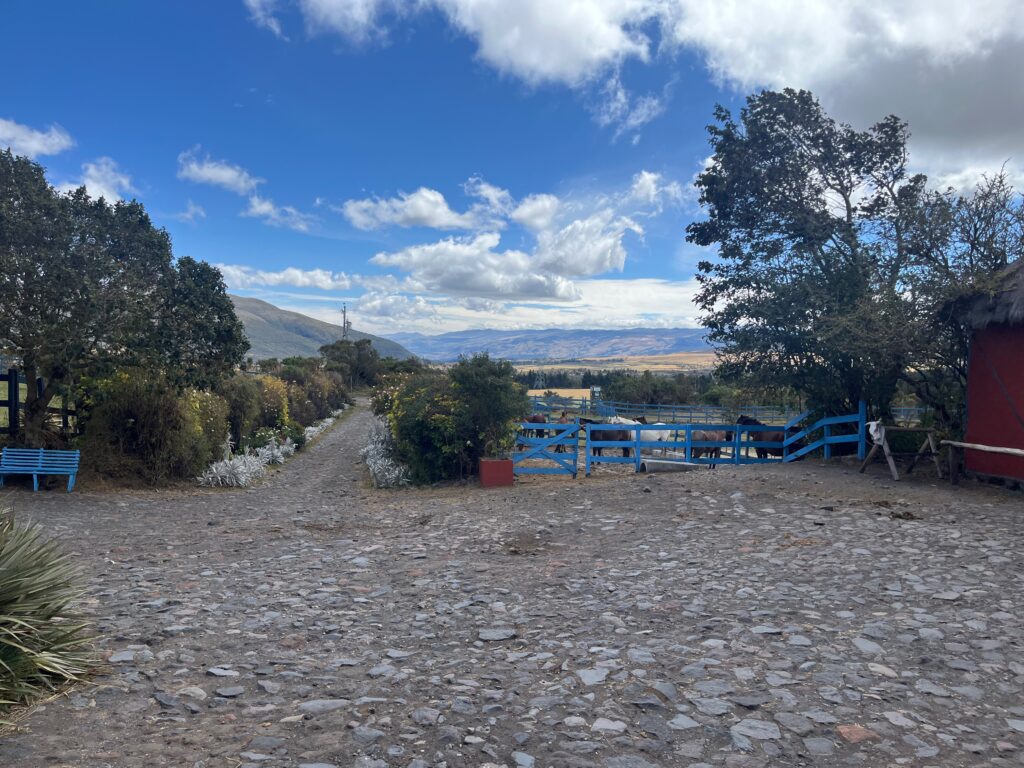
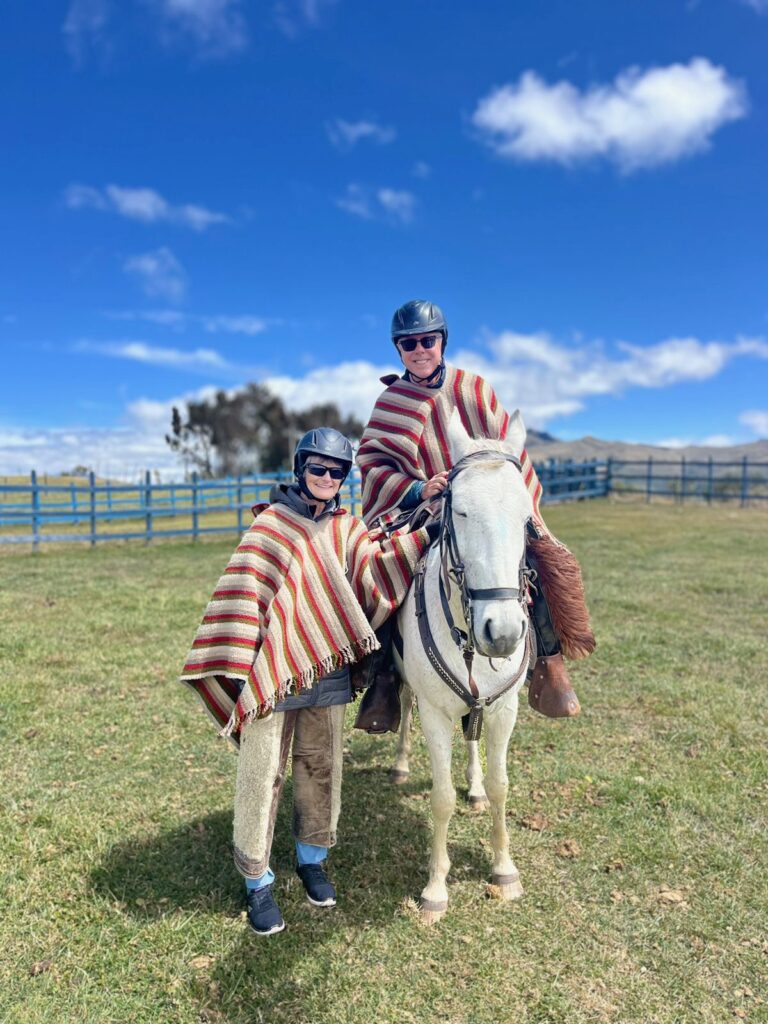
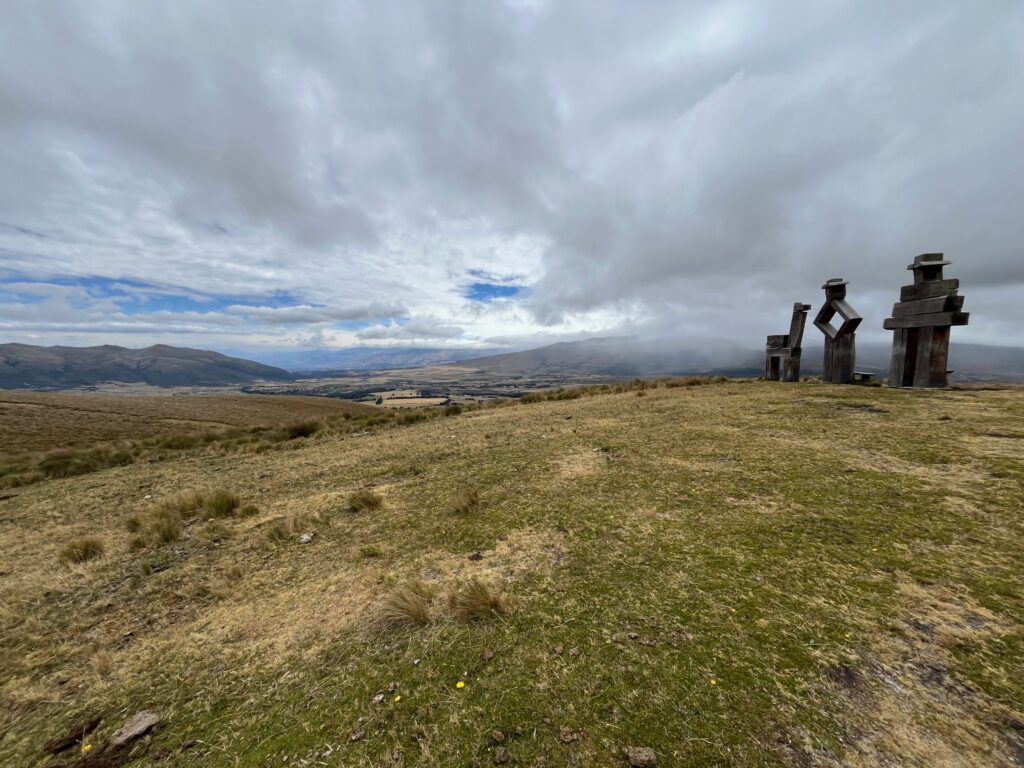
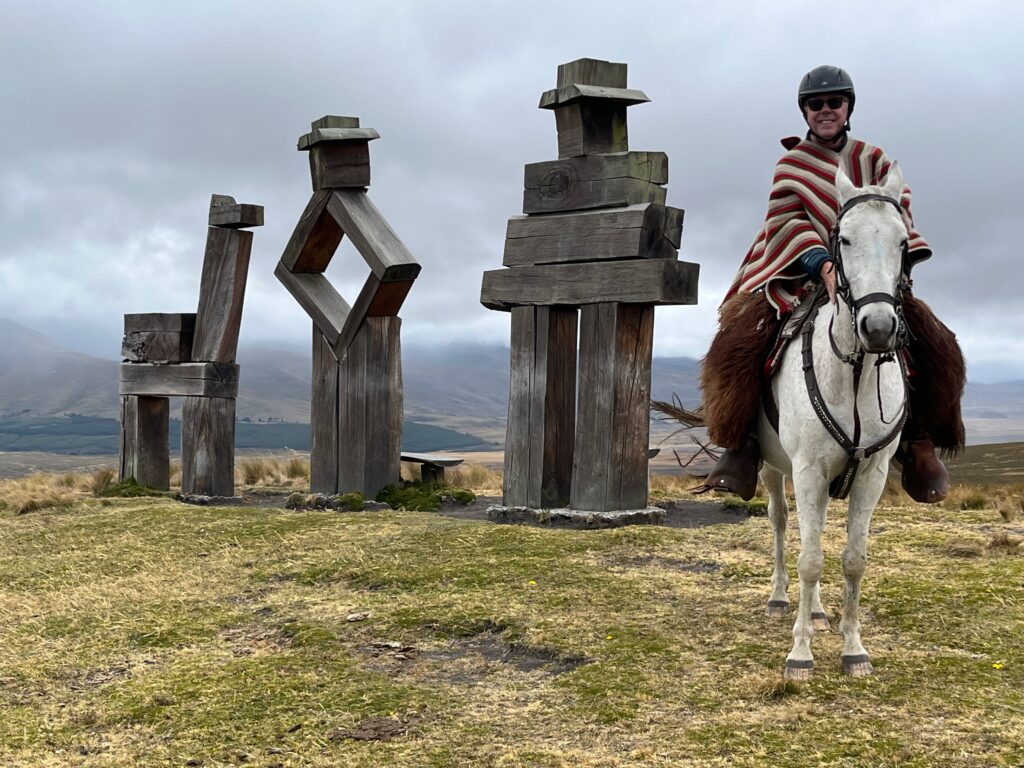
We then took a box lunch into Cotopaxi National Park (~40 minute drive). We drove to the parking lot below the refuge and ate our meals in the car as it was very windy. Juan and I then hiked one-half of the way up to the refuge, which put us at 15,154 feet, or 590 vertical feet below the refuge. Paula stayed in the car and rested.
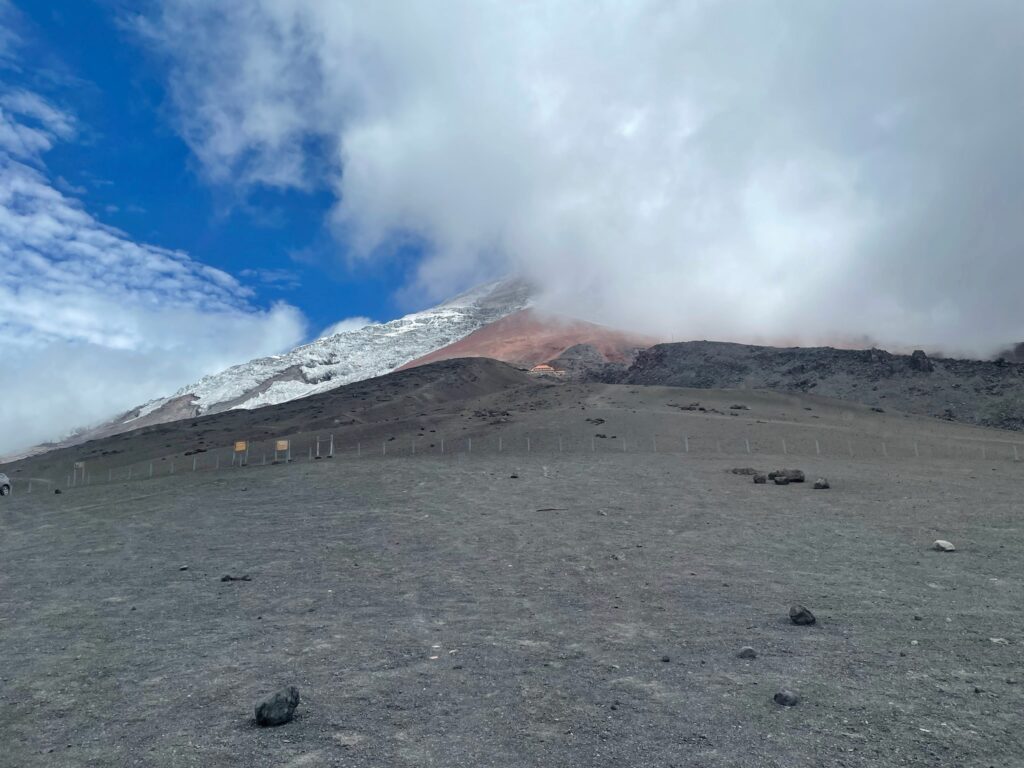
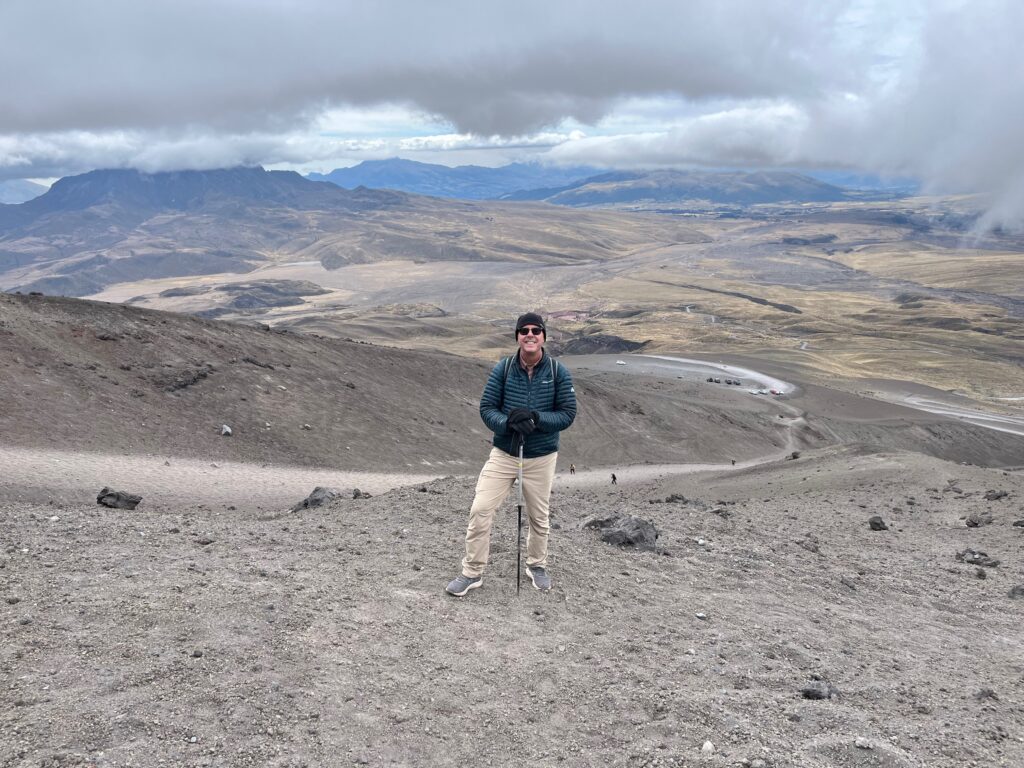
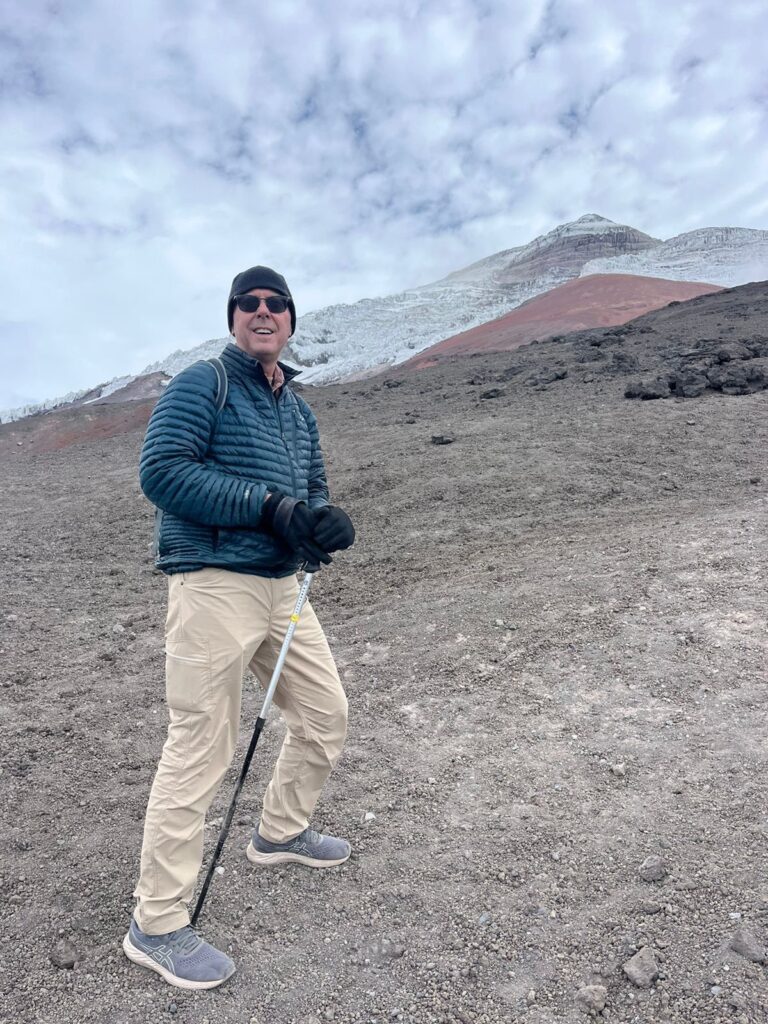
Juan and I returned to the vehicle and left Cotopaxi to drive approximately 1 hour to Hacienda San Agustin de Callo to have dinner and stay overnight. The hacienda was purchased by General Leonidas Plaza, leader of the liberal Revolution in Ecuador. It was built on the site of an Inca palace, and is one of the two most important archaeological Inca sites in Ecuador, and the point of Imperial style construction furthest north from Cuzco, Peru. This working farm offers an unrivaled glimpse into Ecuador’s rich and colorful past. Since the 15th century, the hacienda has served as an Inca fortress and palace, as well as a Augustinian monastery. By far the most impressive sights are the perfectly carved volcanic stone walls of two of the Inca rooms which have survived the centuries and now serve as a chapel and dining room.
The hacienda was beautiful and spacious. Our room was large with two fireplaces, one in the bedroom and one in the bathroom. The floor included glass-covered openings showing the remains of Inca walls. Our visit began with the opportunity to feed the Llamas! We walked around the hacienda grounds and garden for a while to take in the view, including the Inca chapel. I then took a book and read in the lounge while enjoying a cocktail, while Paula remained in the room. At 7 pm we went to the dining room, the walls of which are entirely of Inca construction. Dinner consisted of cute little biscuits, traditional potato soup, sea bass with carrots, squash, salad and rice, with blackberry ice cream for dessert. We then returned to our room to retire for the evening, finding warm water bottles (wrapped in beautiful knit cozies) in our bed and the fire rebuilt.
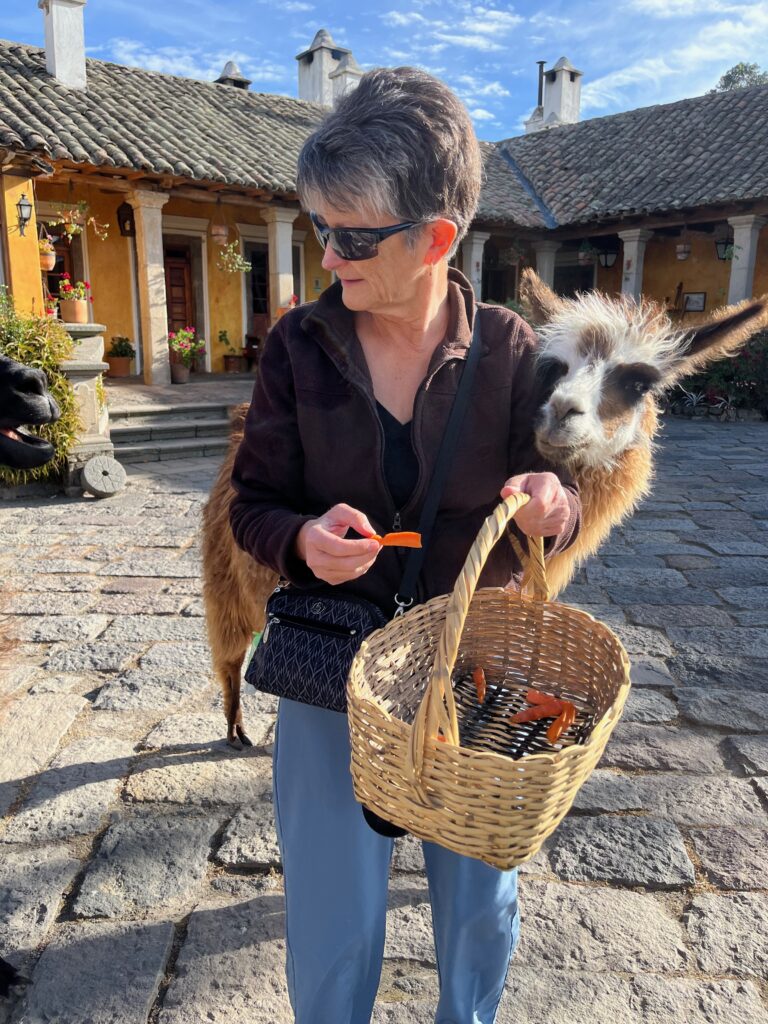
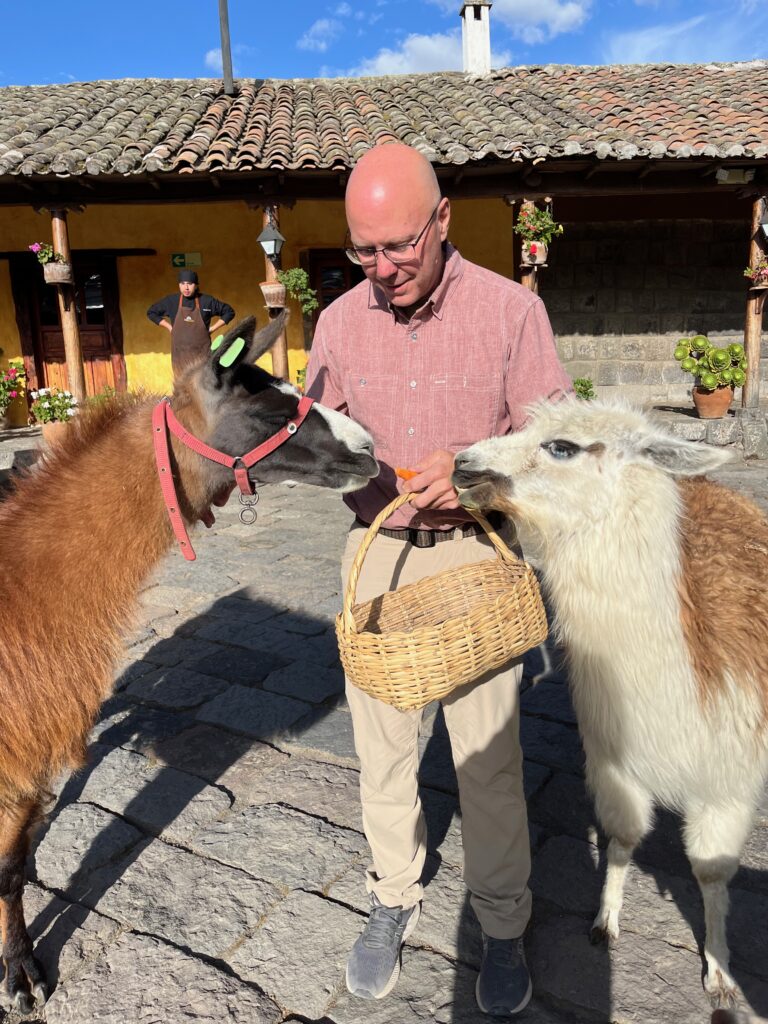

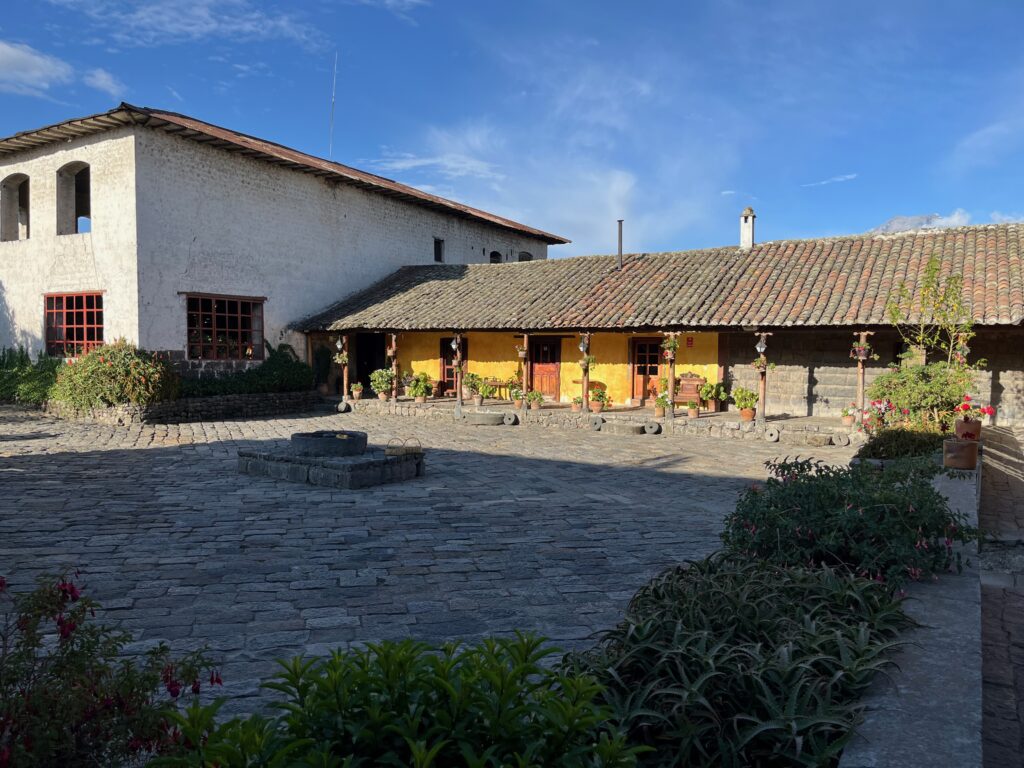
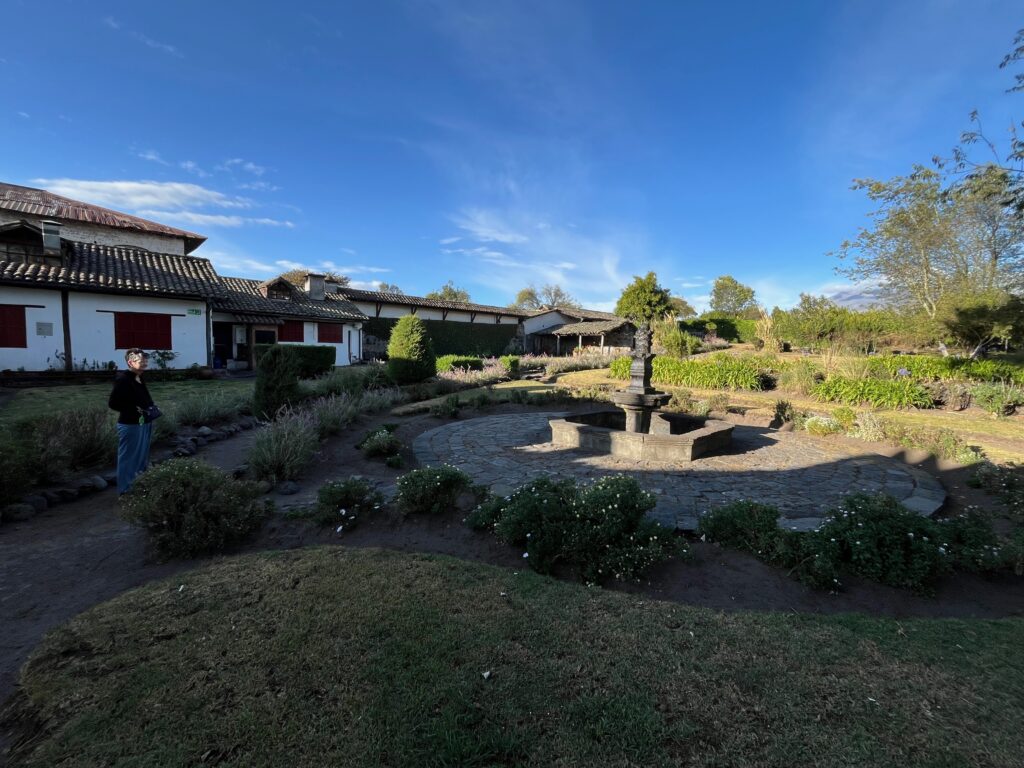
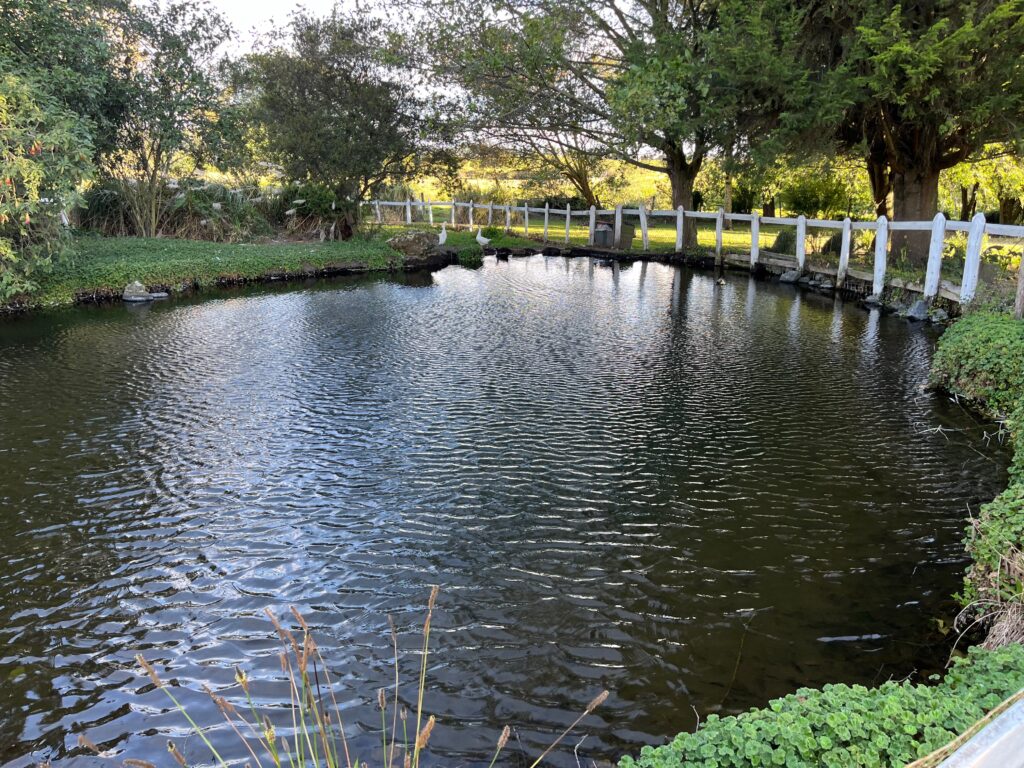
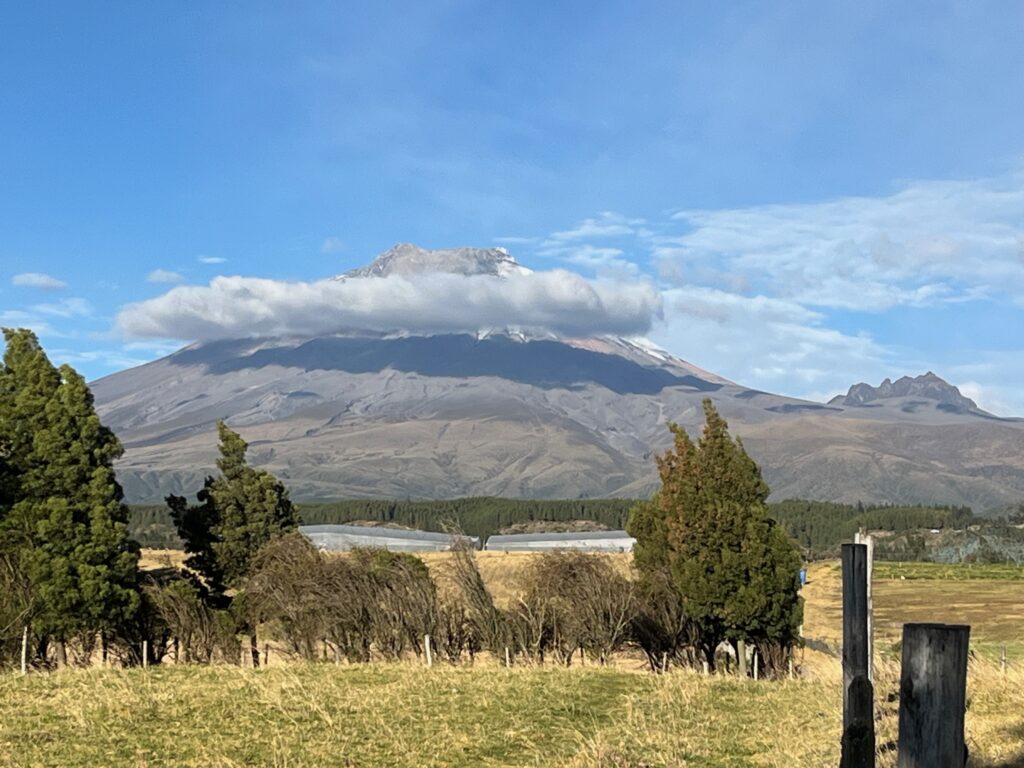
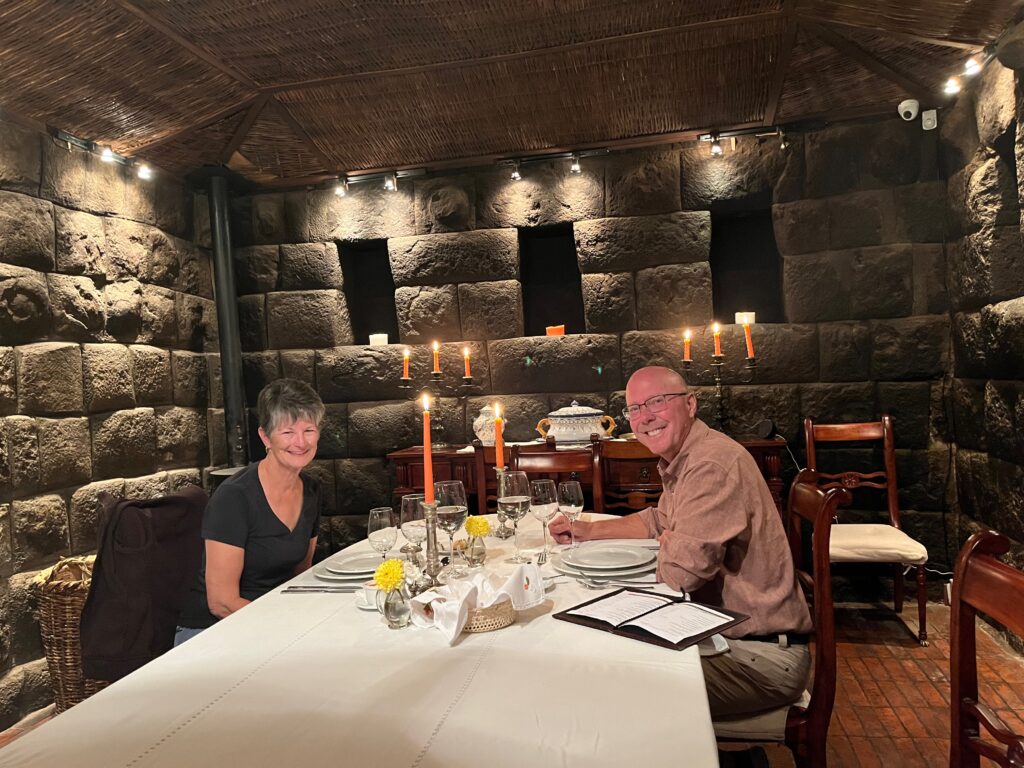
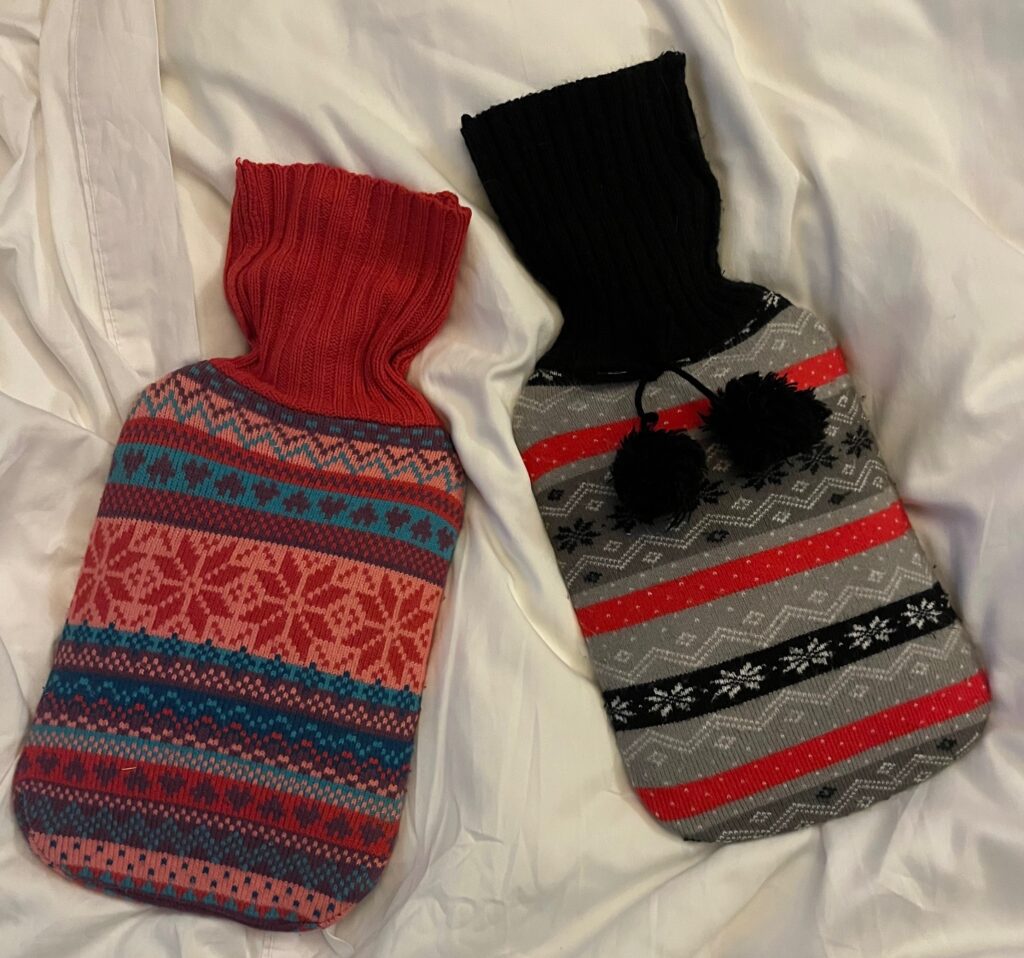
Wednesday, September 18
In the morning, I rebuilt the fire and we got ready for another day. Breakfast was at 8 am and consisted of cereal with toppings (bee pollen, cream, yogurt, granola, turmeric, and more), bread, toast, butter, jam, eggs prepared to order, fruit, juice and coffee/tea.

Juan picked us up at 9 am to head towards Chimborazo, the highest point on earth when measured from the center of the earth (Mount Everest is the highest point when measured from sea level). We drove around Chimborazo Volcano and took in the sights of a beautiful drive through a canyon from the Andes flatlands up to higher elevations (it reminded me of Big Thompson Canyon in Colorado). We stopped at a local community project for a Llama lunch which included soup, Llama, plantains, and rice.
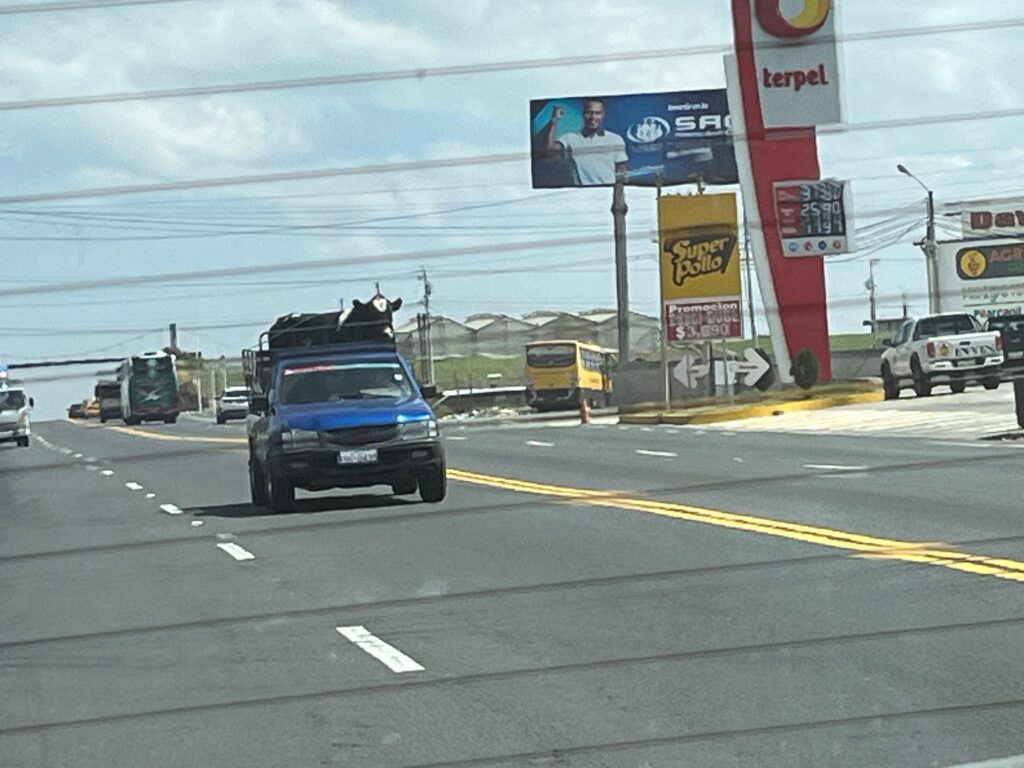
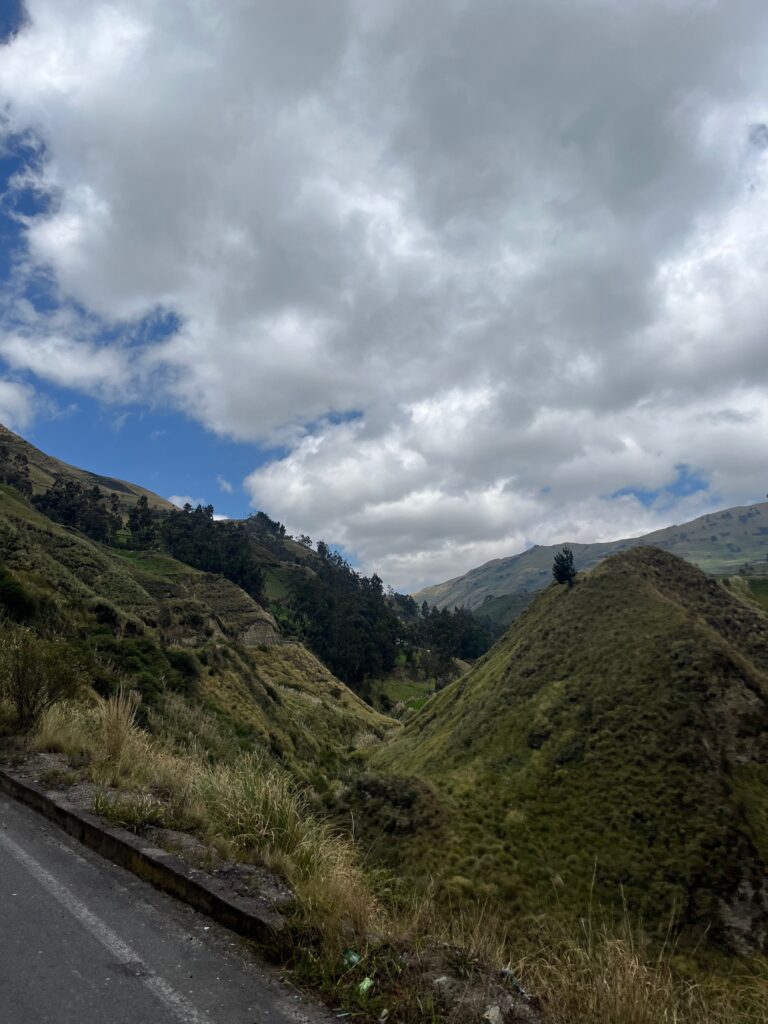
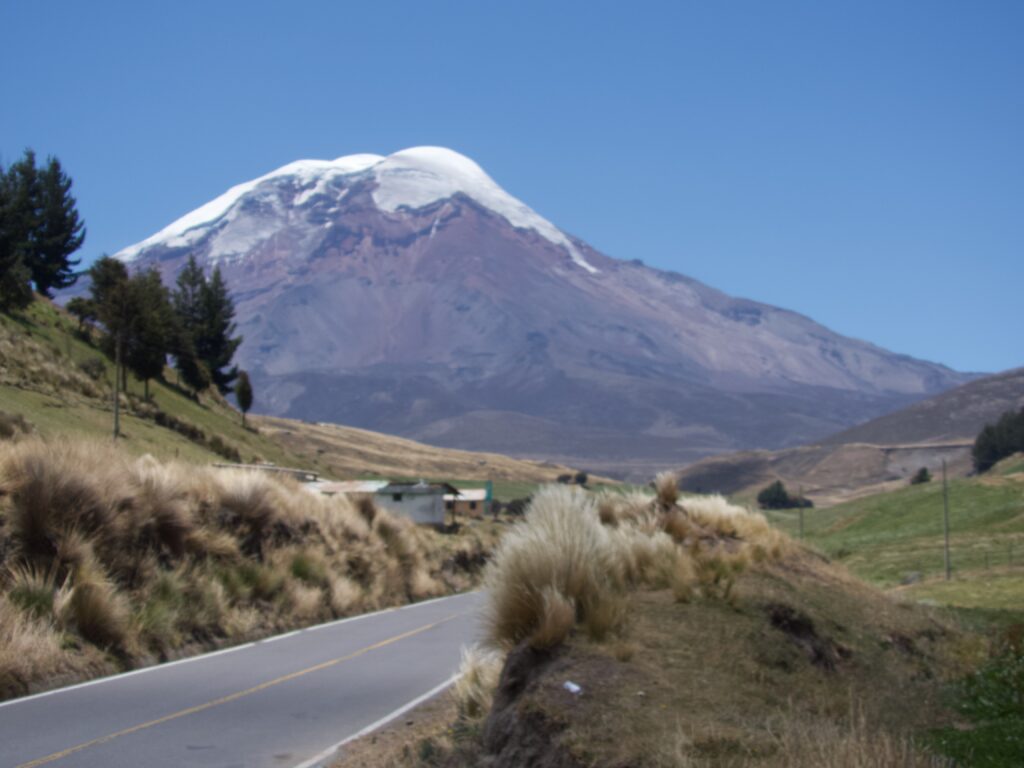
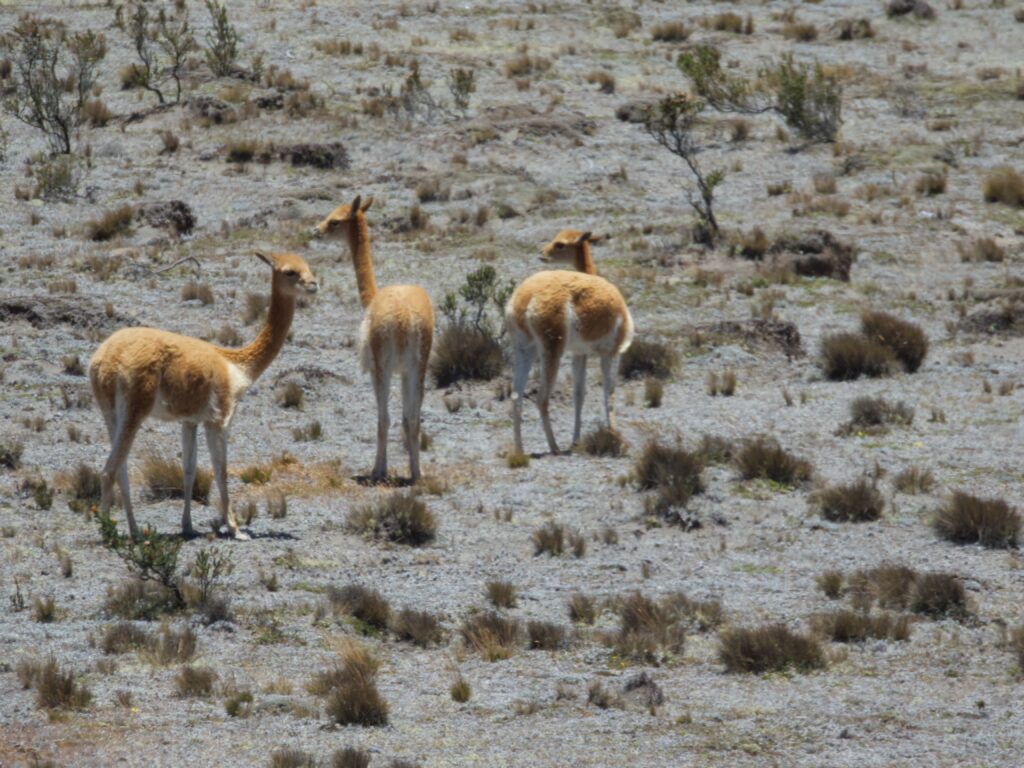
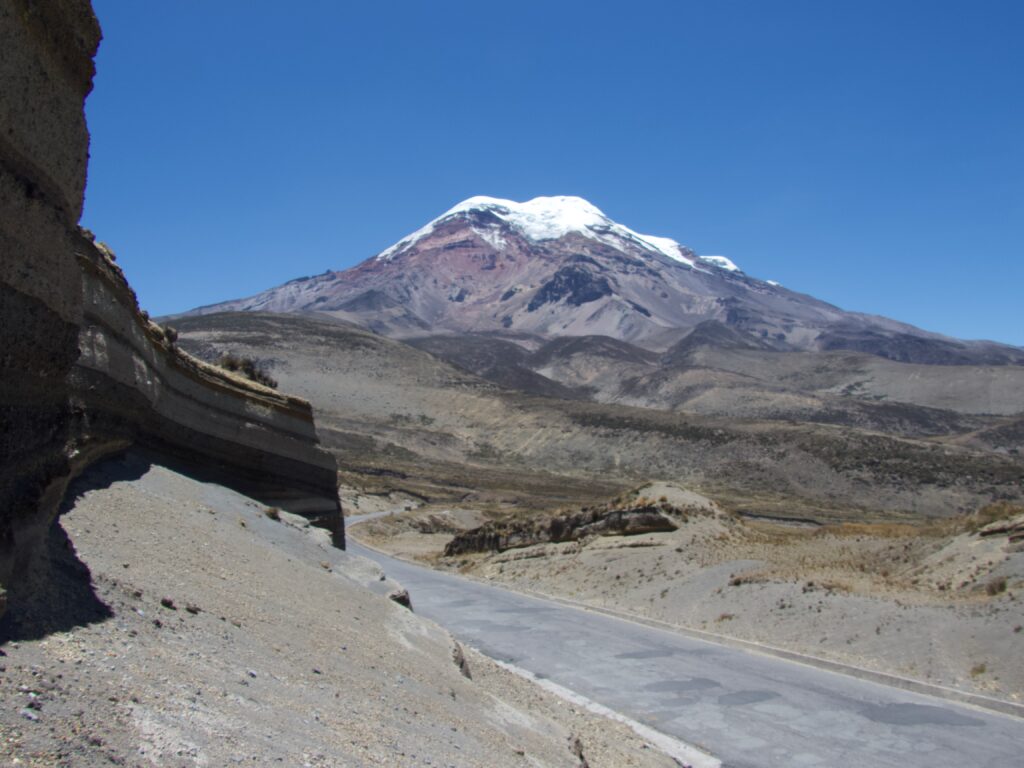
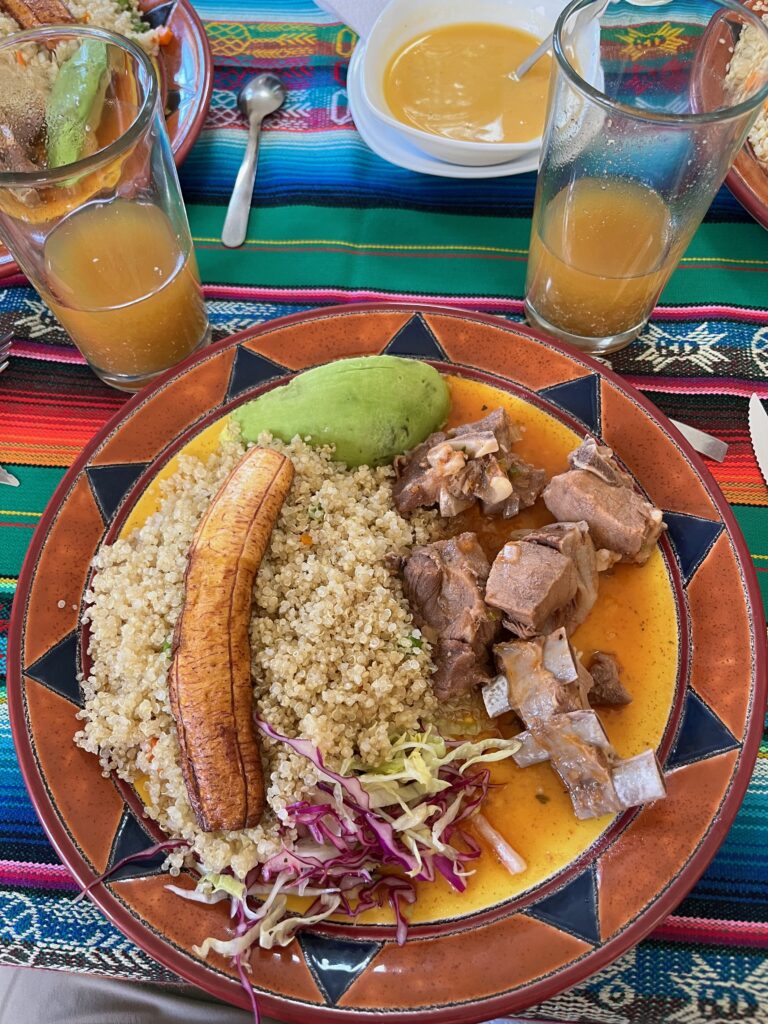
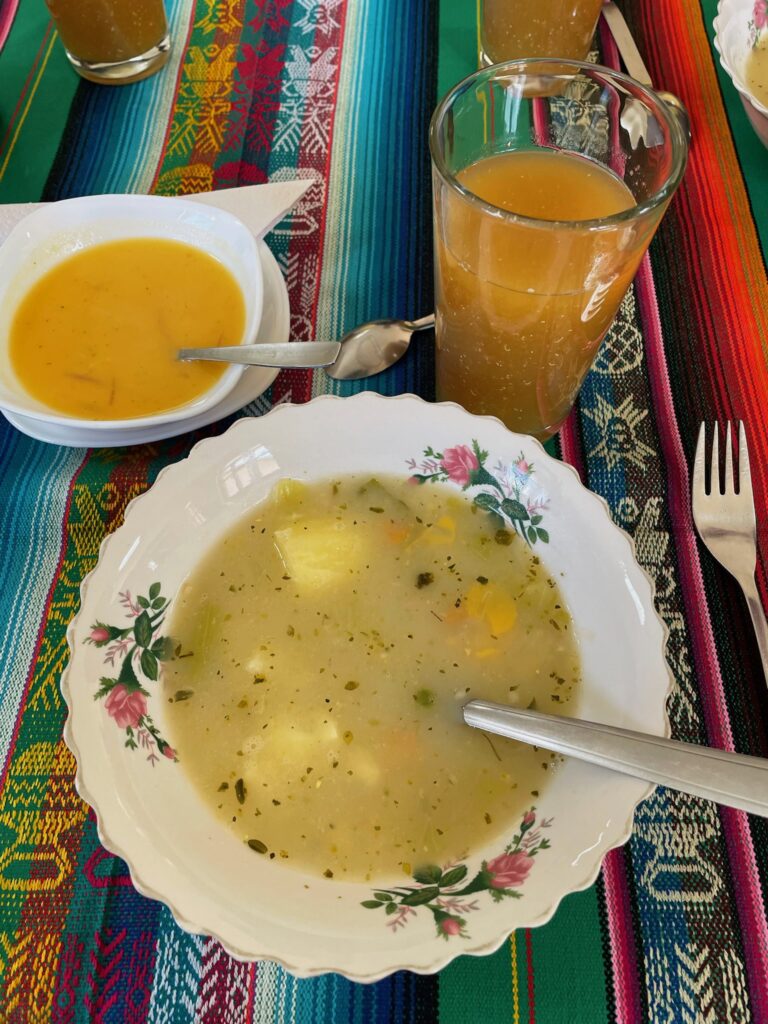
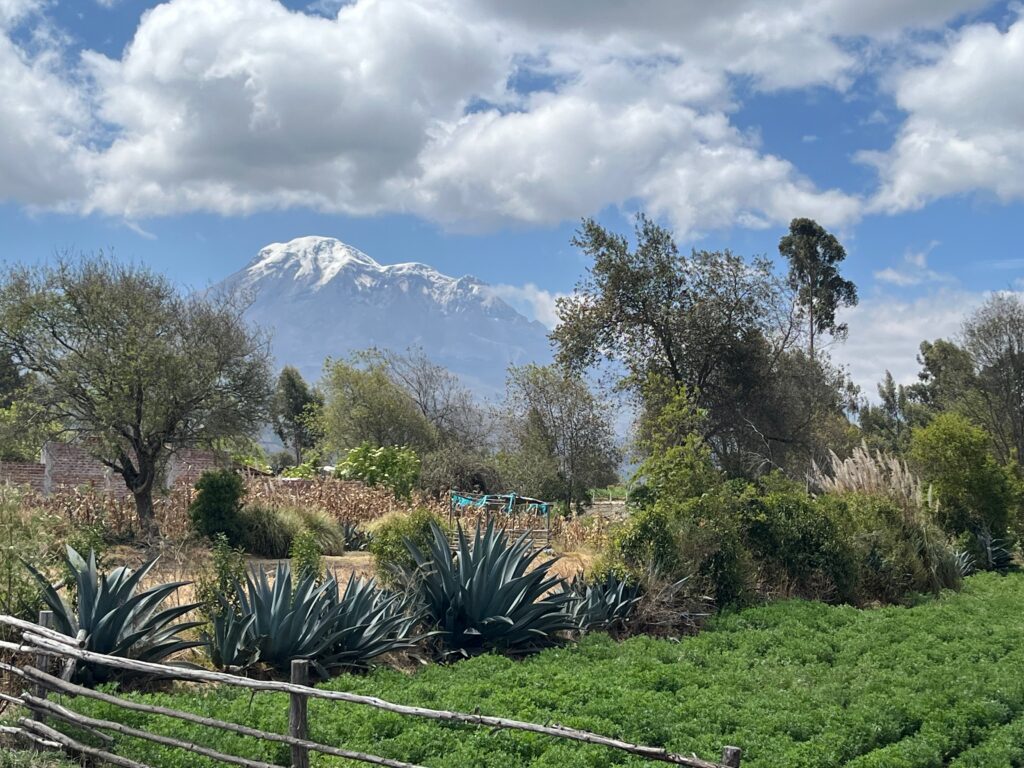
We drove next to Chimborazo province to visit the Jatari Campesino where we watched a group of skillful women shear an alpaca using scissors, grade the wool, and spin it. “Jatari Campesino” is “a community belonging to the rural parish of Calpi, where around 73 families live and offer tourists the opportunity to share their traditions and way of life.” After completing their demonstration, we looked at some of the goods created by the Pagocha Project using wool harvested by the women, were treated to a song giving thanks for God’s blessings, and treated to a snack of beans, potatoes, and an oatmeal drink (Cuáker). They even dressed Paula up in native attire so she could look like them. In addition, we were given a tour of the huge mural that shows gastronomy, traditional festivals, llamas, alpacas, the icemen of Chimborazo and other representative characters of the commune. Above all else, we’ll remember the friendliness of the women and the initiative and cooperation they showed in performing their craft.
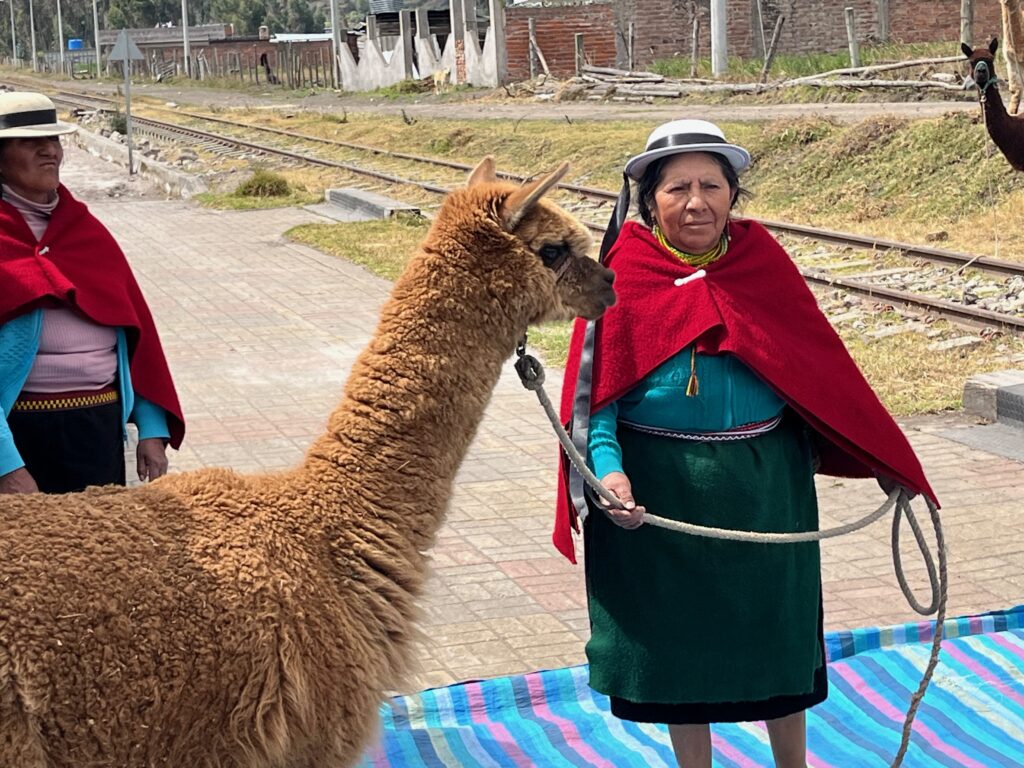
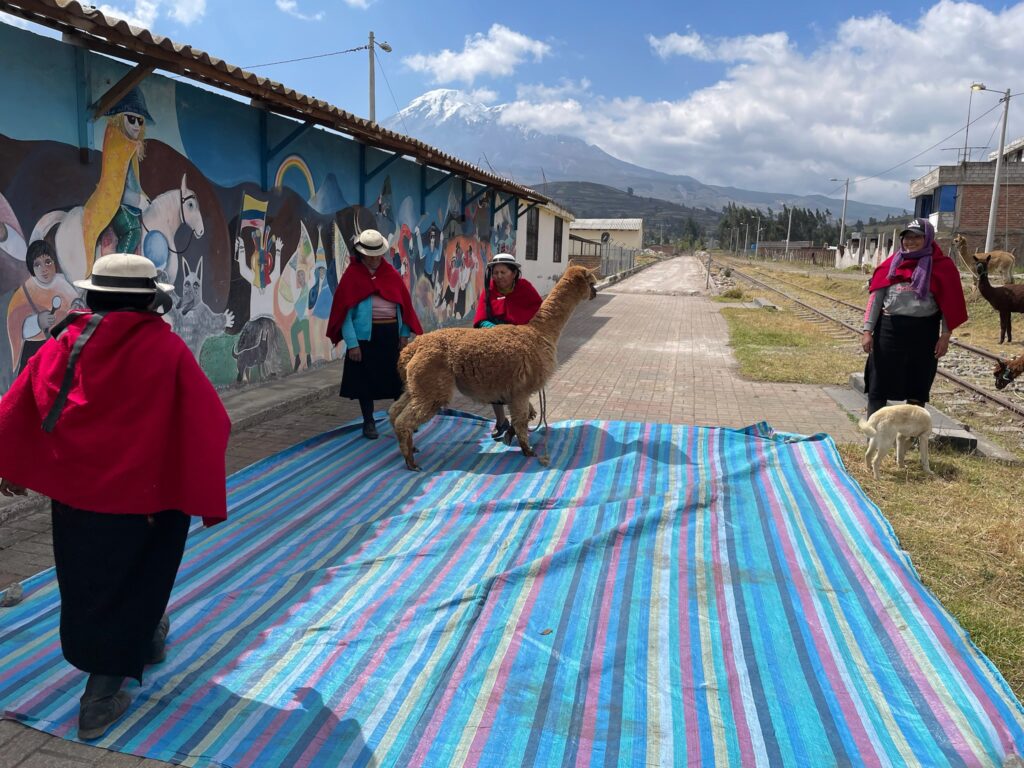
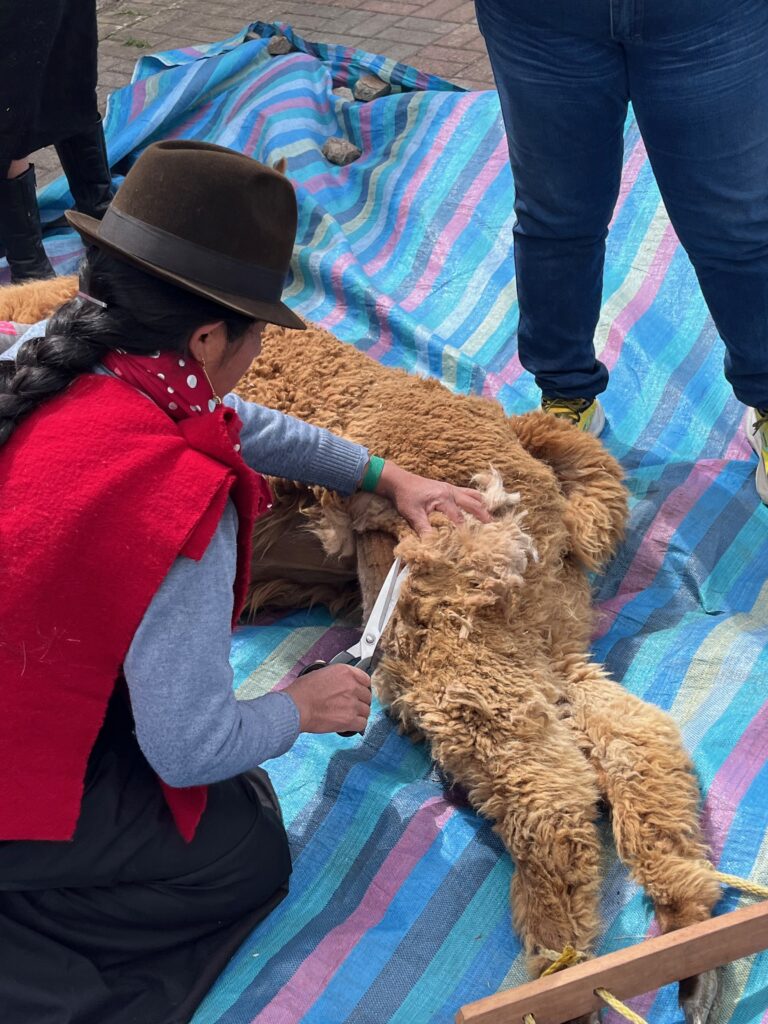
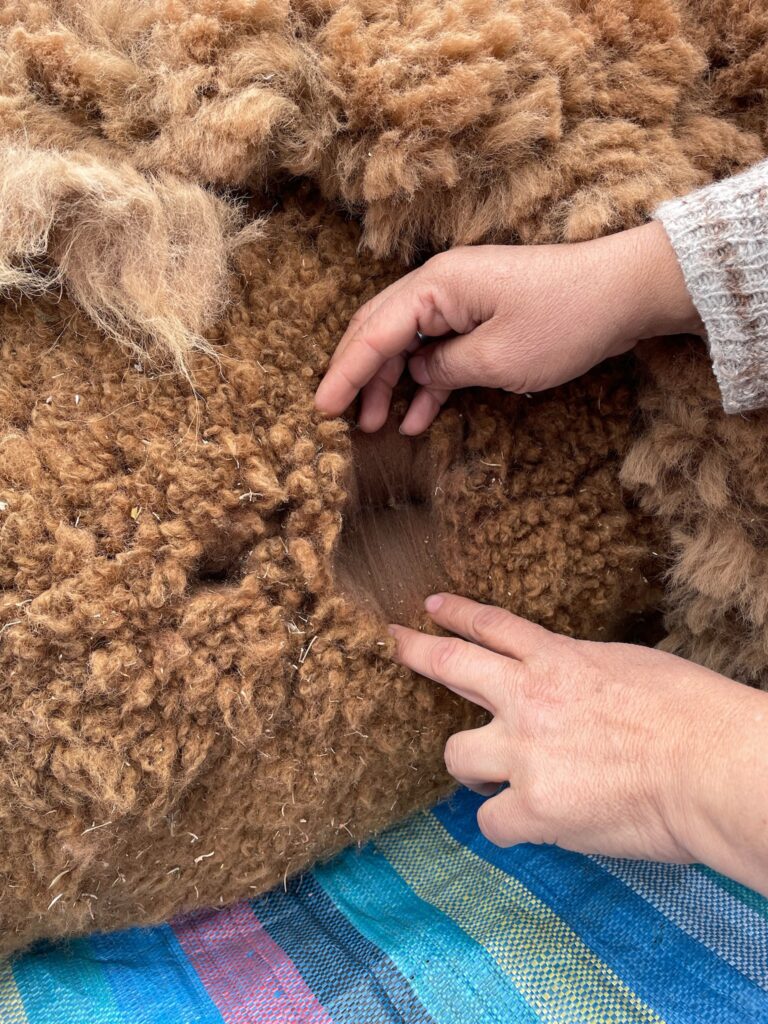
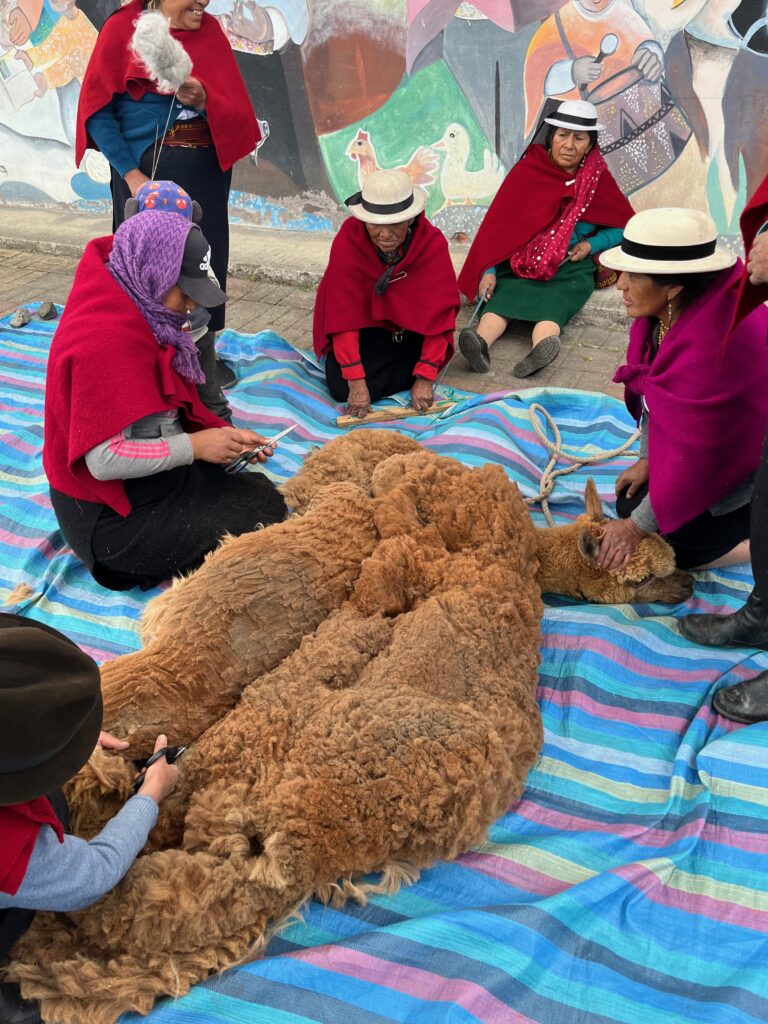
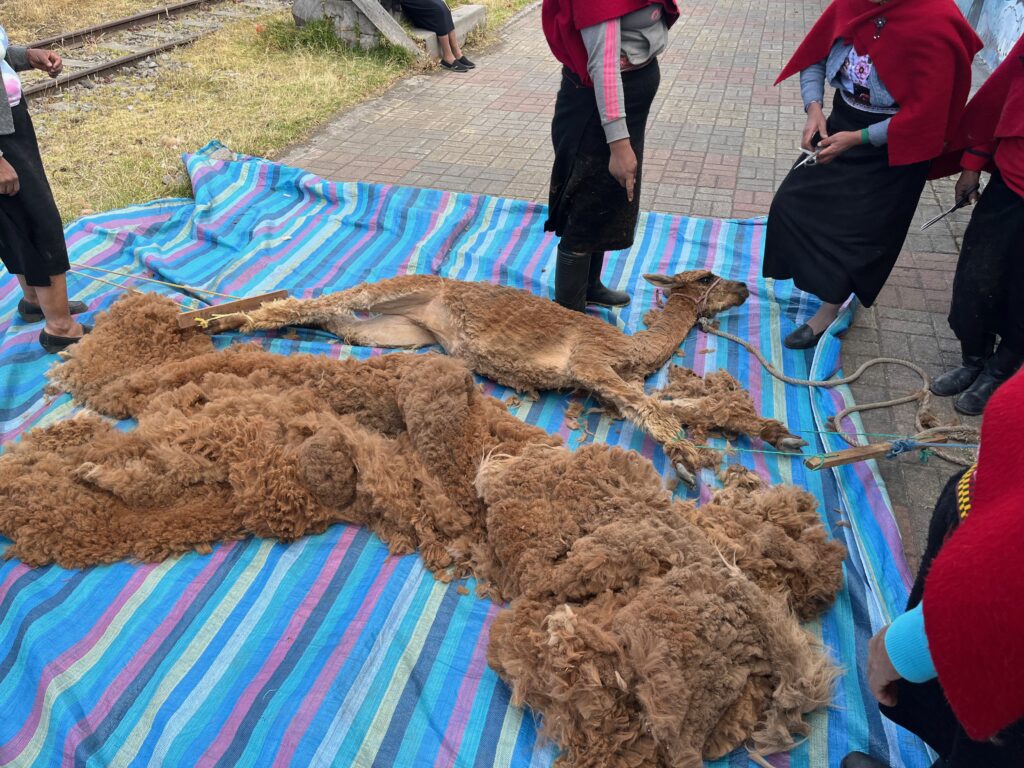
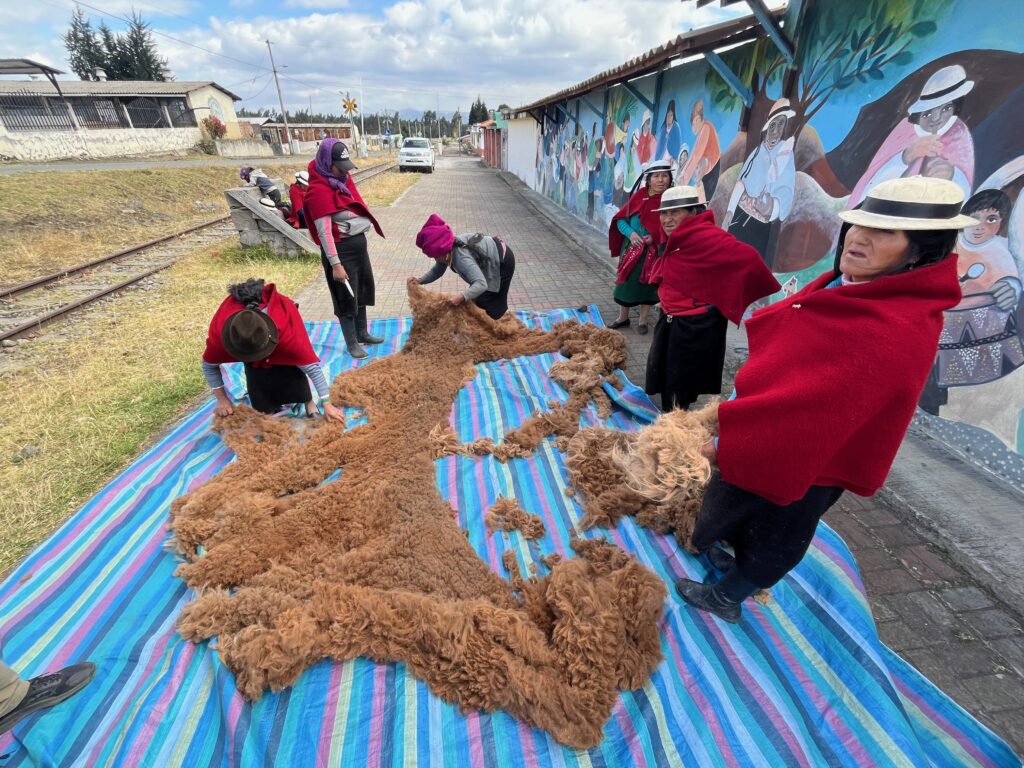
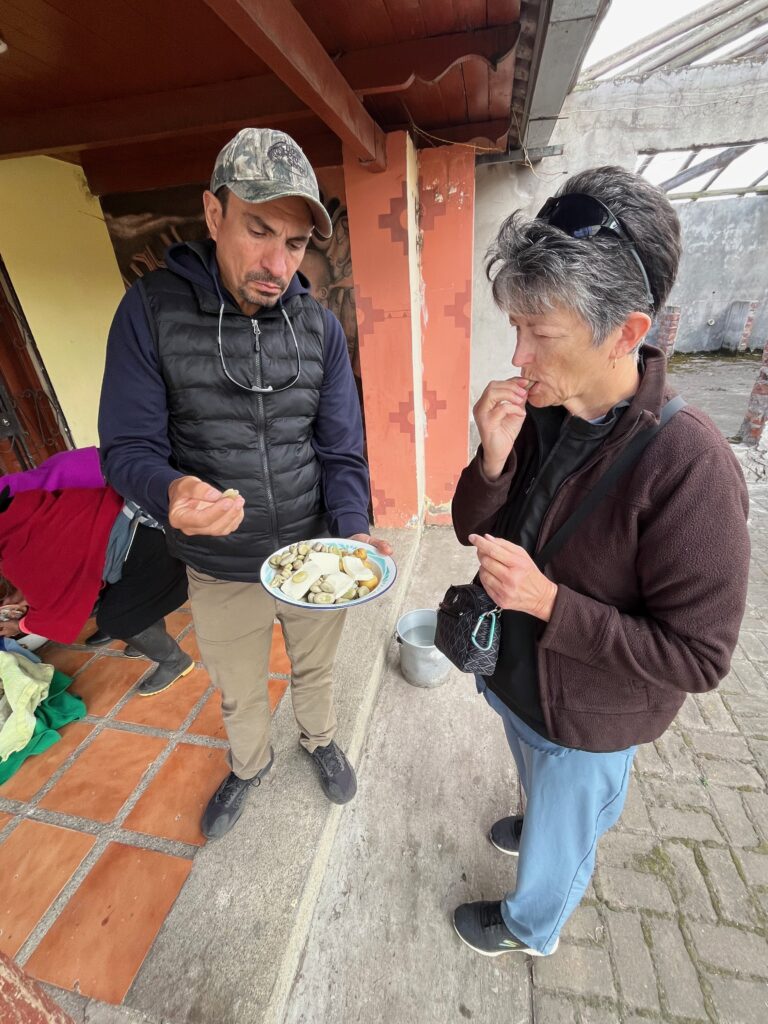
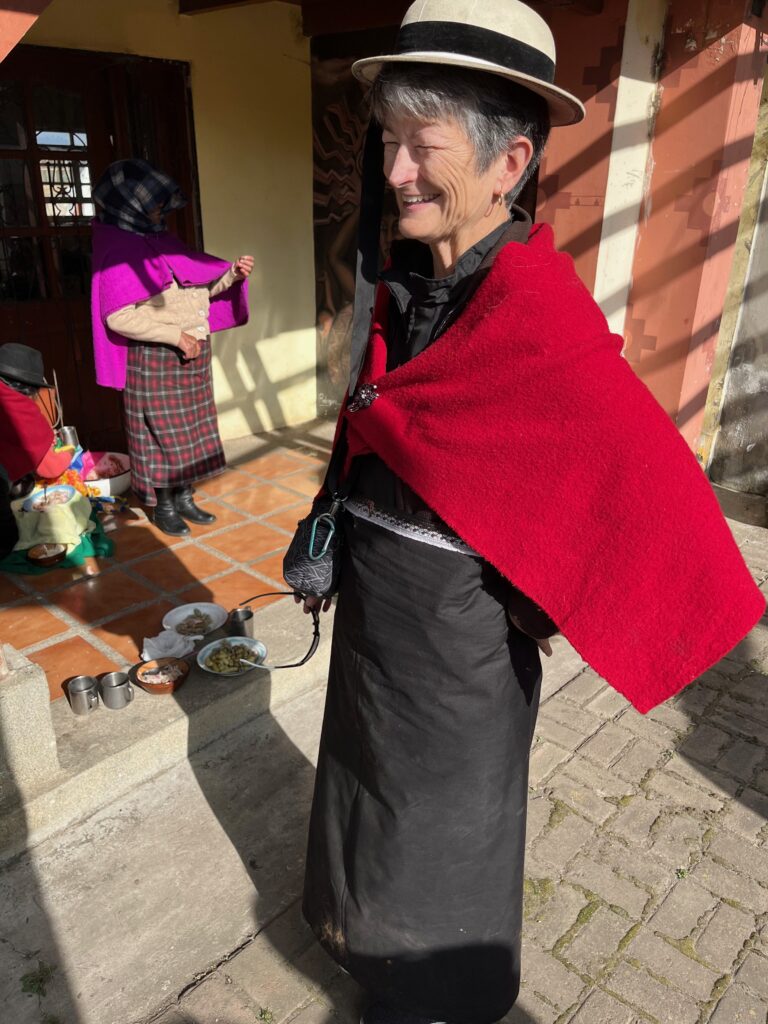
After the alpaca demonstration we drove to Chimbarazo Lodge, our accommodations for the night and for dinner. The lodge is a haven for hikers and climbers of Chimbarazo Volcan and sits at 13,123 feet of altitude. The lodge is made up of the main lodge, and three haciendas with rooms accommodating between 1 and 3 people per room. The lodge is in a valley immediately below the volcano, providing excellent photo opportunities of the surrounding landscape, of the alpacas living in the area, and of the other wildlife in the immediate vicinity (e.g., birds, deer, and rabbits). Our dinner at the lodge consisted of pumpkin soup, bread, German-inspired pork chop, broccoli, rice, plantain, and pickled red cabbage.
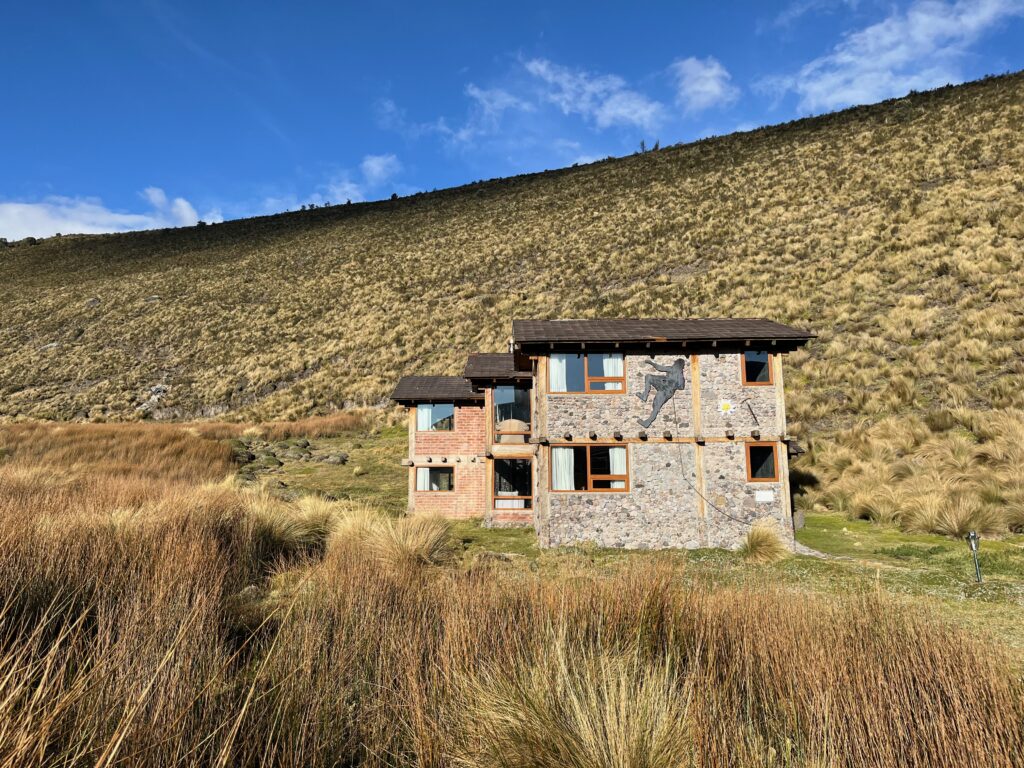
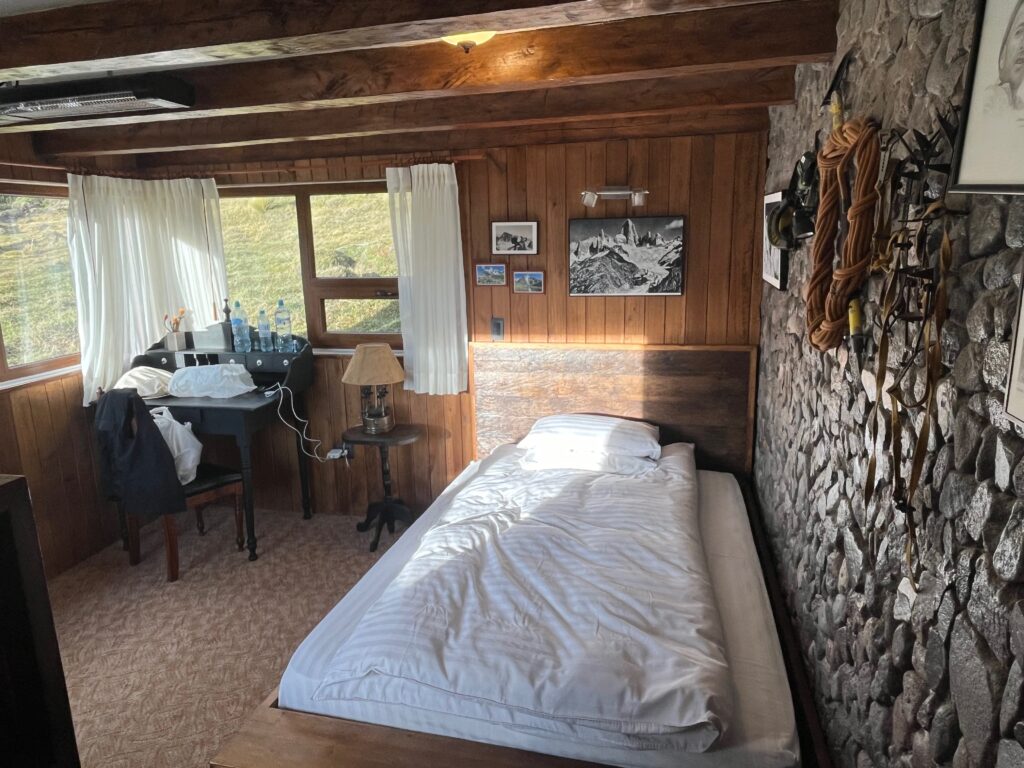

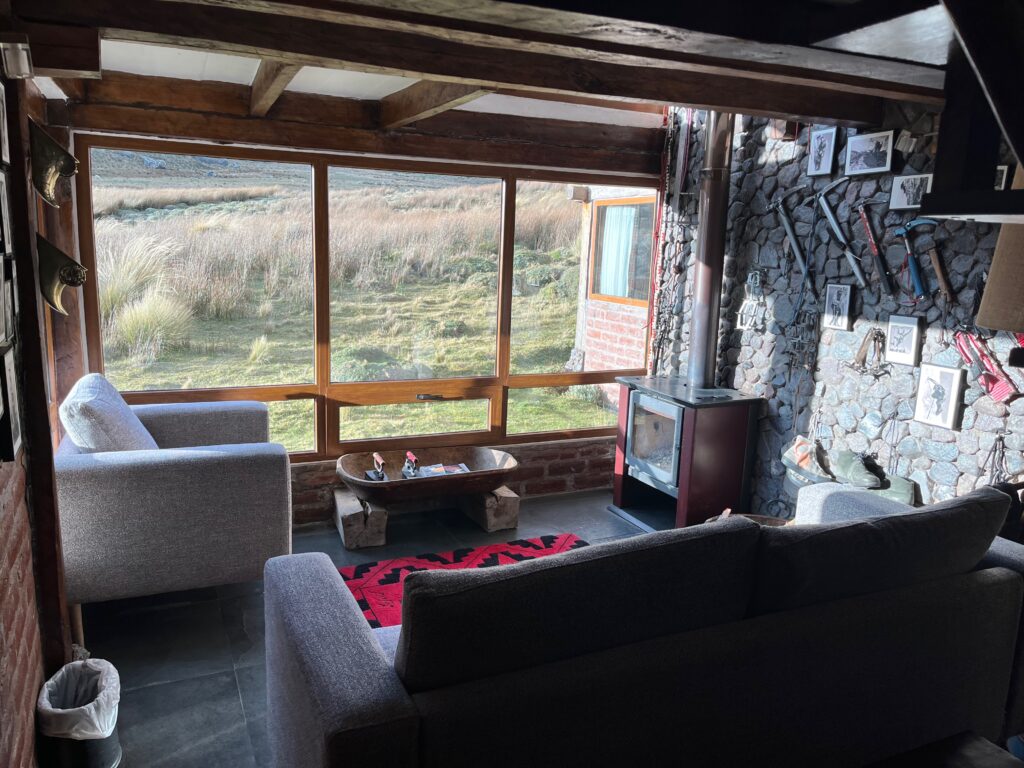
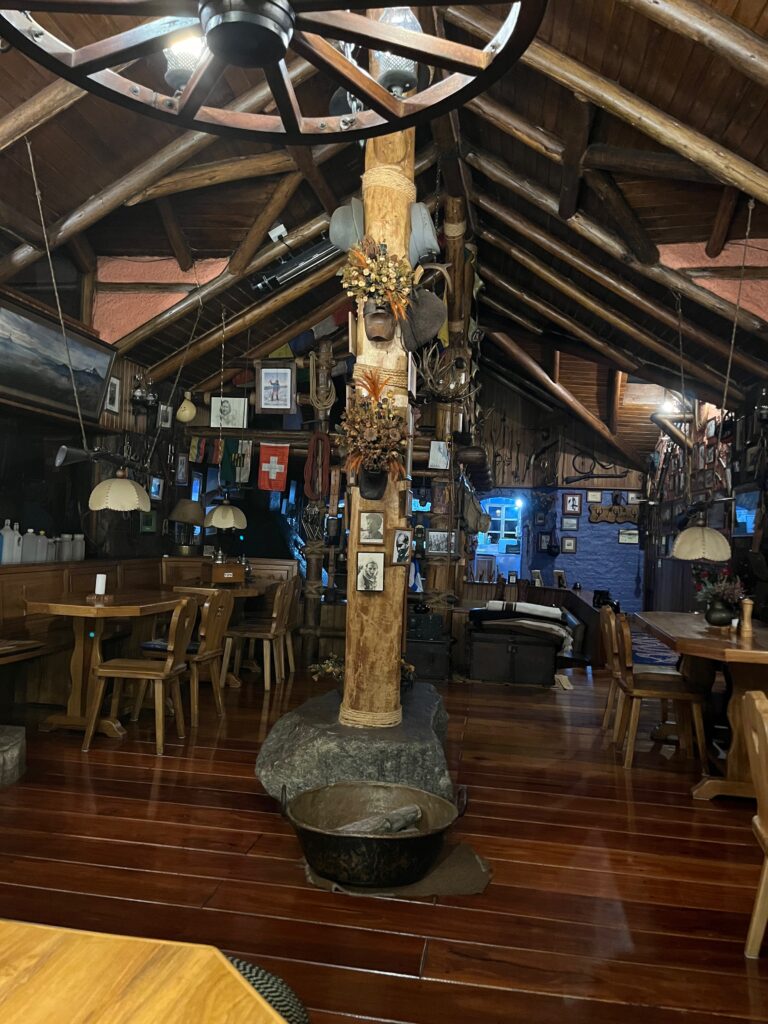
After dinner we retreated to our hacienda. It was a nice, peaceful retreat as we were the only two guests in the building. Due to nationwide blackouts in Ecuador due to energy shortages resulting from the ongoing drought (most of Ecuador’s energy comes from hydro-electric power), we went to bed with extra covers expecting a cold night. What we didn’t expect, however, was that Paula was unable to sleep due to the thin air at such altitude. After getting her some supplemental oxygen, however, she was able to get some decent sleep and return to her normal self, albeit a little tired, the next day.
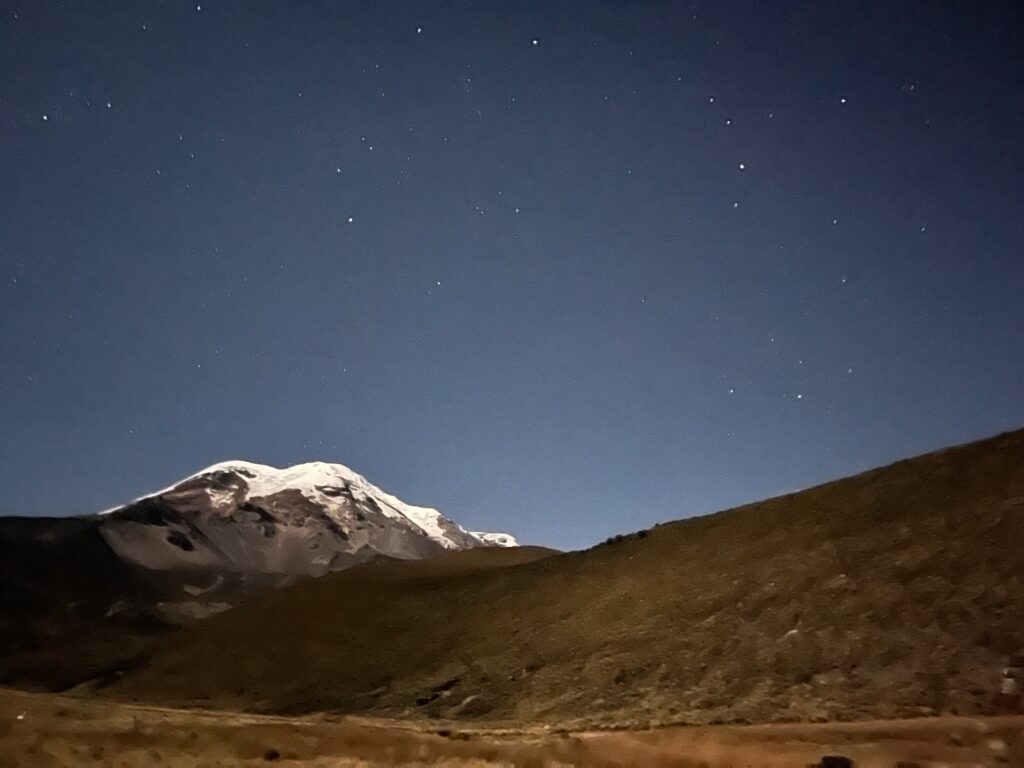
Thursday, September 19
After breakfast, we left the Chimbarazo Lodge and drove to Guamote to see the local markets. Guamote is in a rural part of Ecuador and is largely agriculture-based. It has a market one day a week, on Thursdays. The market is split up into various areas throughout the town: large animals (e.g., cows, hogs, and sheep), small animals (guinea pigs, rabbits, and chickens), and retail areas for fruits, nuts, seeds, meat, flowers, and a variety of consumer goods.
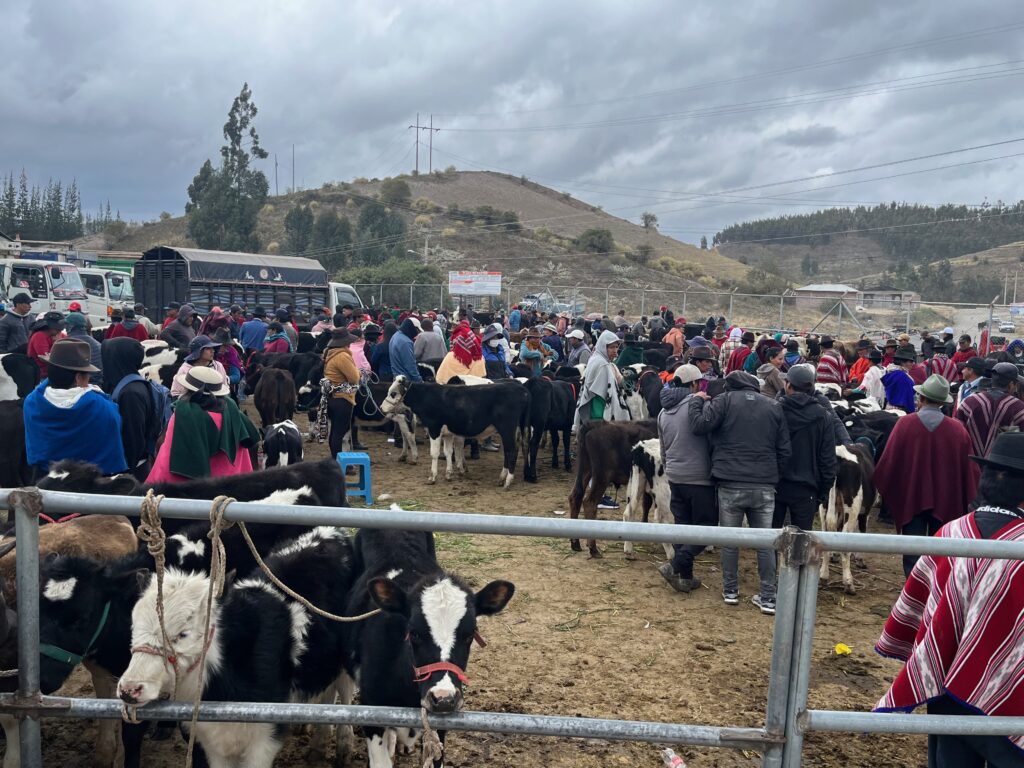
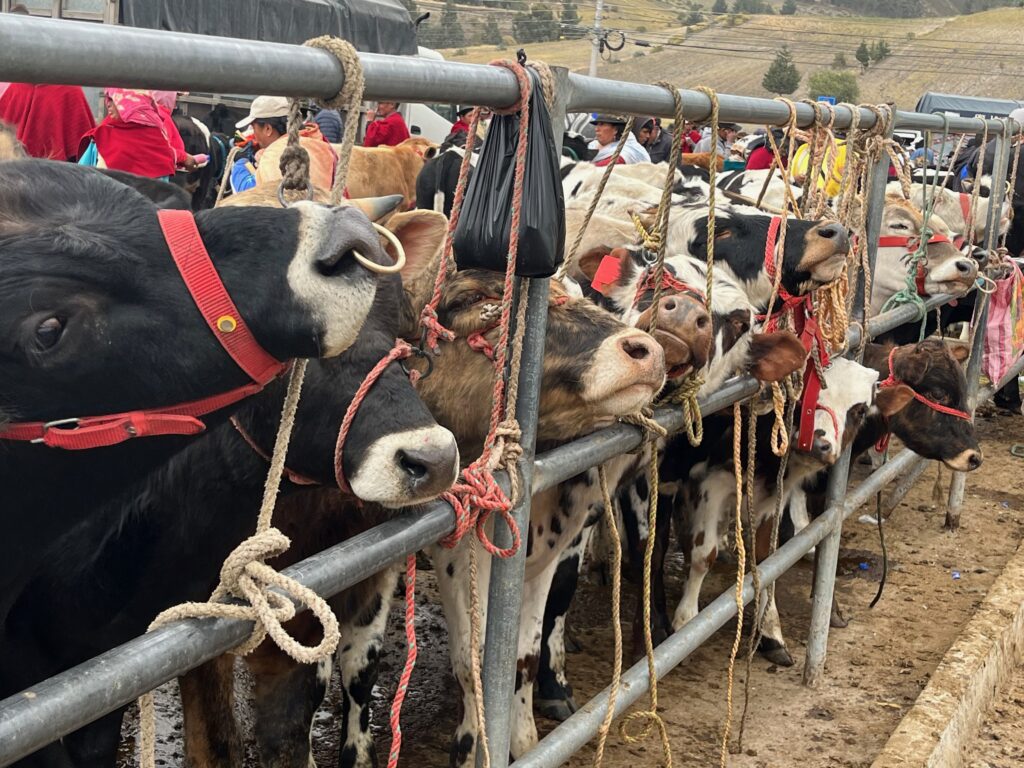
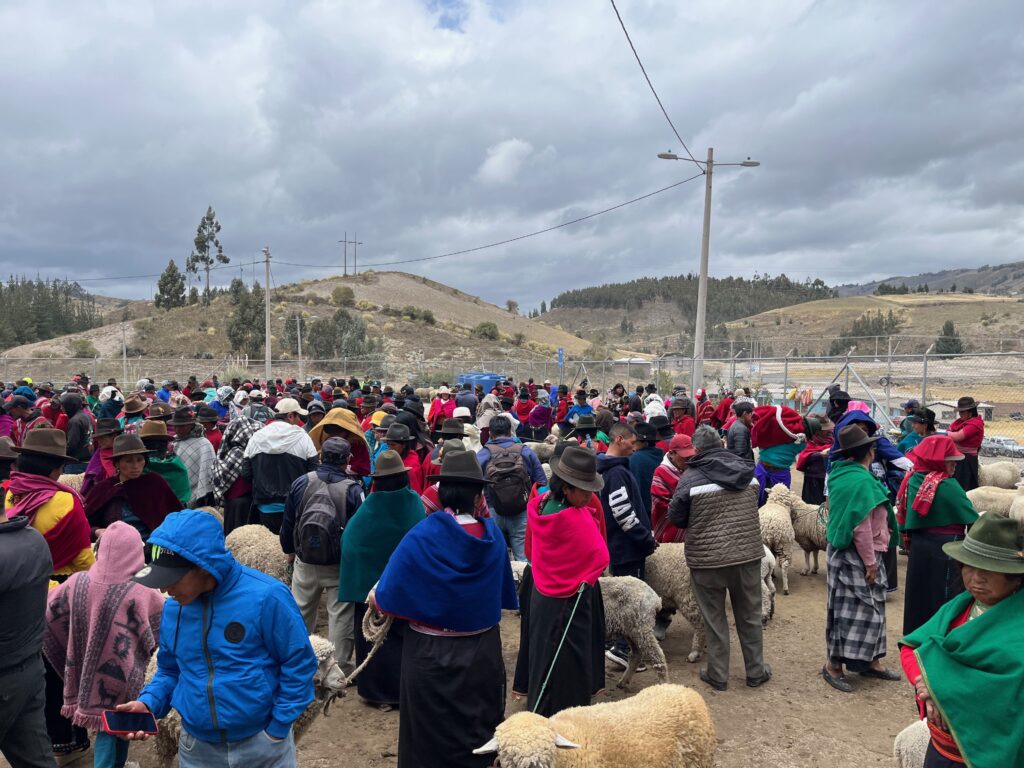
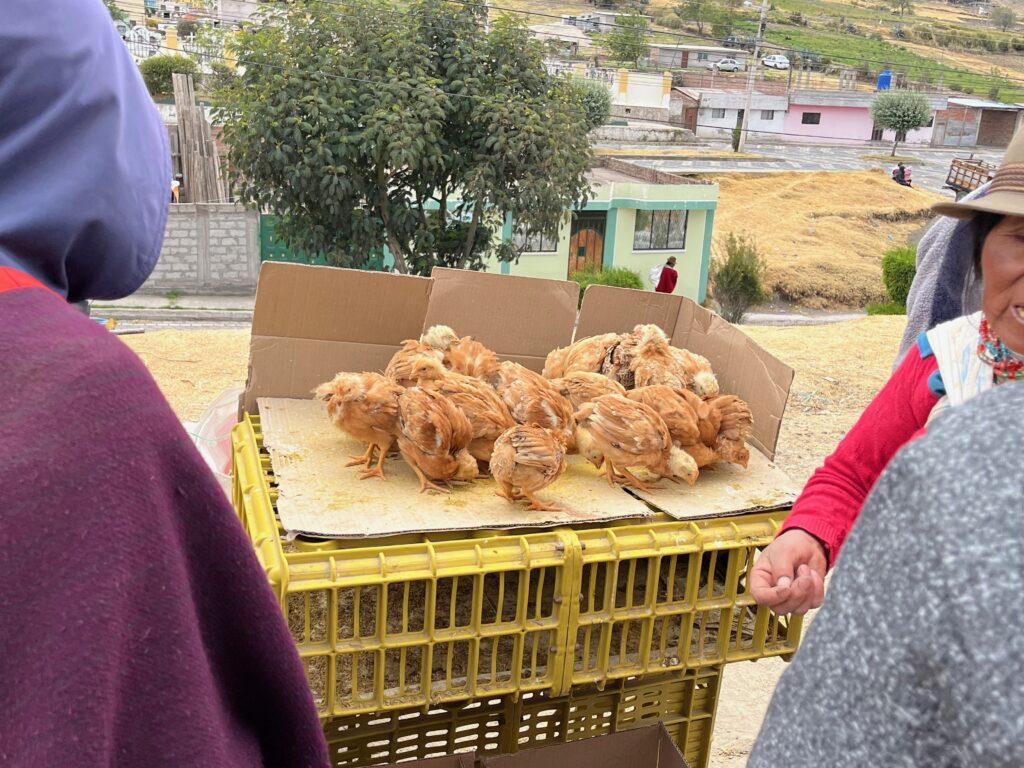
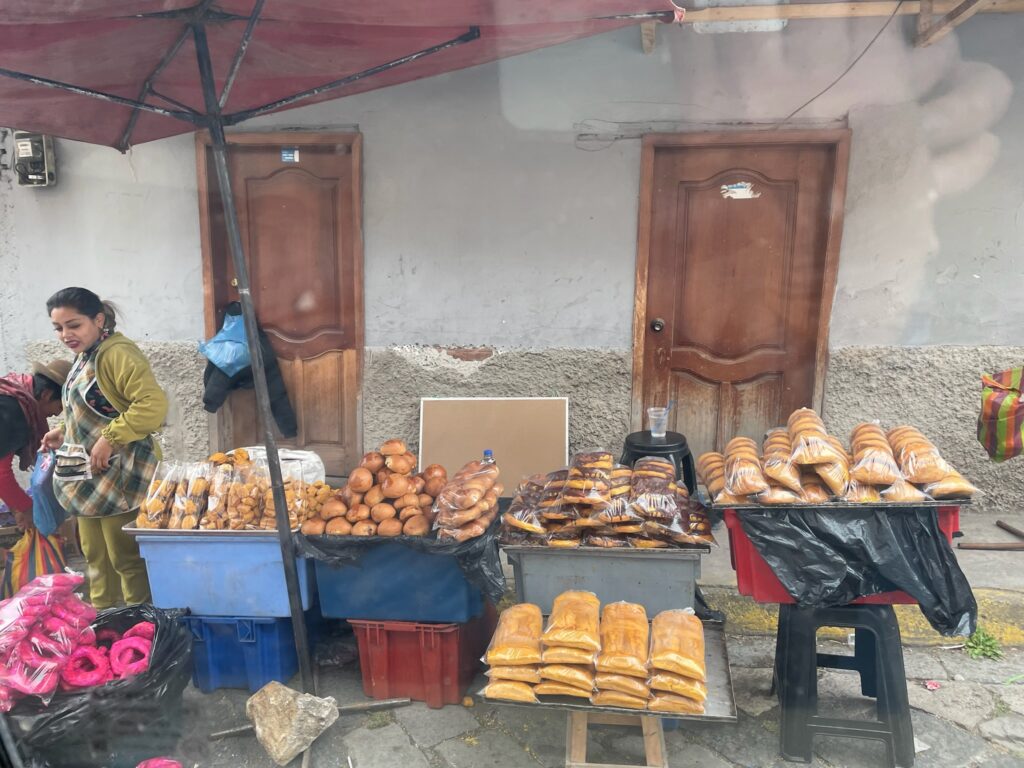
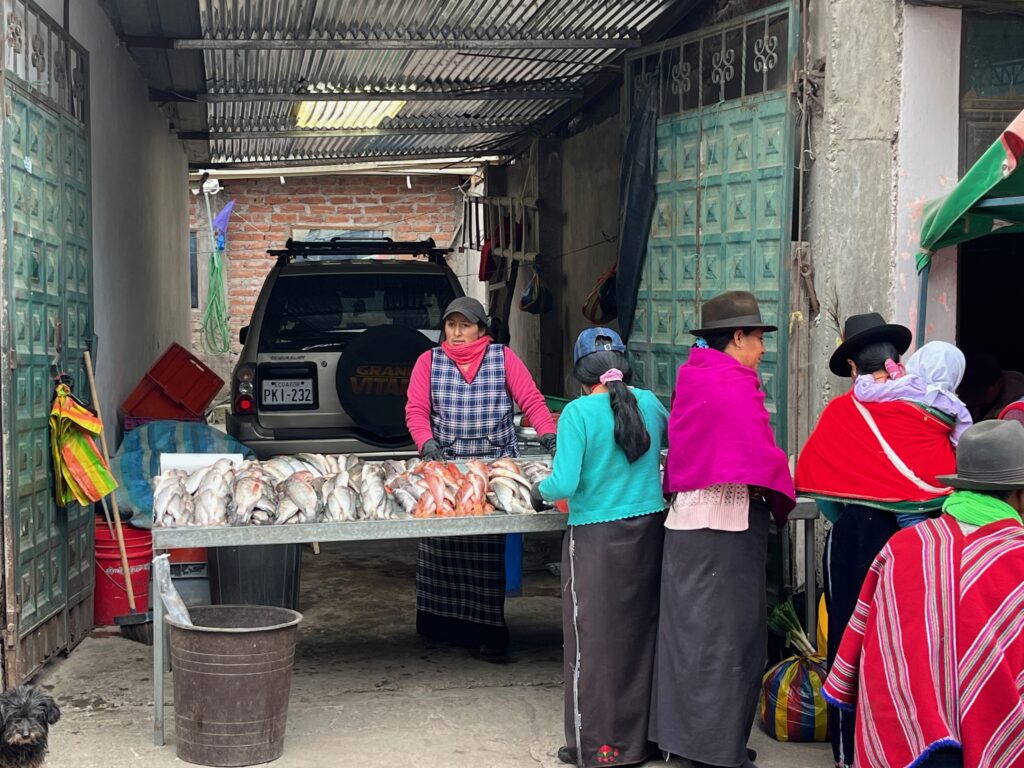
After checking out a few areas of the markets, we returned to the car to drive the remaining 2.5 – 3 hours to Ingapirca. Upon arrival at Ingapirca, we checked into our hotel for the night, the Ingapirca Posada. The Ingapirca Posada is the only quality lodging near the Inca Ingapirca ruins. It is a small, boutique hotel with a beautiful lodge and rooms located in adjacent two-story buildings. The rooms were not quite as nice as those in our prior lodgings, but the meals were spectacular in flavor, presentation, and quantity!
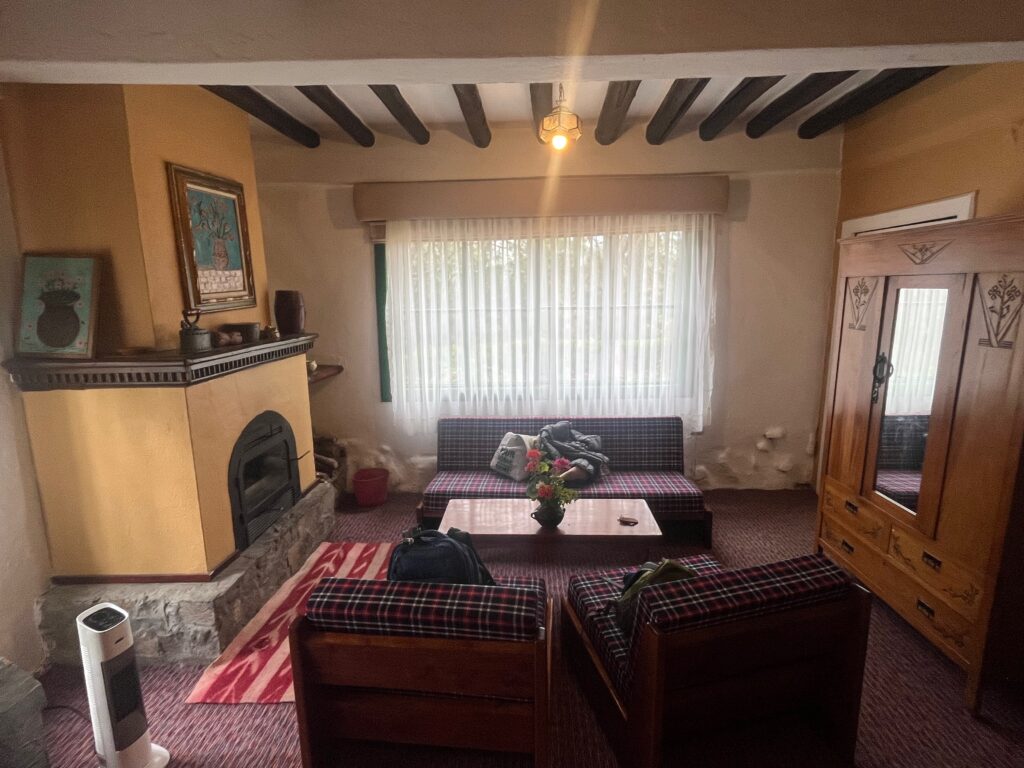
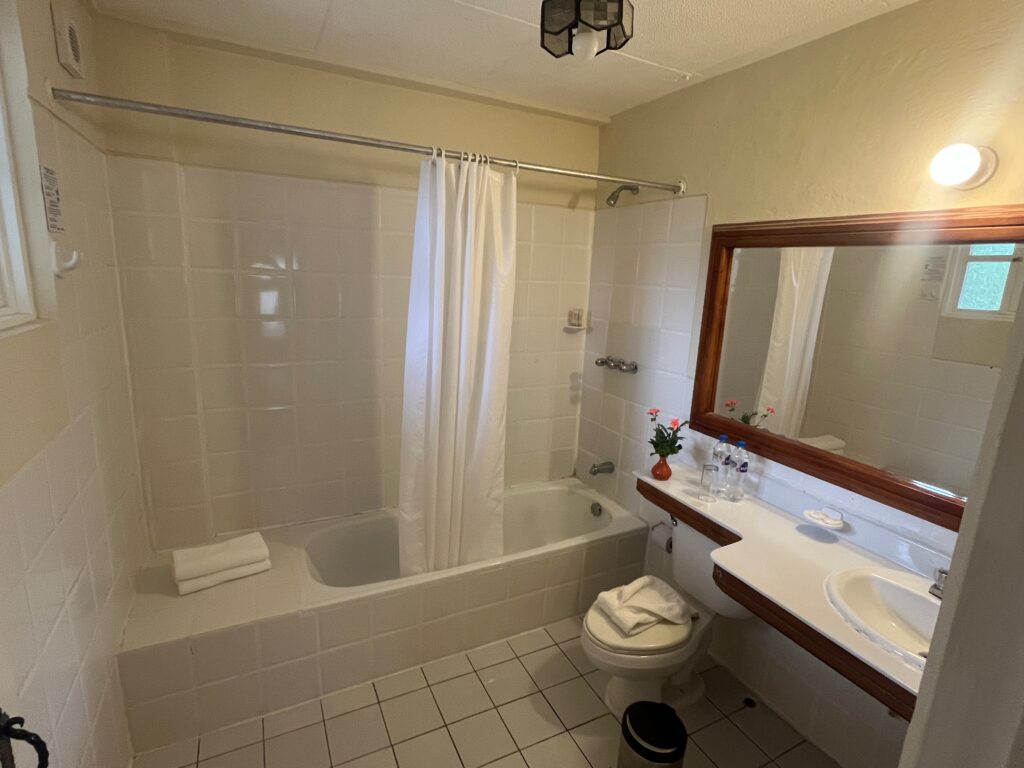
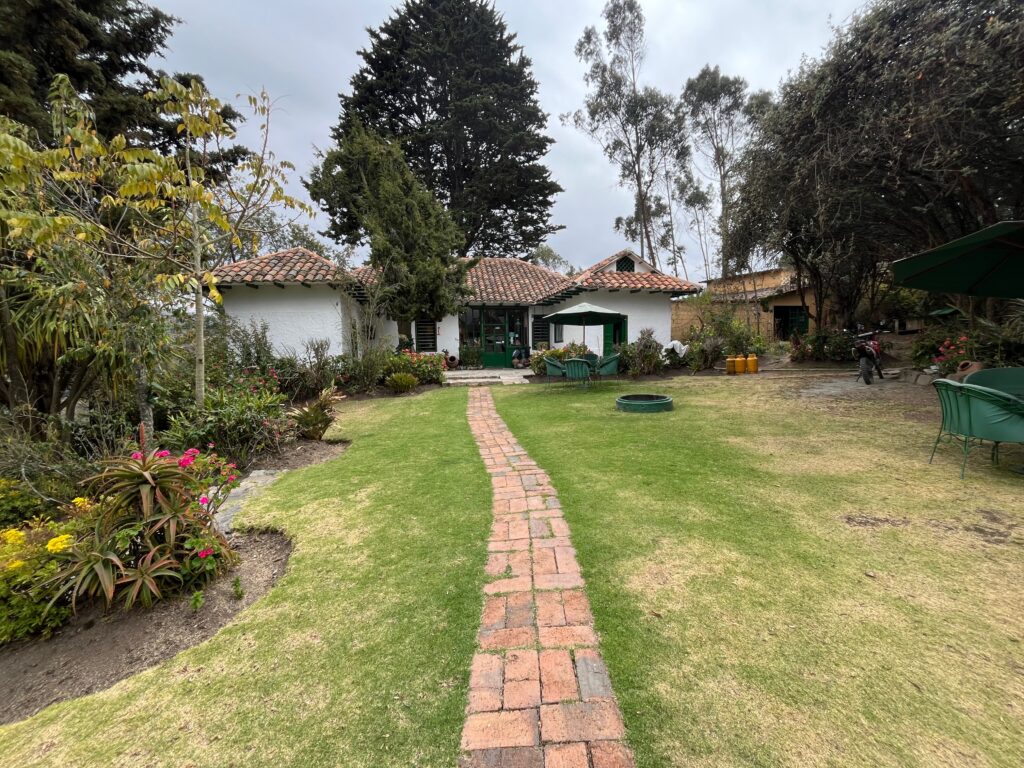
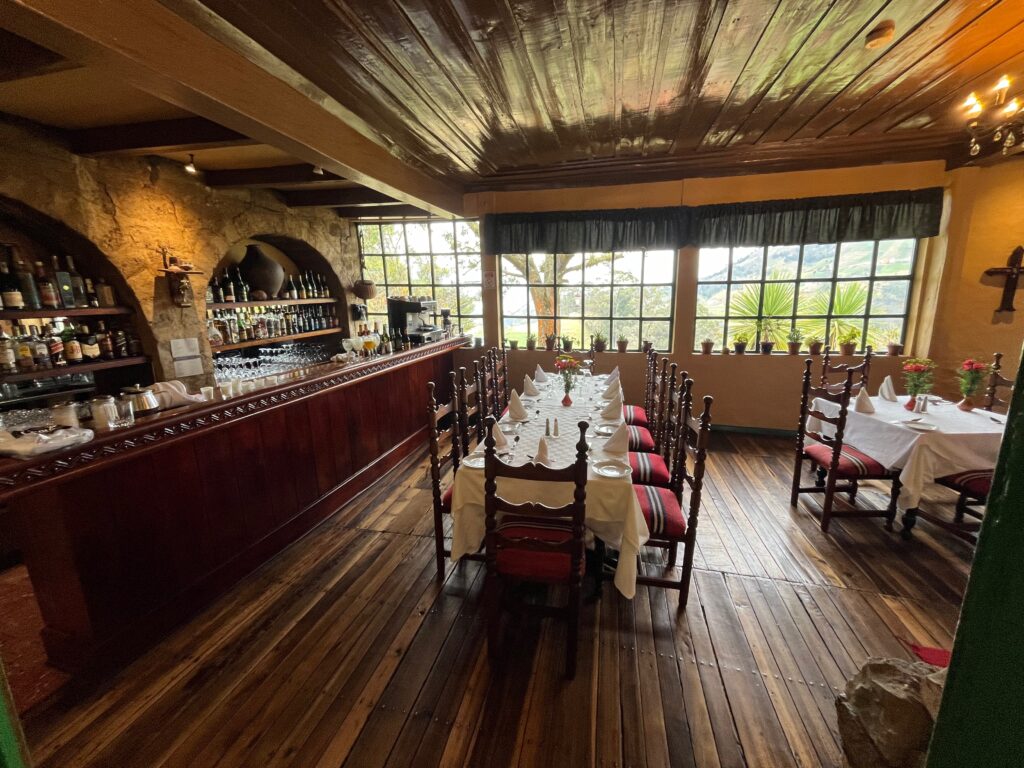
Before having dinner and going to bed, however, we first visited the nearby Ingapirca Ruins, the best and most important Inca archaeological site in Ecuador. Ingapirca, which means “Inca wall” in Kichwa, is Ecuador’s most important set of pre-Columbian ruins, located 50 miles north of Cuenca. The Inca sun temple perched on its hill with panoramic views of the surrounding countryside is an impressive sight. The Cañari lived here long before the Incas arrived and are famous for their determined resistance of the invasion, successfully defending their territory against the army of the Incas. Interestingly, following their eventual victory, the Inca invaders had enough respect for the Cañari to build a community together, constructing their own Temple of the Sun to complement the existing Temple of the Moon. As well as a ceremonial site, Ingapirca is thought to have had astronomical, political, and administrative functions. At 10,500 feet elevation, Ingapirca’s position overlooking the surrounding valley was of key strategic importance, but its growth was short-lived. The complex is thought to have been destroyed shortly before the Spanish conquest, in a war between the Inca ruler Atahualpa and his brother Huáscar in 1532. The Spanish later ransacked the site, and much of the stonework was used to build churches and haciendas in Cuenca and beyond. The site lay abandoned until the Ecuadorian government began a restoration process in the mid-20th century, opening the site to the public in 1966. The highlight of the complex is the elliptical Temple of the Sun, the only one of its kind in the Incan empire, built on top of an ancient Cañari ceremonial rock. It is thought that, in addition to being a site for rituals, the structure was used to determine the agricultural and religious calendars. The most important event was Inti Raymi, the Festival of the Sun, which is still celebrated at Ingapirca every June. The mind-boggling stonework that is the hallmark of Inca construction can be fully appreciated here, with volcanic rocks hand-carved so precisely that mortar was unnecessary. Another highlight is a remaining fragment of the Inca road, a network that once connected religious and administrative centers across Ecuador, Peru, Colombia, Bolivia, Argentina, and Chile. (My source for the Ingapirca history and some of the text in this paragraph can be found here)
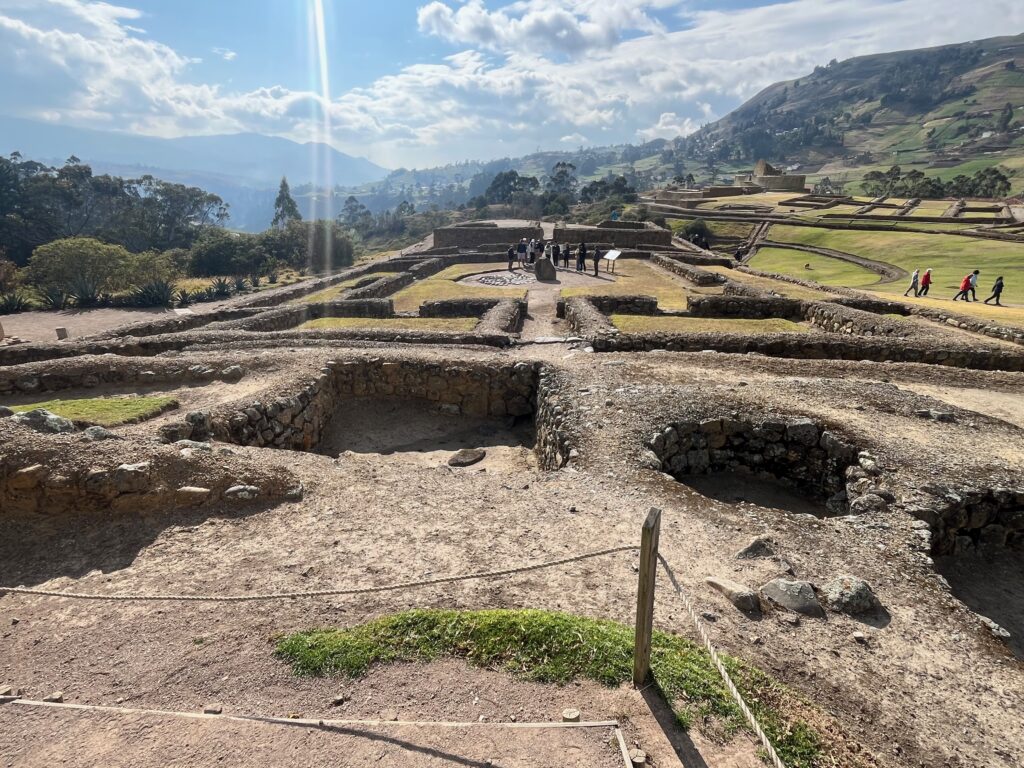
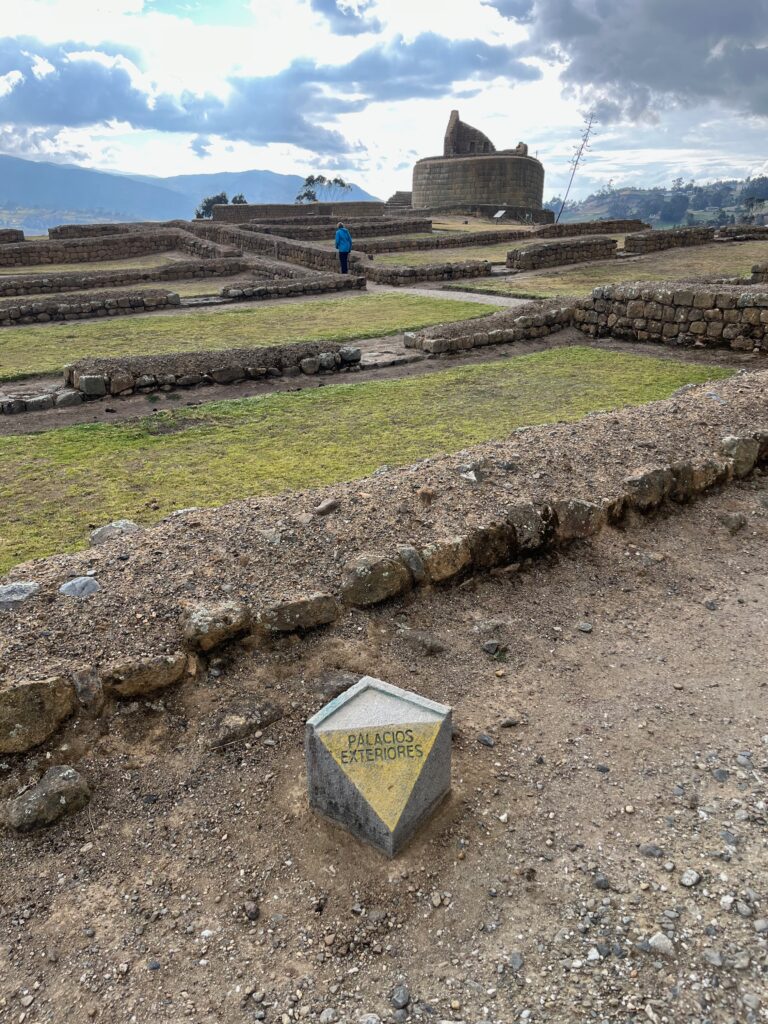
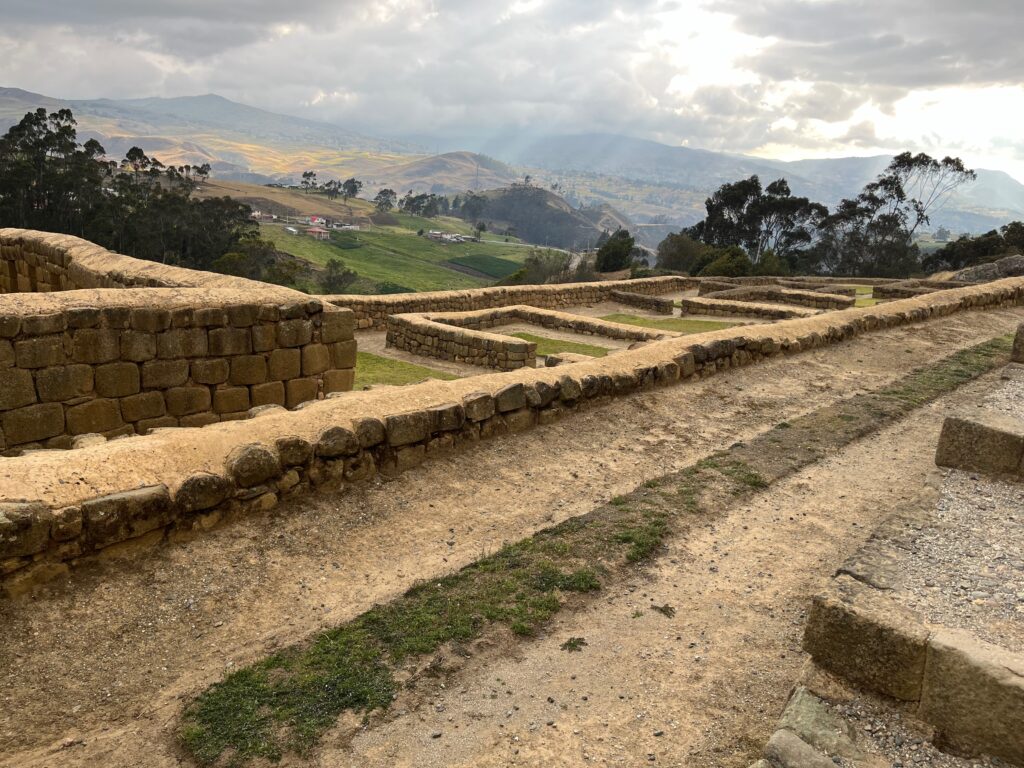
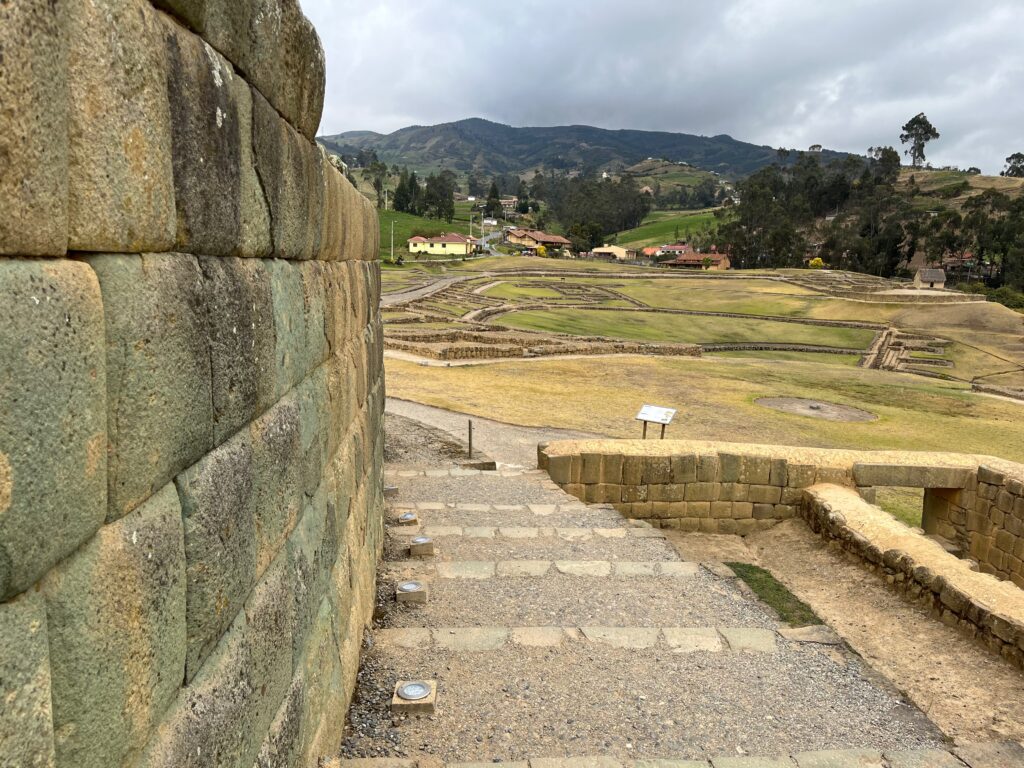
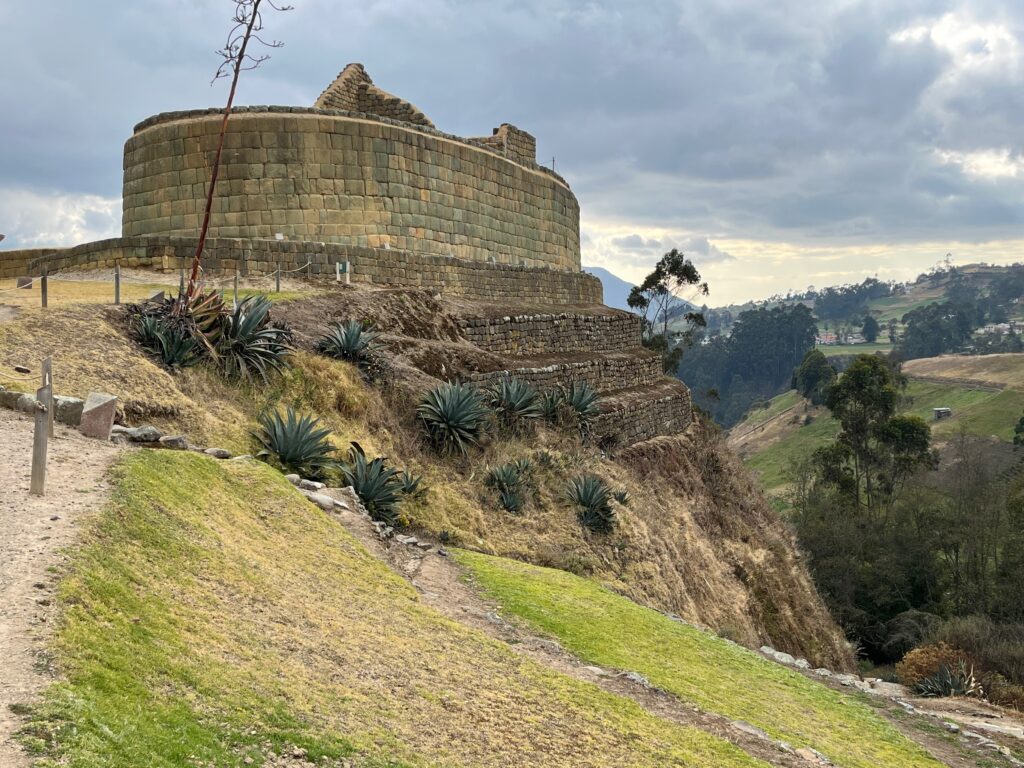
Friday, September 20
After breakfast, we got in the car for the two hour drive to Cuenca. Cueca is known as the “Athens of Ecuador” because of the numerous artists, novelists, poets, and others born in the city. Our first stop was to the gallery of Eduardo Vega, a well known artist who primarily works in clays and tiles. His work was beautiful and has been featured in various spots around the world. We next stopped to enjoy a panoramic view of the city from the vantage point of Turi. From Turi we could see the famous cathedral and the four rivers that divide various parts of the city.
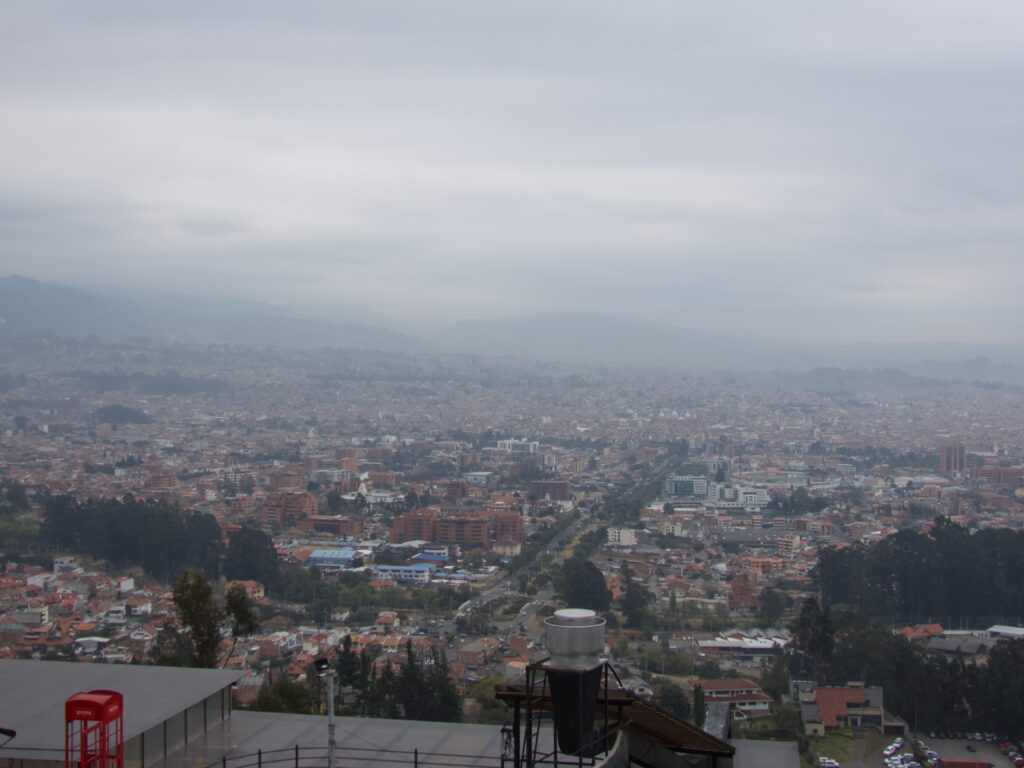
We then left Turi to drove down to the old city to find our hotel for the night, the Itza Internacional Hotel Boutique. The hotel was built between 1930 and 1935 by the Italian architect Alfonso Durini. The hotel is in the perfect location to tour the city as it is located only one block from the main square of the old city and from the cathedral. Although we arrived before check-in, our room was ready so we checked in and left our bags in the room.
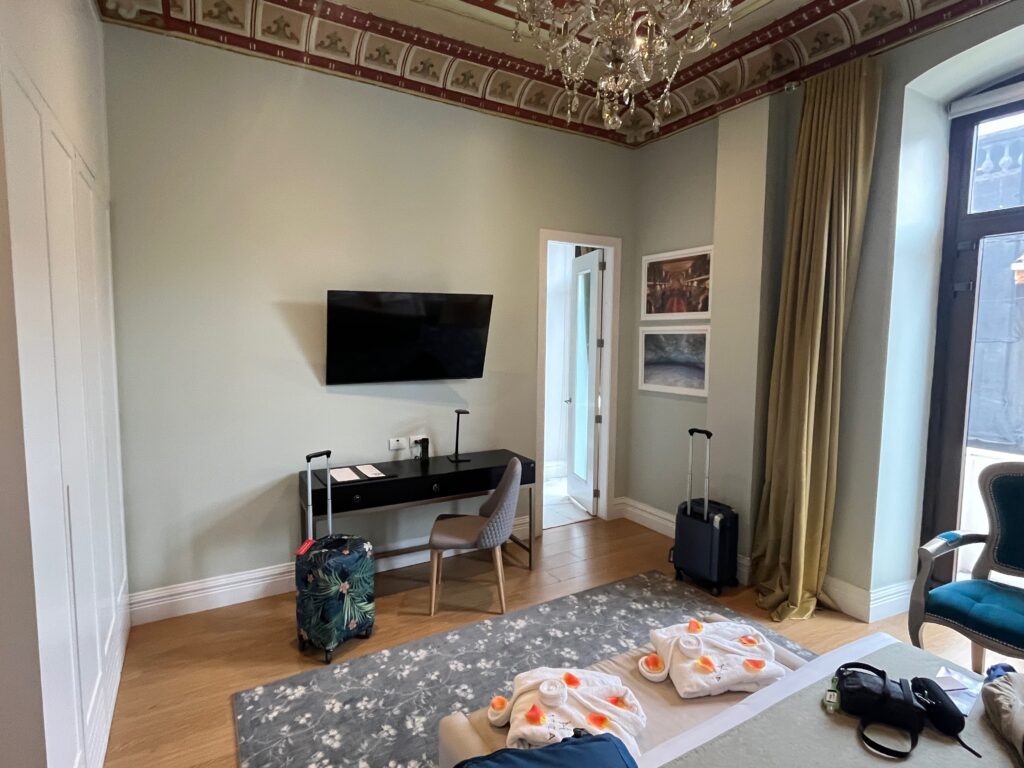
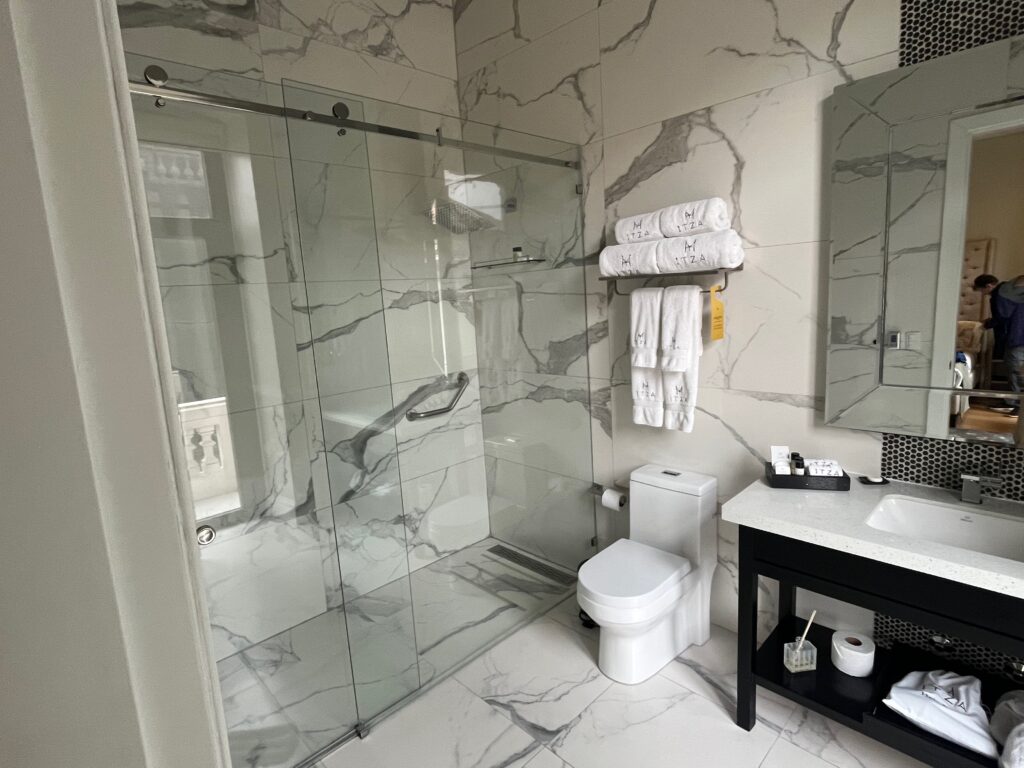
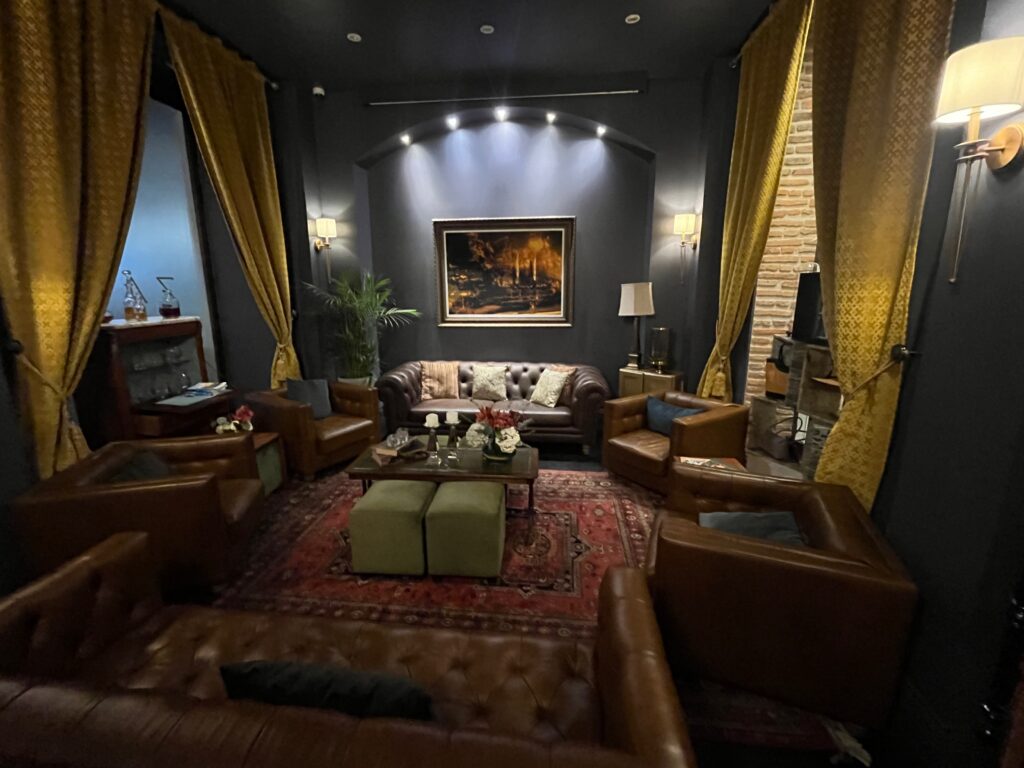
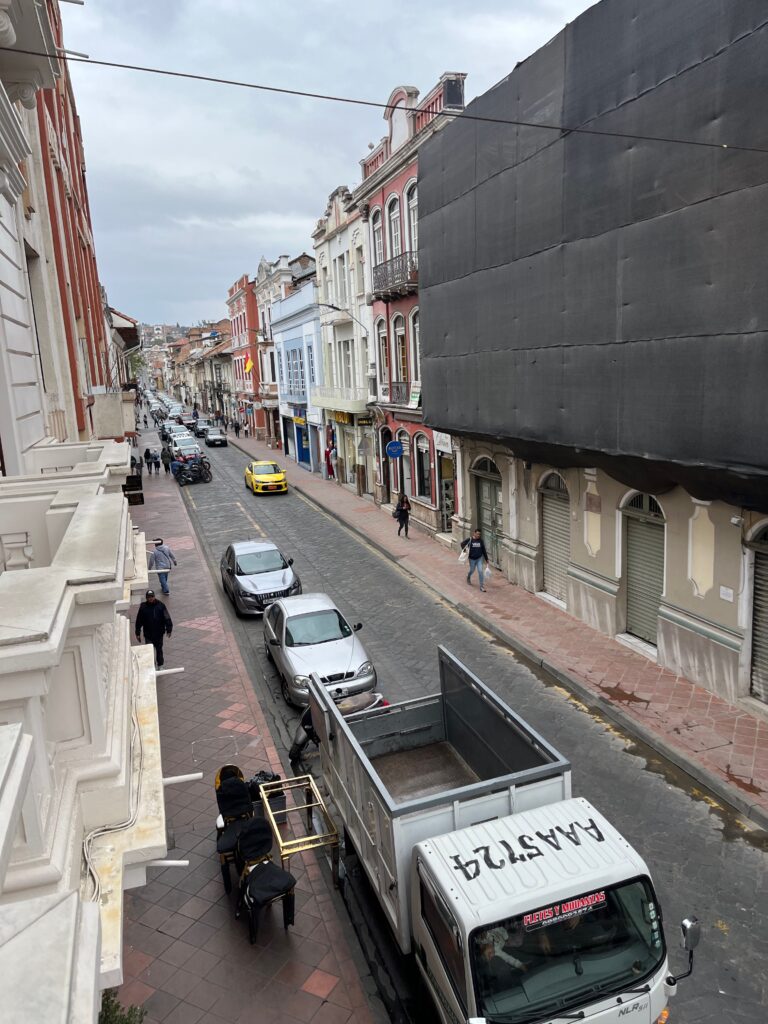
We then headed out to walk around the old city to learn about the culture and history of the city. On our journey we walked through magnificent churches, beautiful old buildings with wrought iron balconies and carved wooden doors, flower and handicrafts markets, art galleries, workshops and all the wonders that Cuenca, with its colonial style and pleasant atmosphere, had to offer. We stopped for lunch at a Restaurante El Jardin, clearly a favorite among local business people. The restaurant was beautiful with a hummingbird theme, freshly cut flowers, and a great view over the Tomebamba River.
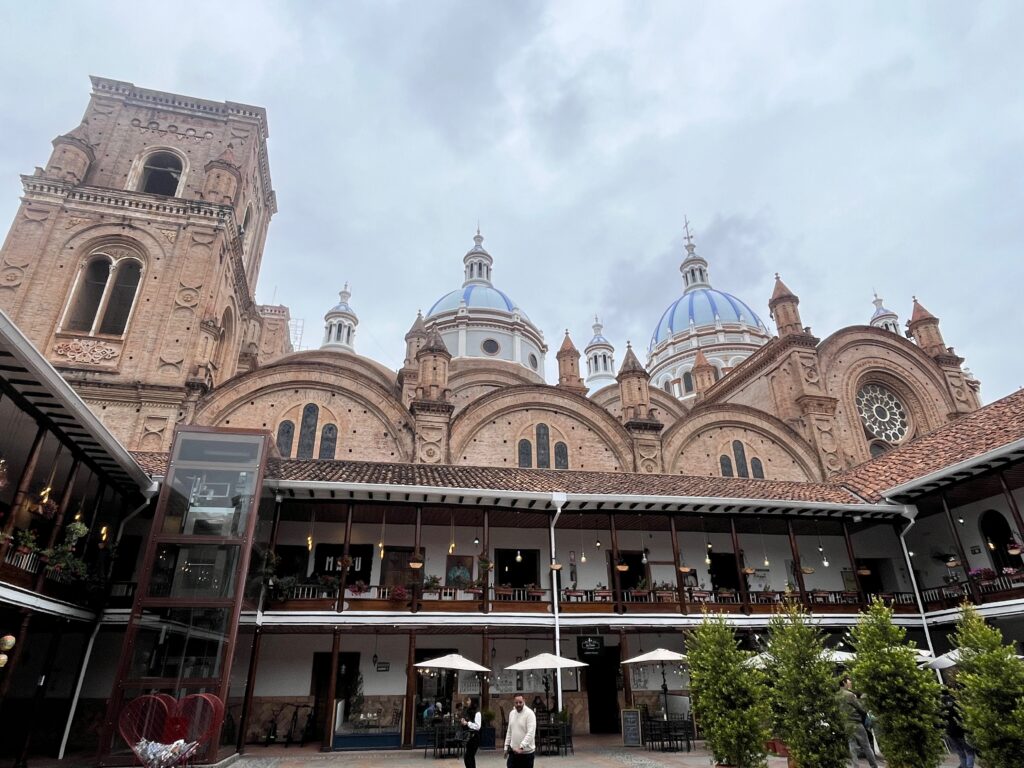

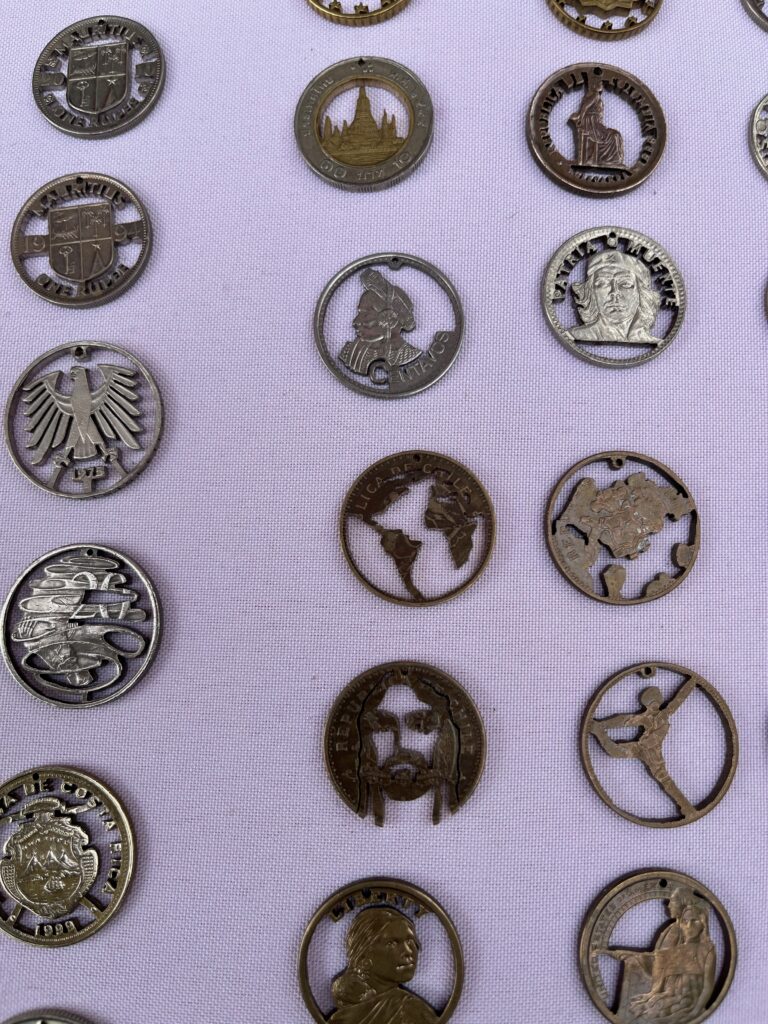
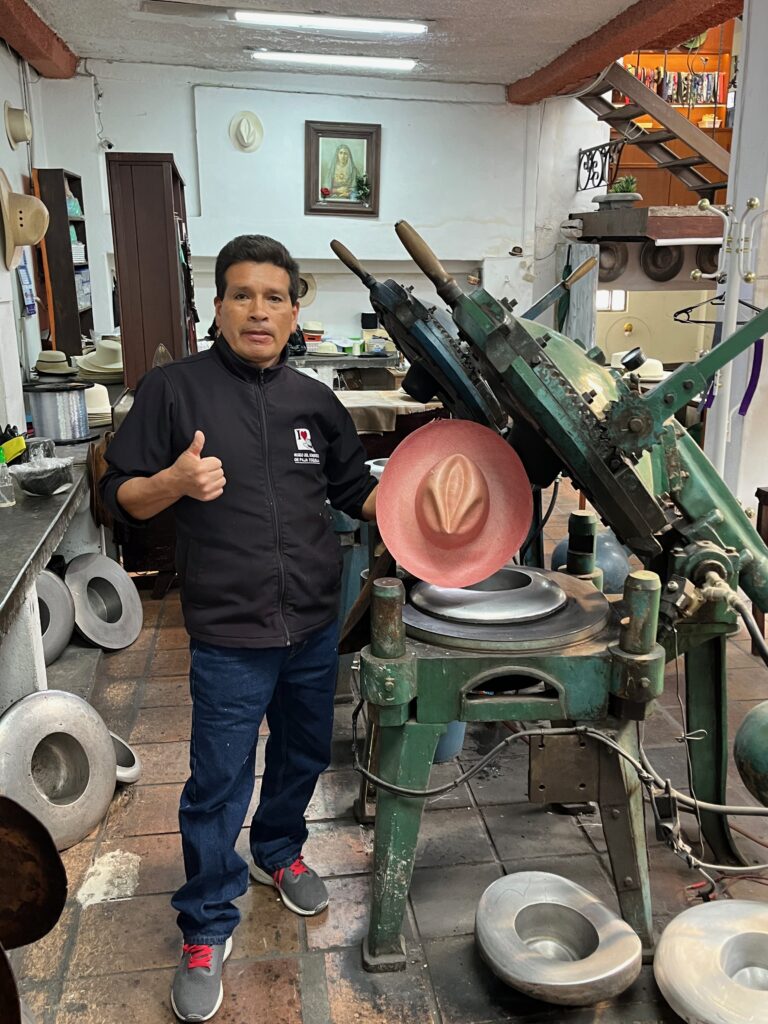
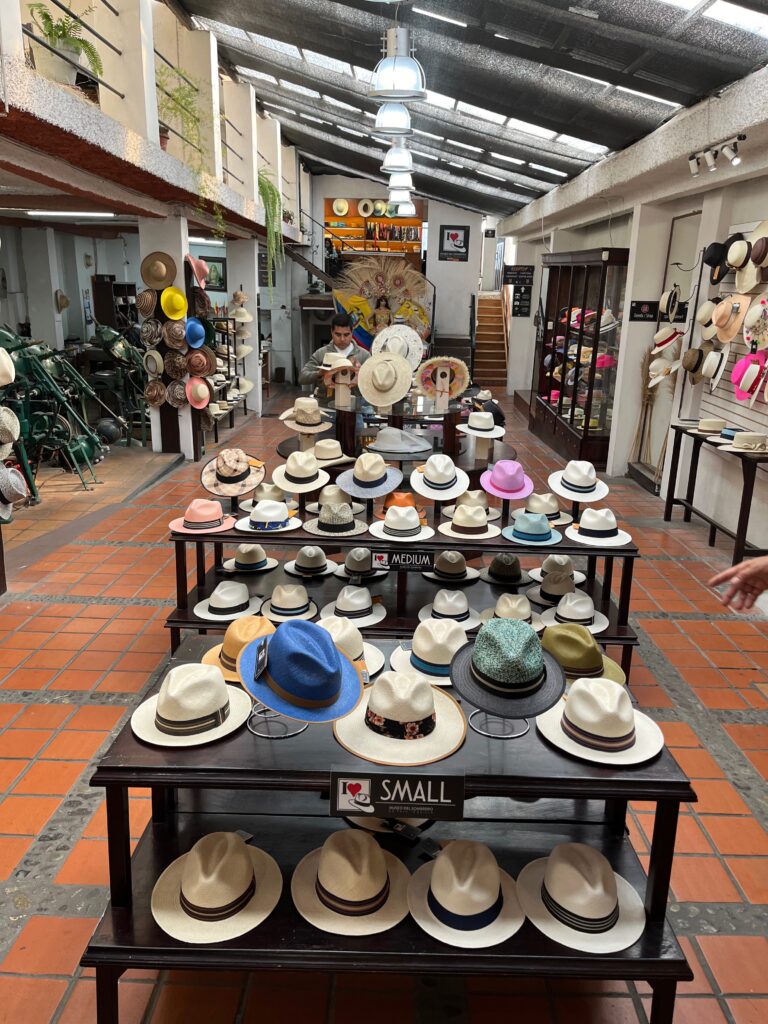
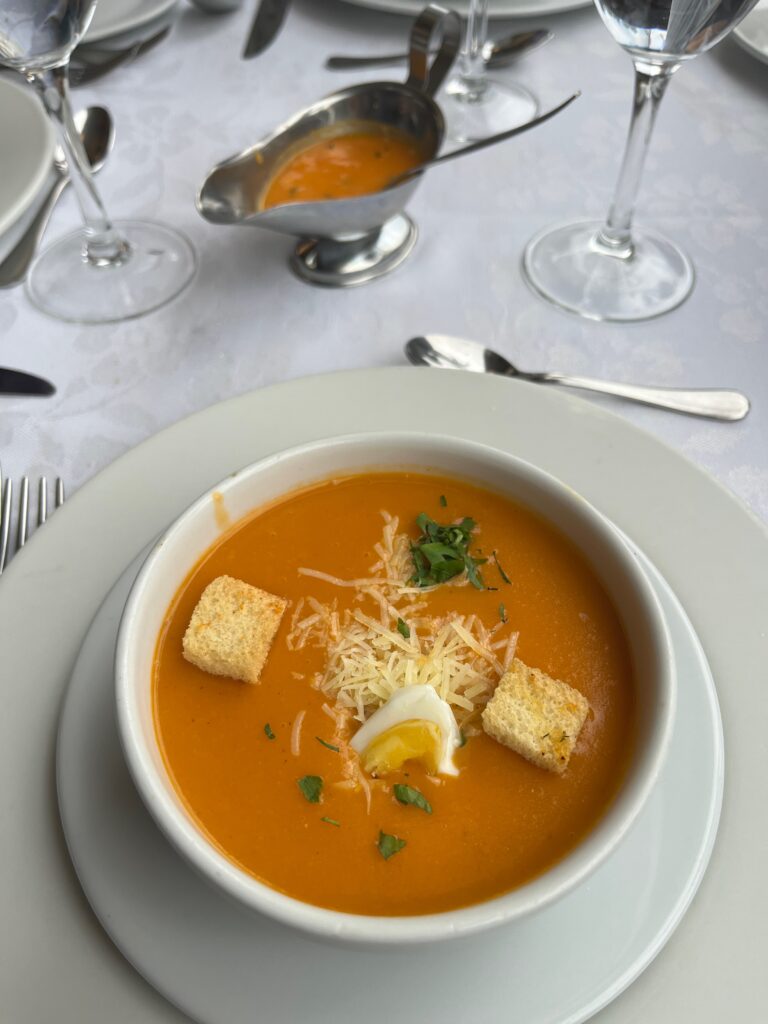

One notable interaction we had with a local artisan was with a friend of Juan, our guide. The gentleman’s name was Pluma (meaning “feather”). Pluma’s craft was to use a hand scroll saw to cut coins into art, often used for necklaces. Pluma was a delightful man with an infectious personality. We bought several coins from him, and left him with a dozen coins we had brought with us. After our discussion with Pluma, we walked down by the Tomebamba River, returned to the old town, found a sport shop so I could buy a slightly bigger backpack for my carry-on bag, and made our way back to the hotel. After a little break, Paula and I went to the roof-top restaurant at the hotel to enjoy the view over the city, and to have shrimp ceviche and an appetizer plate consisting of two pork sliders, two corn-based dishes common to Ecuador, and three cheese empanadas. We then retired for the evening.
Saturday, September 21
This morning we woke up and packed our bags, ate a delightful breakfast (including, but not limited to coffee, juice, plantains, waffles, fruit, and beef), and headed off with Juan to explore more of Cuenca.
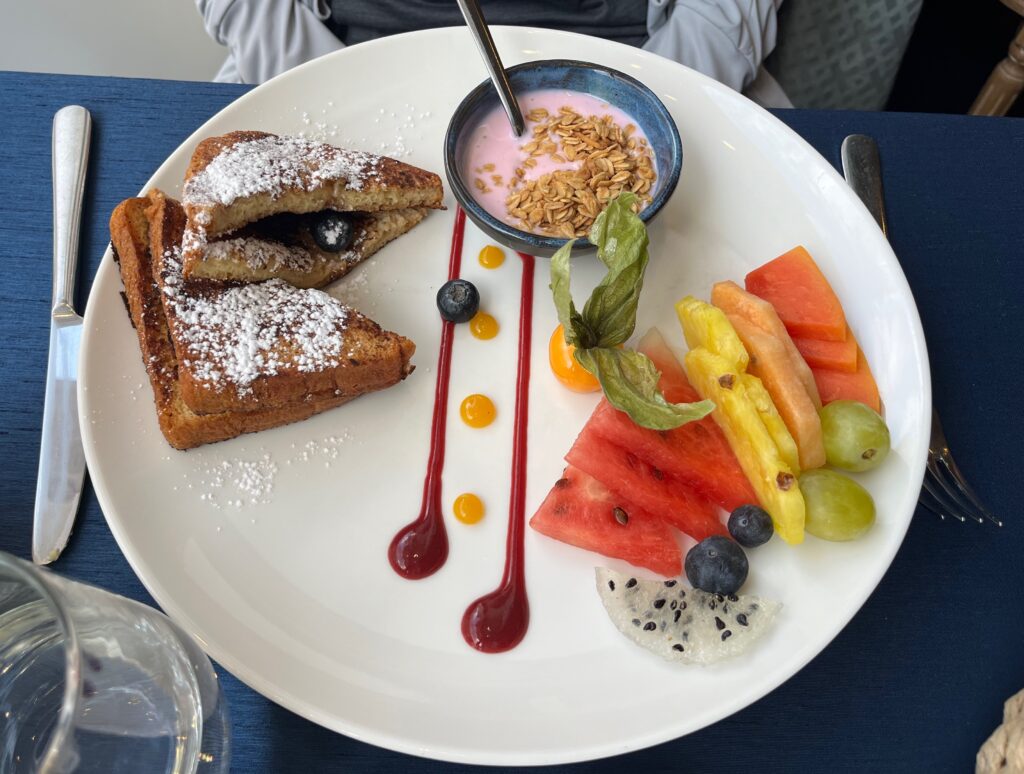
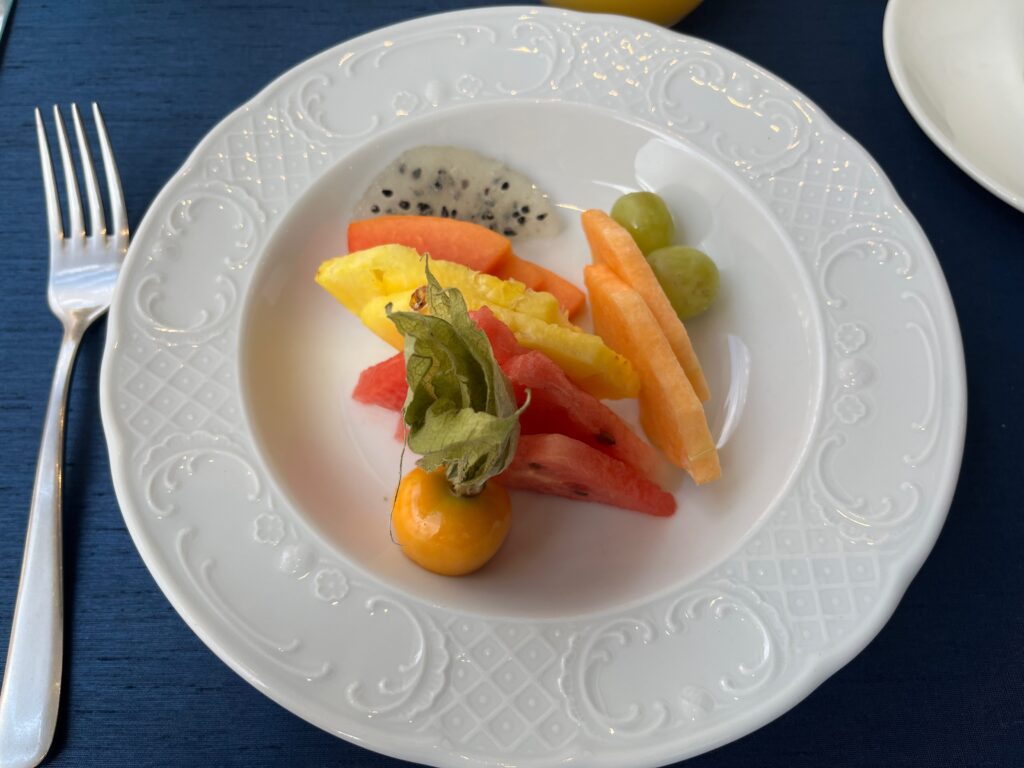
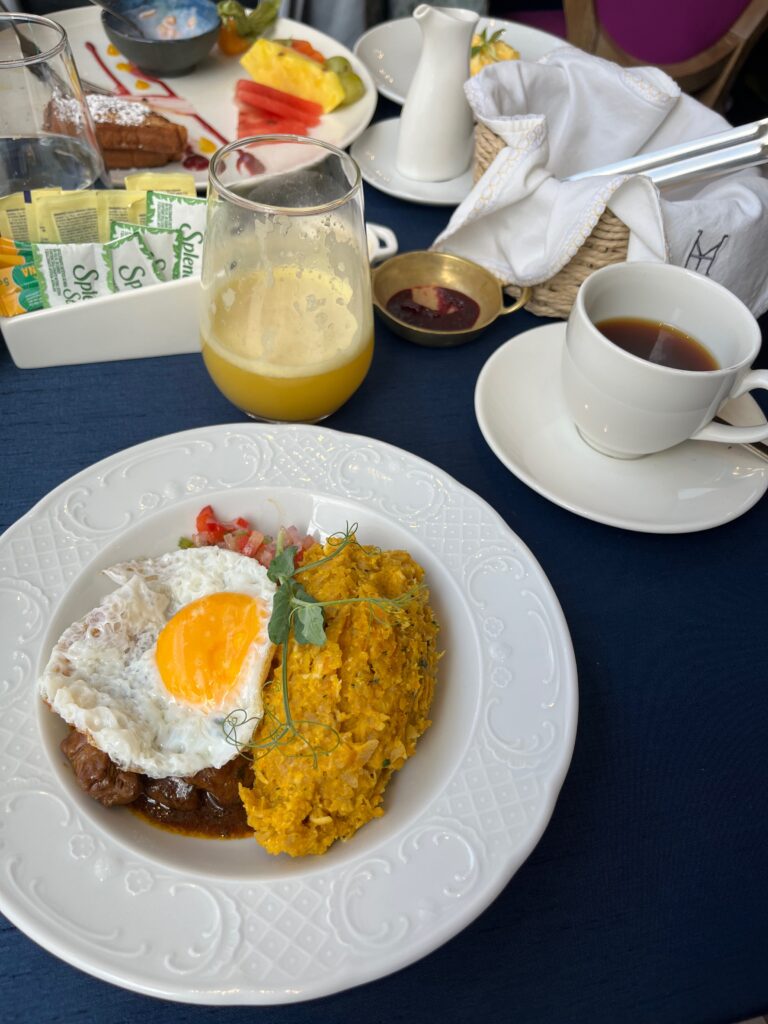
We delayed seeing the cathedral as a mass was in session so instead headed off to the Museo Pumapungo. On our way to the museum, Juan saw yet another friend, this time Julio Machado. While Julio is an Italian-trained jewelry maker, his passion is hummingbirds! Not only does Julio’s work, whether paintings, painted copper hummingbirds, or jewelry, relect the beauty of hummingbirds, but it also captures the importance of the bird to Inca traditions. Specifically, the Inca believed that the hummingbird was a messenger from heaven. The condor, which has the position of “king of the skies” conceded its status as the primary spiritual messenger of the “upper world” to the hummingbird. The hummingbird is seen as the key to the next stage of development of human consciousness. Like Pluma, Julio is passionate about his work and has an infectious personality. Julio has exhibited his work in several locations around the world, and has some of his larger copper creations on display including at, for example, a restaurant in Boston.
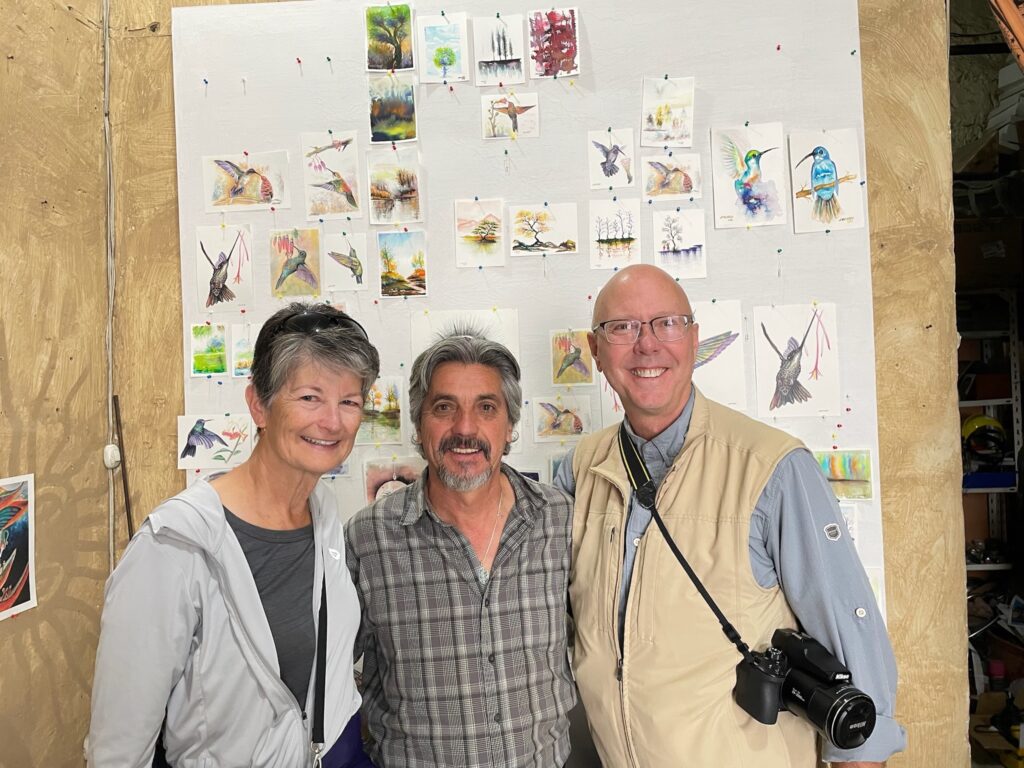
After an extensive discussion with Julio, we continued our trek to the museum. While the museum was closed for renovations, we were able to walk through the Inca ruins behind the museum. The site contains not only remaining building foundations, but also a garden and park built by the Incas.
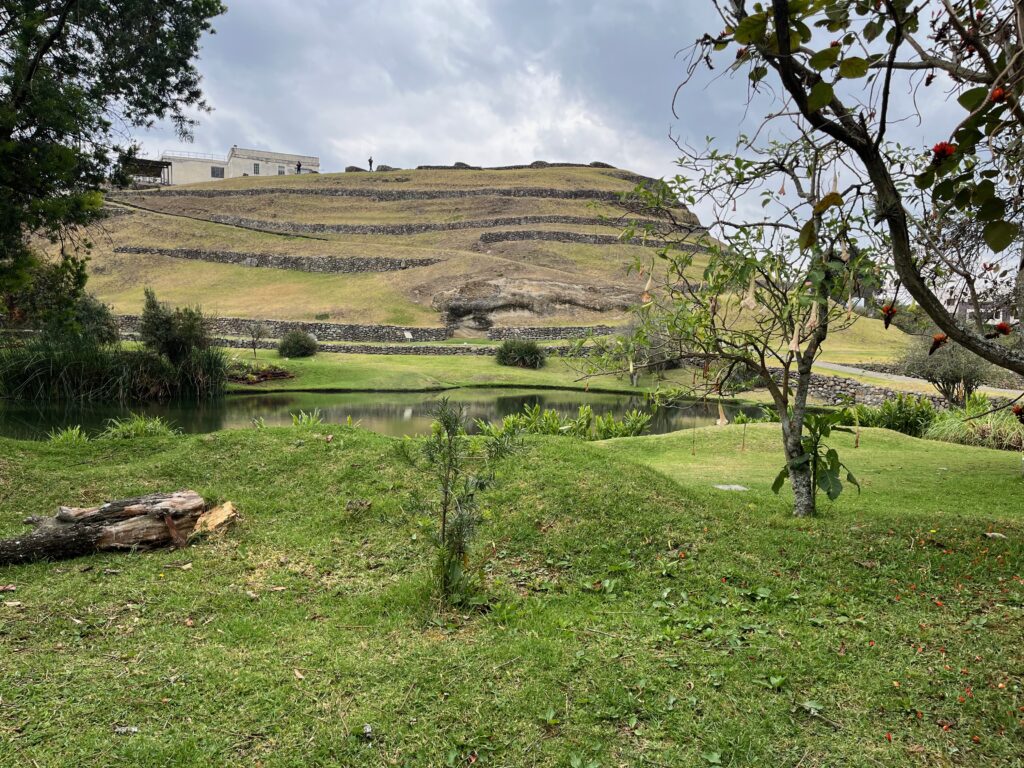
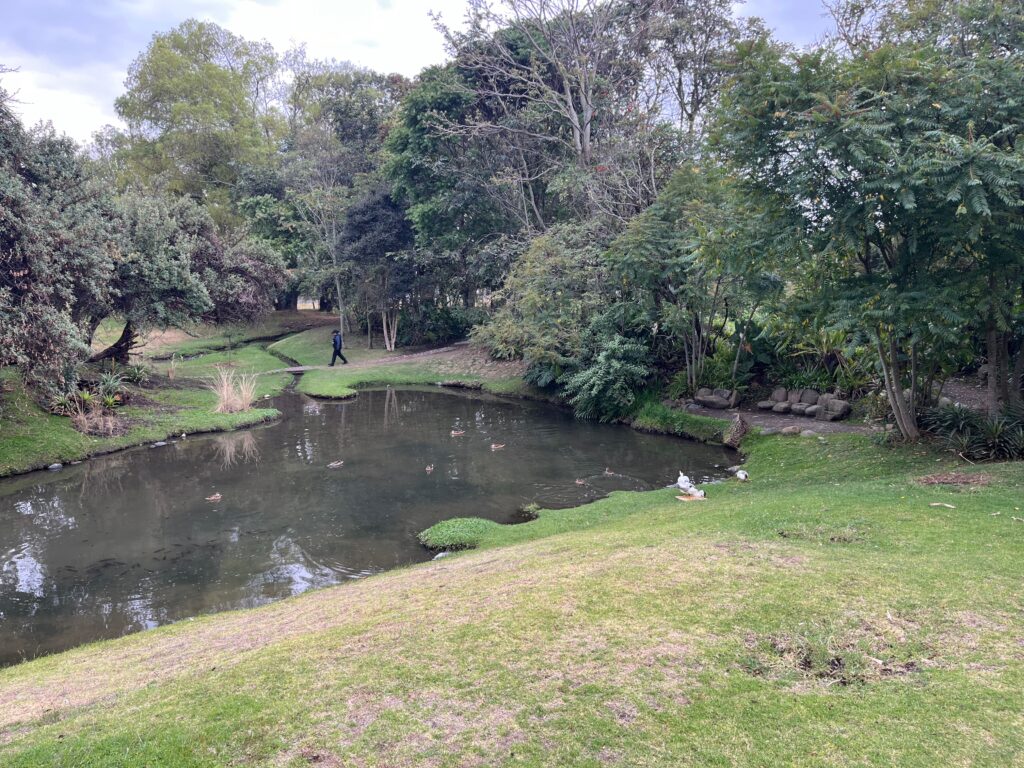
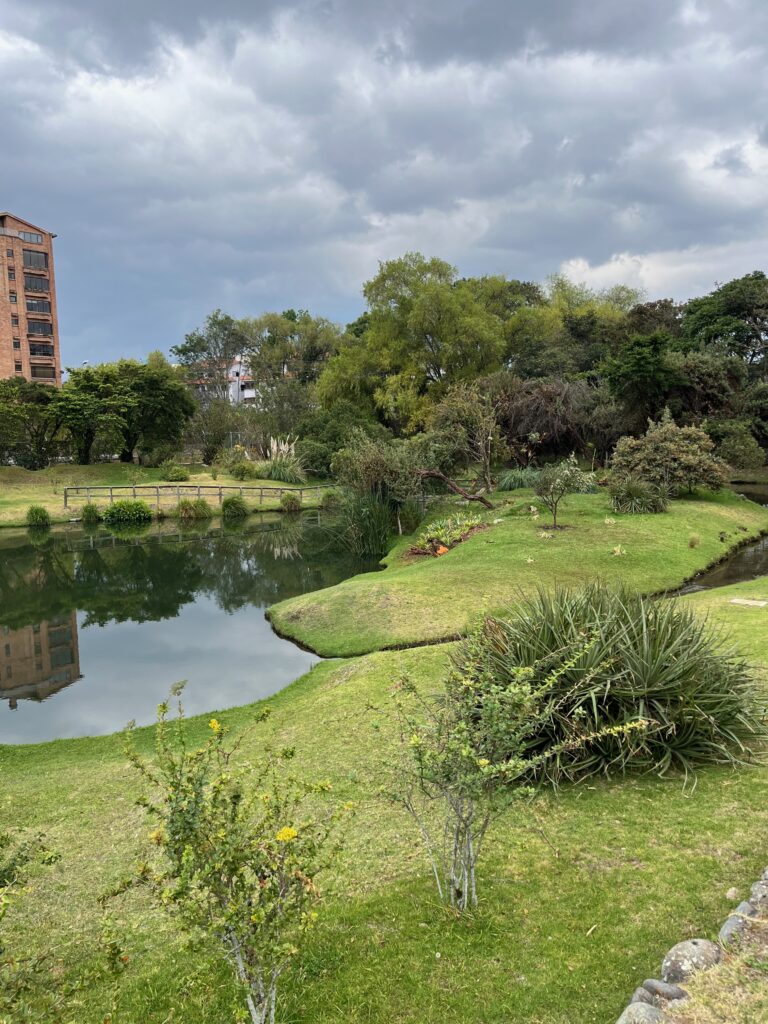
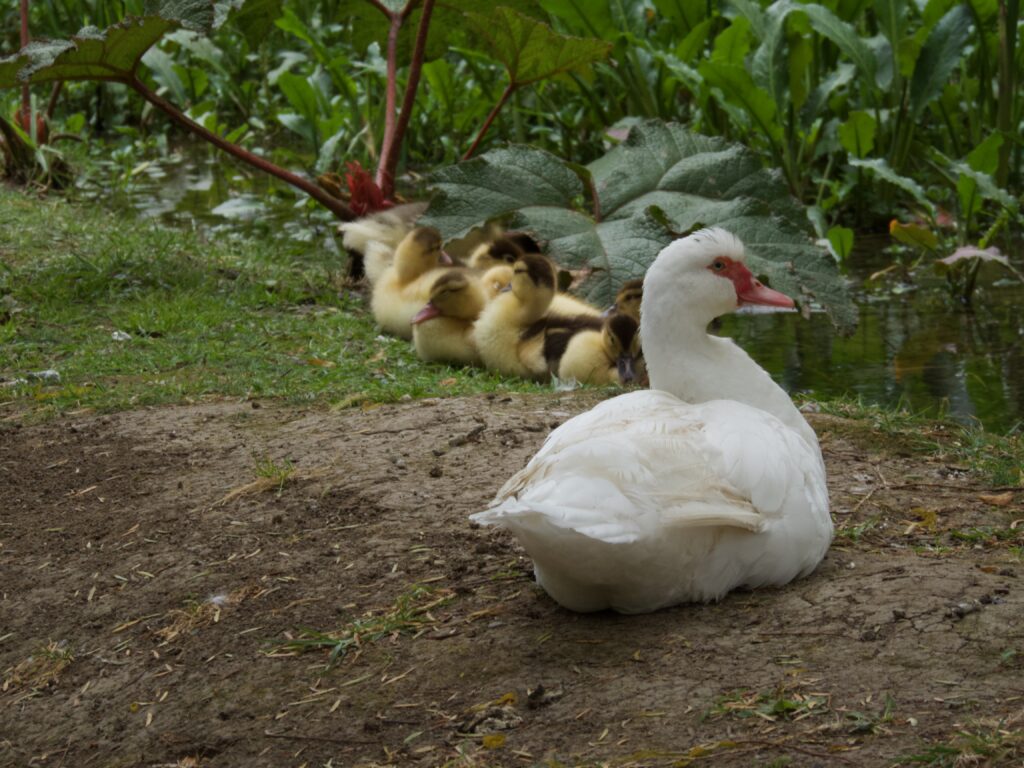
We then back to tour the cathedral, including climbing to the rooftop viewing area. The architecture was beautiful as were the various pieces of artwork within.
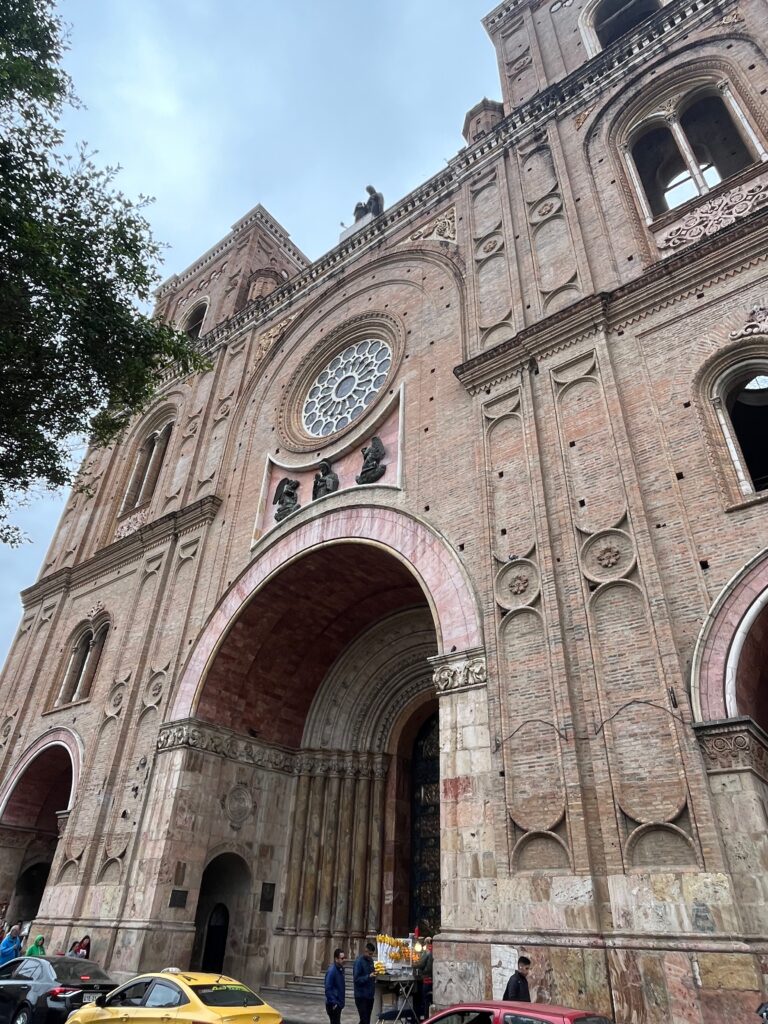
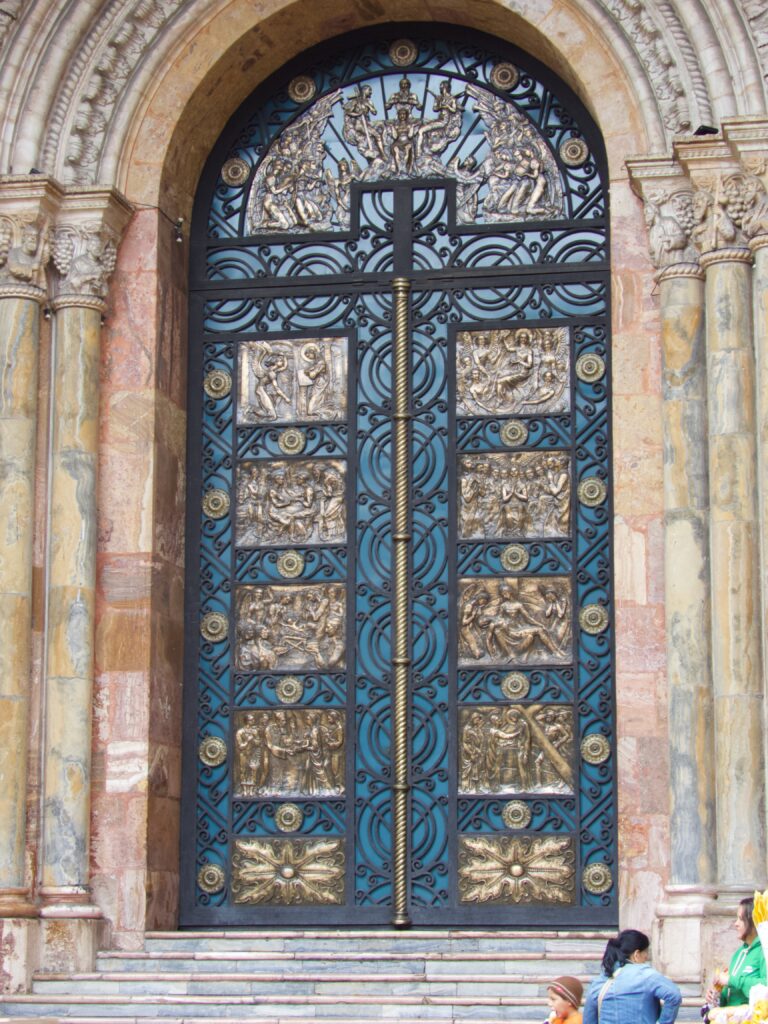
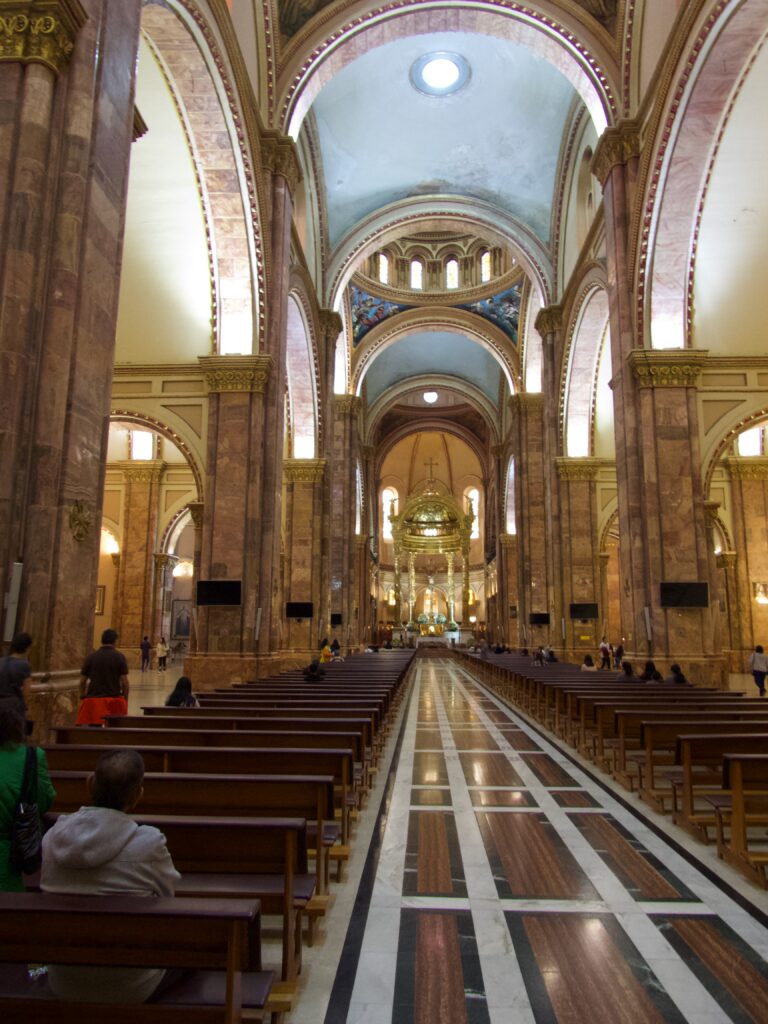
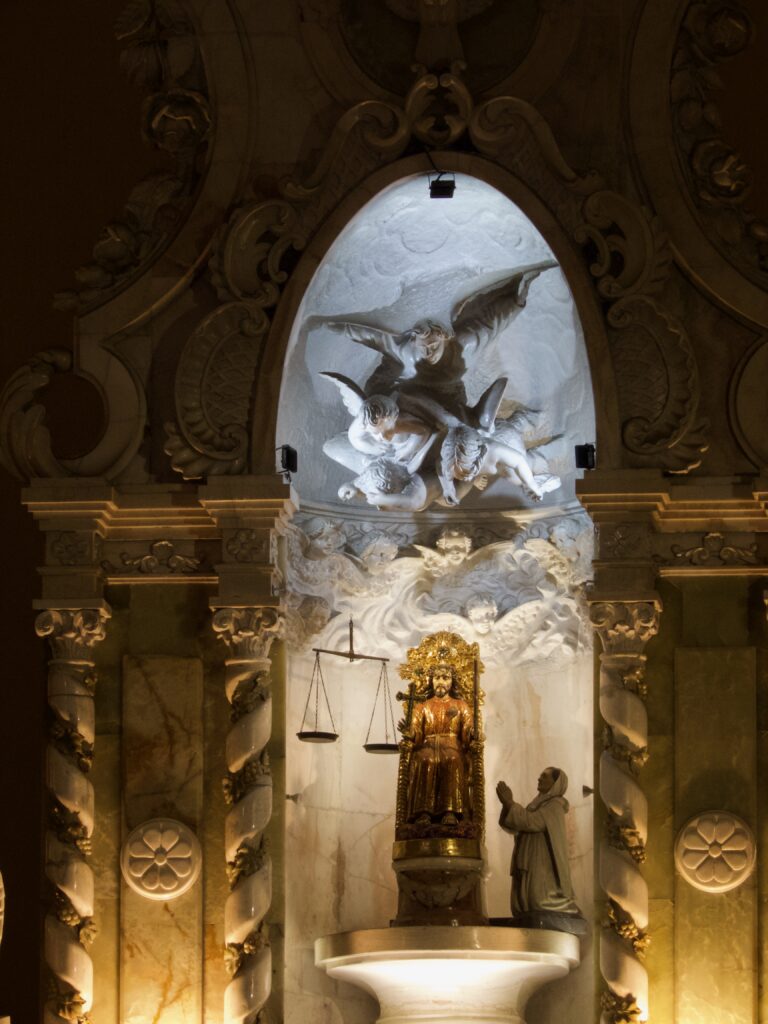
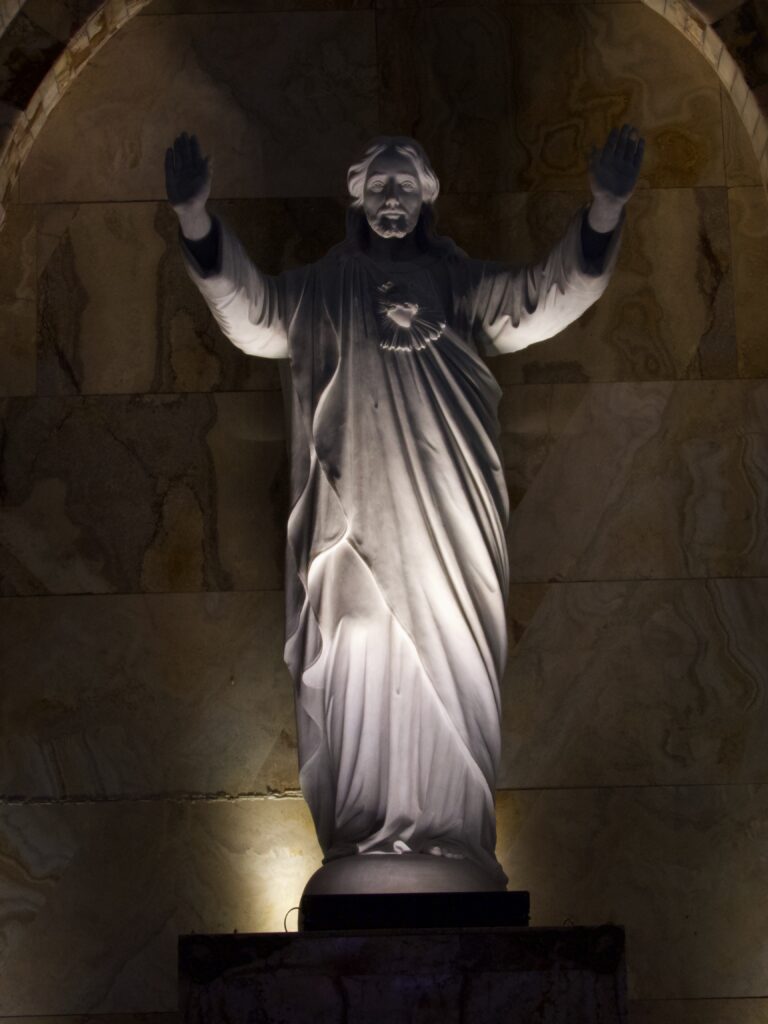
As the time for our flight back to Quito was fast approaching, we returned to the hotel for lunch and got a cab to the airport.
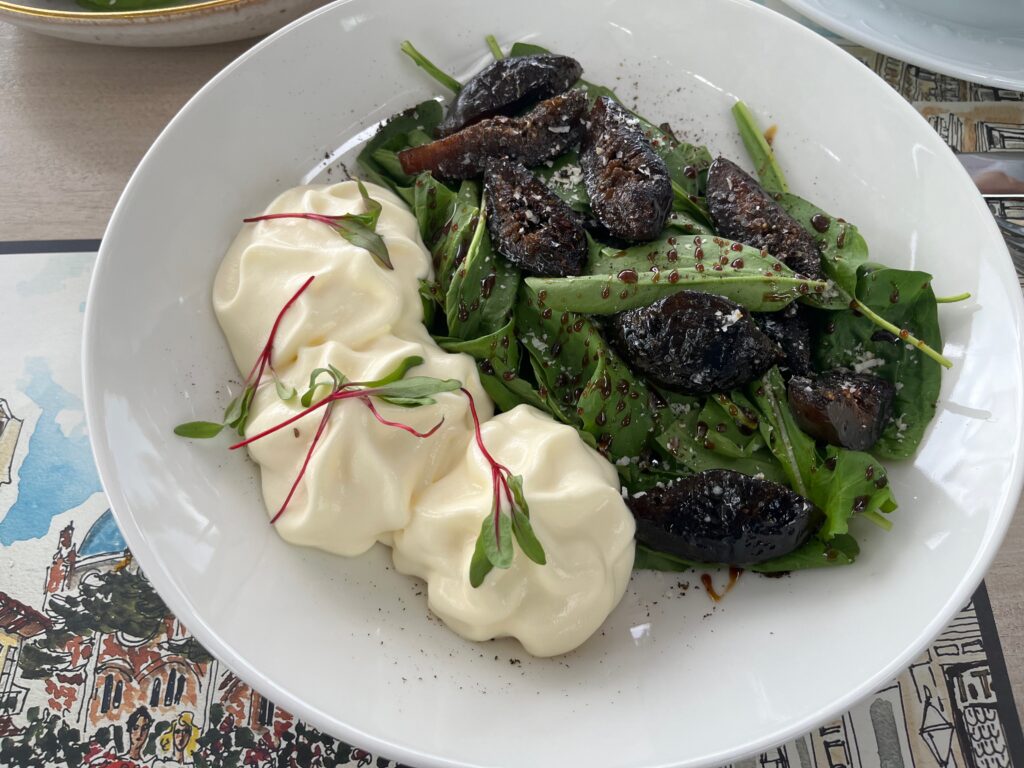
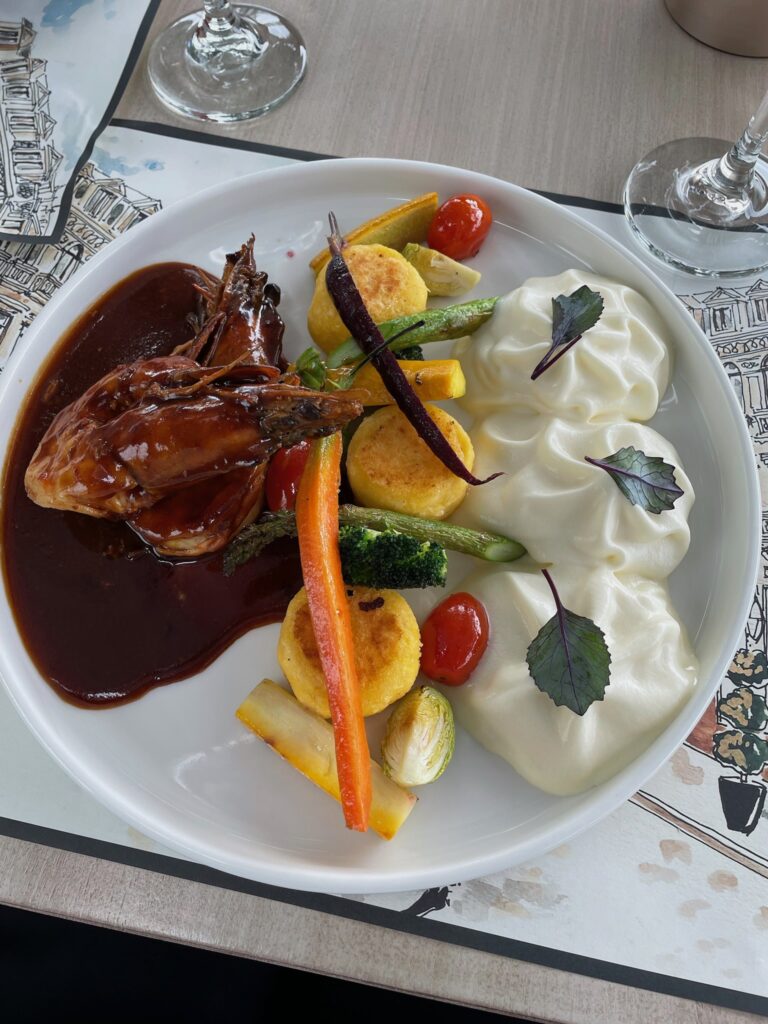
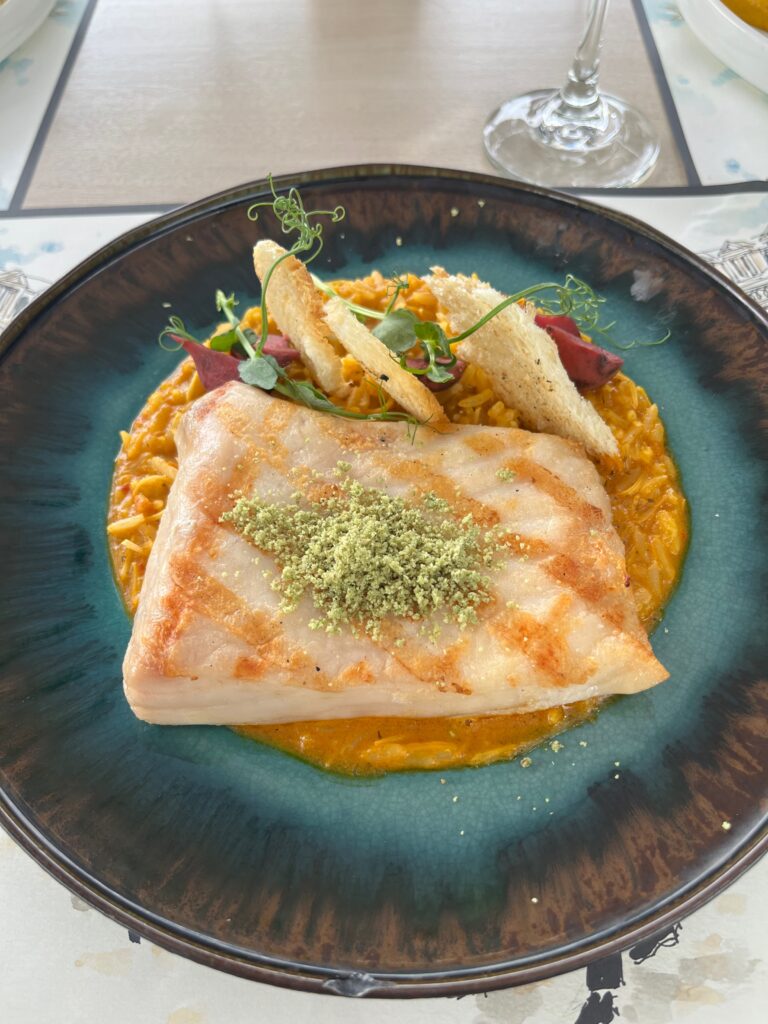
Our flight to Quito was uneventful. On our arrival we were met by Sebastian and transferred to Hotel Cultura Manor for the night. For this stay, our room was called “Renaissance Suite 3, Percephone.” As stated on the descriptive sheet in the room, “[o]ne of the most famous works of Botticelli, “The Spring,” has been reproduced surround the bedroom, siting [sic] area, and bathroom, as wall frescos.”
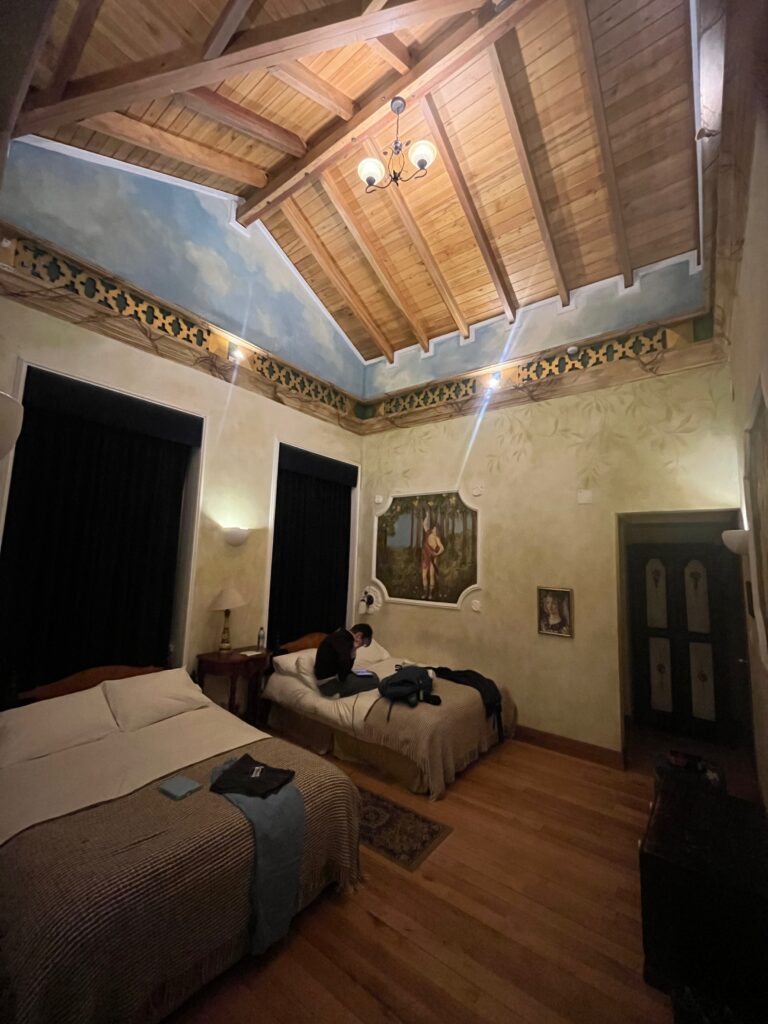
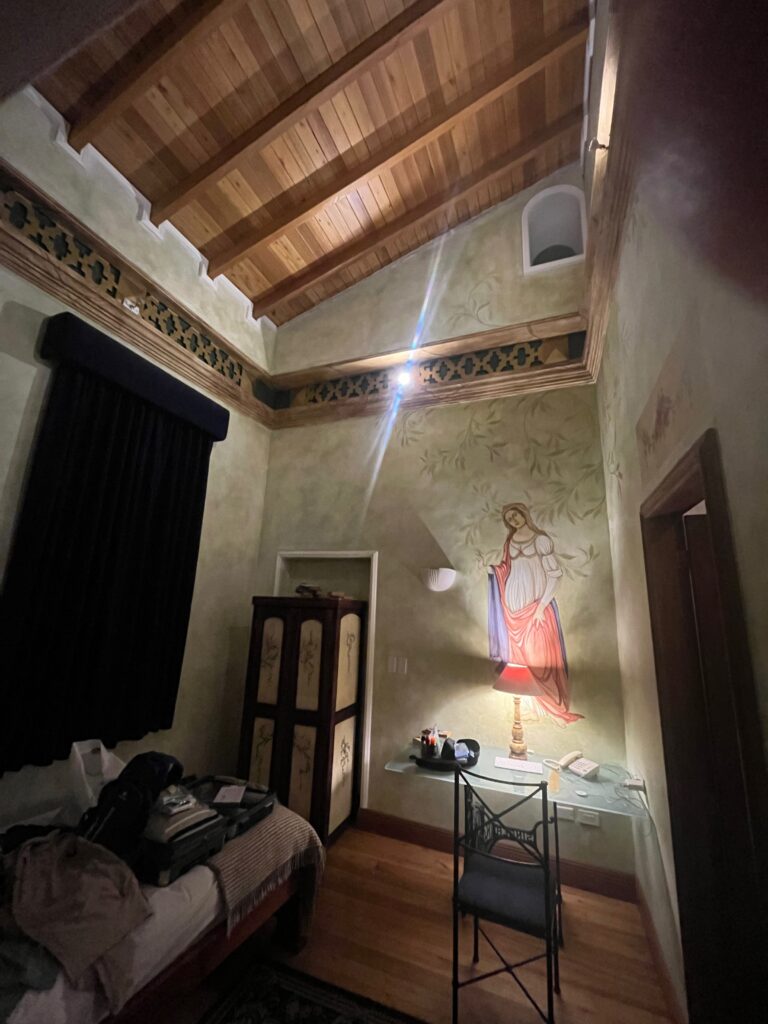

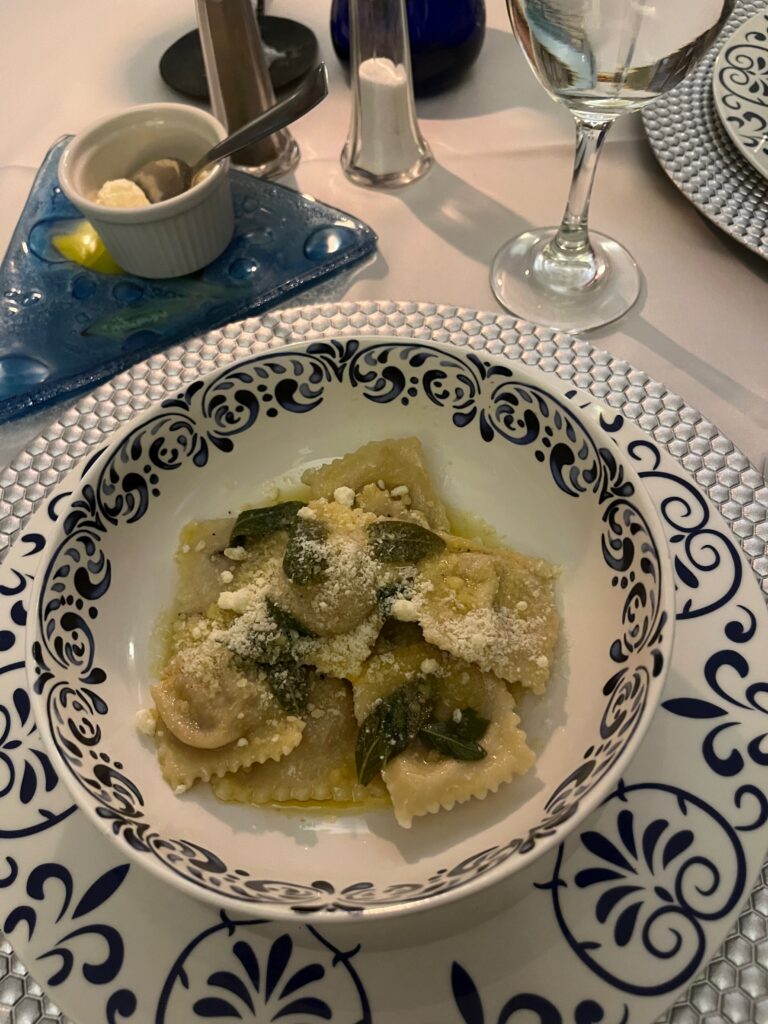
For dinner we enjoyed pumpkin ravioli accompanied by a small salad. We then returned to get some sleep before embarking on the next segment of our Ecuadorian adventure: the Amazon Basin.
Sunday, September 22
We were provided a box breakfast by the hotel and were picked up by Sebastian at 6:45 am for our transfer to the airport for our 9:30 flight to Coca, the gateway to the Napo River. We were met at he Quito airport by a representative from the Anakonda cruise company, who helped us navigate our journey to Coca. The 35 minute flight goes over the Eastern Andes Mountain Range, crosses the equator and allows observation of snow capped volcanoes over 5,790 meters above sea level (18,991 feet). The environment in Coca is quite different from that in Quito as it is located at only 820 feet of altitude and was over 90 degrees Fahrenheit. Upon our arrival at the Coca airport, we were transferred to Anakonda’s offices to receive a briefing. We also met the three other passengers that would be on the first one-half (i.e., 3 days, 4 nights) of our trip. We also met the owner of the Anakonda/Manatee boats, our tour guide for the week, and the Captain of our boat, Eduardo Neira. We then walked across the street where a motorized canoe transported us about 2.5 hours to the boat.
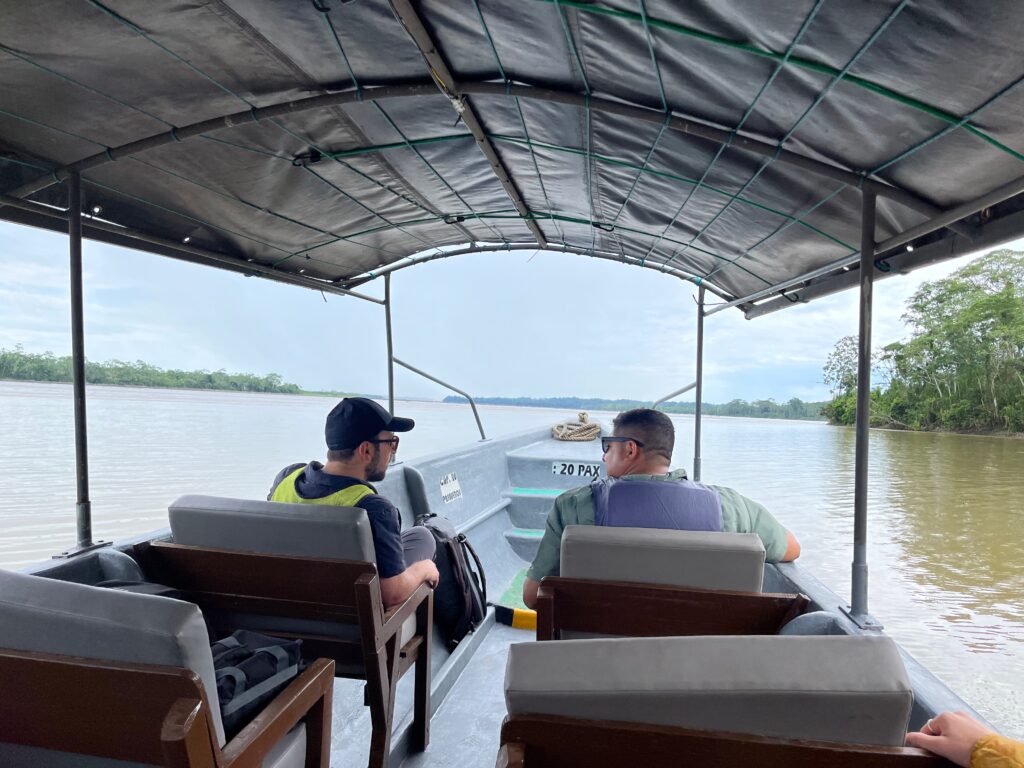
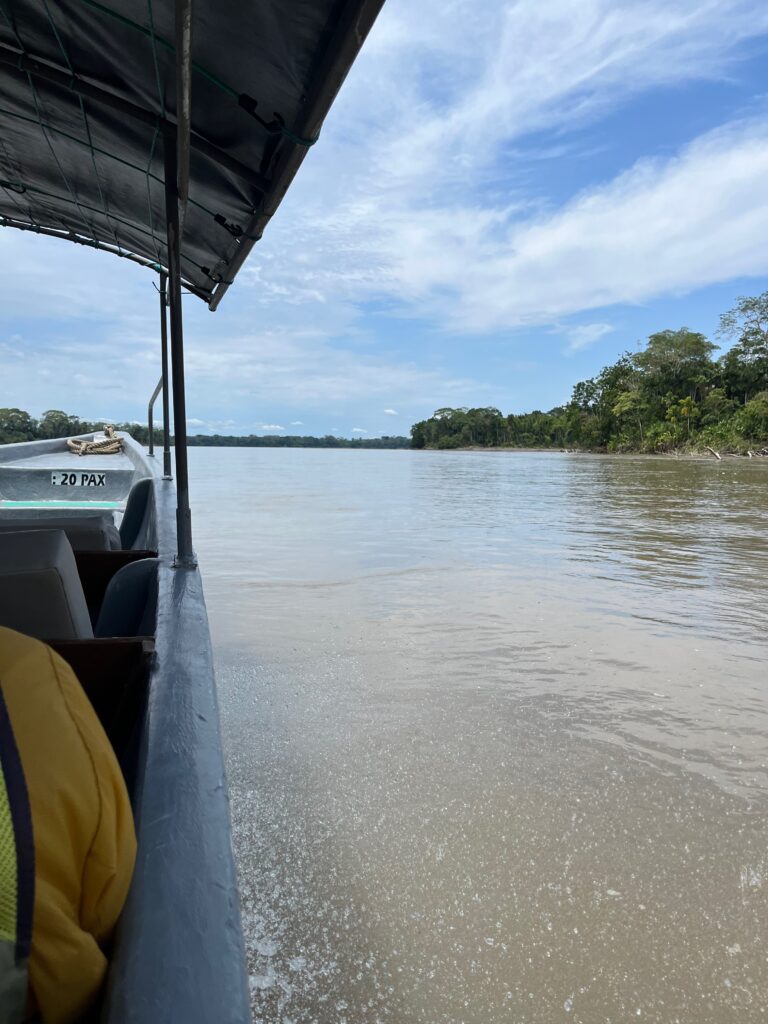
About the Anakonda boat and cruise company: For over 40 years, Raúl García, founder and CEO of Anakonda Amazon Cruises has been working to develop a sustainable tourism model in the region that provides an alternative source of income to the communities and operates in a way that preserves the Amazon rainforest. The Anakonda is 300 ton river expedition boat builtin 2013. It has a length of 148 feet, a beam of 30 feet, and a draft of 5 feet. On our voyage it had a crew of 17 people, including a captain, cruise manager, English-speaking native guides, and operational staff (e.g., housekeepers, a chef, and canoe drivers). It has a cruising speed of approximately 14 knots downstream, and 7 knots upstream. Filtered water is provided by an 8,000 liter onboard water treatment plant. For purposes of excursions, the Anakonda is outfitted with two fiberglass ecologic canoes equipped with four-stroke low emission engines. The boat accommodates up to 40 passengers with private facilities in four deluxe suites with private balconies and fourteen standard suites (4 interconnected) with French balconies. All suites have large panoramic windows with a view and include an air conditioning system.
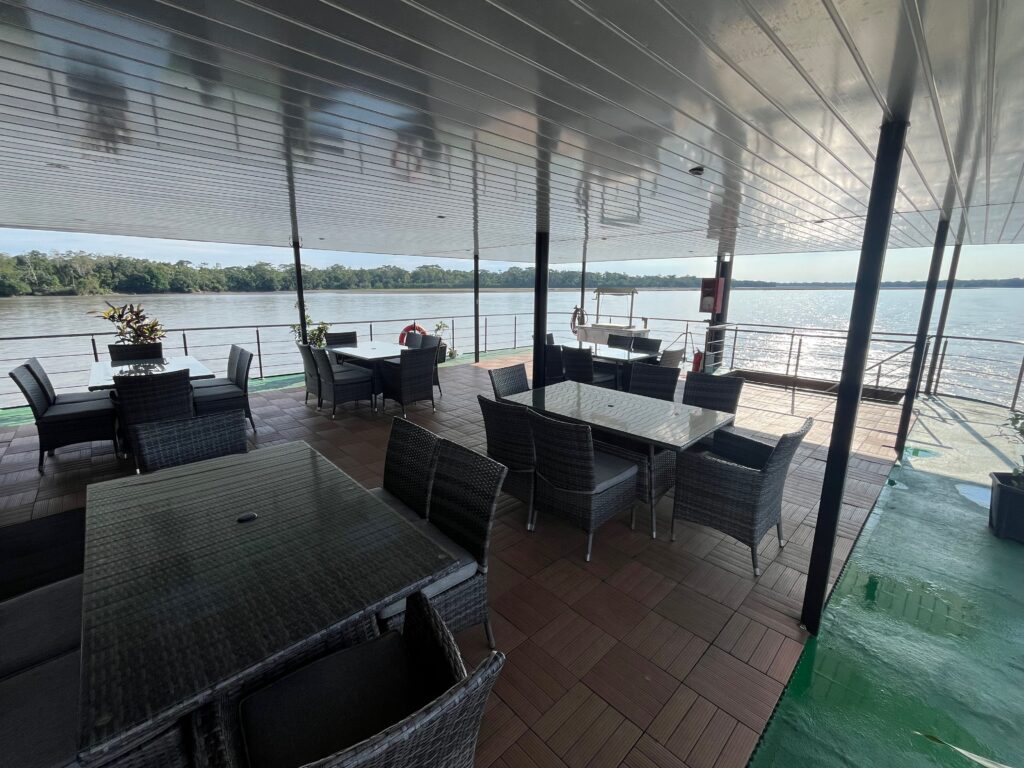
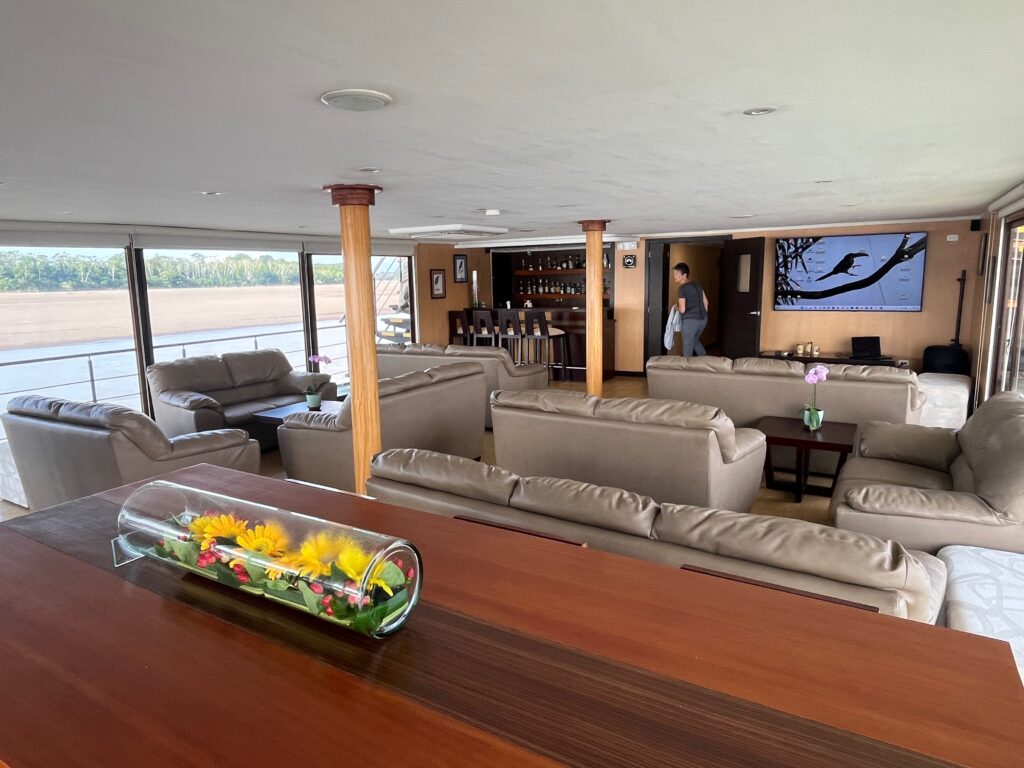
If you’re still with me, you may have noticed above that I said there were only three other passengers with us. So, the five of us on a boat with a capacity of 40 and a staff of 17. It was surreal and a reflexion of the current status of the level of tourism in Ecuador. Upon our arrival at the boat, we were welcomed on board with a cocktail, given some time to relax and unpack, went through the mandatory safety drill, and then enjoyed lunch. You can see the menu for each day and photos of some of the meals later I this blog. After lunch we lounged on the boat for a while, and then went for a sunset canoe ride followed by night walk through the surrounding jungle. During our nocturne walk we saw walking sticks, many spiders (e.g., the Golden-silk spider and several pink-toed Tarantulas), toads, frogs, and snakes. We returned to the boat to enjoy dinner, after which we retired in anticipation of the next day’s activities.
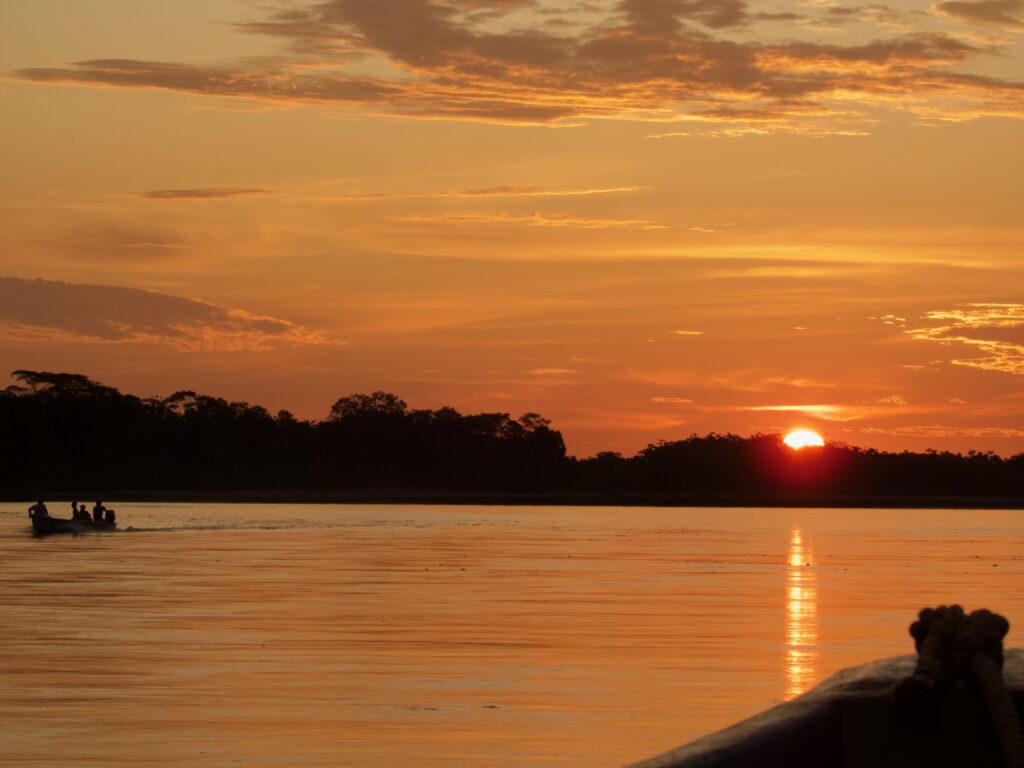
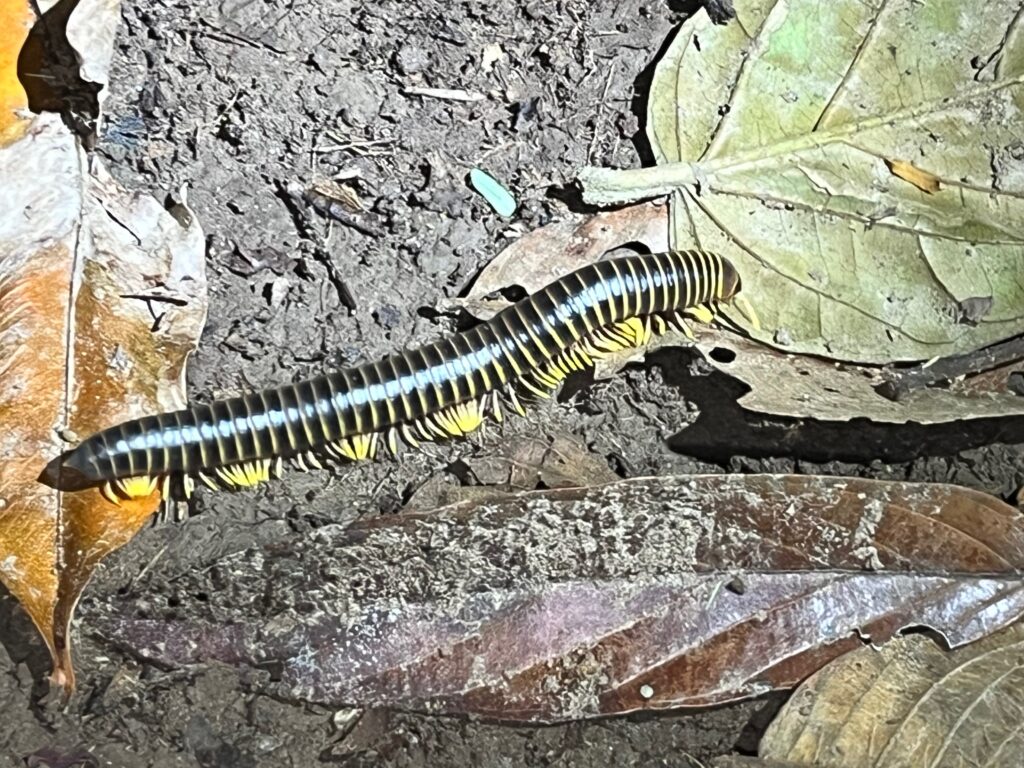
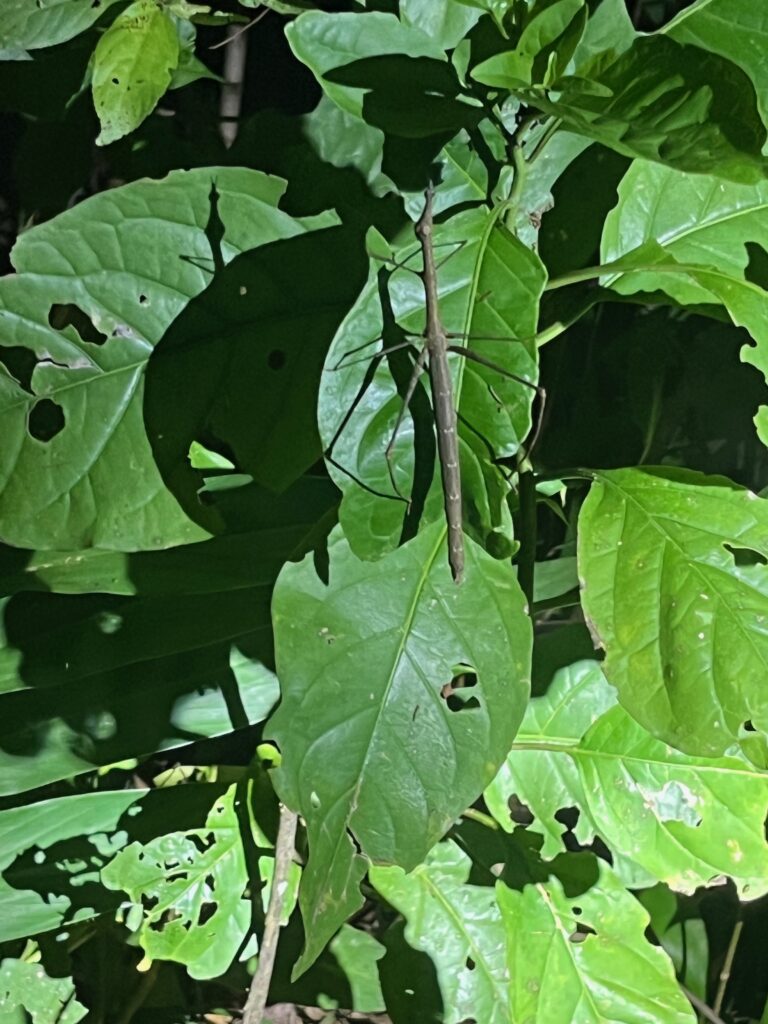
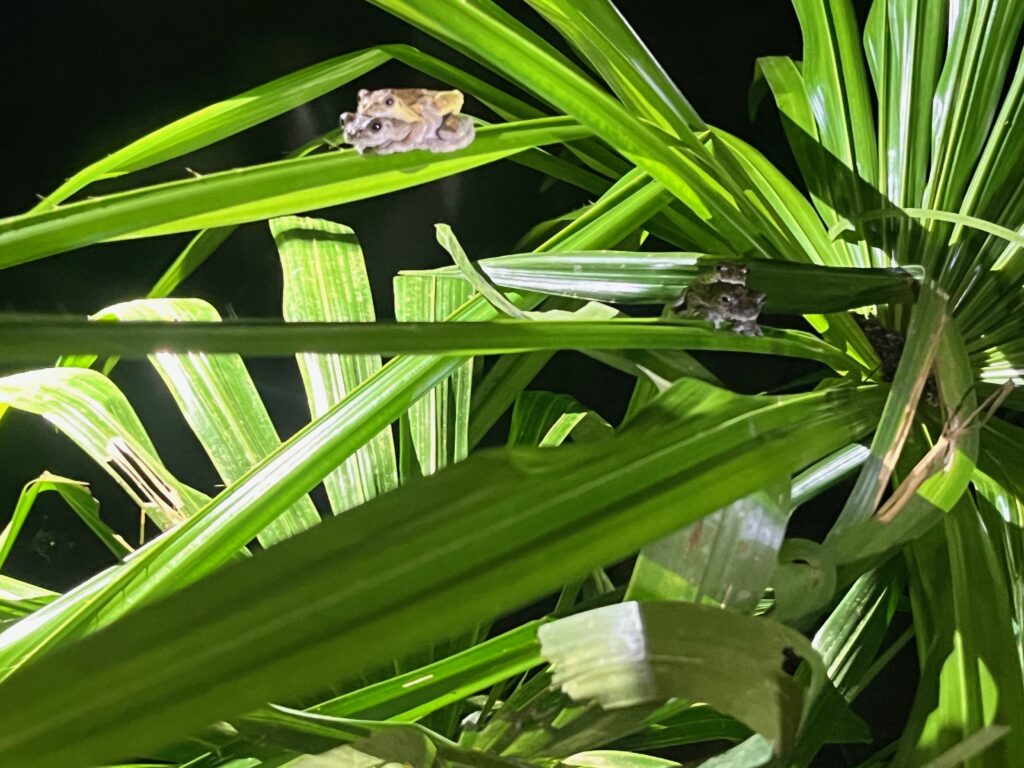
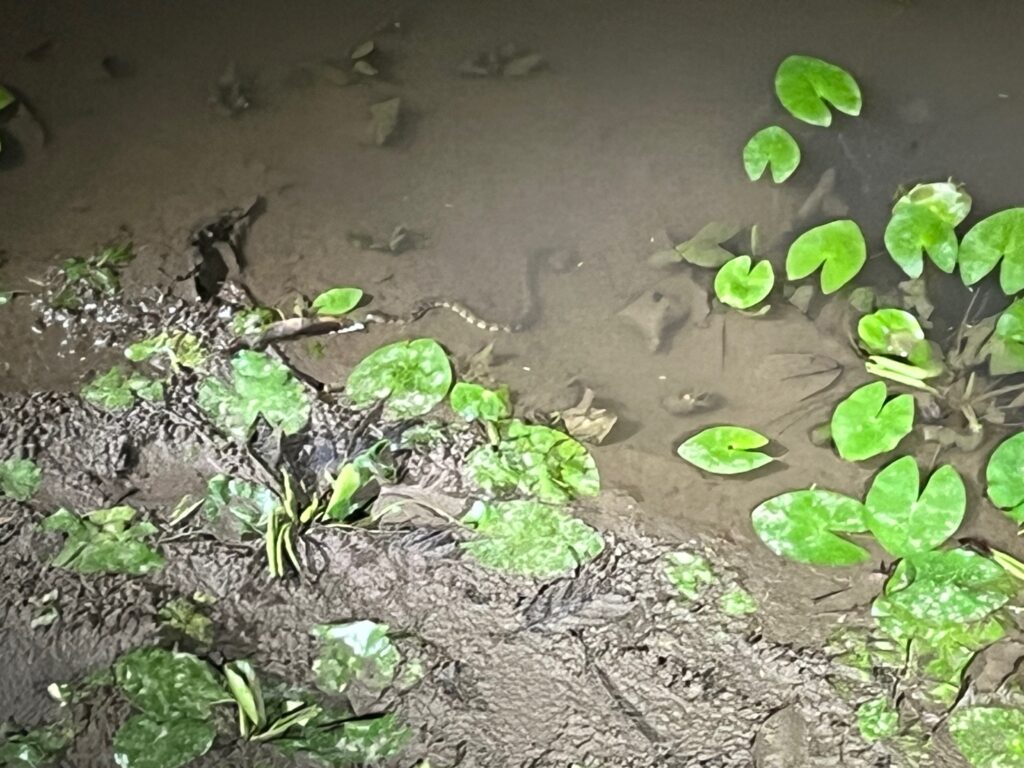
Monday, September 23 through Saturday, September 28
Rather than go through a day-by-day summary of the Amazon portion of our trip, I will instead generally describe life aboard the boat and the various activities in which we participated.
Life aboard the Anakonda
The layout of the boat is shown below.
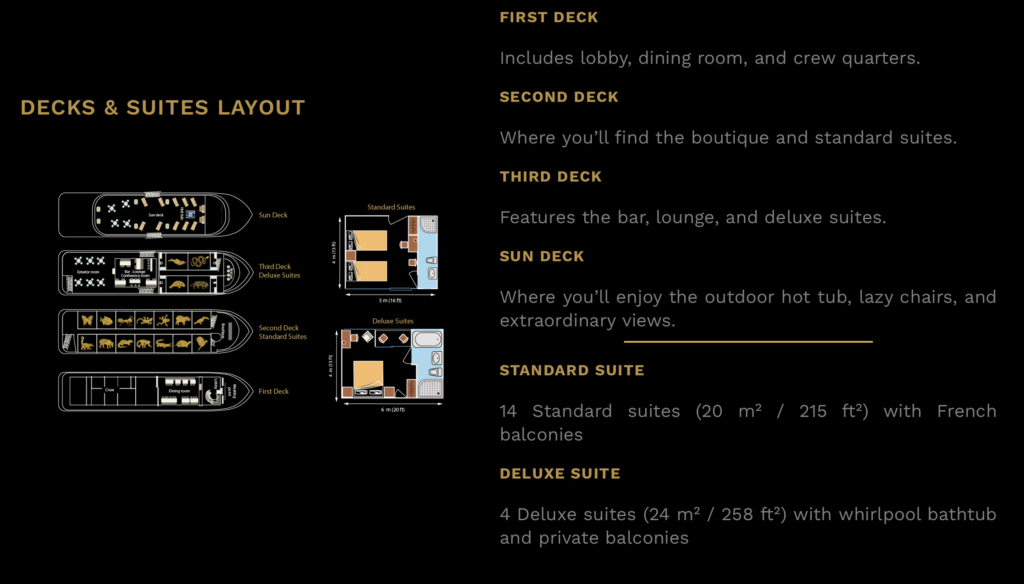
Sunrise each day was at approximately 5:45 am Therefore, every day began with an early breakfast, typically between 6 and 7 am (the animals, of course, live by the patterns of daytime and nighttime, not the clock).

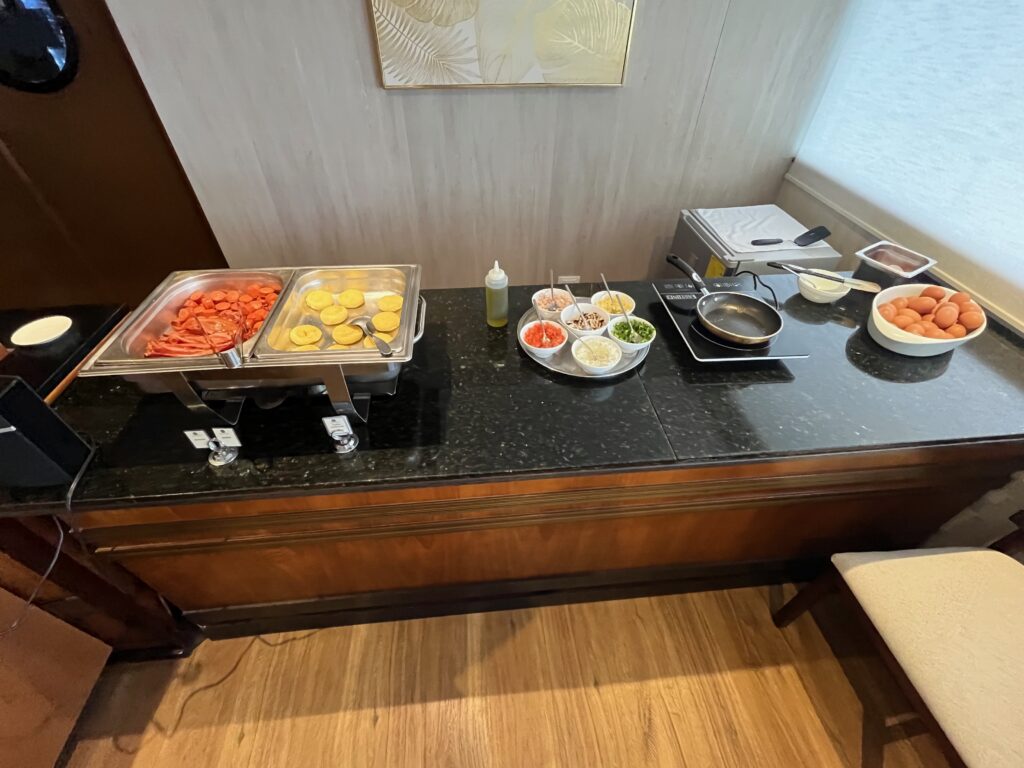
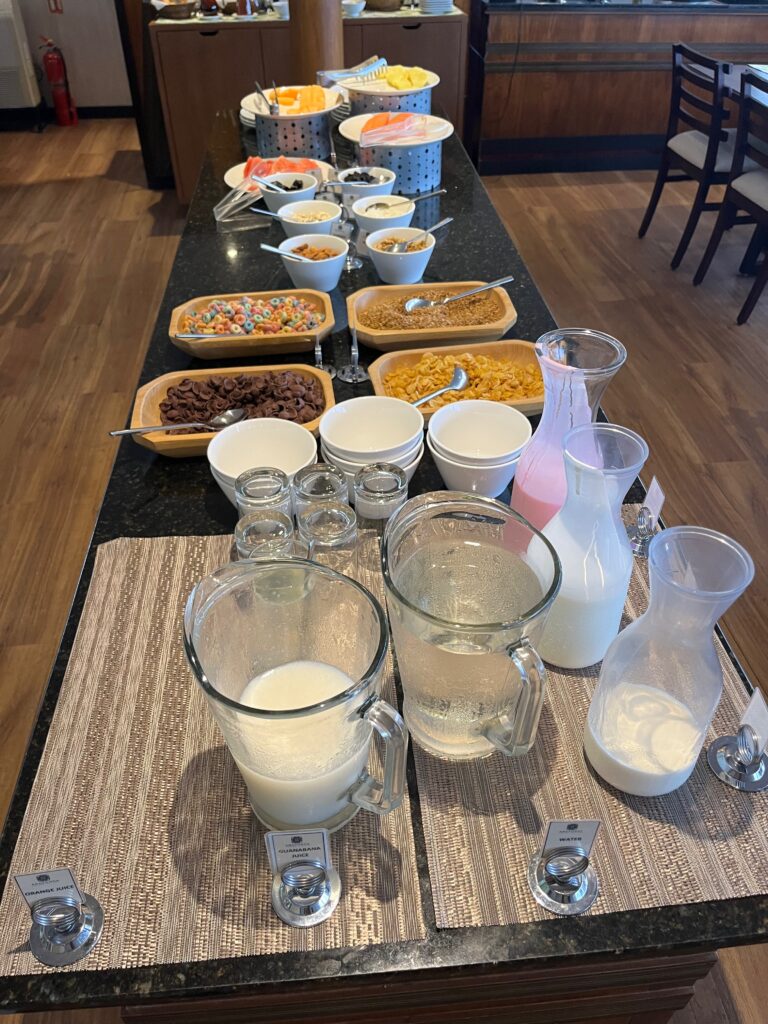
Breakfast was typically followed by a morning excursion, lunch back at the boat (typically at 1 pm, although one day we had a box lunch in the boat), an afternoon excursion, dinner (typically between 7 and 8 pm), and, occasionally, the opportunity for an evening walk through the jungle to see the creepy-crawly things (see the description above related to the walk the evening of our arrival). The ships crew did, as demonstrated by the schedule, keep us very busy and very, very well fed.
As to the excursions, they included:
A tour of the Pañayacu (Piranha River). The area of Pañacocha is an ecosystem flooded by white waters, rivers and lakes. We began by looking for wildlife as we headed upstream on the river. But first, we had to navigate very shallow waters by, at times, jumping out of the canoe to push it over the sandbars which seemed to be ubiquitous at this very dry time on the Amazon (we heard it was the driest season in decades, with the water on the main river sometimes limiting the ability of the main ship to move up and down the river where planned). Yes, pushing a boat barefoot up a river in the Amazon basin has to be a lifetime highlight for me! Once we got past the shallowest water, we drove slowly along the riverbank and observed cormorants, bats, beautiful butterflies, numerous bird species, and members of the local community as they went about their normal daily activities. We then stopped to fish for piranhas, with nearly everyone in the boat catching at least one piranha. We eventually made our way into a lagoon, which featured the Amazon Dolphin Lodge, where we stopped for lunch, a beautiful view from the observation tower, and a short walk through the jungle. After lunch, we boarded kayaks to begin our way back to the boat. After paddling for an hour or so, we reboarded the canoe and made our way back to the Anakonda, only having to get out once to again push through the sandbars.
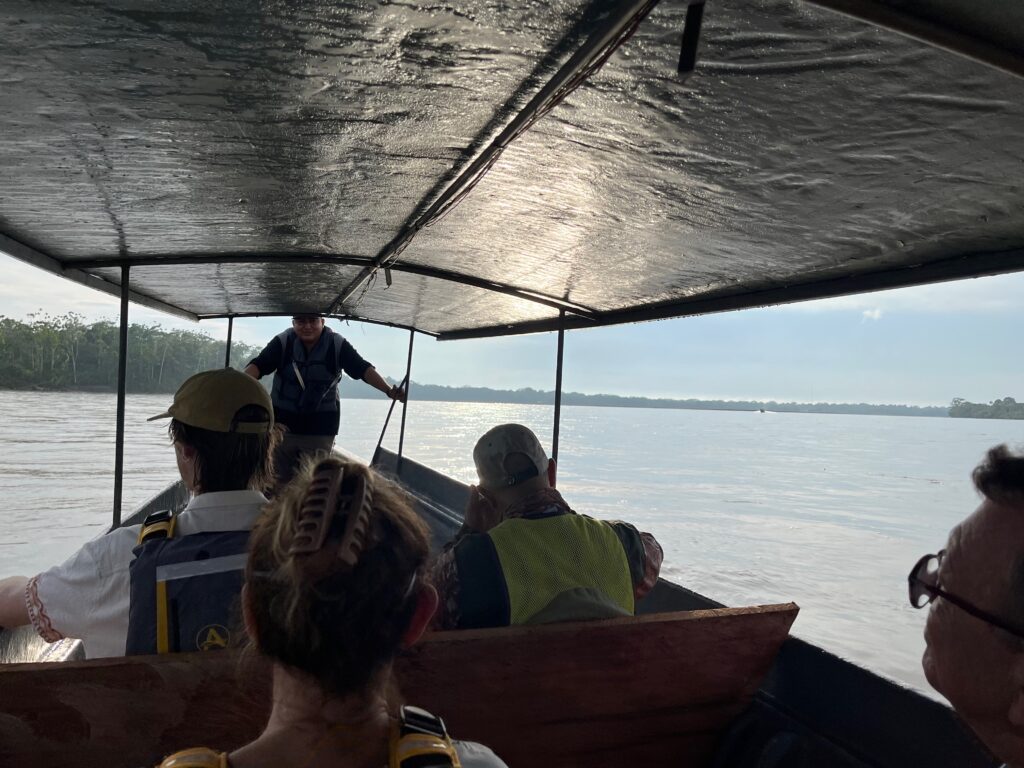
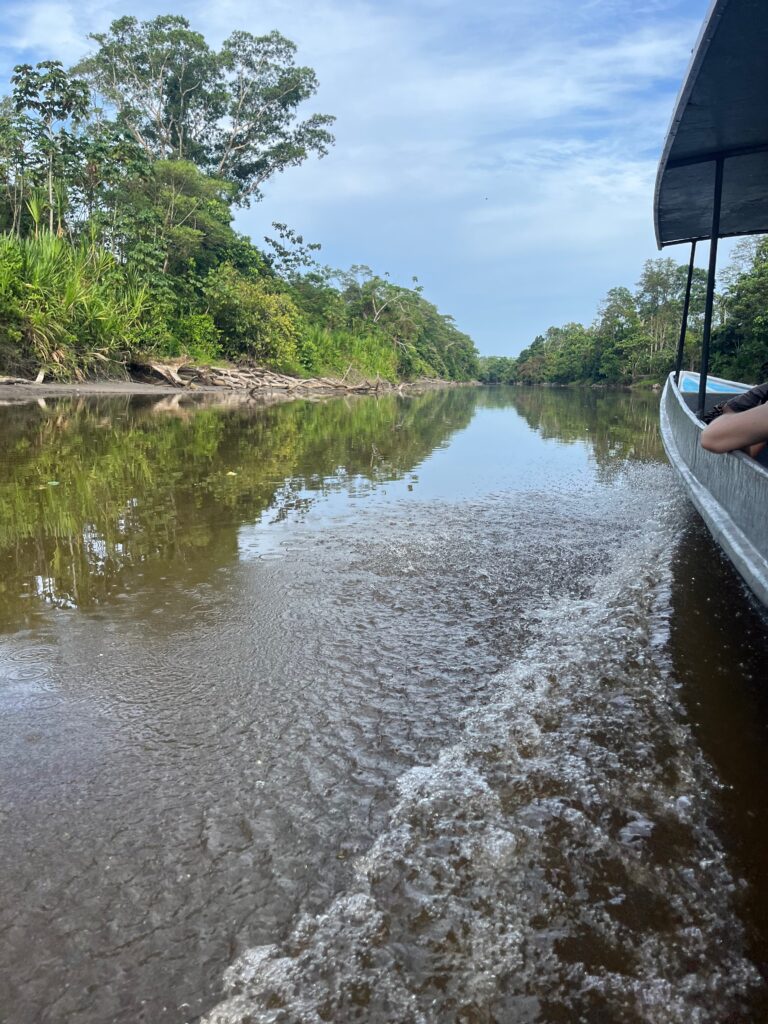
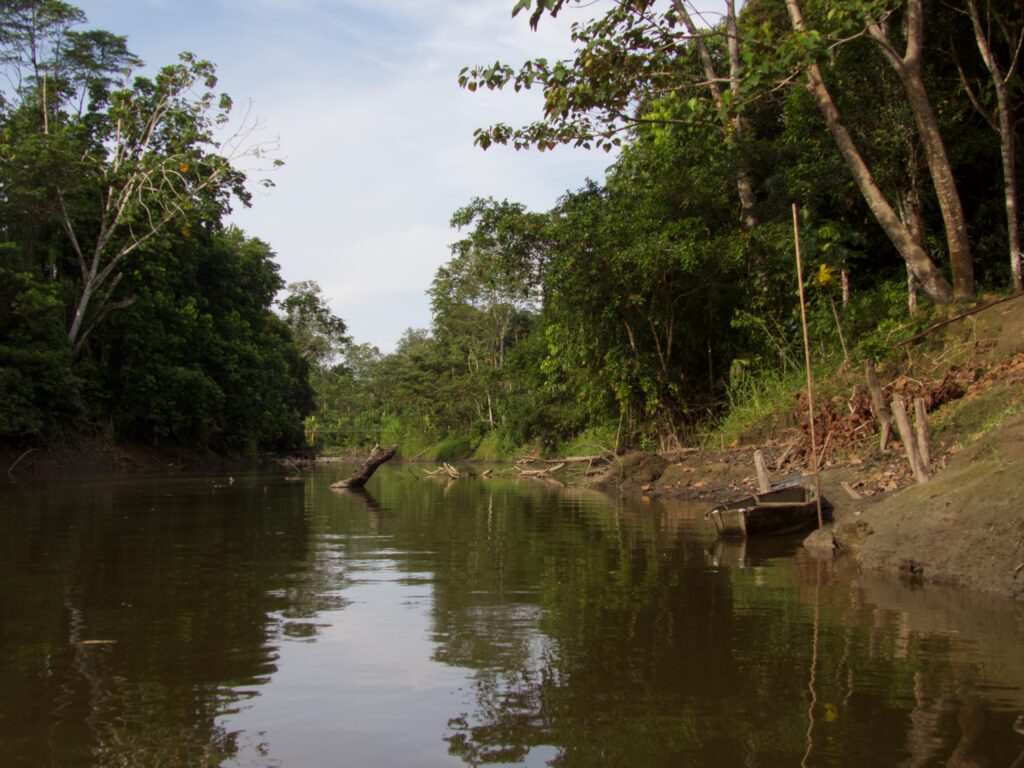
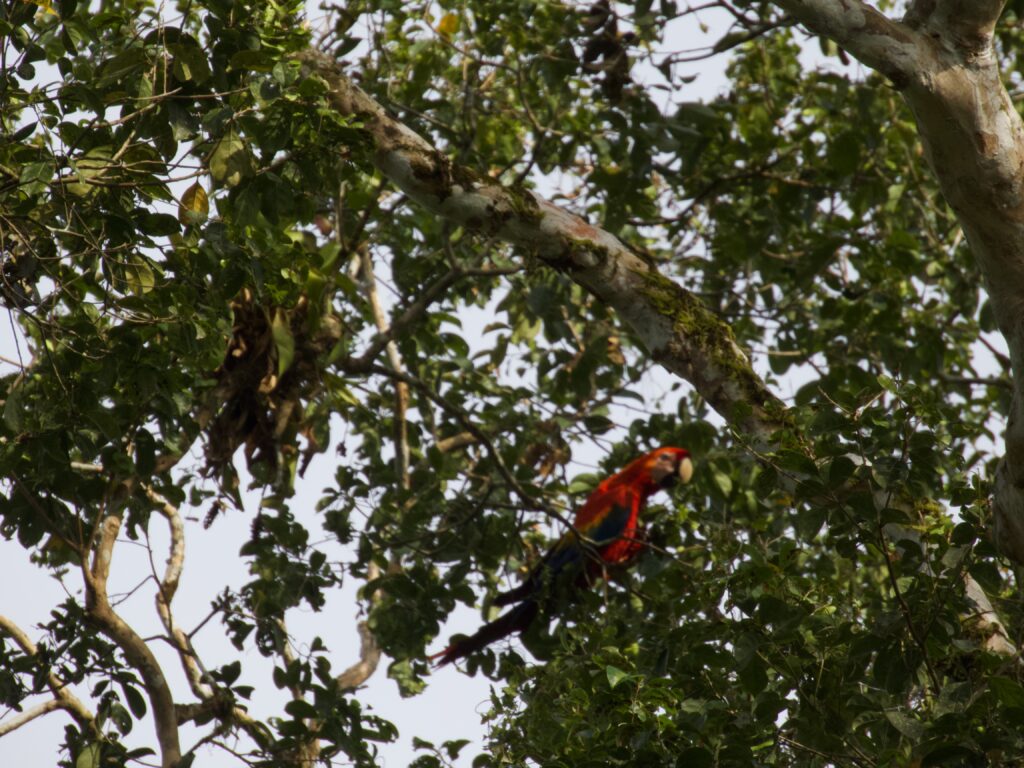
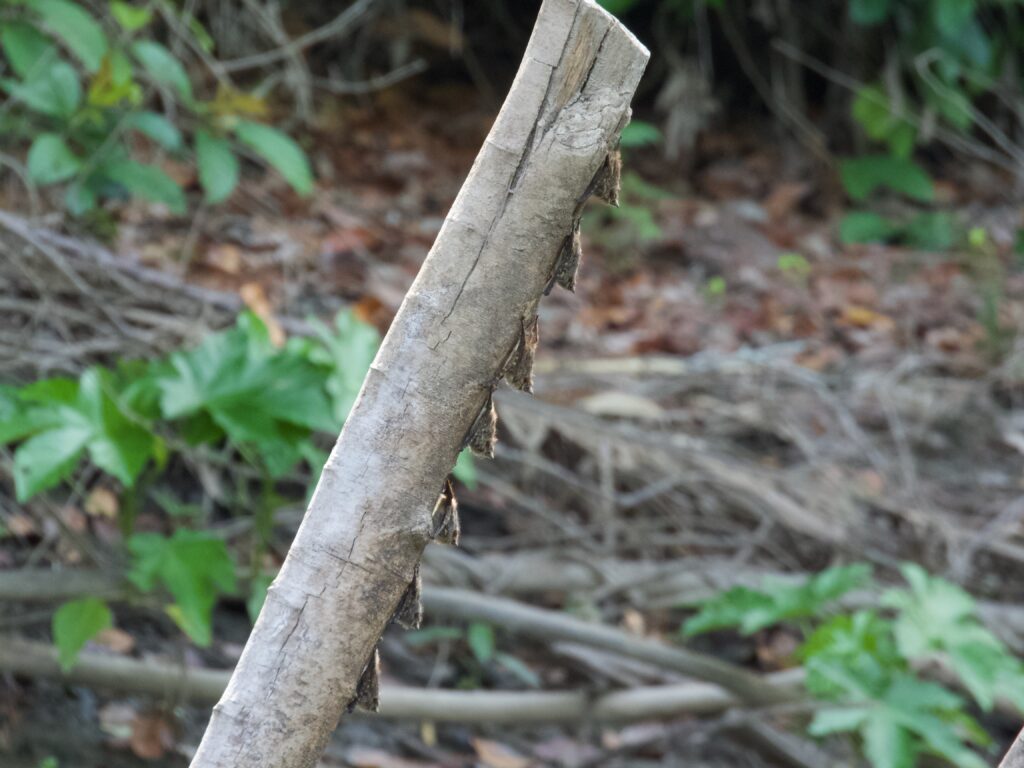
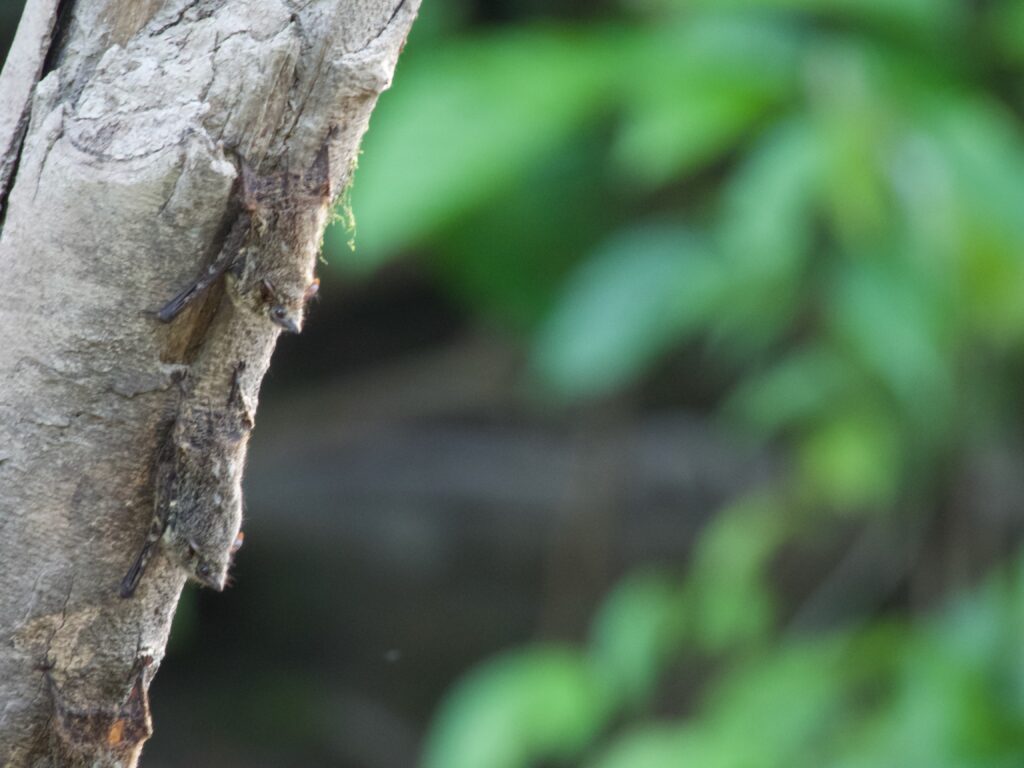
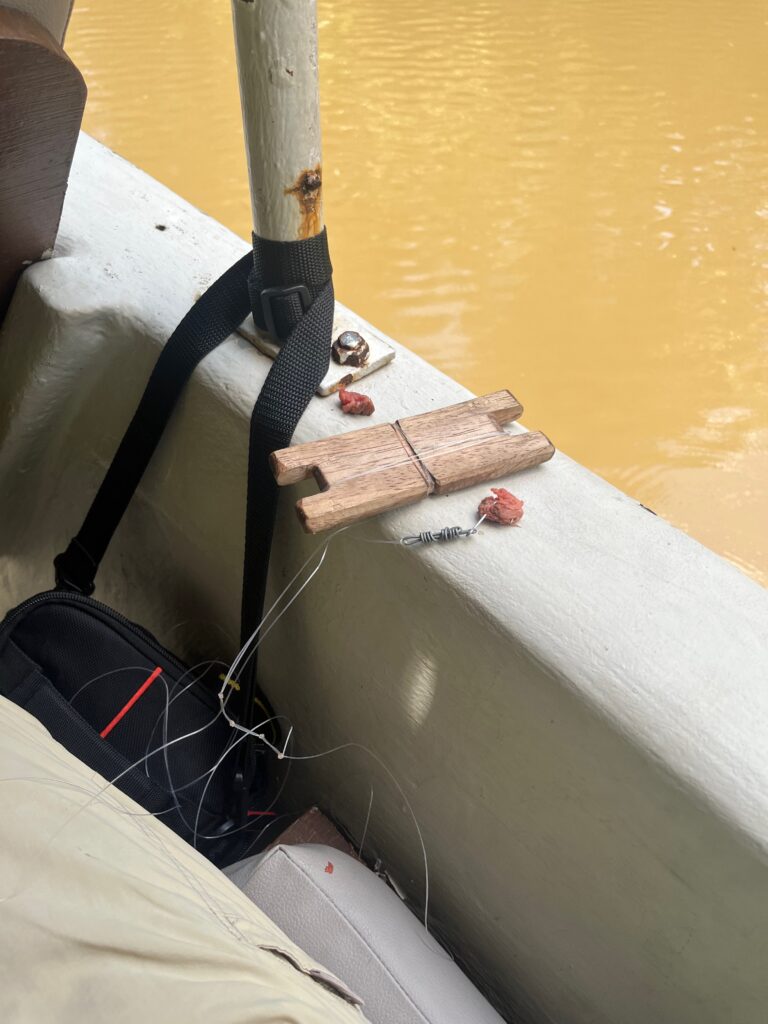
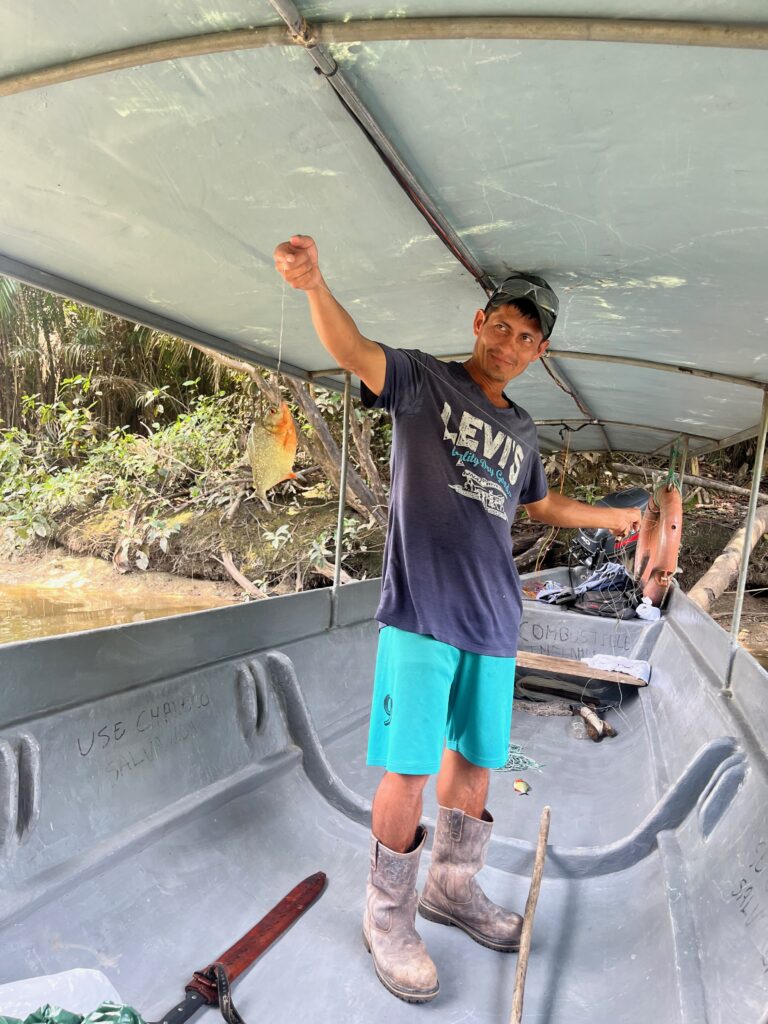
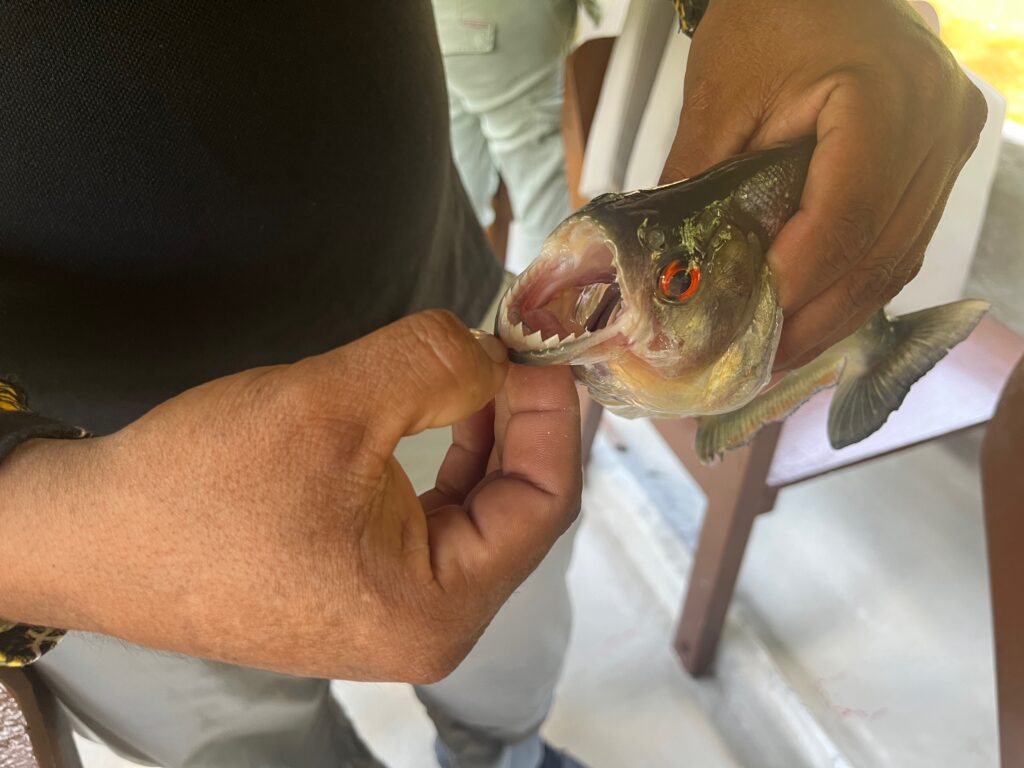
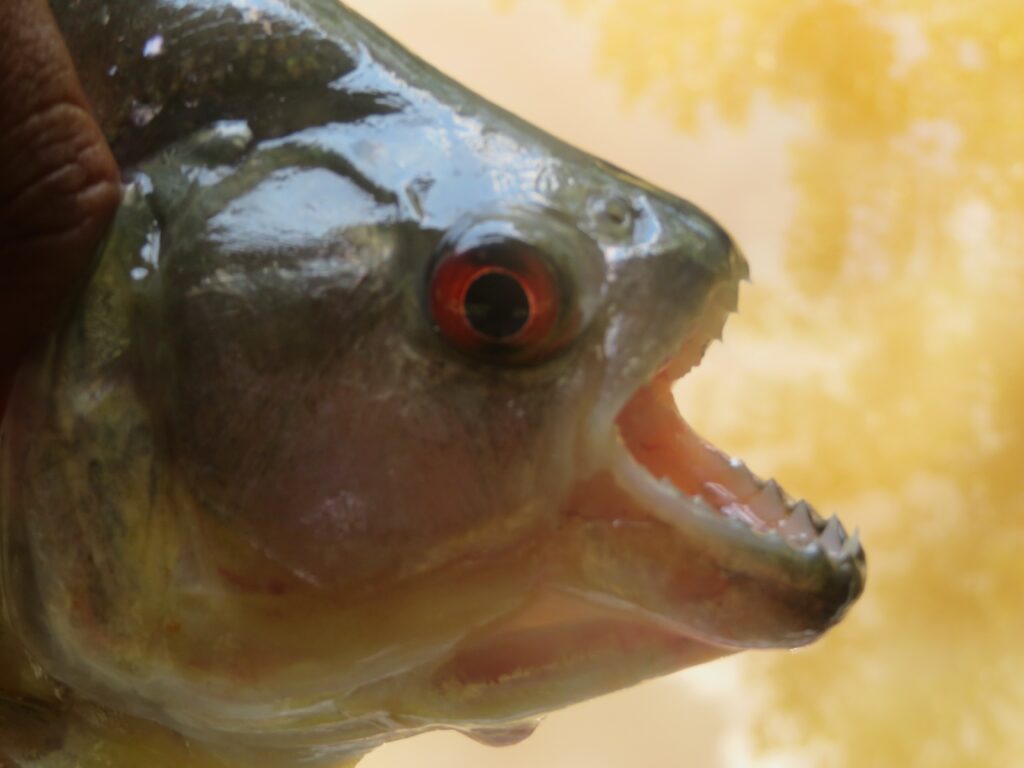
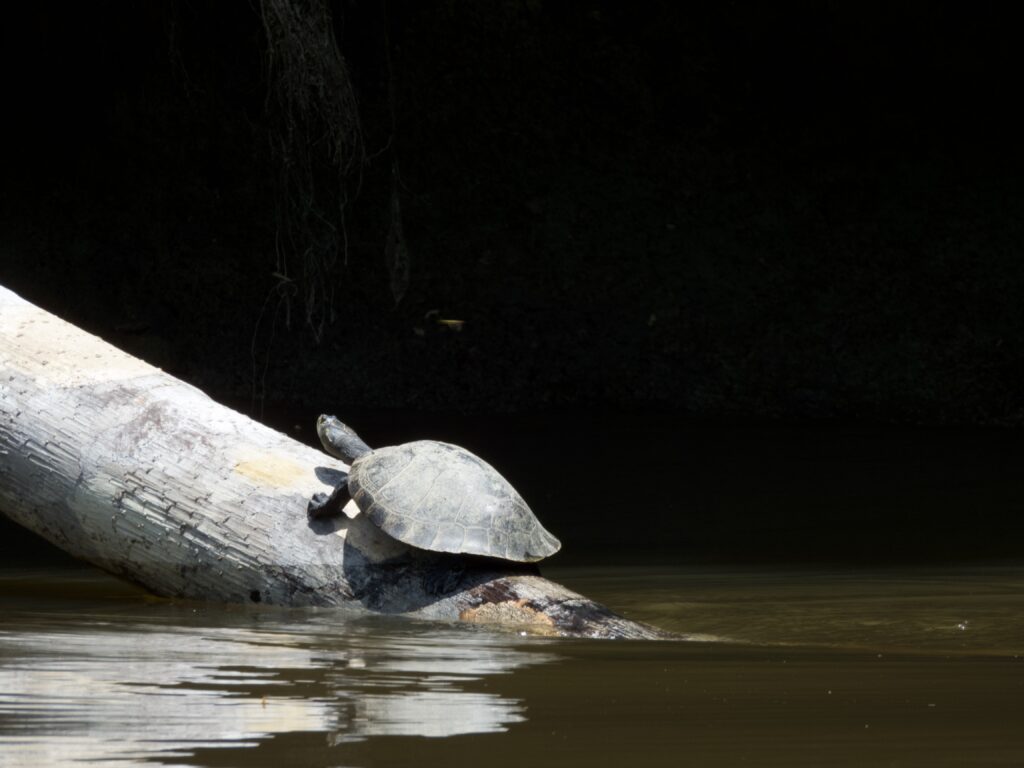
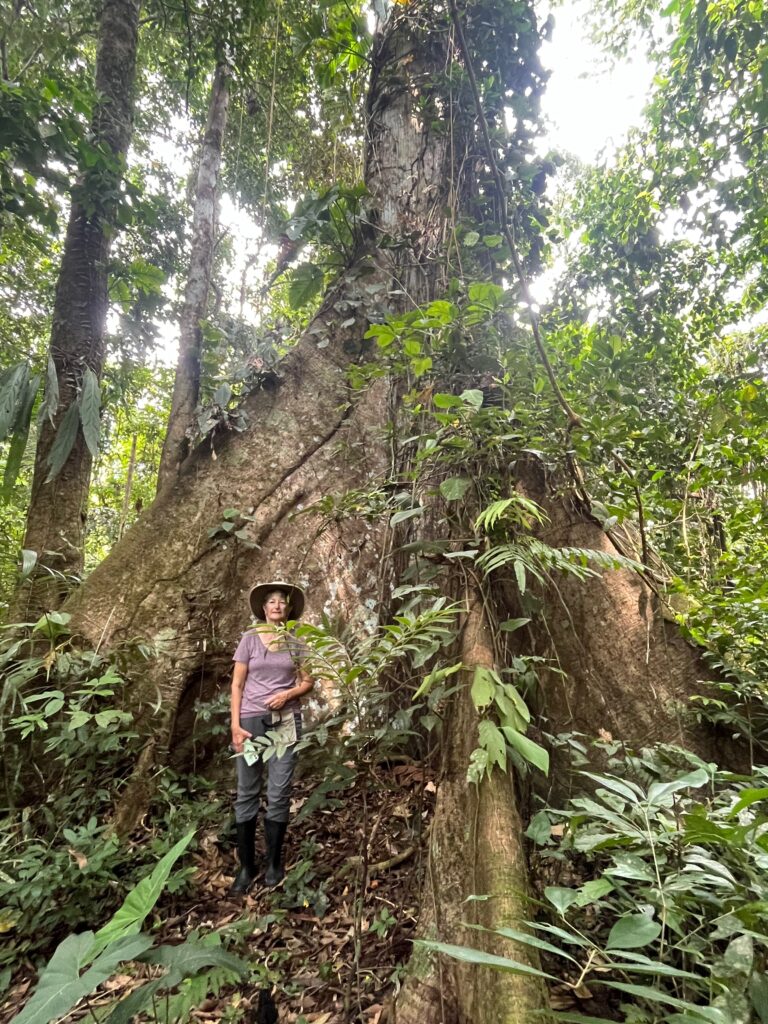
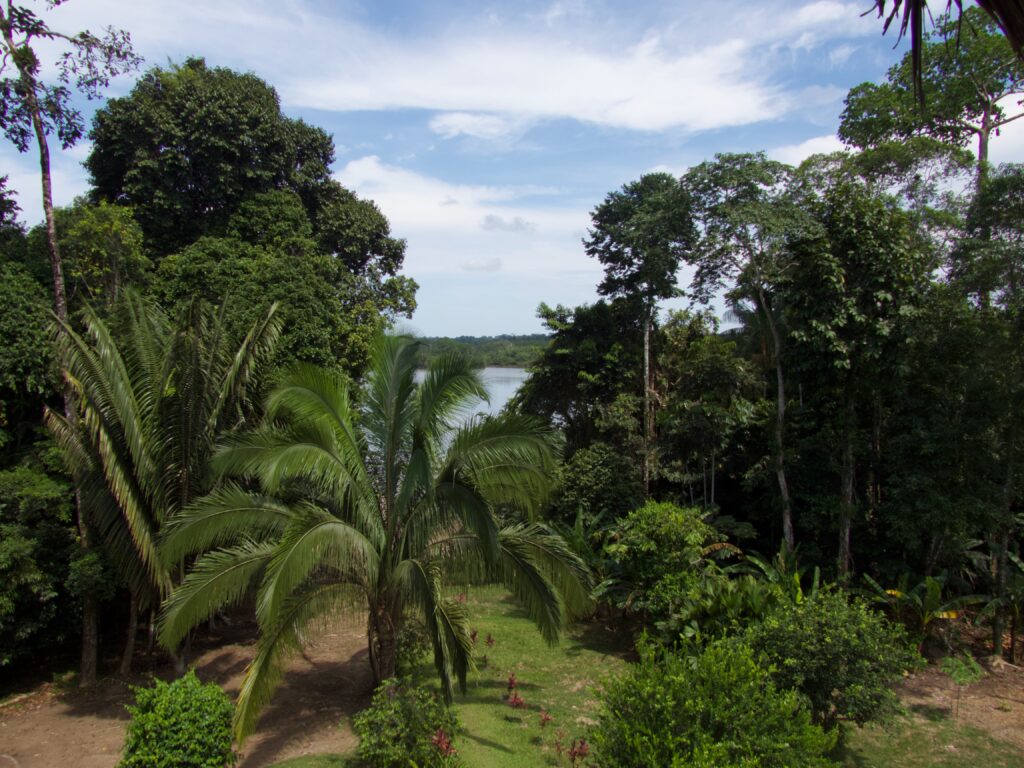
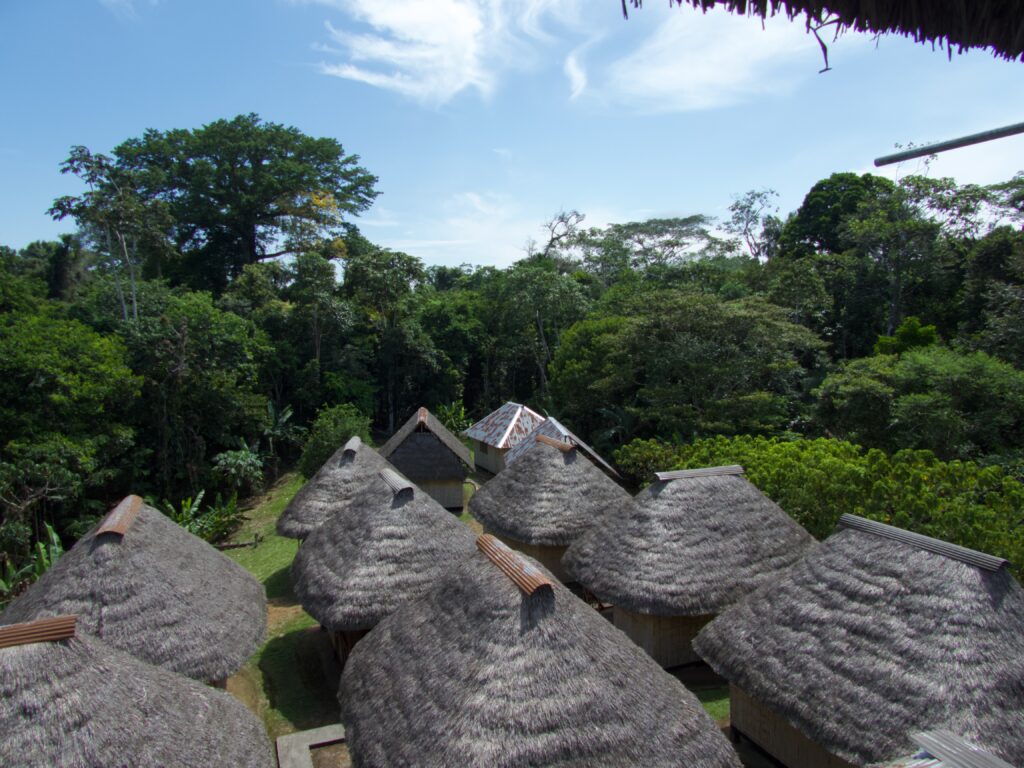
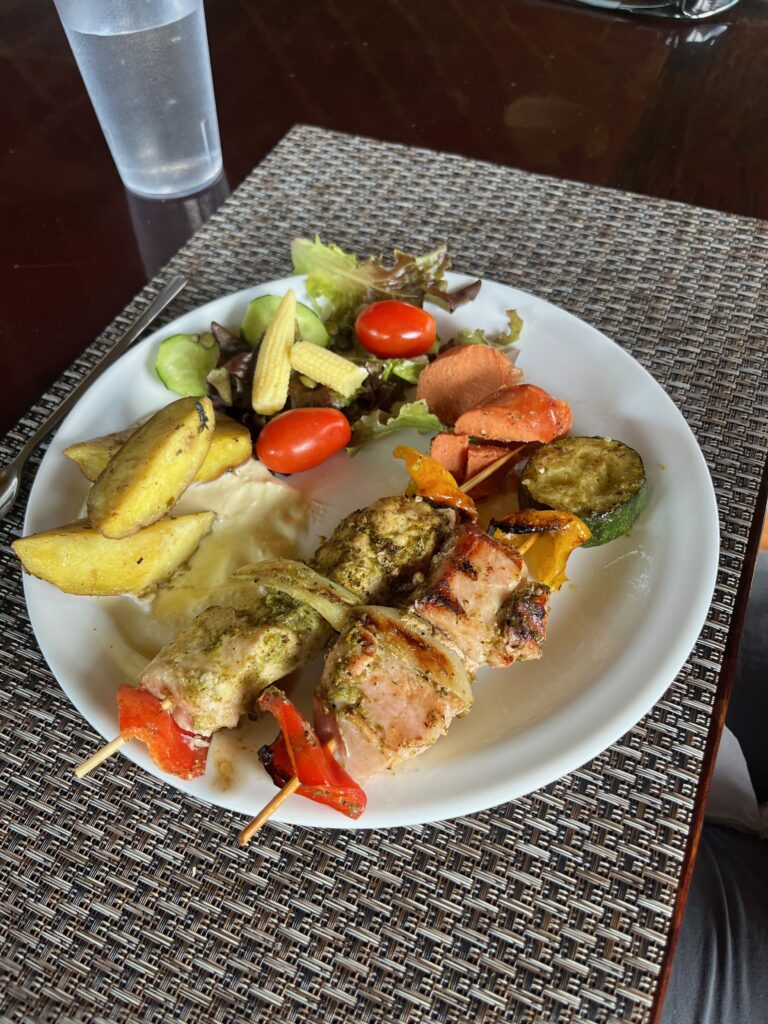
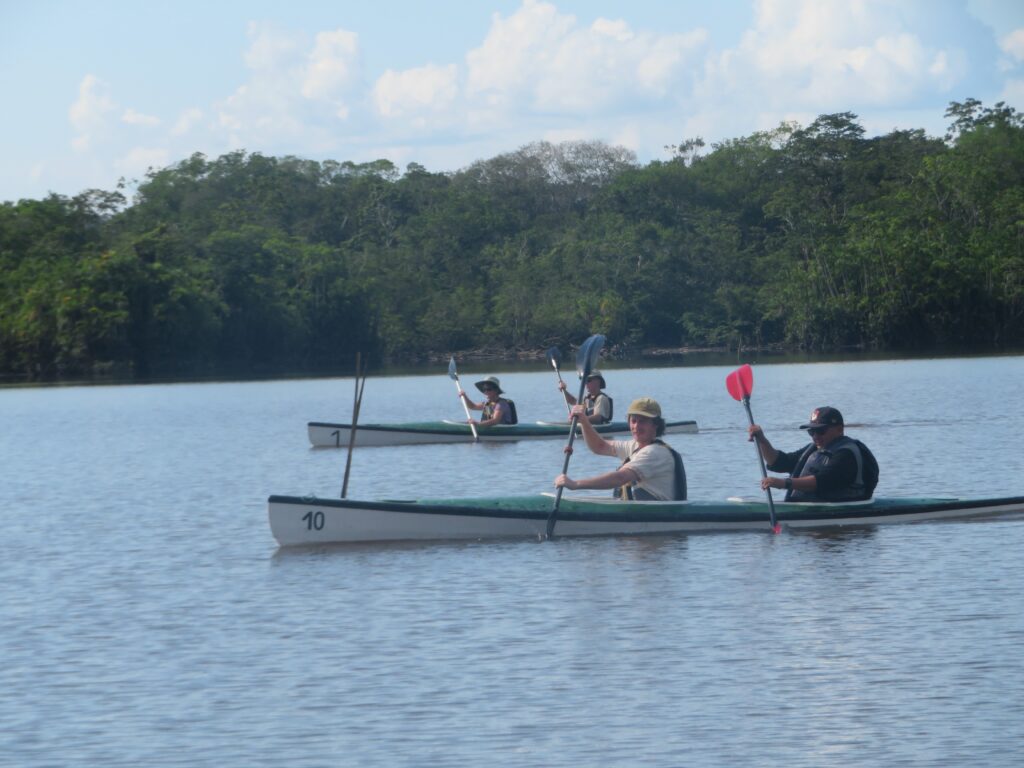
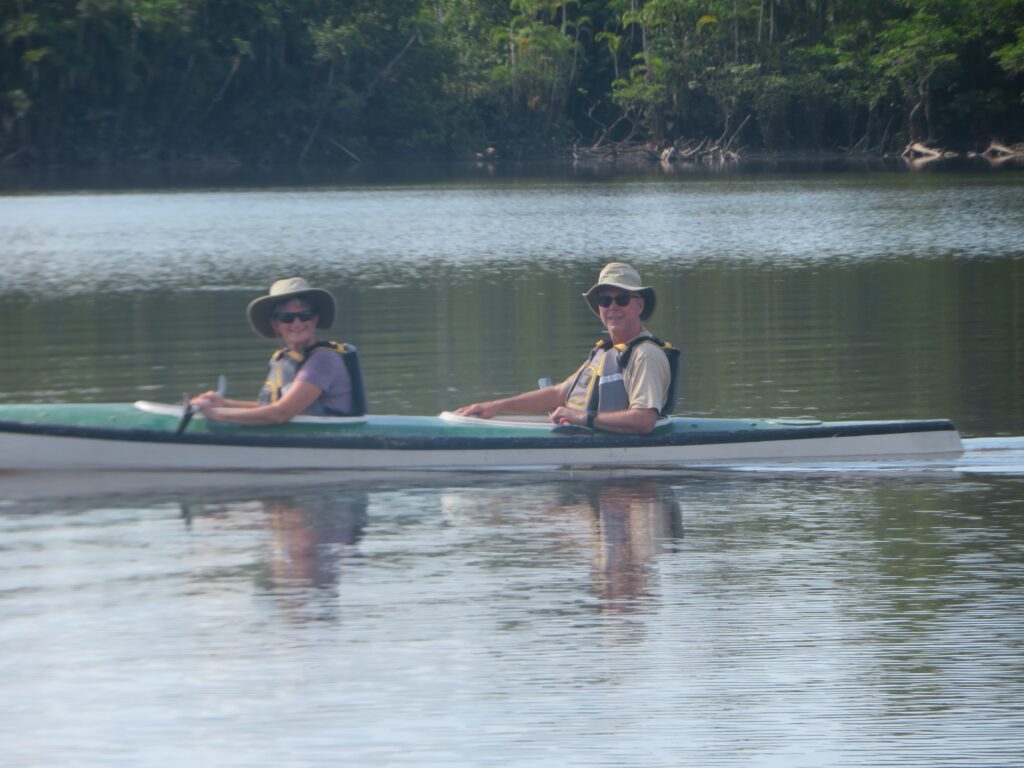
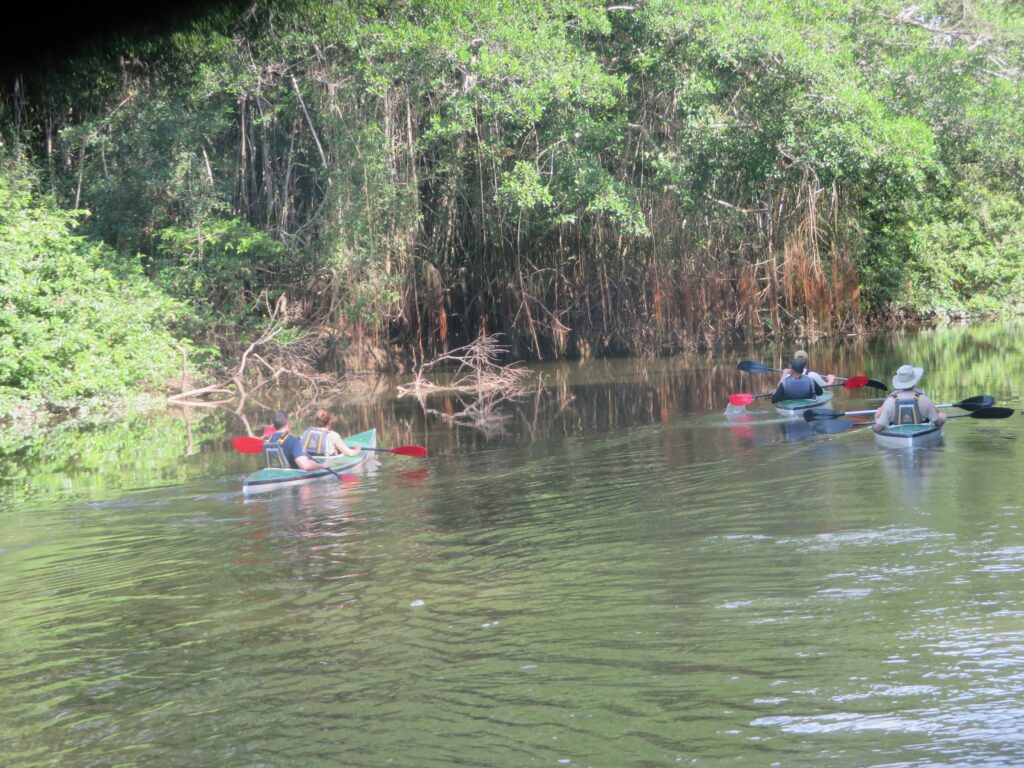
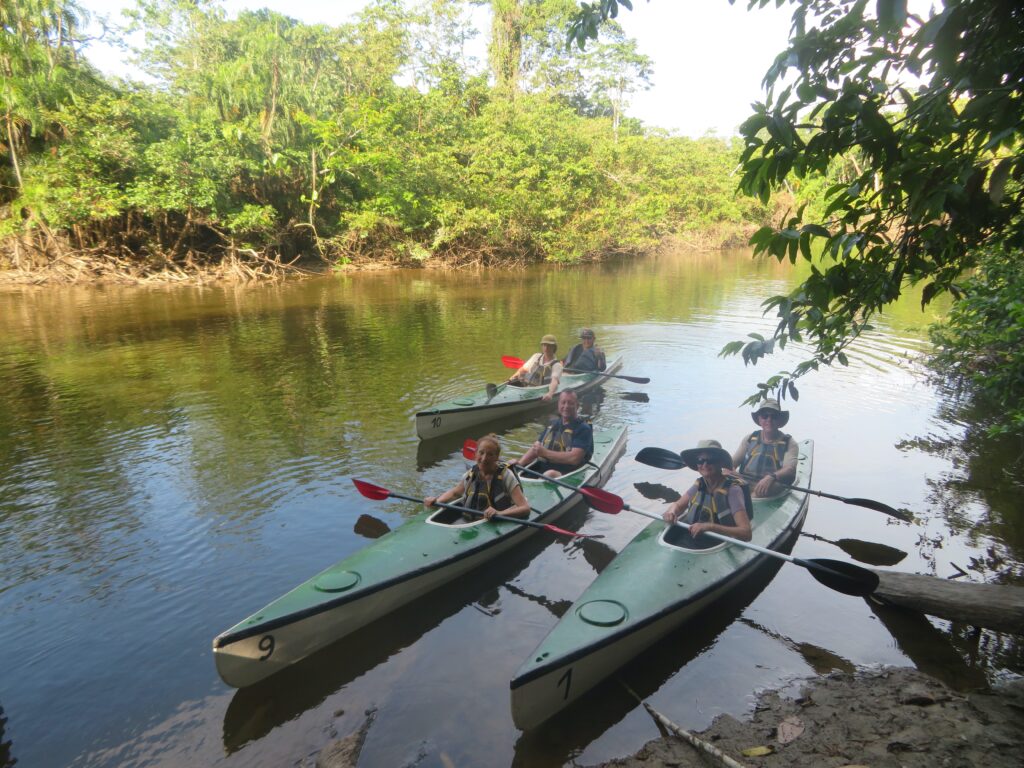
Parrot Clay Licks, Other Wildlife Gathering Spots, and an Observation Tower in Yasuni National Park. We set out on three different occasions to visit sites were parrots, parakeets, or other wildlife gather to obtain minerals from soil or gather fiber from plants. In the first instance, we boarded the canoe very early in the morning to visit an area rich in minerals which provides a healthy boost to the digestion of parrots and parakeets. While we could see the parrots in the trees (see photos), they never descended to the “clay lick.” As our guide explained it, the birds are very vulnerable when on the clay lick, so they are very cautious about perceived threats such as a leopard or Anaconda snake lurking in the nearby grass. On the second occasion, we tried to get to a site where the animals gather fiber from the native plants. In this case, the combination of large sandbar and a deep channel in the river between us and the path to the site made access impossible. In the third instance, we landed our canoe on the border of the Yasuni National Park and walked 20 minutes or so to a shelter where we could quietly await the arrival of wildlife. Unfortunately, perhaps due to the time of day, no significant wildlife appeared. In general, we had better luck seeing wildlife via walks in the jungle and canoe rides along the shore. One night we saw howler monkeys, a black caiman, and a capybara. After our time at the shelter, we headed to an 220 step, 100 foot or so tall observation tower. The tower allowed a view of the rainforest above the canopy of the trees. This particular tower also allowed us to see the extent of the sandbars along the Napo River (see the pictures to see the stunning magnitude of the sandbars).
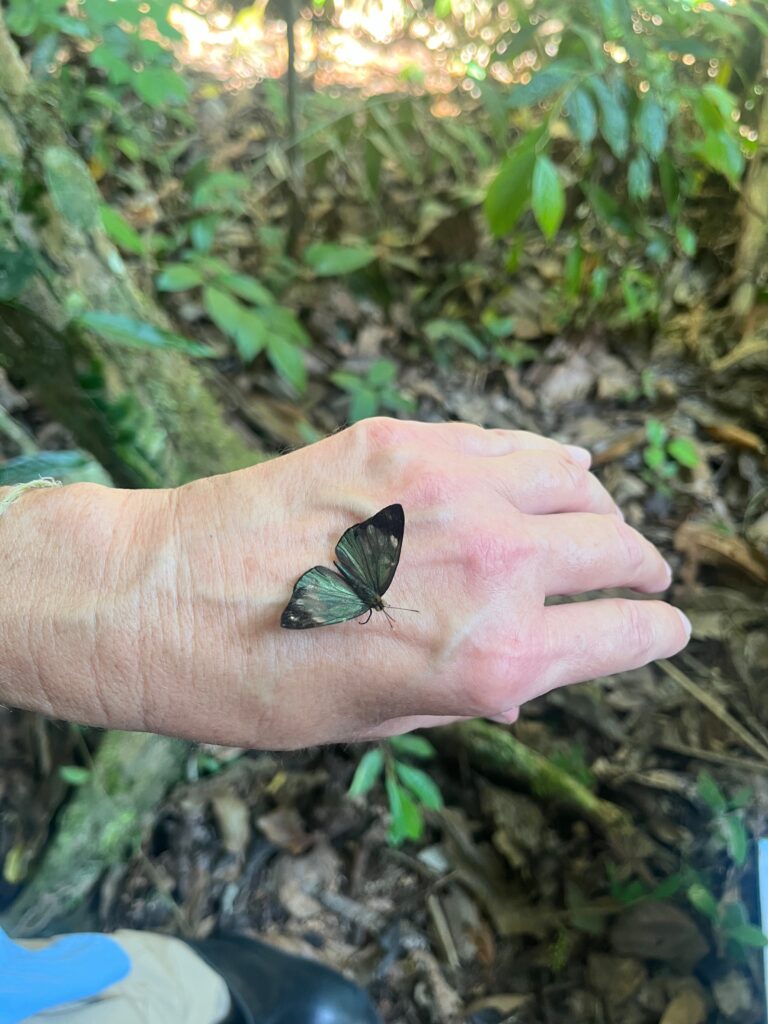
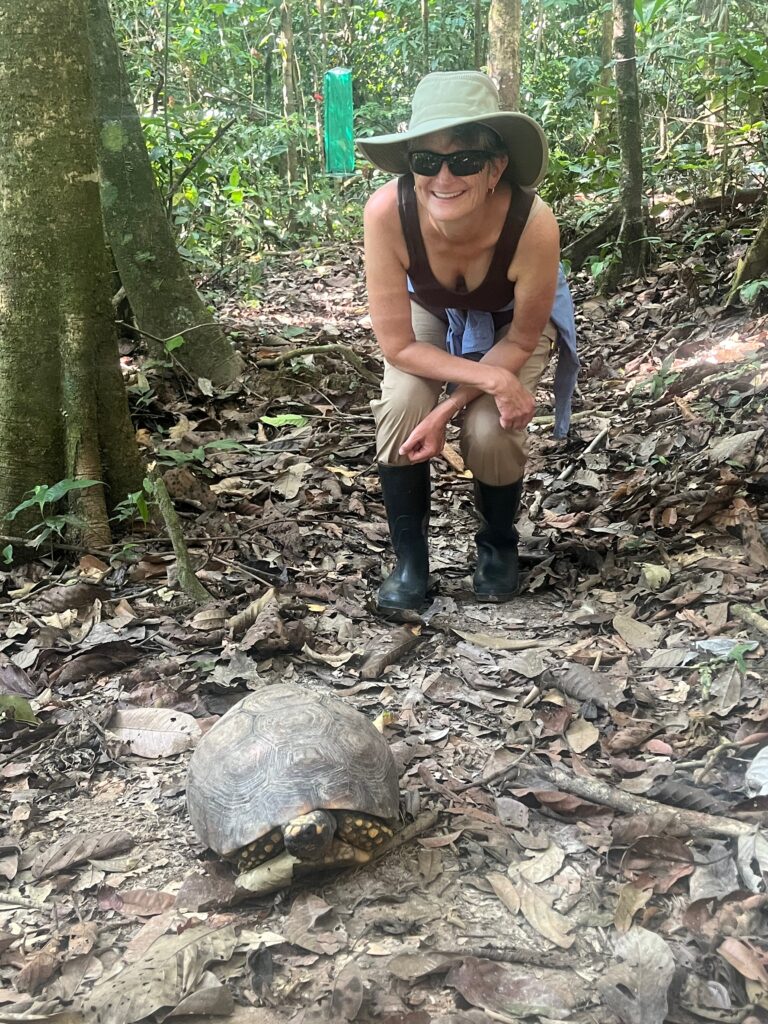
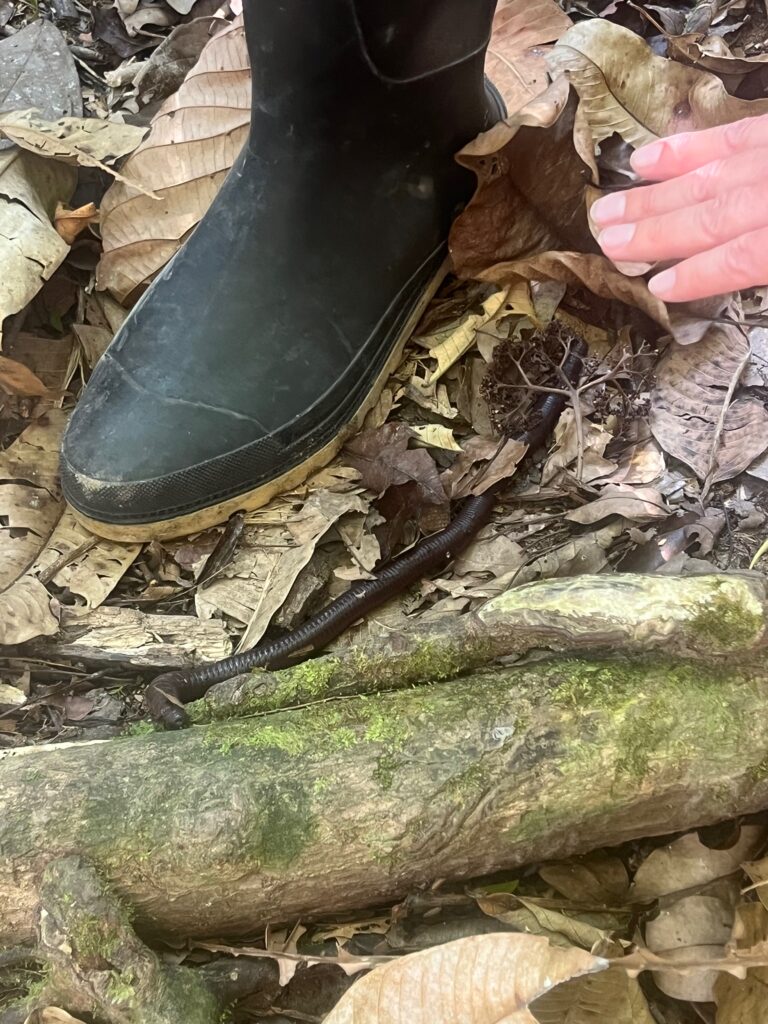
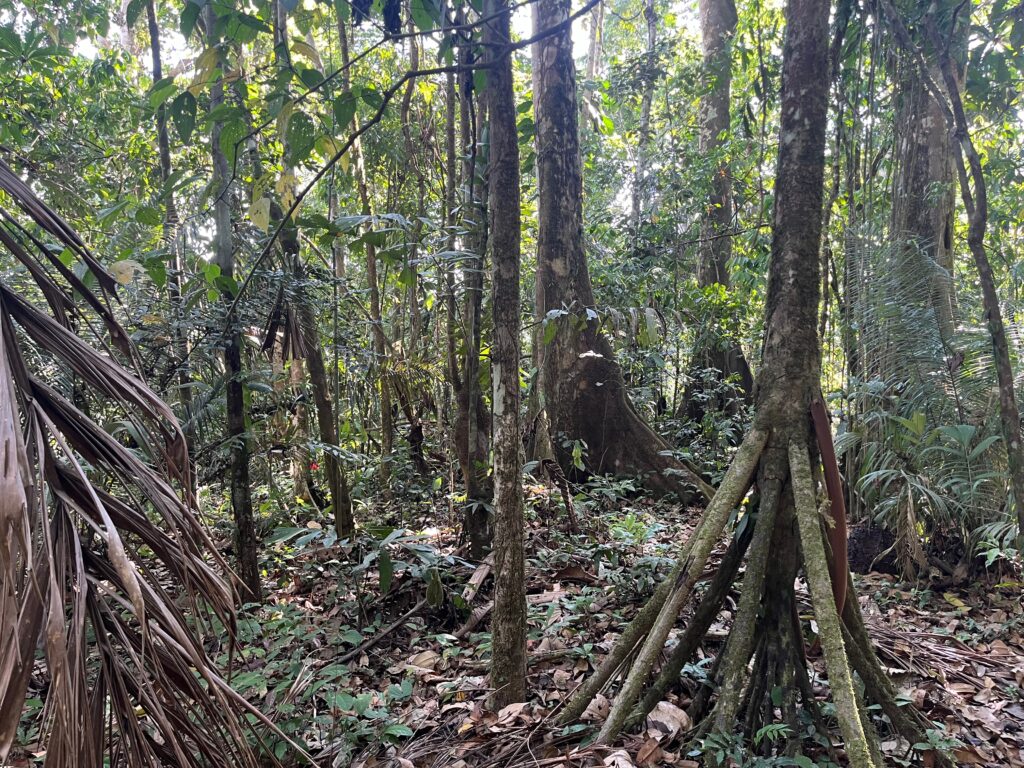
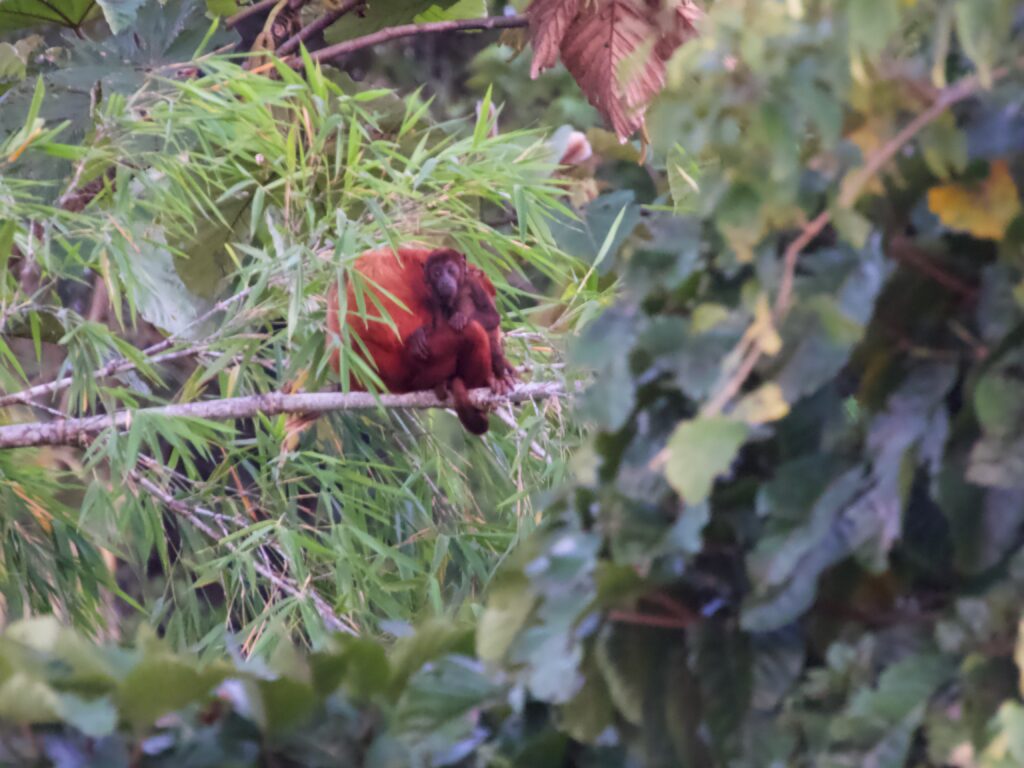
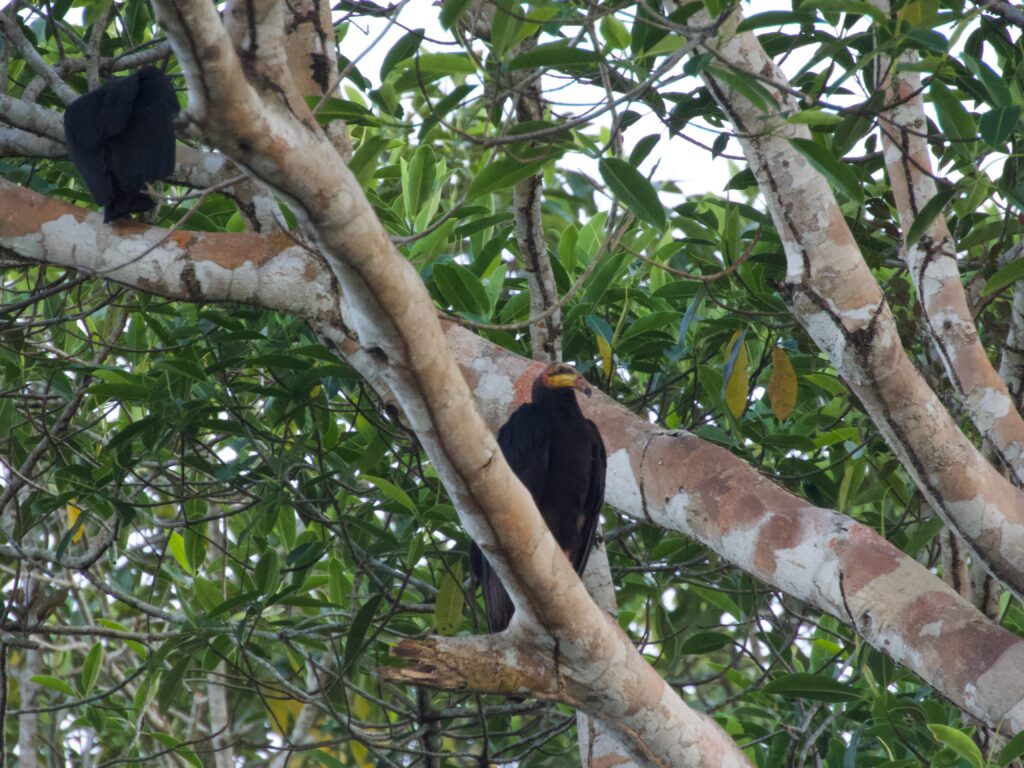
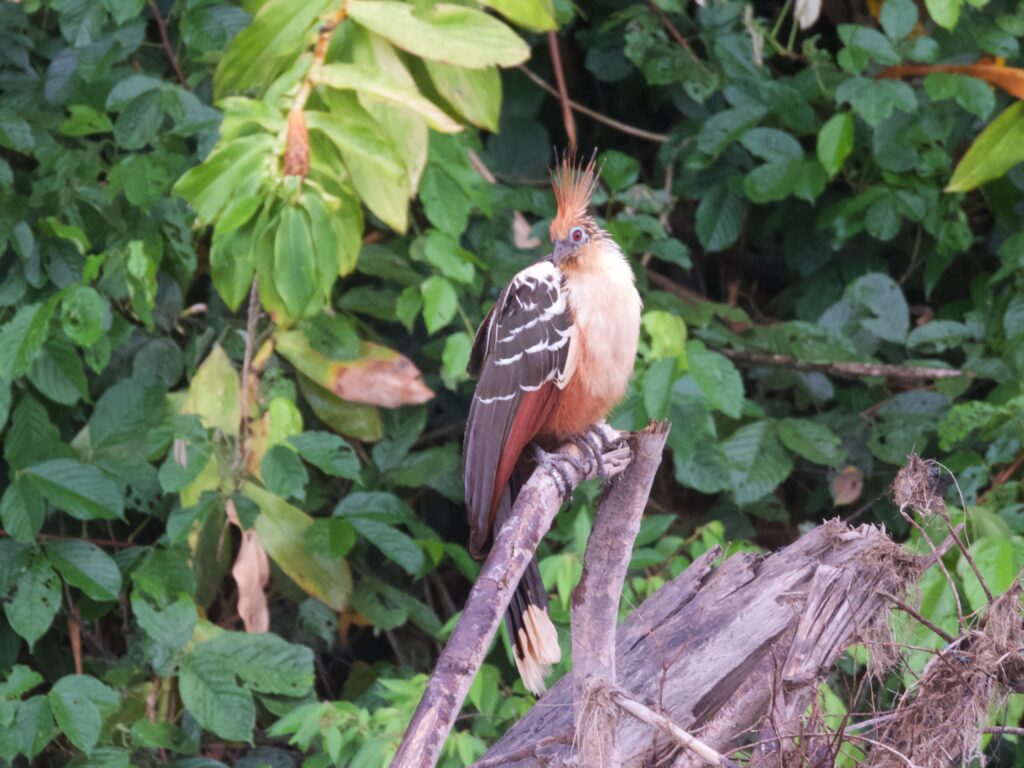
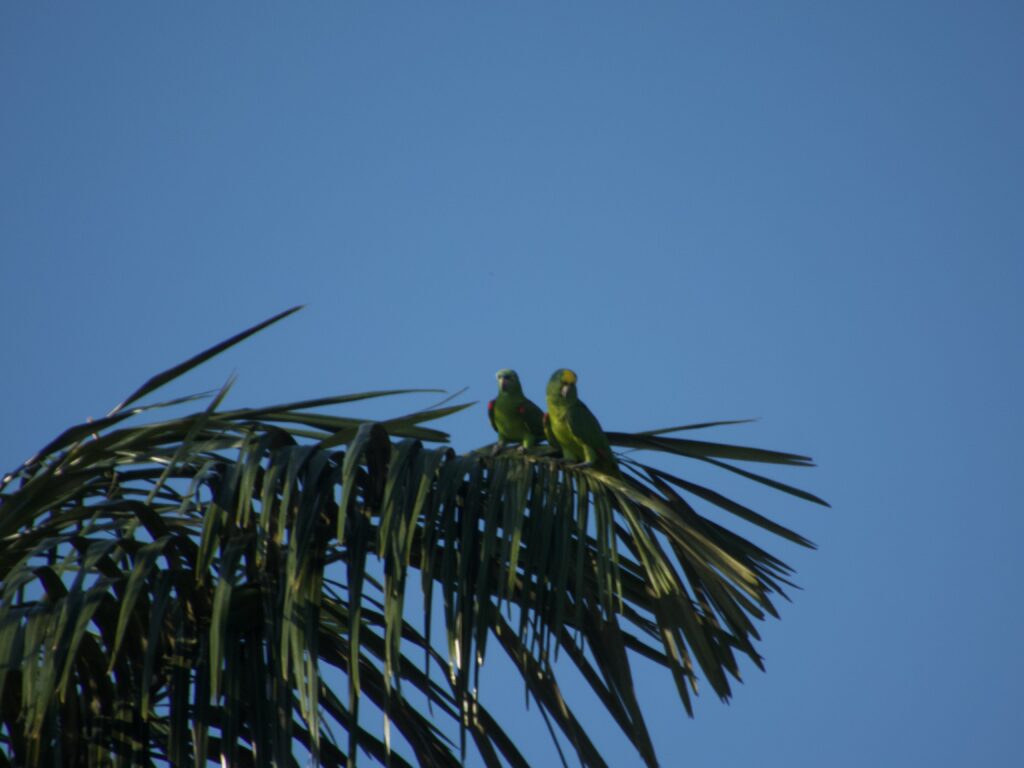
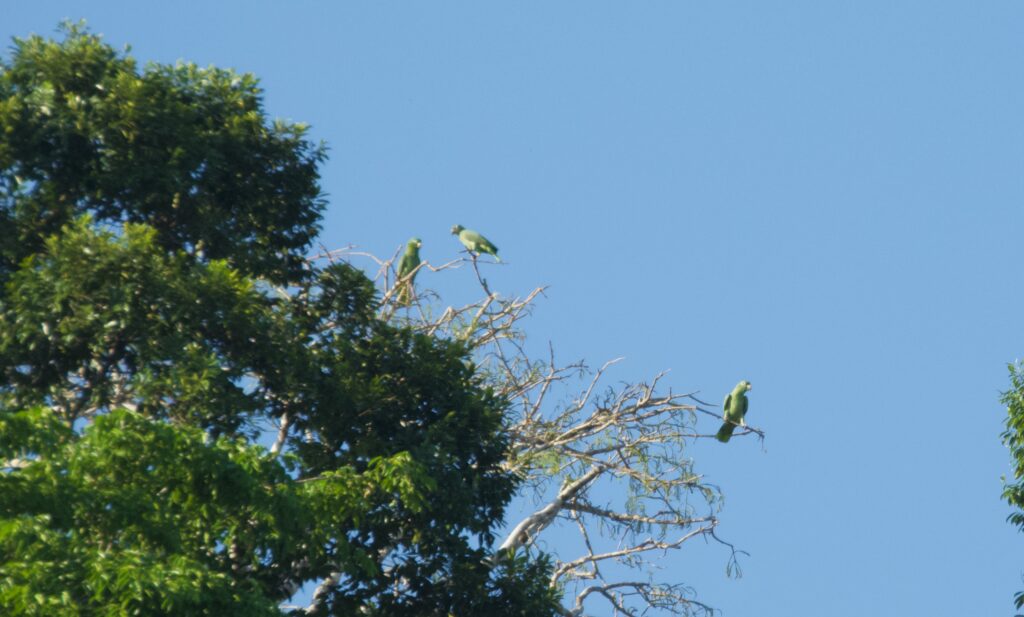
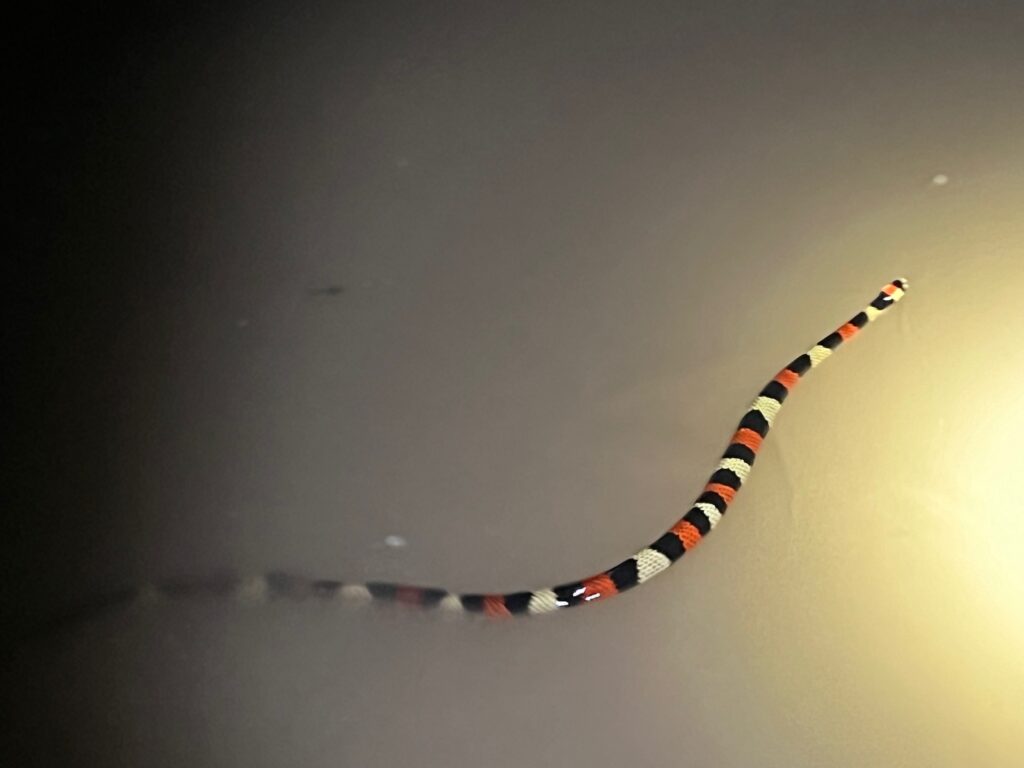
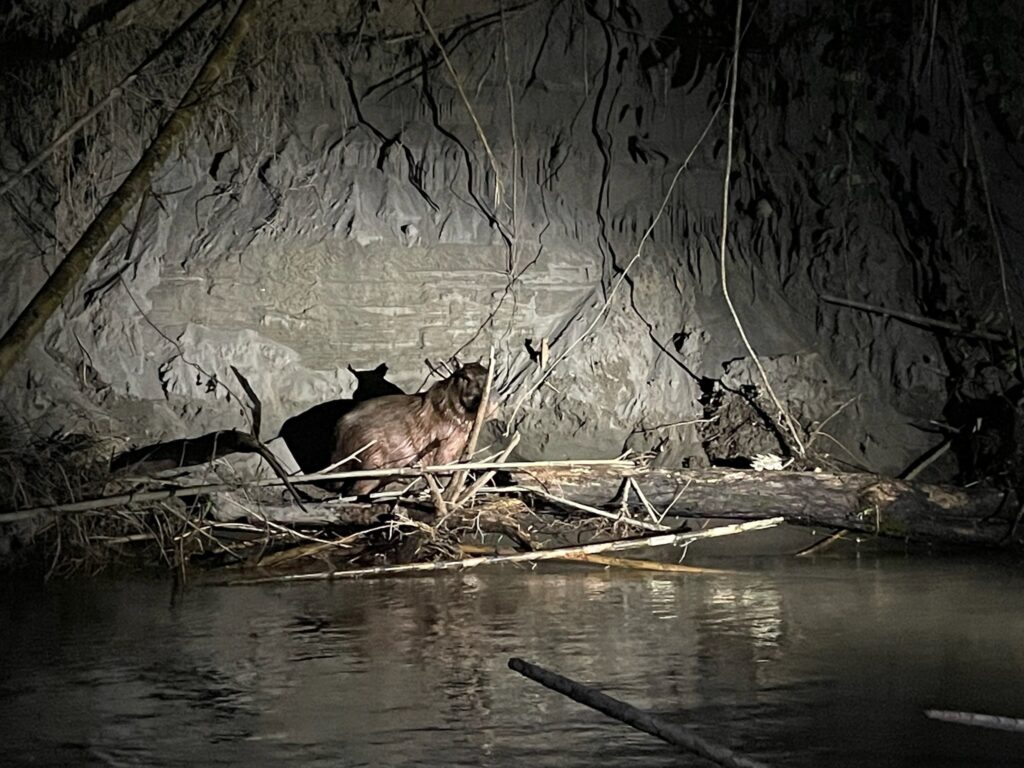
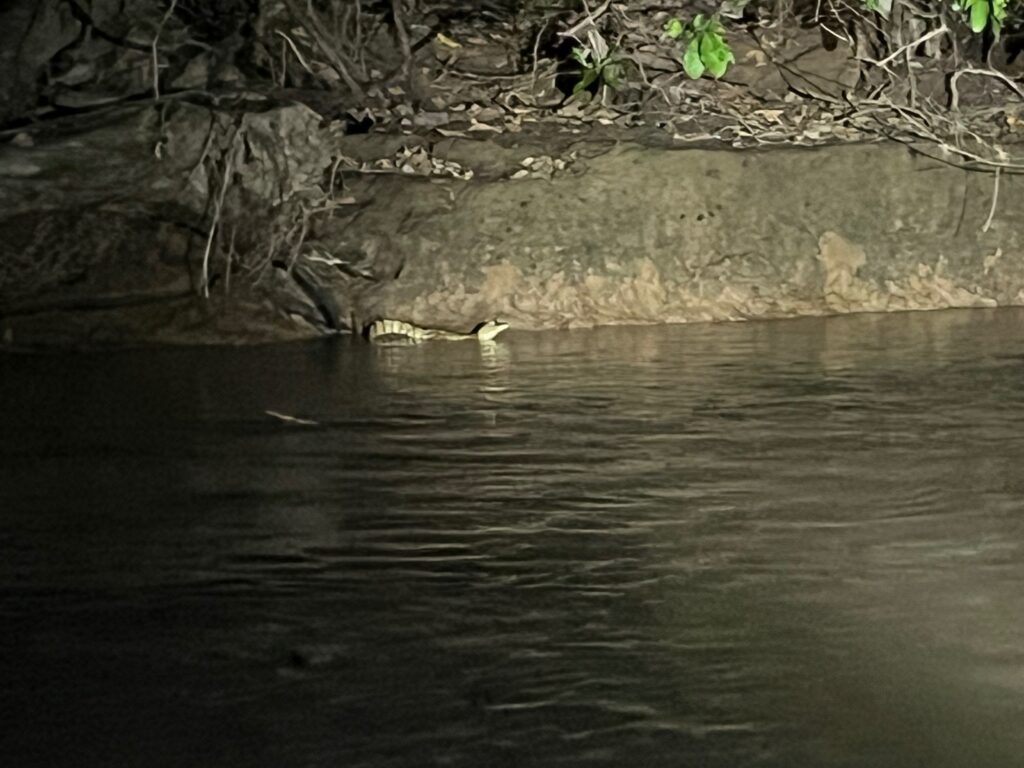
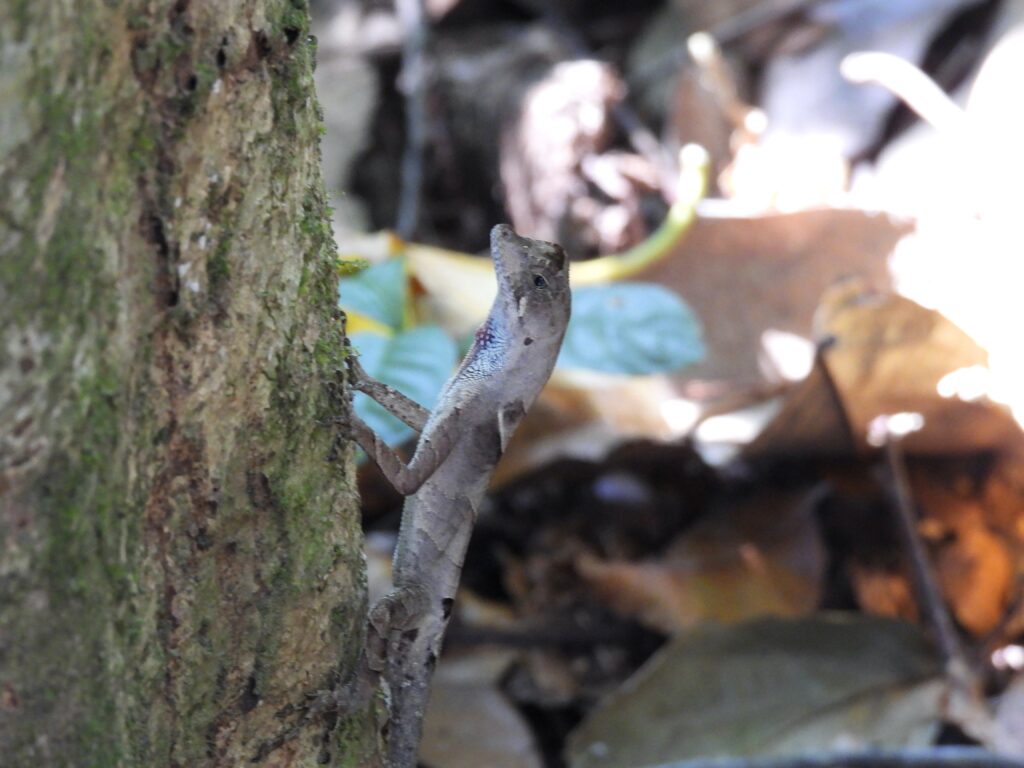
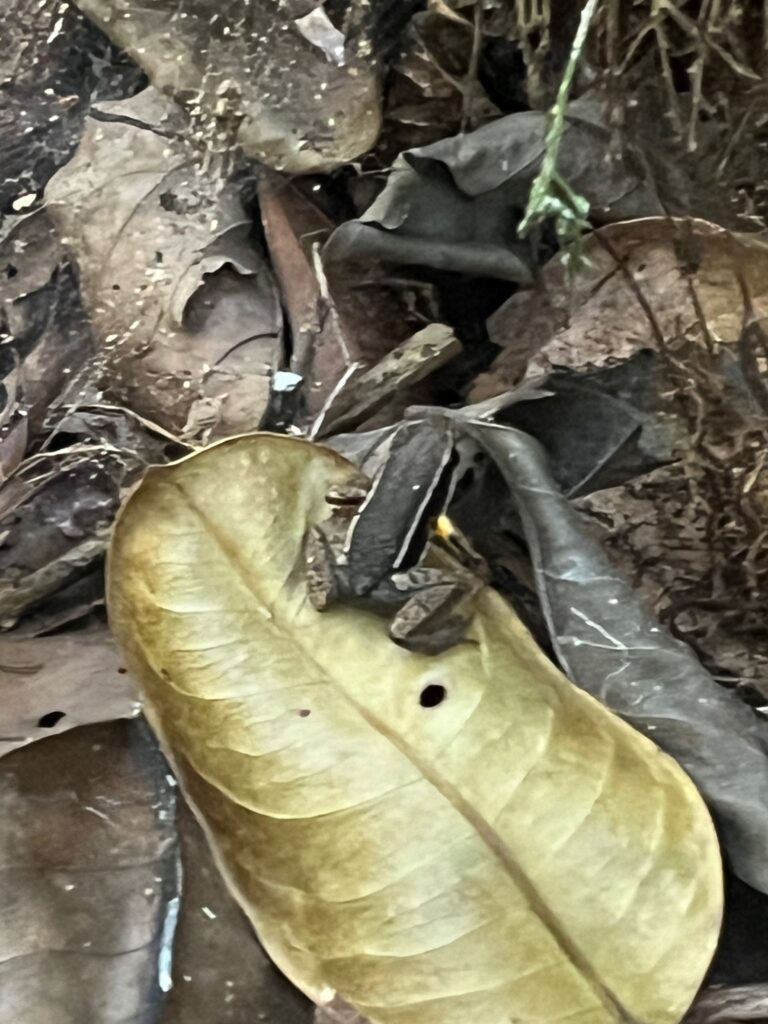
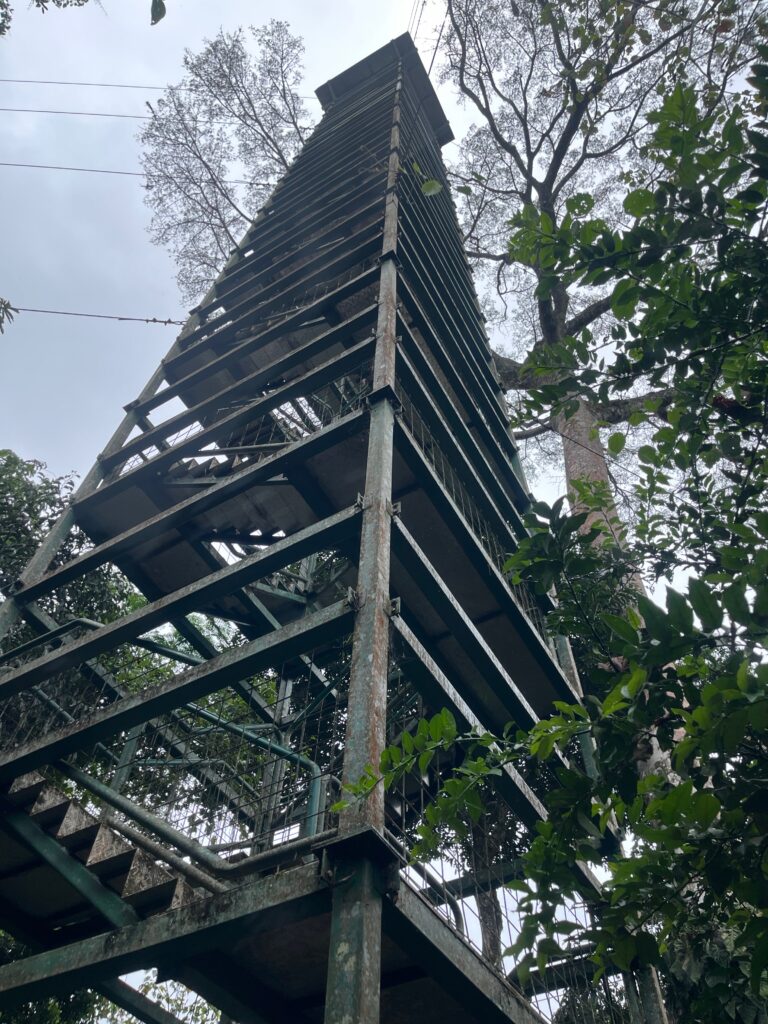
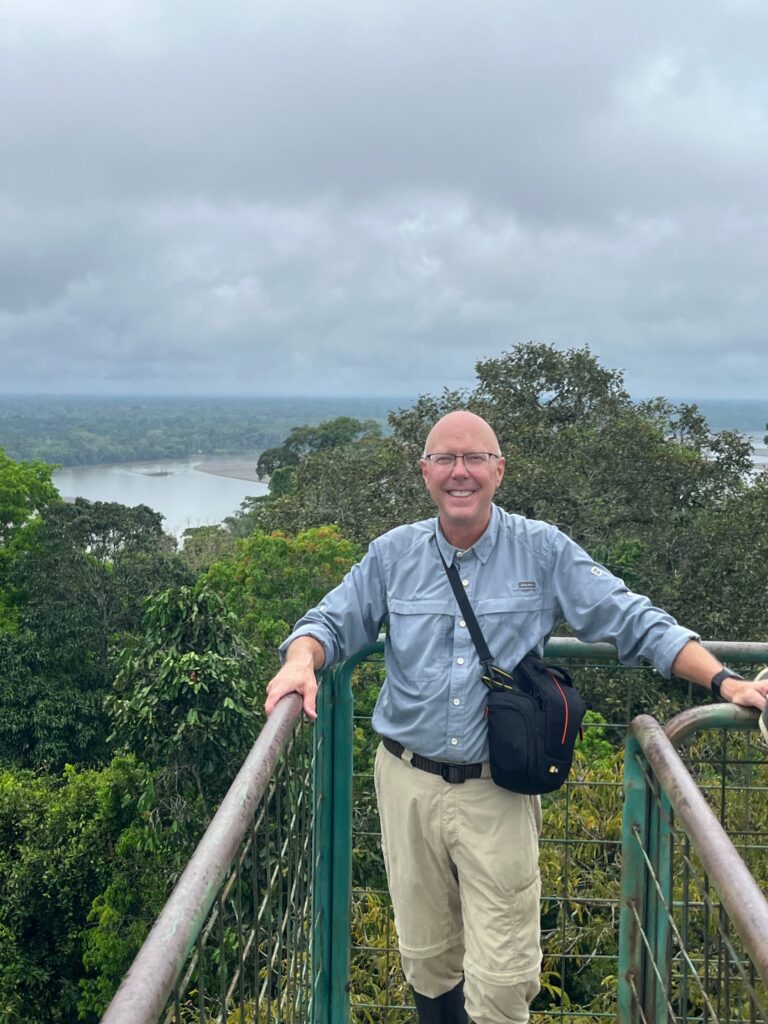

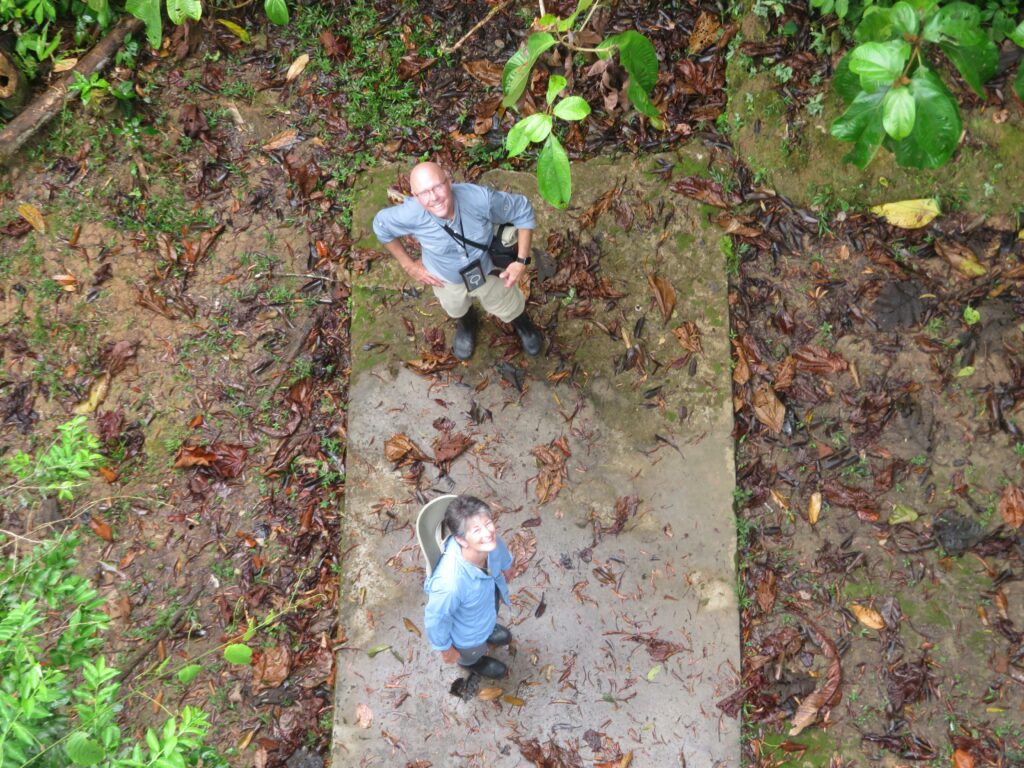
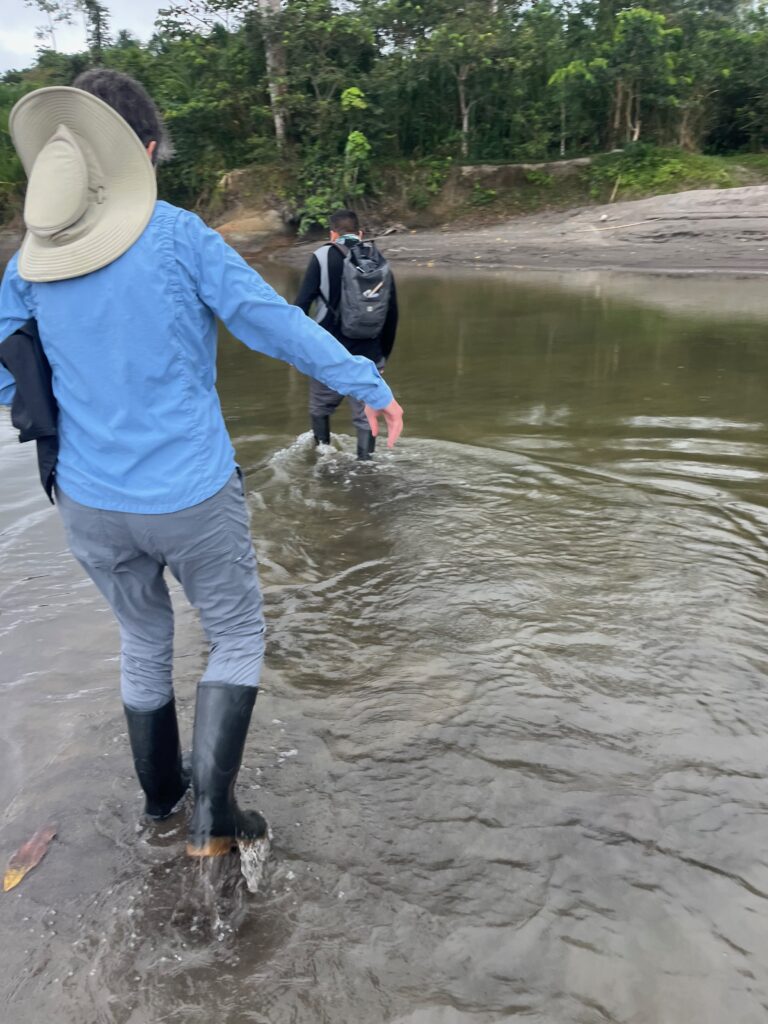
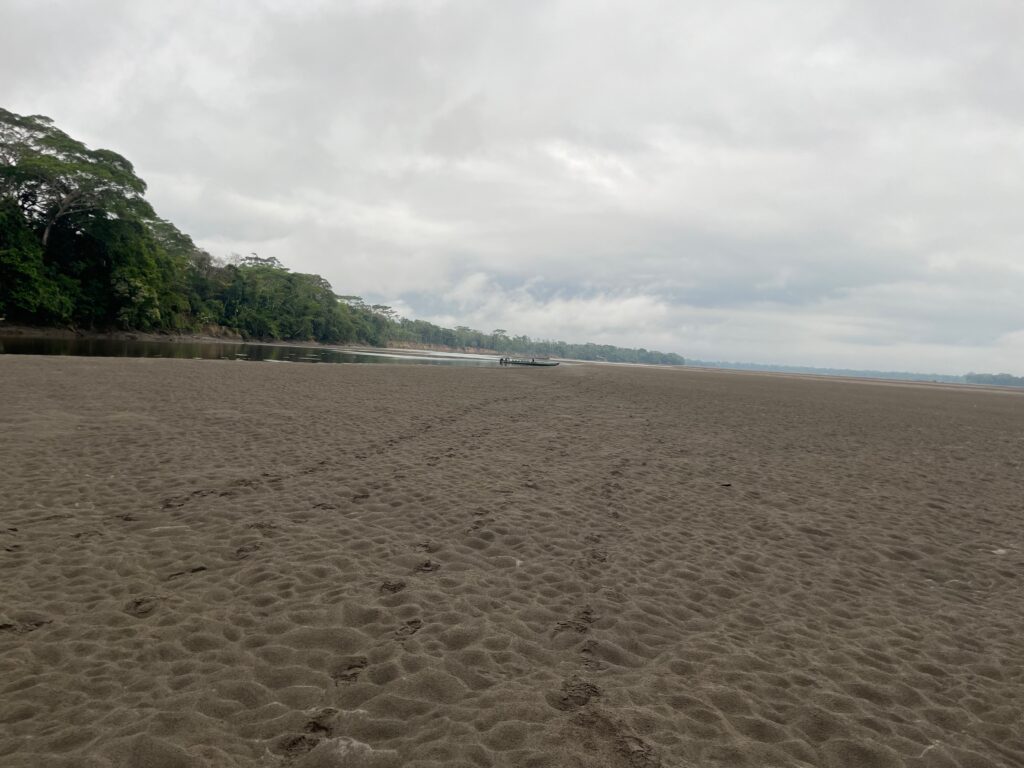
Local Community Visits. We visited a couple of communities along the river during our Amazon jouney. The first was a visit to a Kichwa women’s community project to learn about the indigenous lifestyle along the Napo river, their ancestral culture, and their community. The project is called Sani Warmi, with “Sani Isla” being the name of the indigenous community, and “Warmi” meaning “women” in the Kichwa language. According to their website, the women create diverse and beautiful artisan handicrafts, from pottery to woven baskets, beadwork, and wooden carvings of animals, canoes, spears, and oars. They have also produced coffee and artisan chocolates using cacao grown, fermented, and dried in the community. The income and opportunities created through these projects supports the community’s efforts to protect the 50,000+ acres of land owned by Sani Isla, parts of which are in the famously biodiverse rainforest of Yasuni National Park and Cuyabeno Nature Reserve. The women are active leaders in forest and biodiversity conservation and often participate in conferences and other events to share their expertise in community and women-led sustainable projects and conservation. With more than a decade of successful project experience, they offer a model to women in communities with less external support, and their initiatives have inspired similar projects in the region. For purposes of our visit, we received a tour of the project’s massive garden, which included cacao trees, yuca plants, plantains, pineapples, palm trees, and more. We were then given the opportunity to make our own lunch entree which consisted of fish and heart of palm wrapped in a leaf and grilled over the fire. The entree was accompanied by plantains and grilled chontacuro grubs (tasted like bacon). We were also given the opportunity to eat a live grub, which I heartily embraced as a bucket list item (I always wanted to compete in the unusual food eating challenge on the reality show “Survivor”). Alas, the grub did not taste like bacon when raw. For more on this tasty treat, see the websites here and here. After further exploration of, and purchases from, the project’s gift shop, we were given the opportunity to use a blowgun to shoot at targets about 30 feet away. The blowgun was long and heavy, but the group did surprisingly well in its efforts to hit the targets!
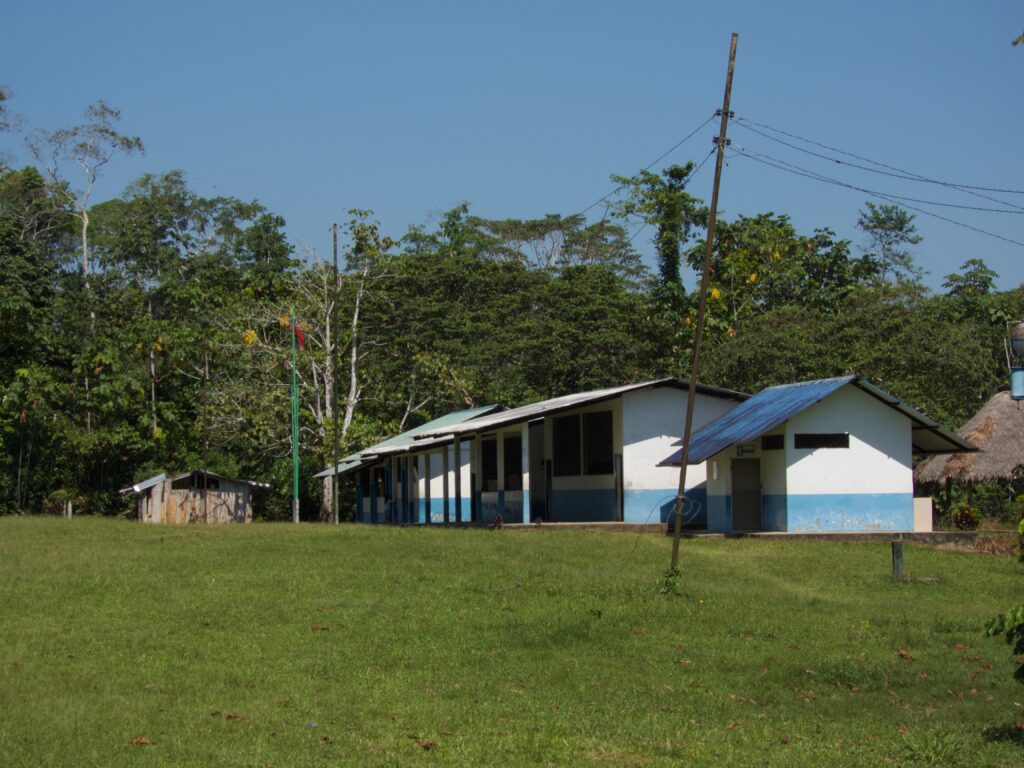
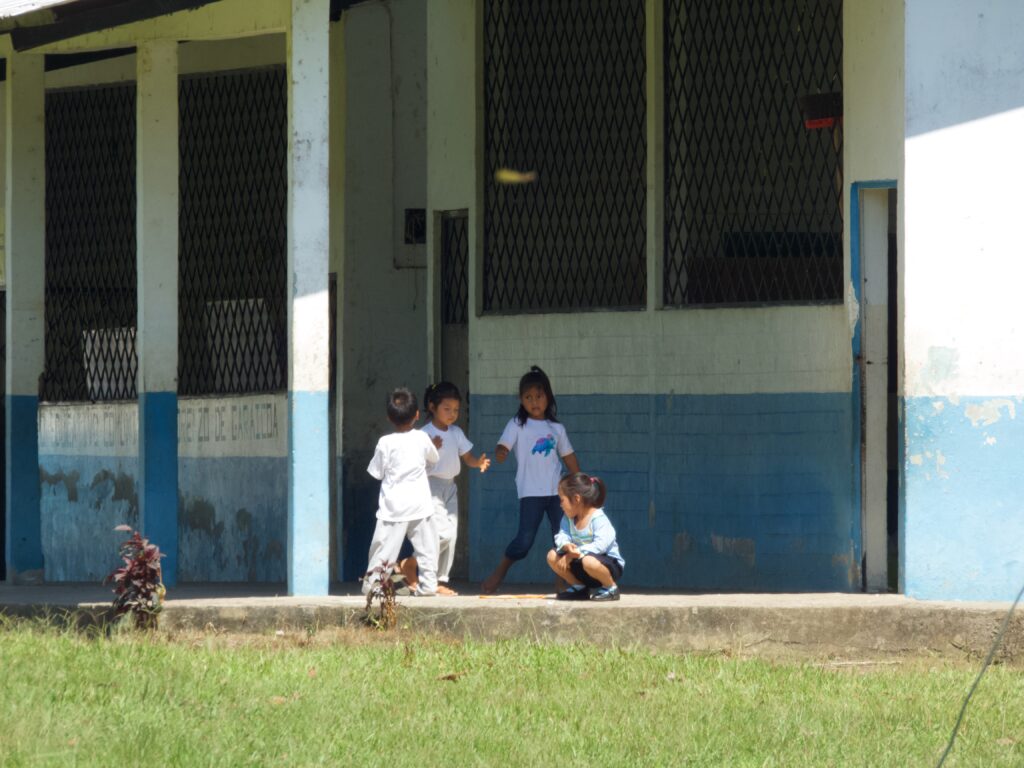
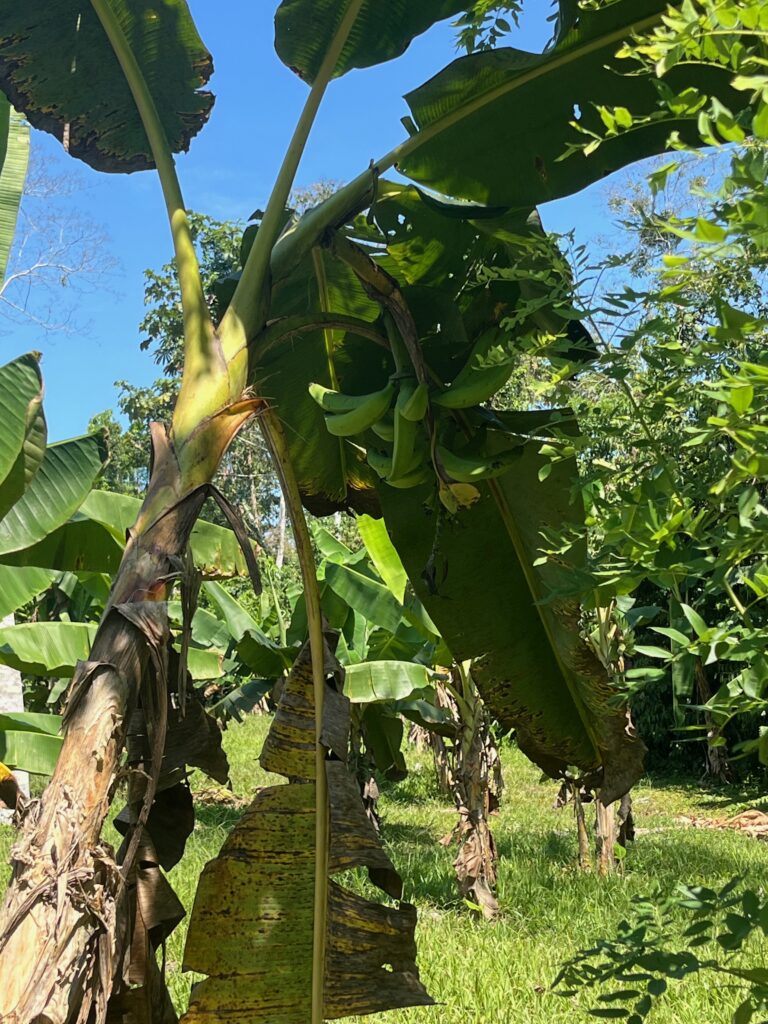
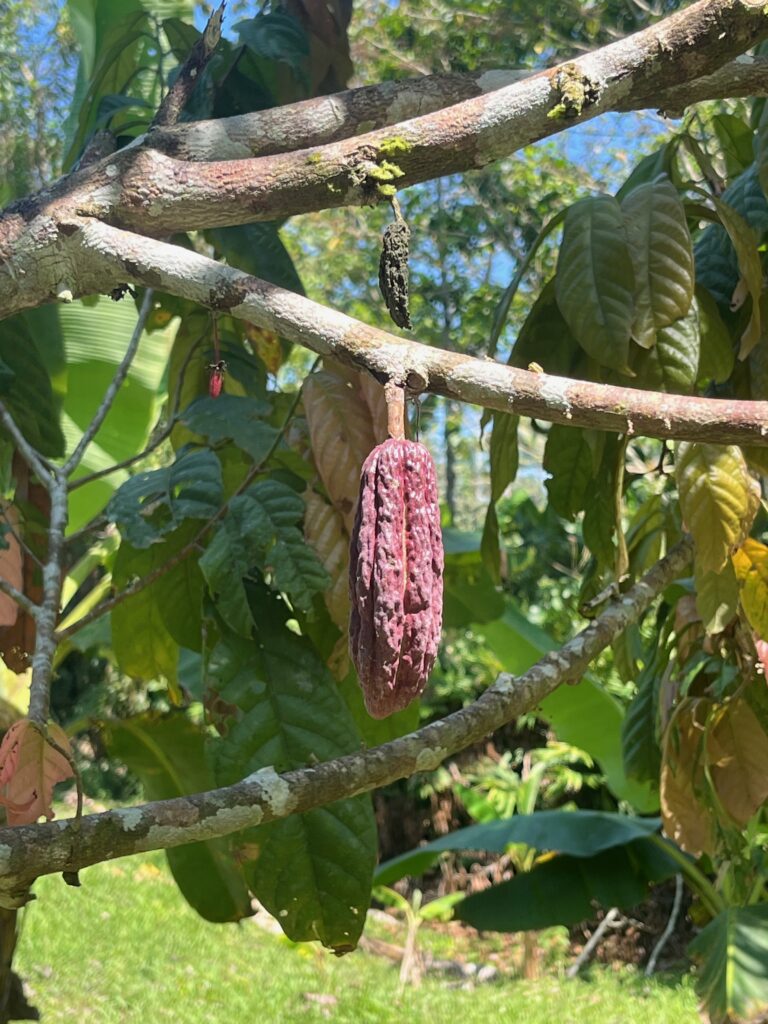
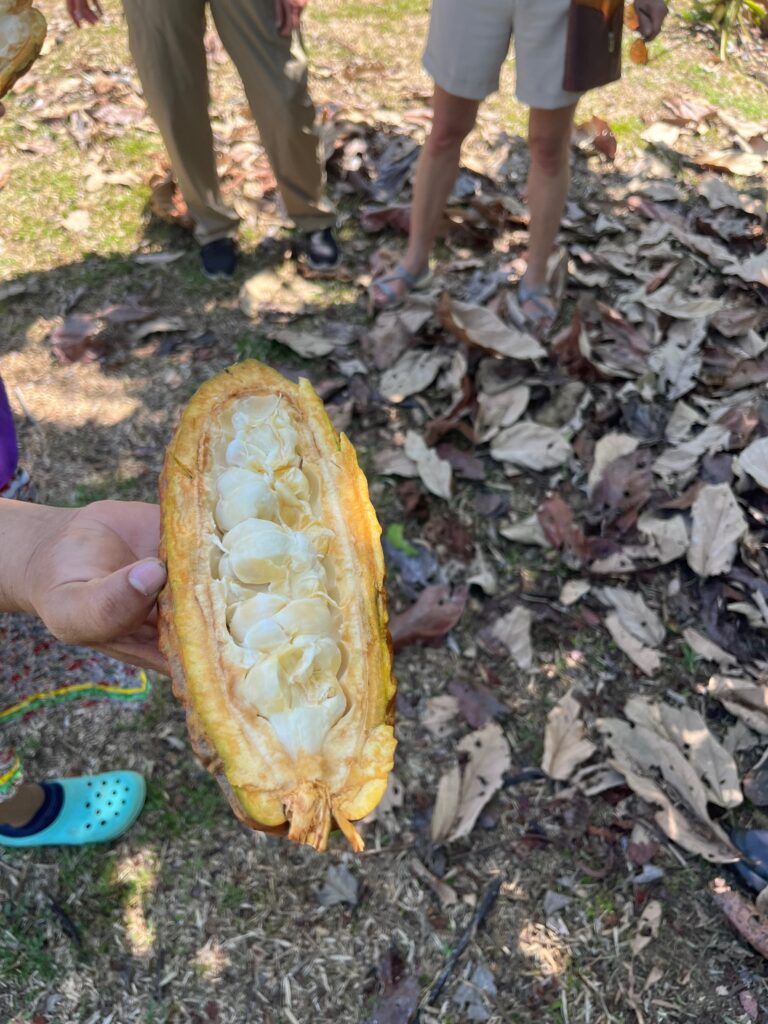
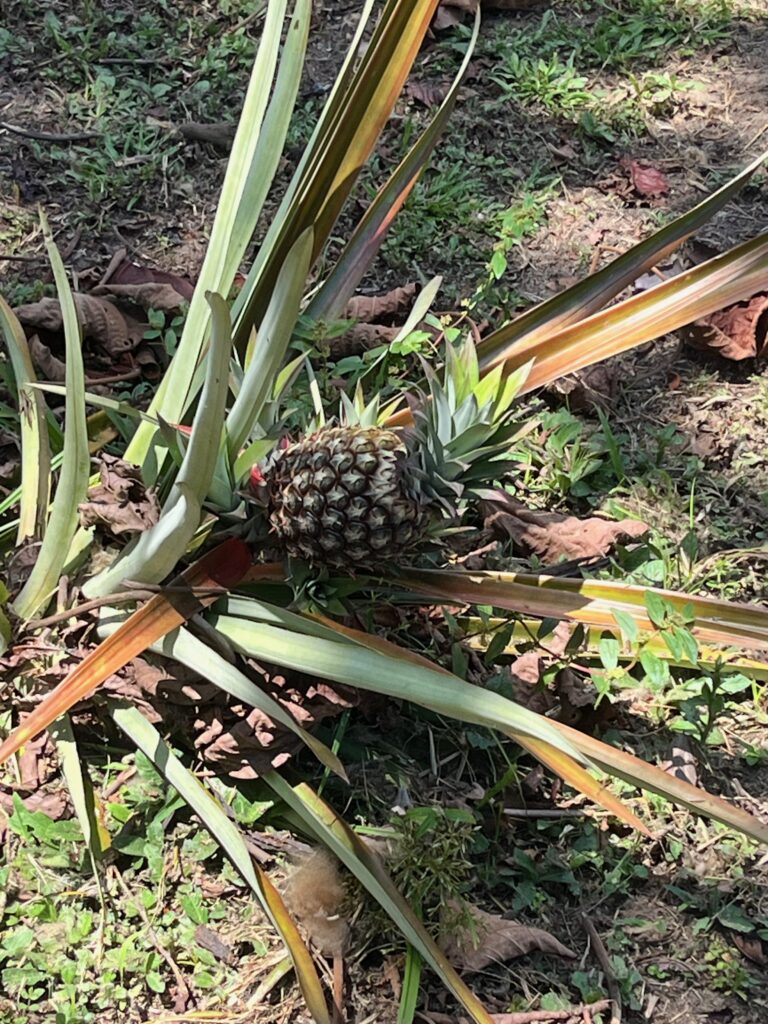
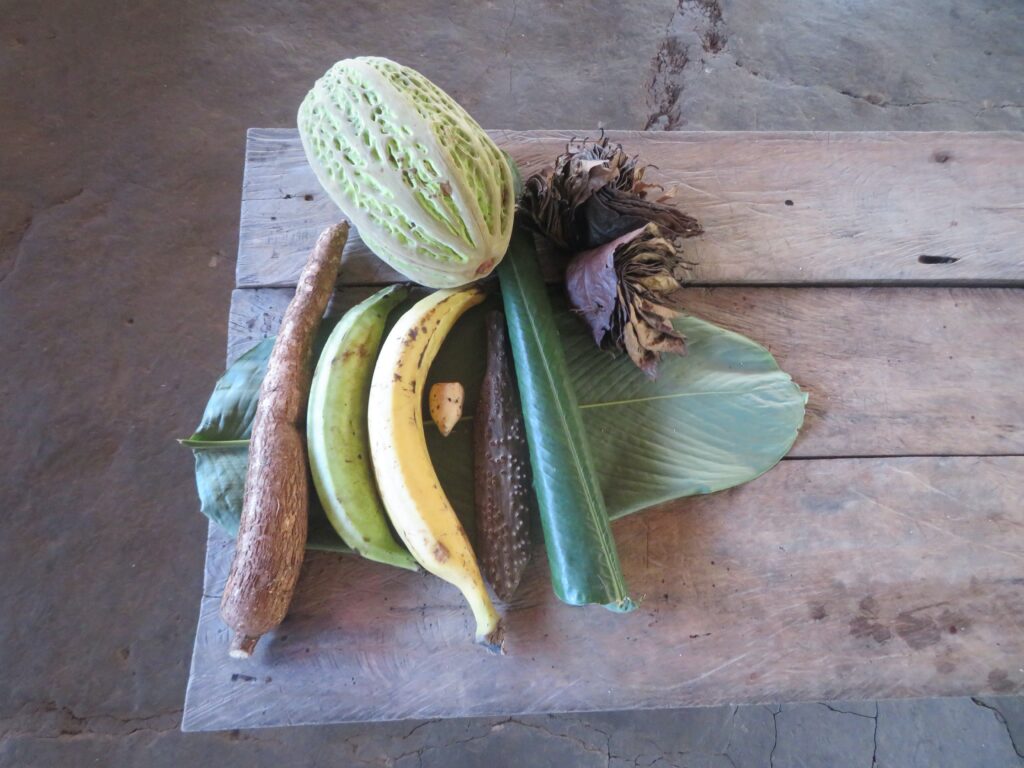
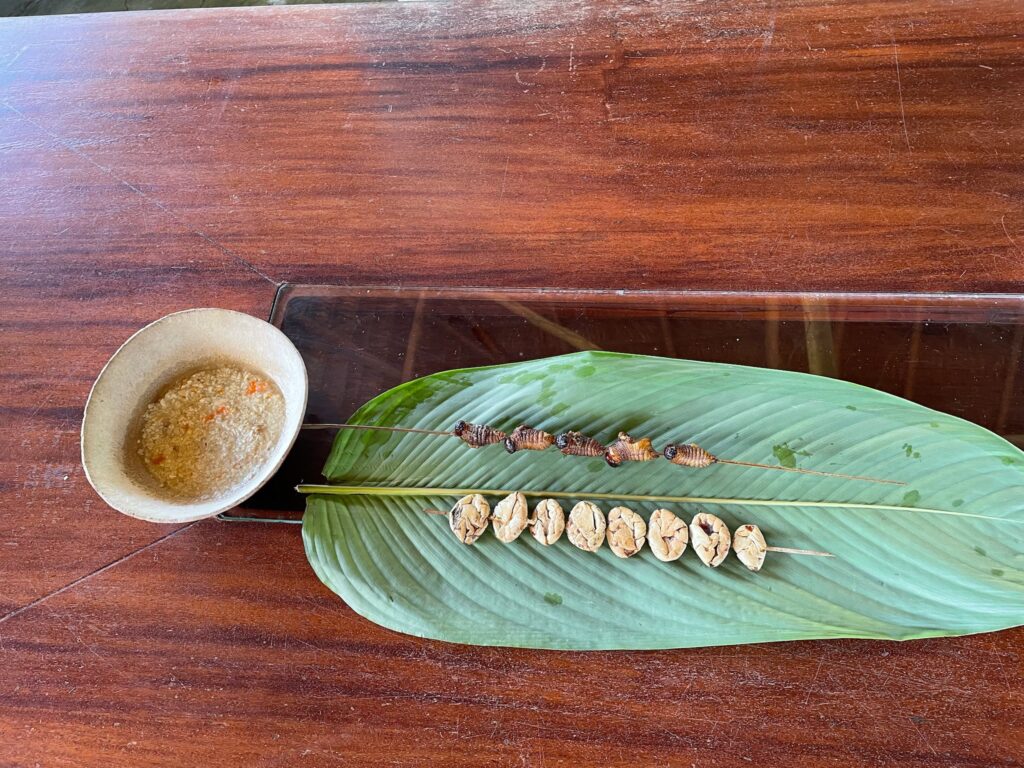
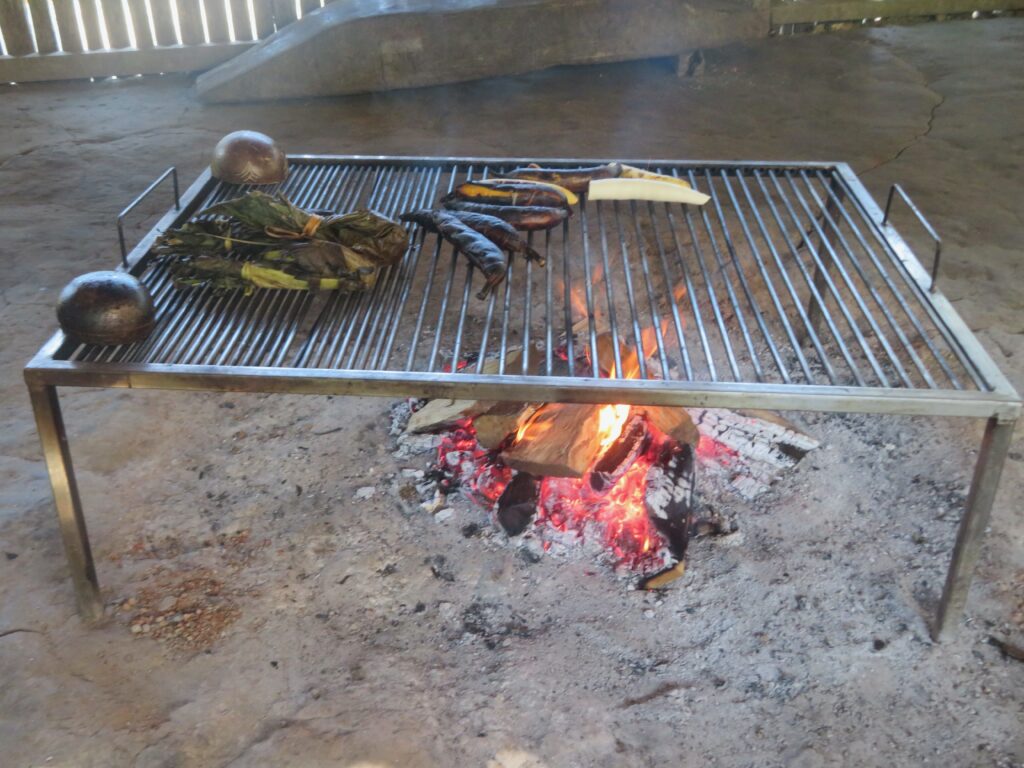
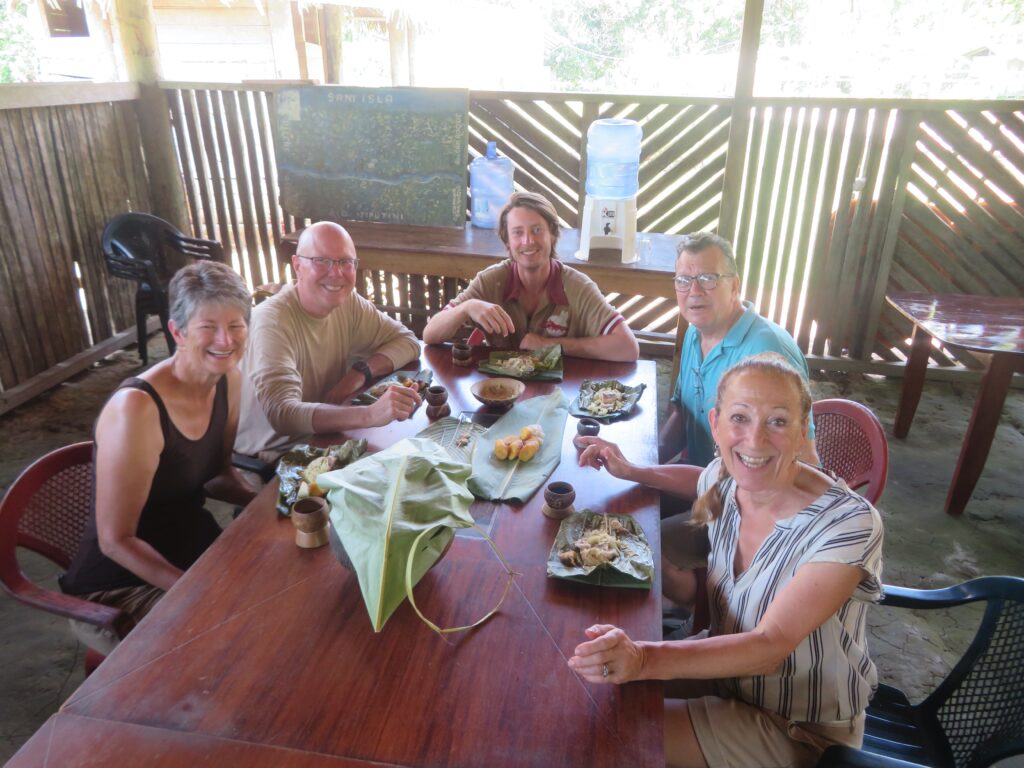
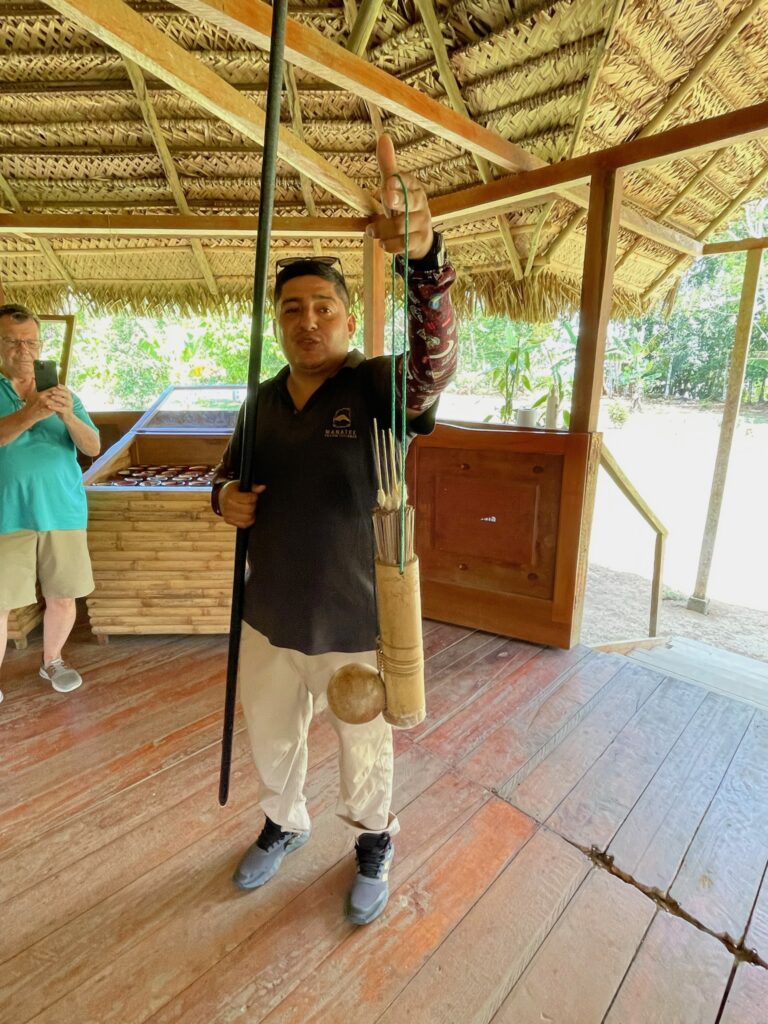
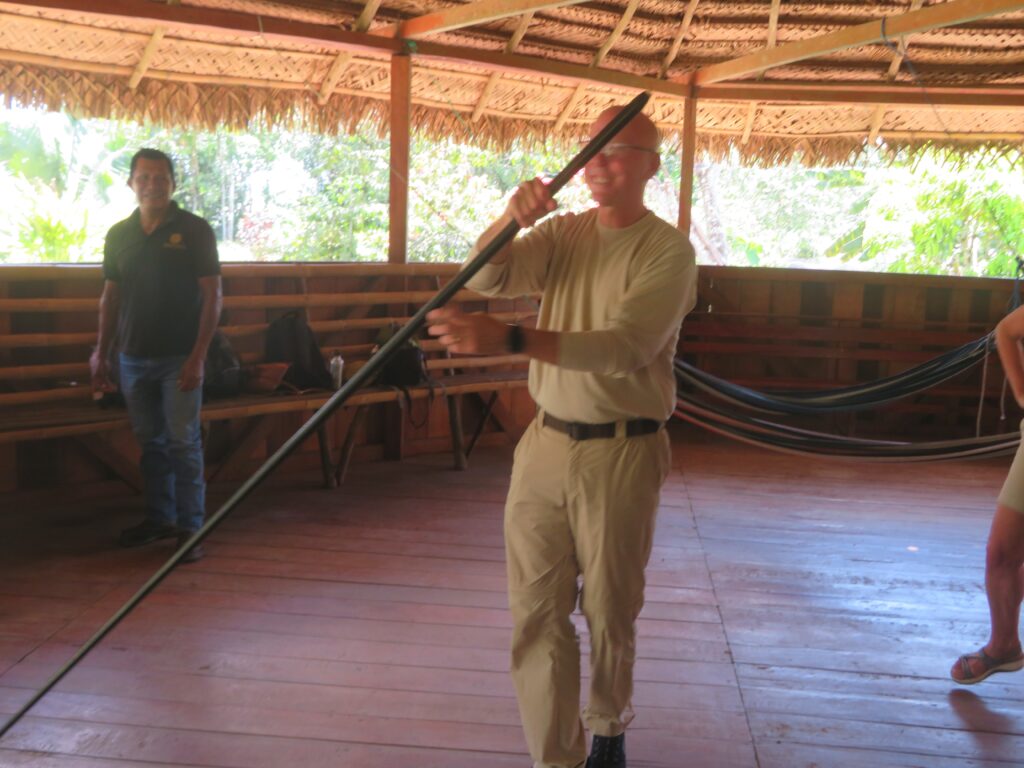
A Tour of the Lower Napo River. Our tour of the lower Napo River focused on a search for the elusive Pink Dolphin by exploring two narrow, beautiful tributaries of the Napo. We began with a ride in the motorized canoe, always searching the shore for wildlife that may come to the water to drink. We stopped briefly at the Ecuadorian town of Nuevo Rocafuerte to get clearance to operate the canoe through the area of the Napo River that borders both Ecuador and Peru. We then navigated southeast, took a left at the Aguarico River until we reached the Dolphin Lodge Napo River. The lodge is part of the Yaku Warmi project (‘Women of the Water’) which is entirely owned by the indigenous community of Martinica. This isolated Kichwa community is fully committed to protecting the rainforest and its broad sweep of species. The lodge is adjacent to the Cocaya River, which benefits from a Martinica program developed with biologists to bring the pink dolphins to the river and its closely guarded lagoons. Even now, these dolphins are hunted for their meat and especially for their teeth. Regrettably, river dolphin numbers are drastically low and they remain listed as endangered species. But thanks to community engagement and the Yaku Warmi project, several dolphin offspring have been recorded.
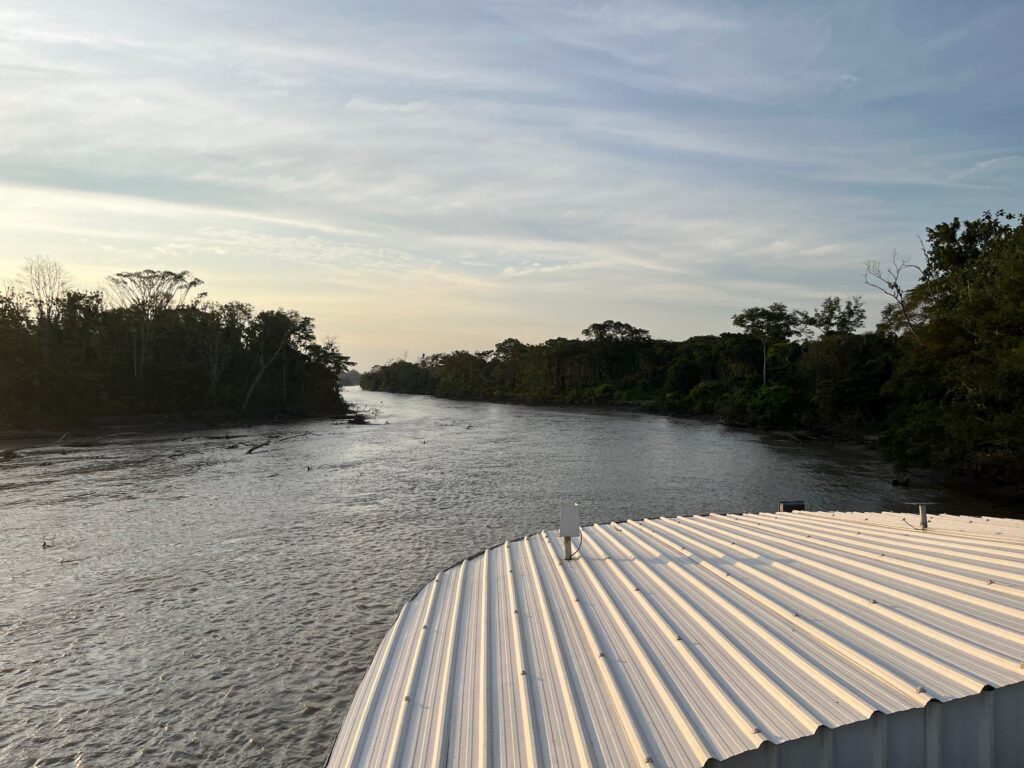
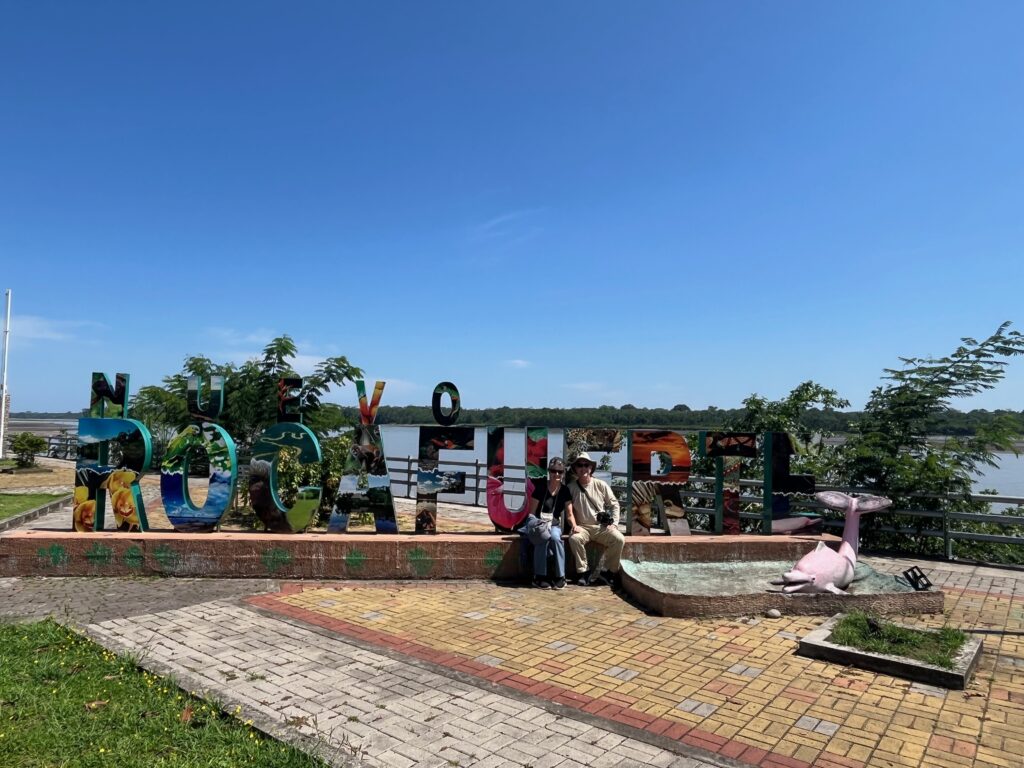
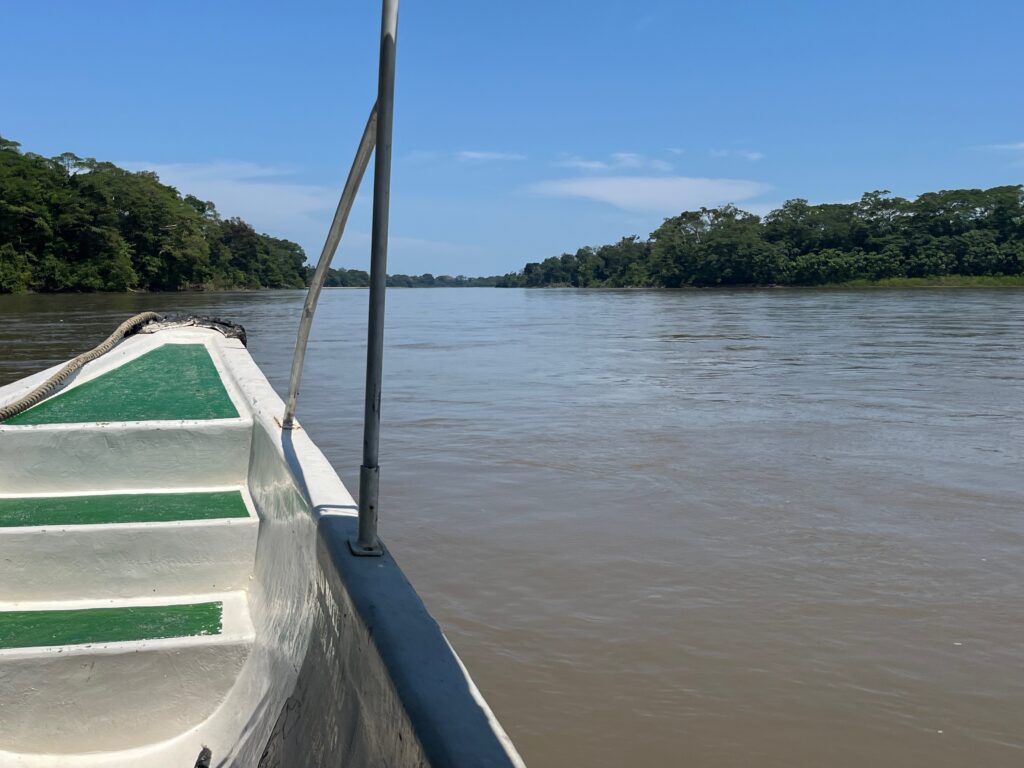
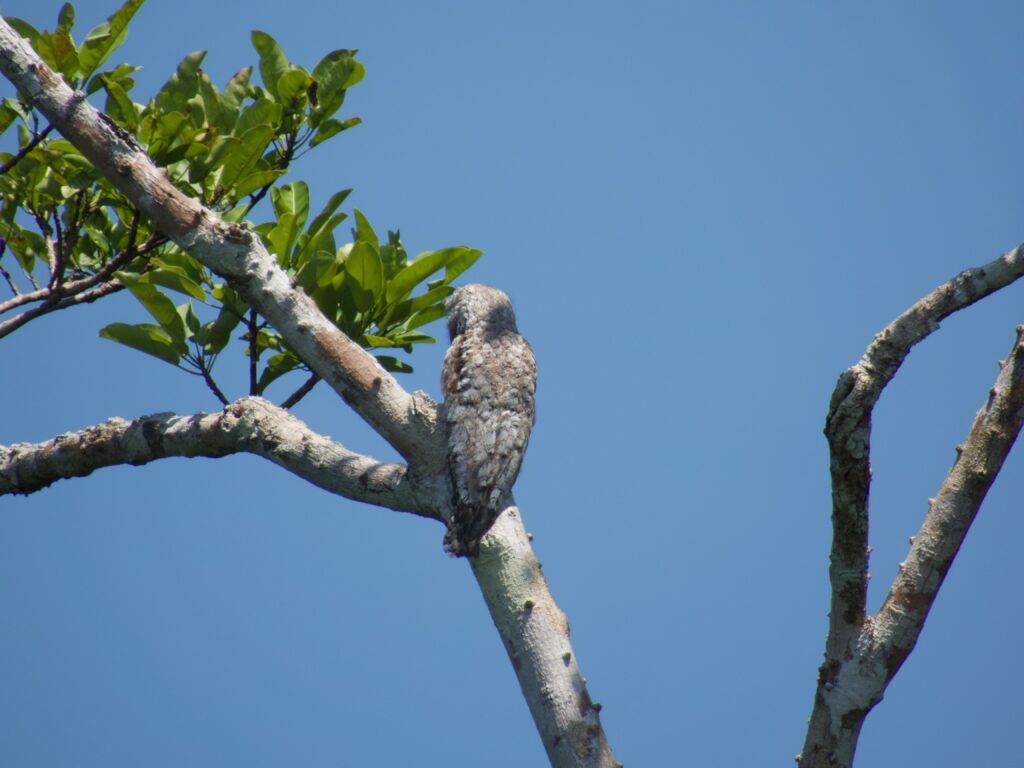
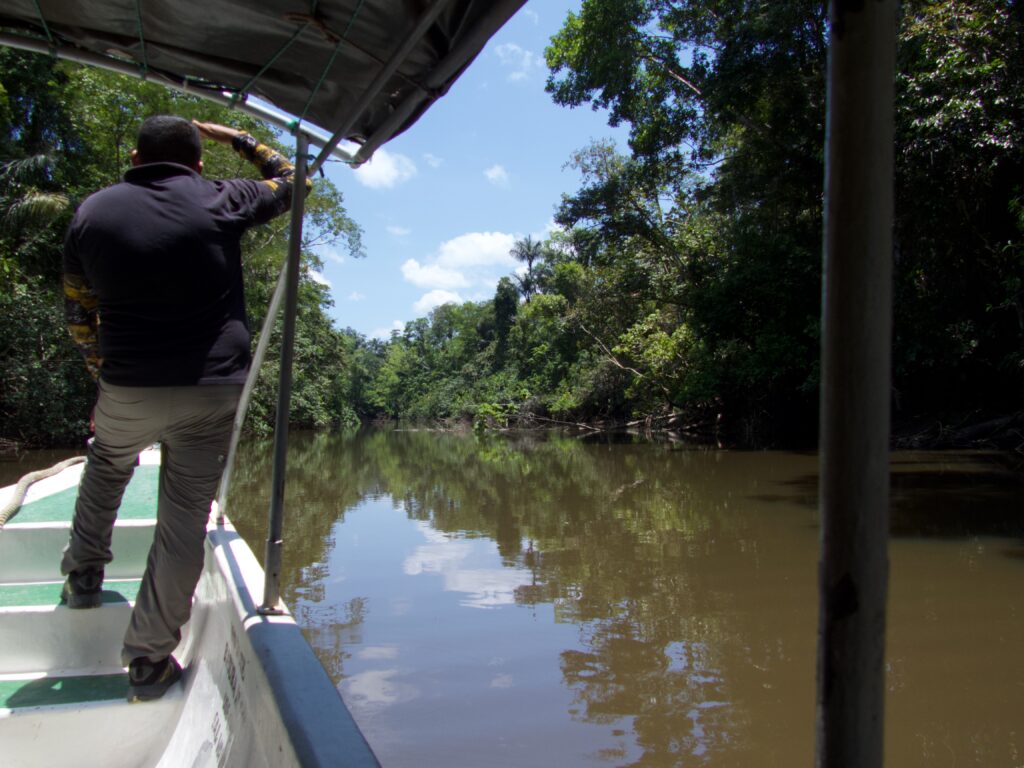
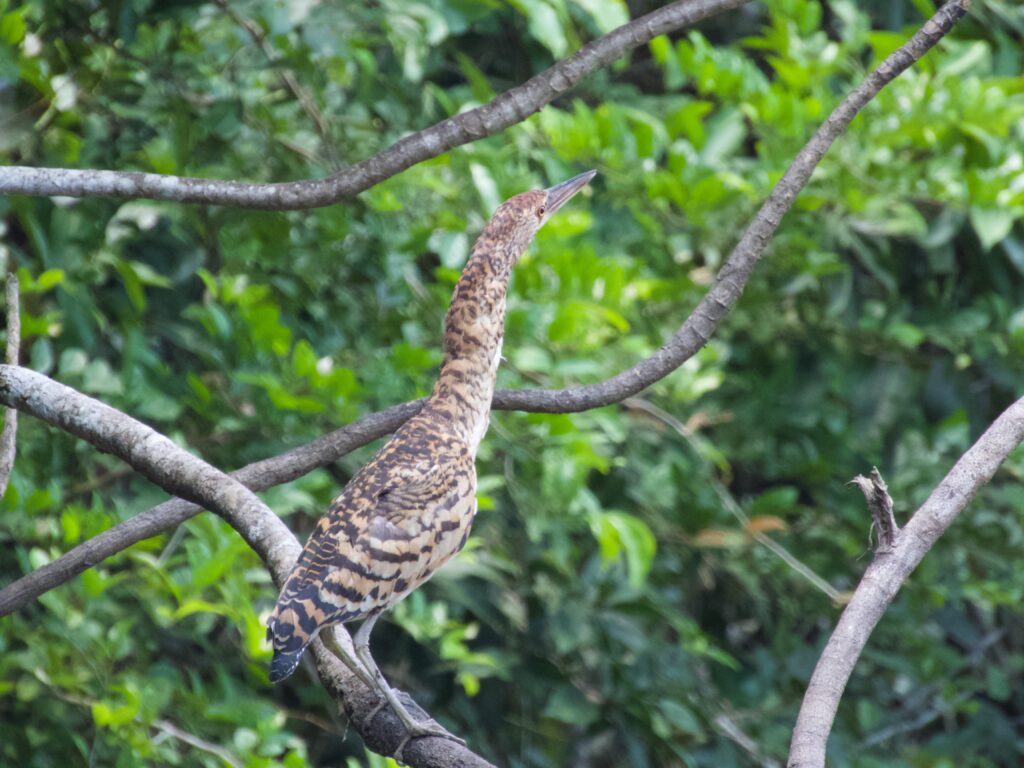
After a brief stop at the lodge to meet the staff and to try (unsuccessfully) to lure the dolphins to the lodge’s dock by banging on a pipe lowered in the water (the dolphins are apparently very curious about unusual sounds), we returned to the canoe and headed up the Cocaya River. The Cocaya River is a “blackwater” river, meaning it has a dark color and slow-moving current that flows through forested wetlands. The river’s dark color comes from tannins, a chemical found in the leaves, wood, and fruit of trees, that are released into the water as organic matter decays. As a result of its dark color, the point at which the blackwater Cocaya River meets the “whitewater” Aguarico River creates an interesting contrast.
While traveling up the Cocaya River we looked for wildlife, went fishing for catfish and piranha, and continued to look for he pink dolphin. Having good luck in seeing wildlife and catching fish, but no luck finding the dolphins, we headed back downstream to return to the Napo River and make our way to the Yasuni River to continue our dolphin search. The Yasuni River is southwest of the Napo River and is located within the Yasuni National Park. The water flow of the Yasuni River had probably the strongest flow of any river we had seen thus far. After stopping at the ranger station, we proceeded up the river to the Jatuncocha Lagoon, where we saw a large black caiman, “stinky turkeys”, and many other species of birds. As the afternoon was growing late, we headed back to the ship.
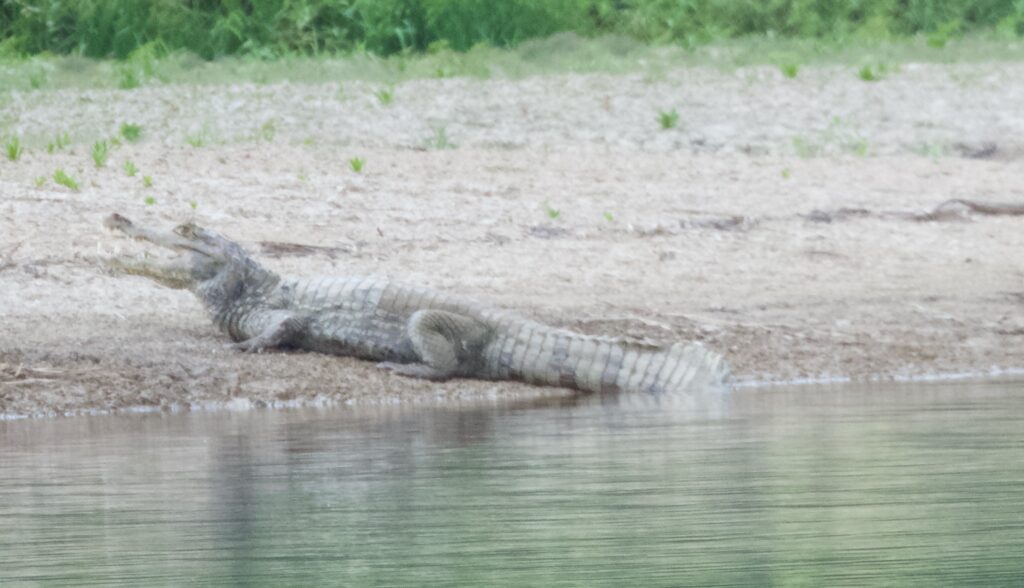
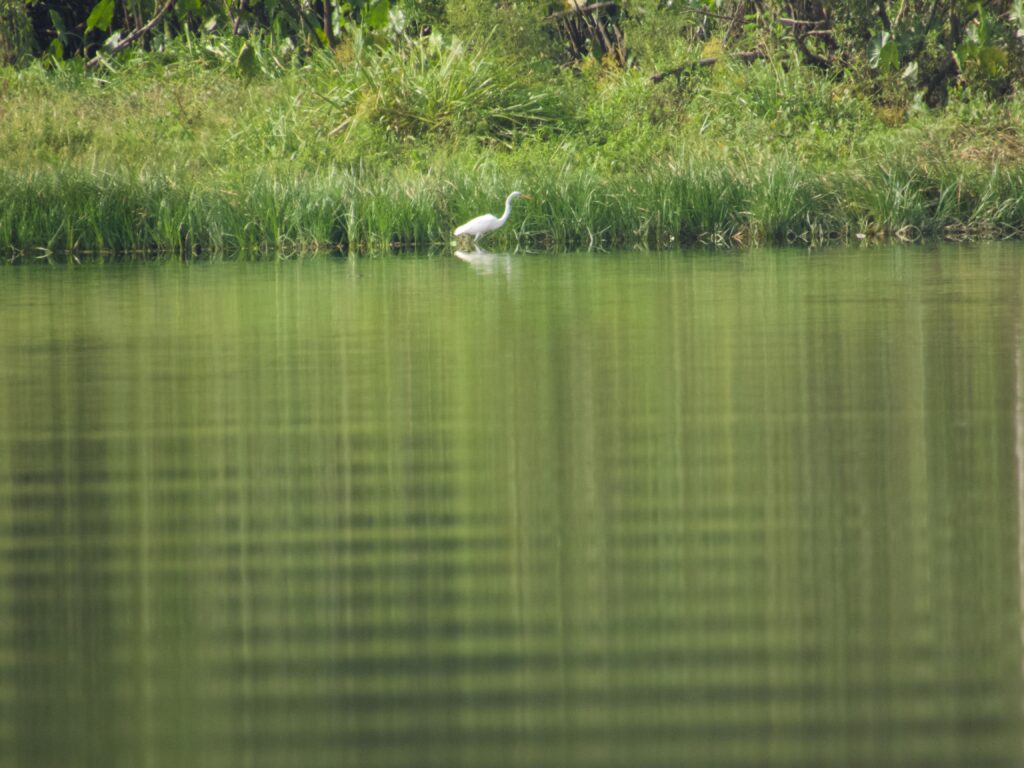
Unexpectedly, just as we passed the ranger station, we saw three pink dolphins, two adults and one juvenile! We stopped and attempted to photograph the dolphins, but they were wary of our presence and stayed quite a distance from the canoe, visible only when they surfaced for air. We then headed back to the boat, stopping briefly to visit a native Secoya village and buy a small souvenir.
Meals Onboard the Anakonda
The meals onboard the boat were incredible, both in terms of variety and preparation. Breakfasts were served utilizing various “stations” including beverages, fruits, breads, meat, and made-to-order eggs. The menus for the lunches and dinners are shown in the following table.
| Sunday Lunch: Appetizer: Andean Salad (Andean cheese, strawberries, grapes, quinoa, yogurt, and mayonnaise) Main: Turkey with mushroom sauce and white carrot puree or Penne pasta with Bolognese or Leek Sauce Dessert: White chocolate Panna Cotta |
| Sunday Dinner: Appetizer: Octopus Tiradito Main: Grilled steak in pepper sauce, sweet potatoes & asparagus or Ravioli with Napolitano sauce or four cheese sauce Dessert: Pumpkin cheesecake |
| Monday Lunch: At the Amazon Dolphin Lodge, which included: Appetizer: Lettuce, tomato, cucumber, and baby corn salad Main: Grilled chicken and pork skewers, grilled vegetables, and seasoned potato wedges Dessert: Alas, I did not get a photo of the dessert! |
| Monday Dinner: Appetizer: Ecuadorian chicken soup Main: Trout in butter capers sauce, spring risotto & vegetables or Fettuccini with fruit di mare (octopus, squid, and shrimp) or pesto sauce Dessert: Golden berry tartlet |
| Tuesday Lunch: Appetizer: Shrimps cocktail Main: Chicken roll with bacon, honey mustard sauce and corn patty or Vegetarian lasagna Dessert: Lemon cream |
| Tuesday Dinner: Dinner this evening was grilled on deck as it was the departure dinner for the other three guests on the boat. Appetizer: Four different sushi rolls with tuna, melon, salmon, and octopus Main: Prawns, grilled pork loin, pasta salad, lettuce salad and grilled vegetables Dessert: Once again, I did not get a picture of the dessert (I guess I was excited to start eating it! |
| Wednesday Lunch: Appetizer: Ecuadorian tuna and shrimp soup Main: Roasted pork accompanied by rice croquets & vegetables or Fusilli Alfredo sauce or pesto zucchini sauce Dessert: Vanilla pudding (like a bread pudding) |
| Wednesday Dinner: Appetizer: Beef carpaccio Main: Seafood au gratin with green plantain puree & vegetables or Spaghetti with Boscaiola or Kanikama sauce Dessert: Taxo mousse |
| Thursday Lunch: Bag lunch in the canoe which consisted of a chicken salad sandwich on a long roll, chips and other bagged snacks. We believe this meal was the source of my being ill on Thursday evening as the sandwiches were not refrigerated while in the boat…. It should be noted the crew took very good care of me during my illness. |
| Thursday Dinner: Appetizer: Chicken Cesar Salad Main: Beef filet mignon in chimichurri sauce, Andean potatoes & vegetables or Papardelle pasta with carbonara sauce or aglio olio pepperonccini Dessert: Coconut mousse |
| Friday Lunch: I appear to have failed to take a picture of the menu for this lunch. Because I was recovering from being ill overnight, I do recall that my meal consisted of rice, toast, chicken soup, and a banana (3 of the 4 components of the BRAT diet). |
| Friday Dinner: Appetizer: Crepes au gratin stuffed with ricotta cheese & asparagus Main: Sea bass in coconut sauce, green plantain crackers & vegetables or Beef lasagna Dessert: Volcano ice cream with caramel syrup |
| Saturday Lunch: Appetizer: Ecuadorian potato soup Main: Veal in mustard sauce, corn tortilla & vegetables or Parmesan gnocchi & tomato coulis Dessert: Chocolate brownie (with walnuts!) |
| Saturday Dinner: Appetizer: Capresse salad Main: Prawns with cauliflower puree & vegetables or Bolognese Spaghetti Dessert: Tiramisu |
And now, here are some photos of the above meals!
Sunday, September 29
Today we got up at 5:30 am, ate breakfast at 6 am, and boarded a water taxi to transport us back to Coca for our late morning flight to Quito. The crew arranged the water taxi for us as it would be much faster than the motorized canoe. Since the boat was unable to take us back to the site at which we had originally boarded the boat due to sandbars blocking its way, even the water taxi ride took 2 hours and 40 minutes traveling at around 33 mph.
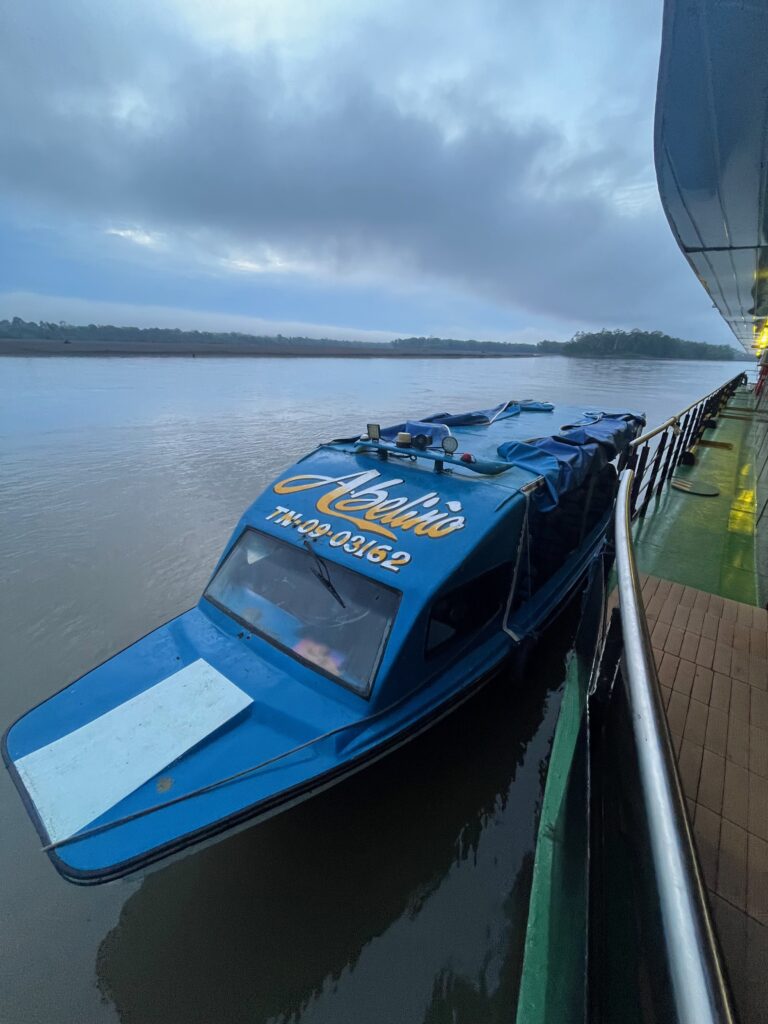
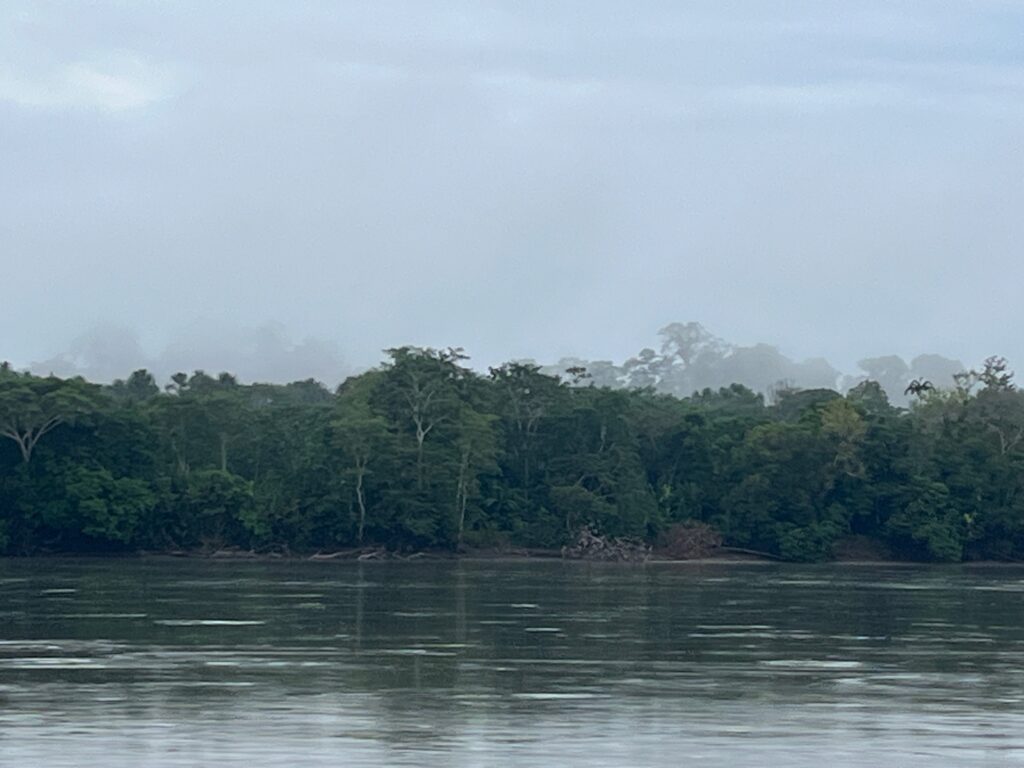
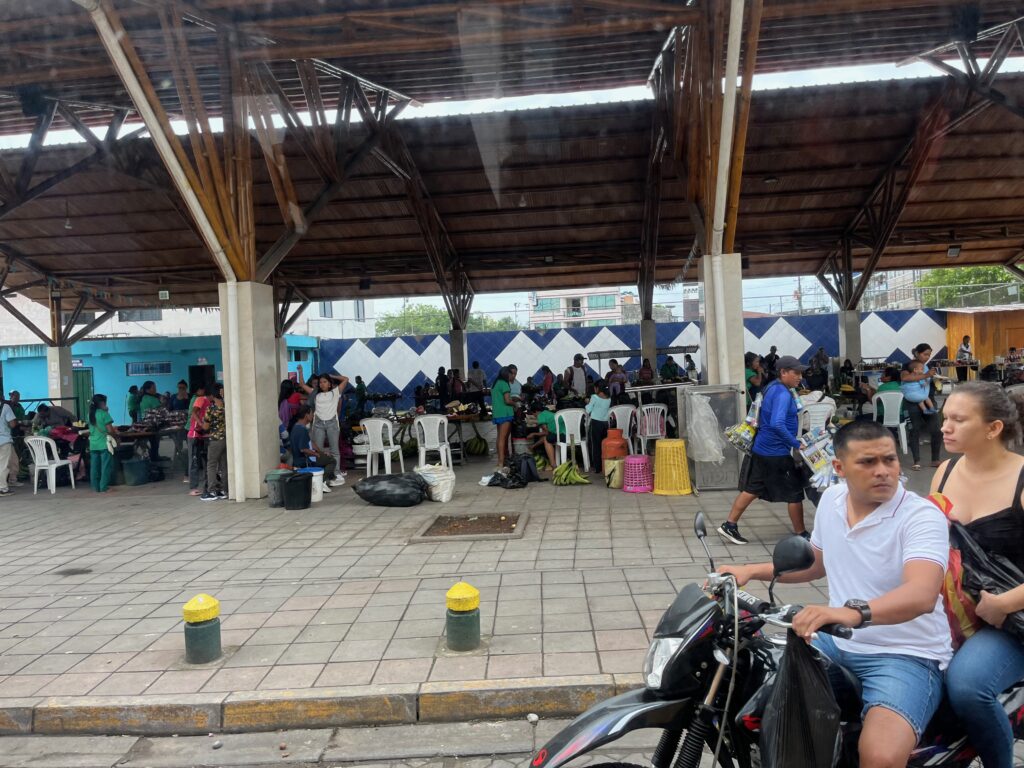
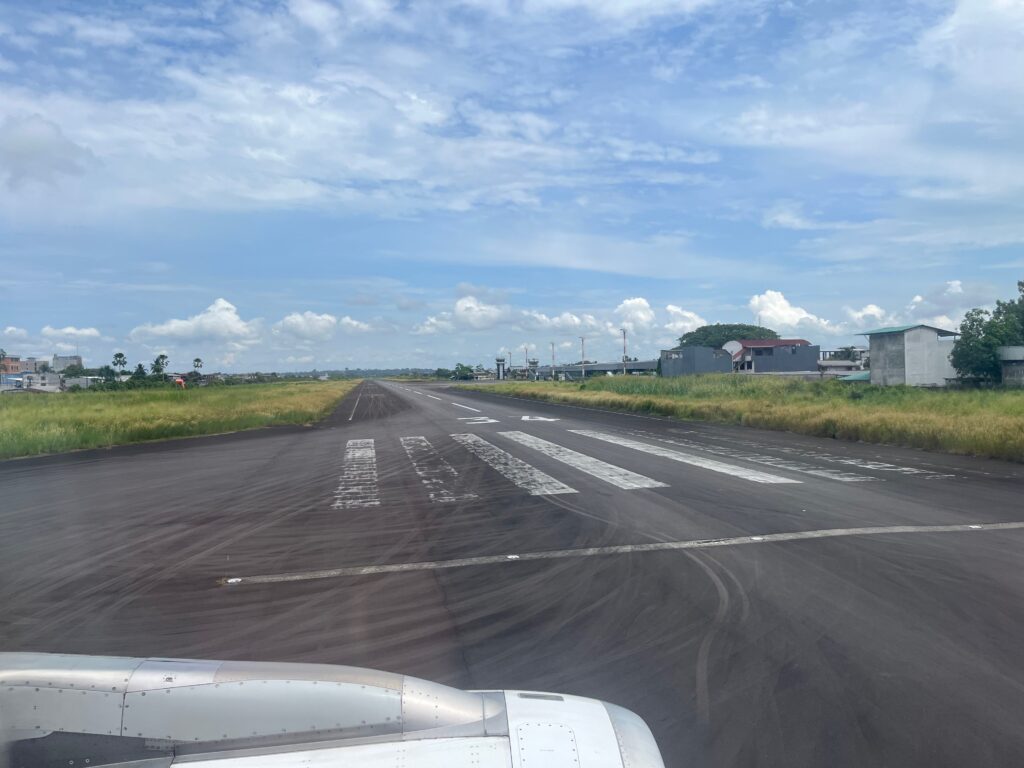
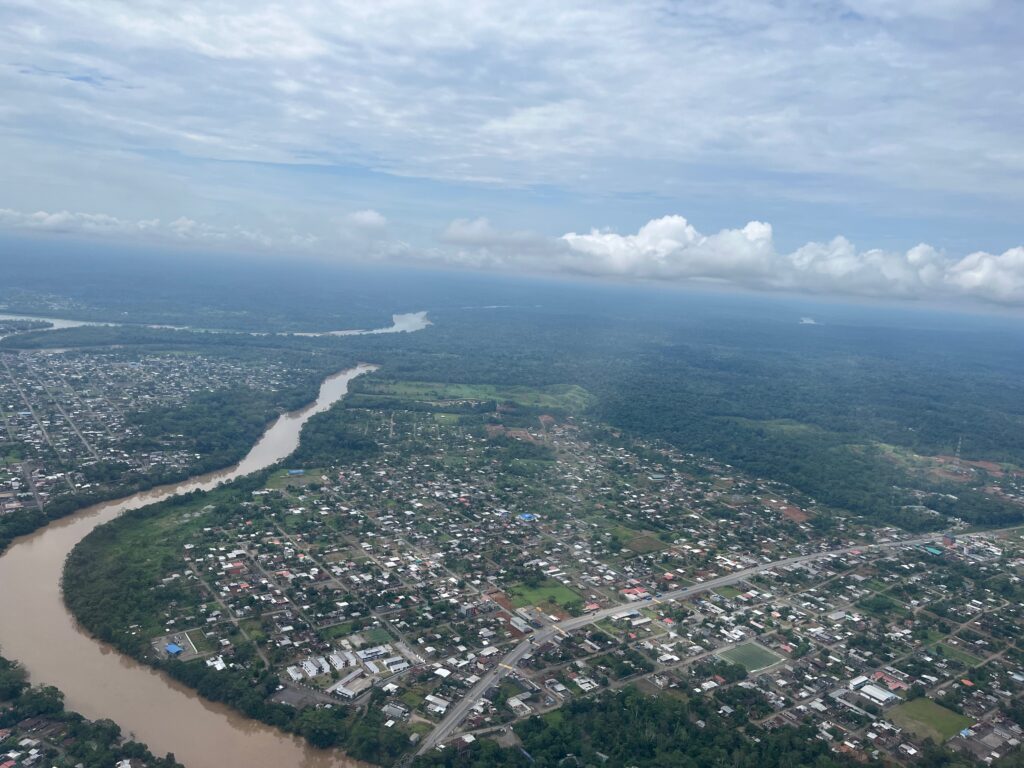
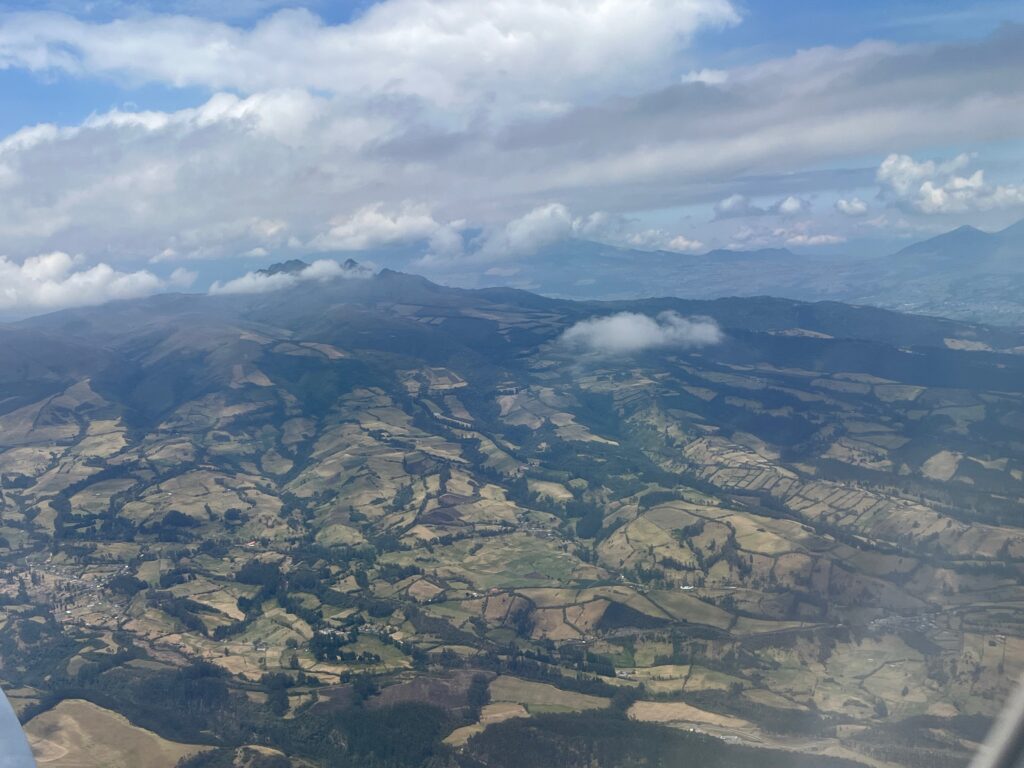
After arriving in Coca we had an uneventful flight to Quito, we were transported to Hotel San Jose de Pueblo where we would spend the day until our 11:20 pm flight to Atlanta. The hotel was beautiful, with expansive grounds that included a pool, a pickleball court, a volleyball court, a high quality restaurant, and llamas roaming around the property.
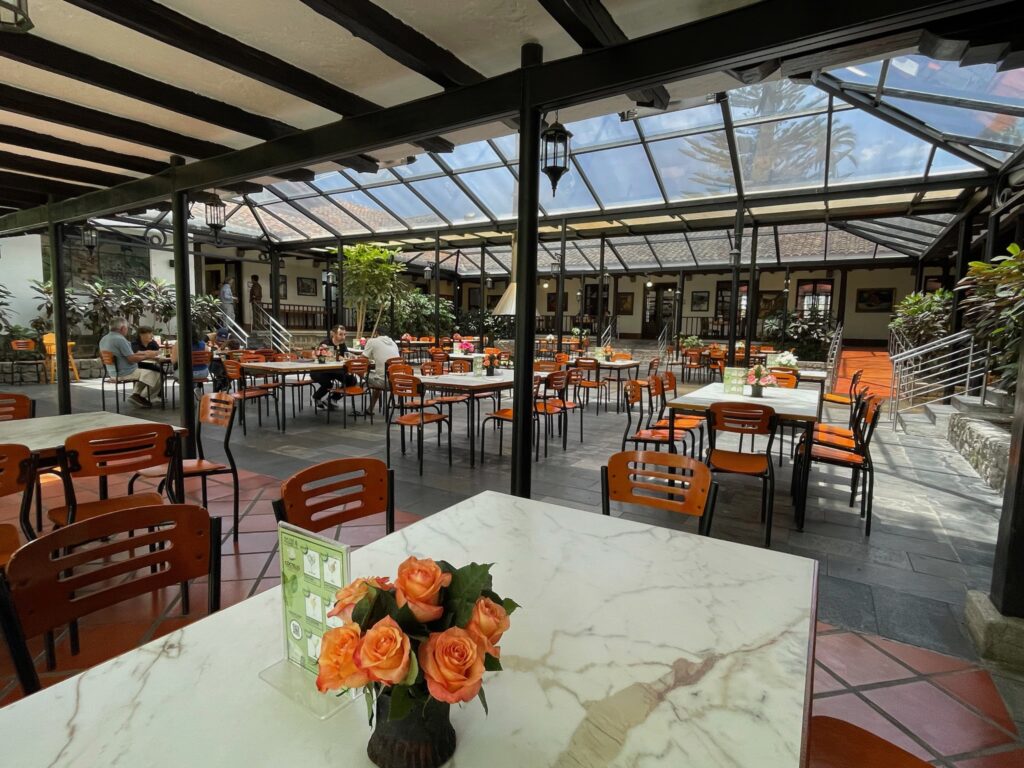
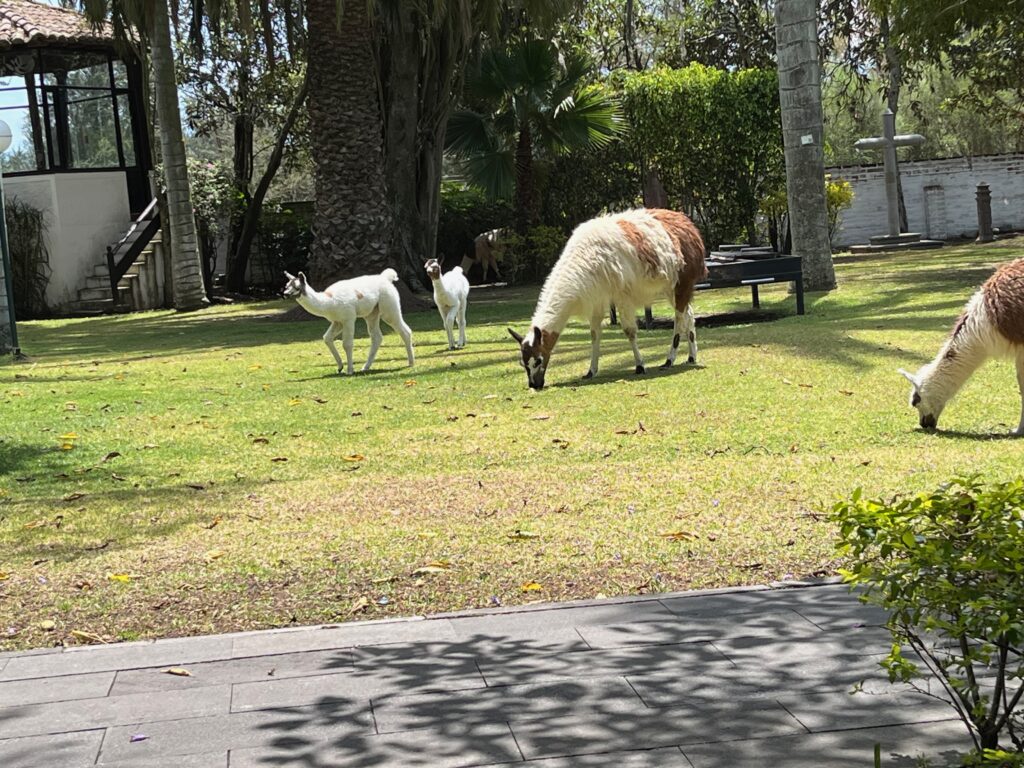
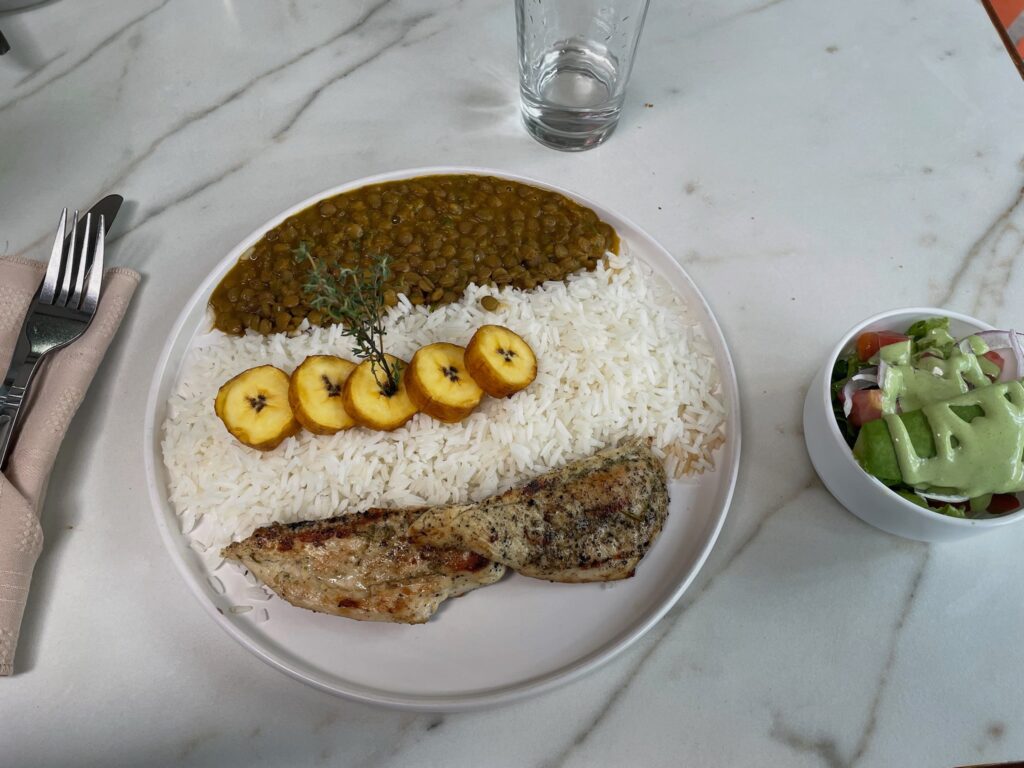
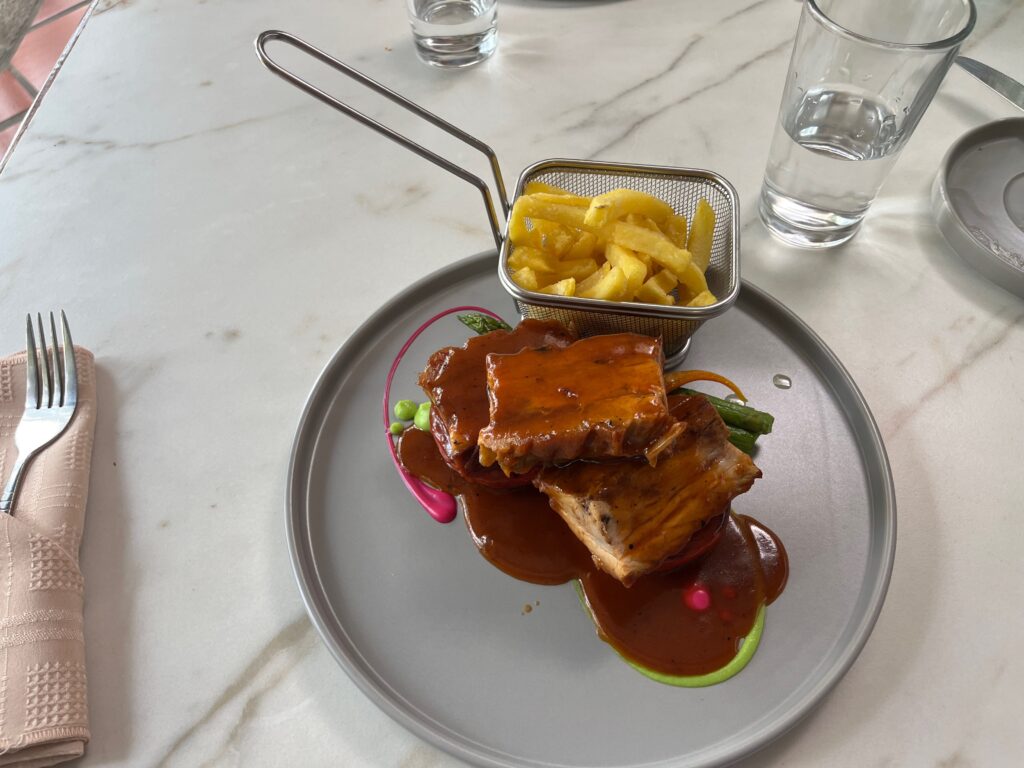
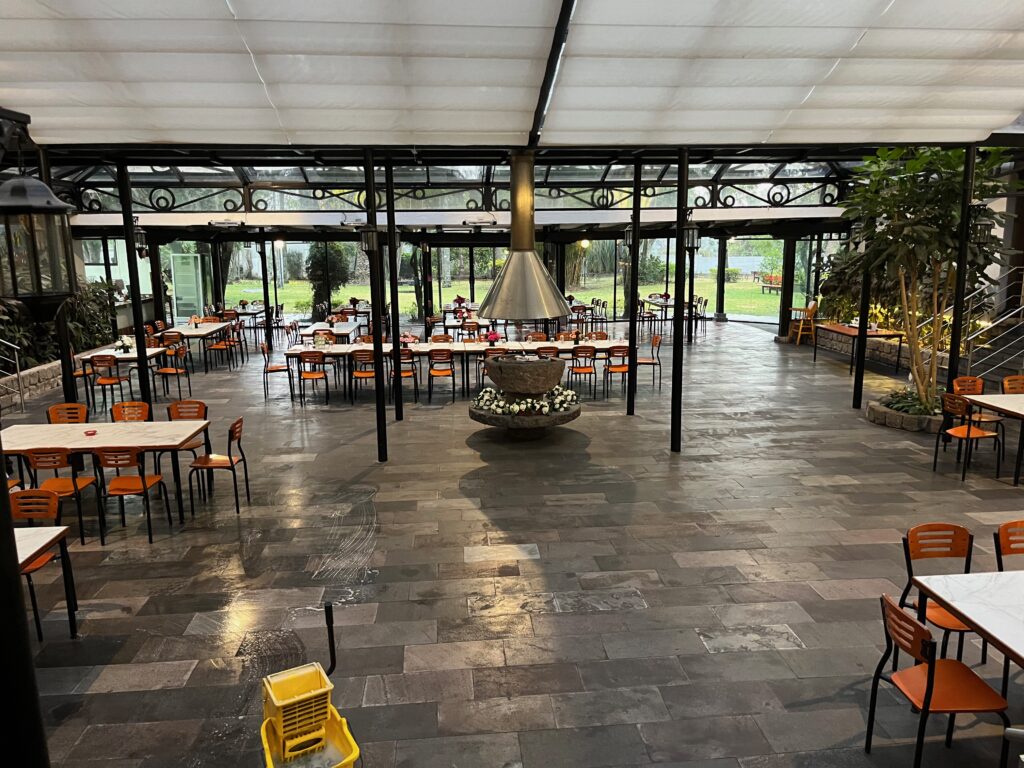
We had lunch at the restaurant, wandered the property, and took a little nap in anticipation of the travel ahead. Our flights to Atlanta and MSP were uneventful, as was our 4 hour drive home. Counting from the time we rose this morning until we got home on Monday at about 5 pm, we spent more than 34 hours in transit.
I hope you enjoyed this blog entry about our trip. We would definitely recommend traveling to Ecuador and seeing the sites we saw. There is, of course, much more to do and to explore, but we felt like we experienced a nice sampler of activities, history, and culture in the country. We already talking about the possibility of returning to the Amazon Basin during the rainy season where the sandbars would (hopefully!) be less of an issue.
In closing, here are some additional photos you may find of interest.
Life on the River
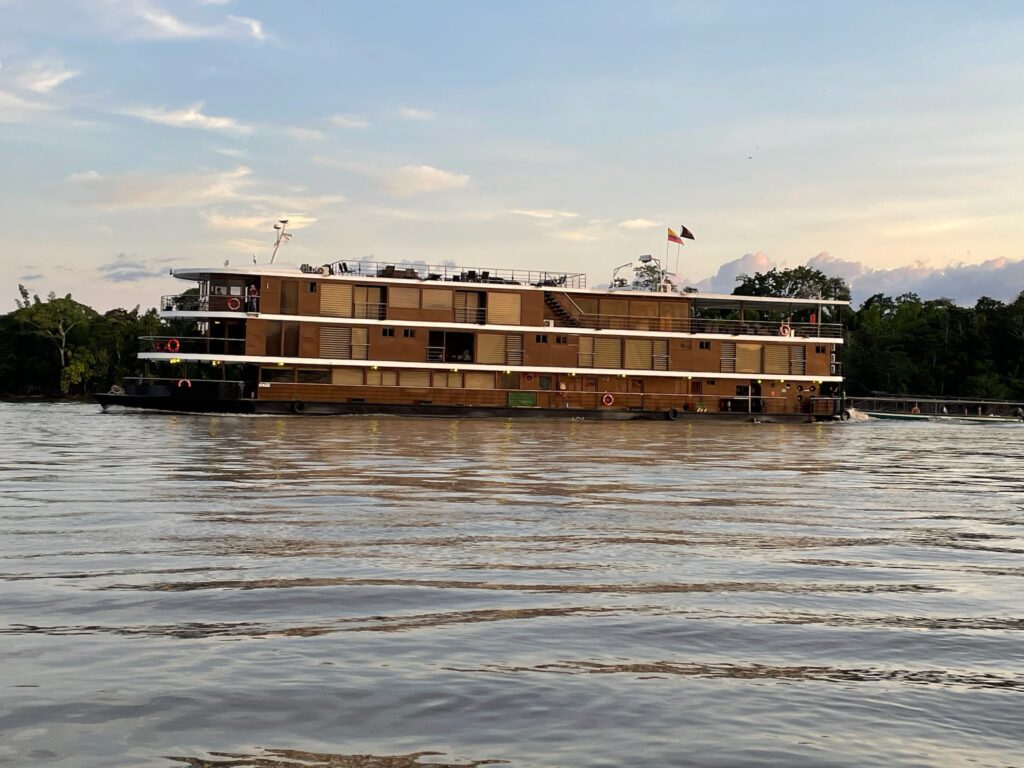
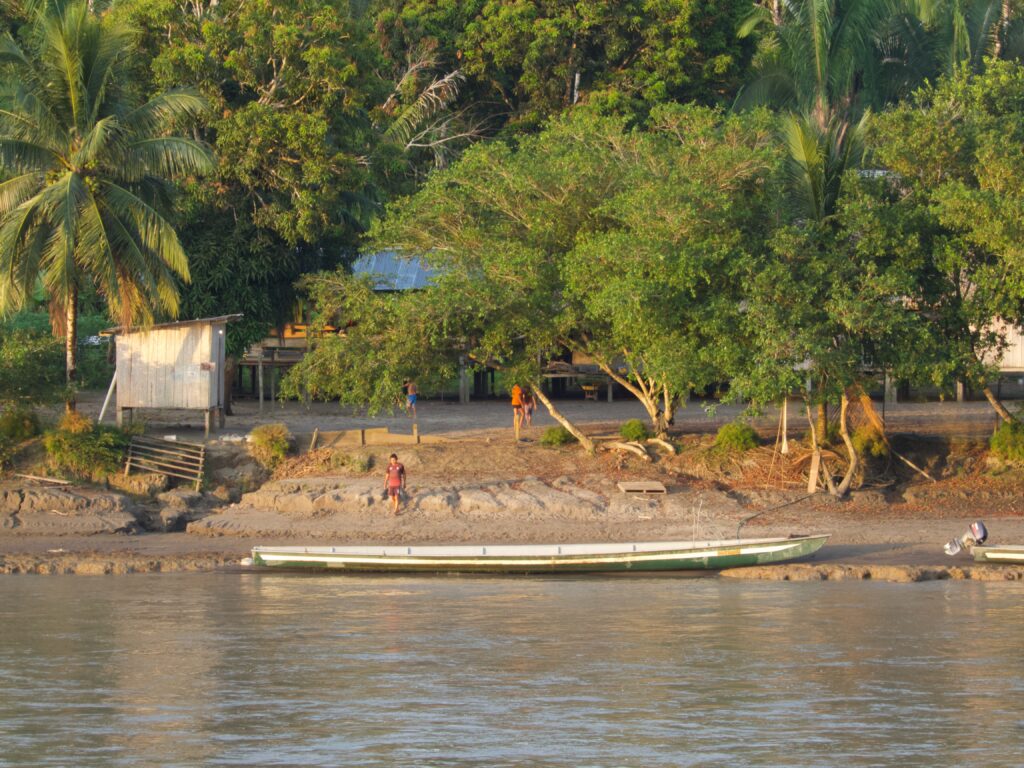
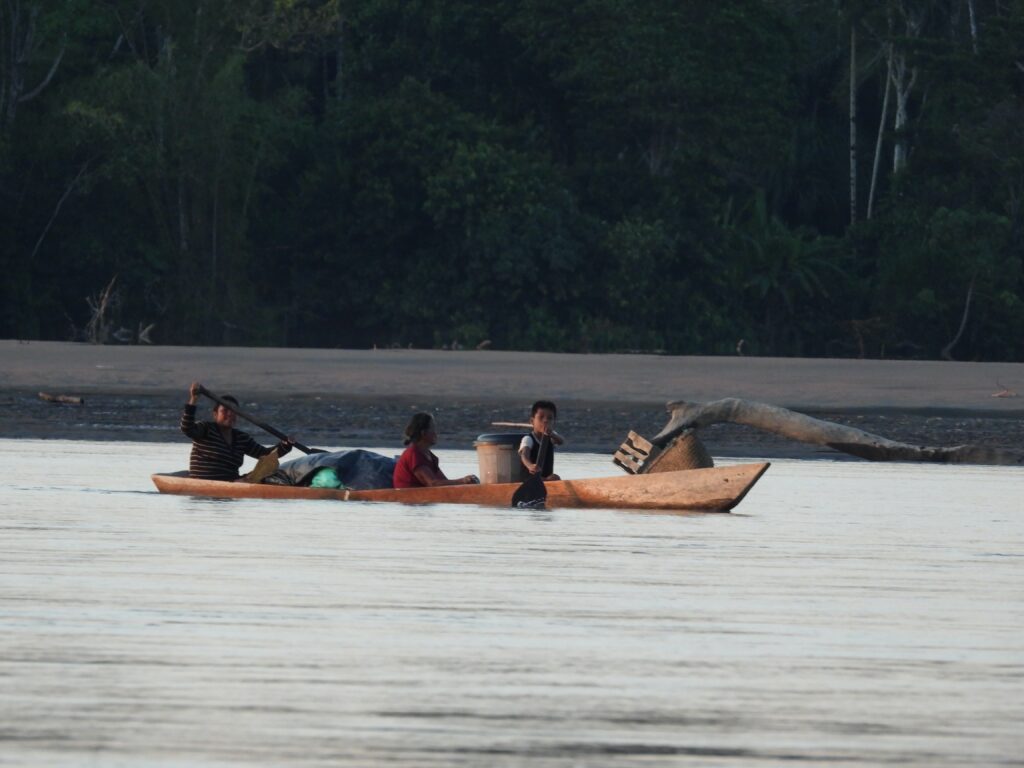
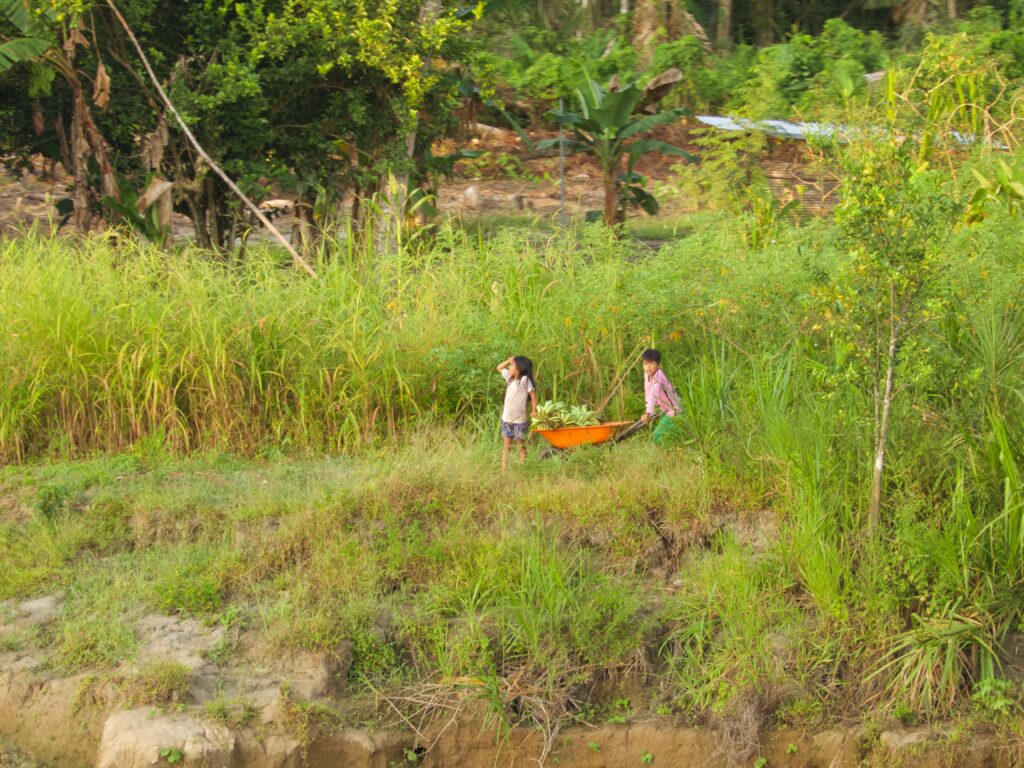
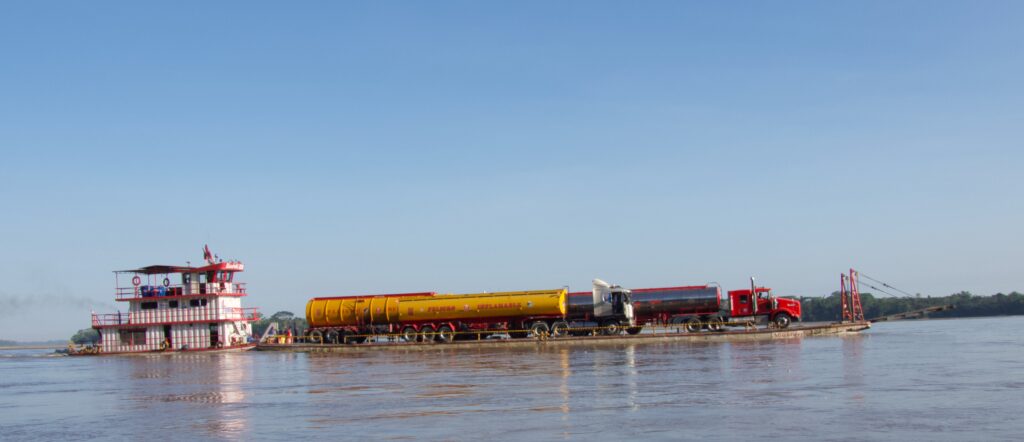
If empty, the barge can carry 6 tanker trucks.
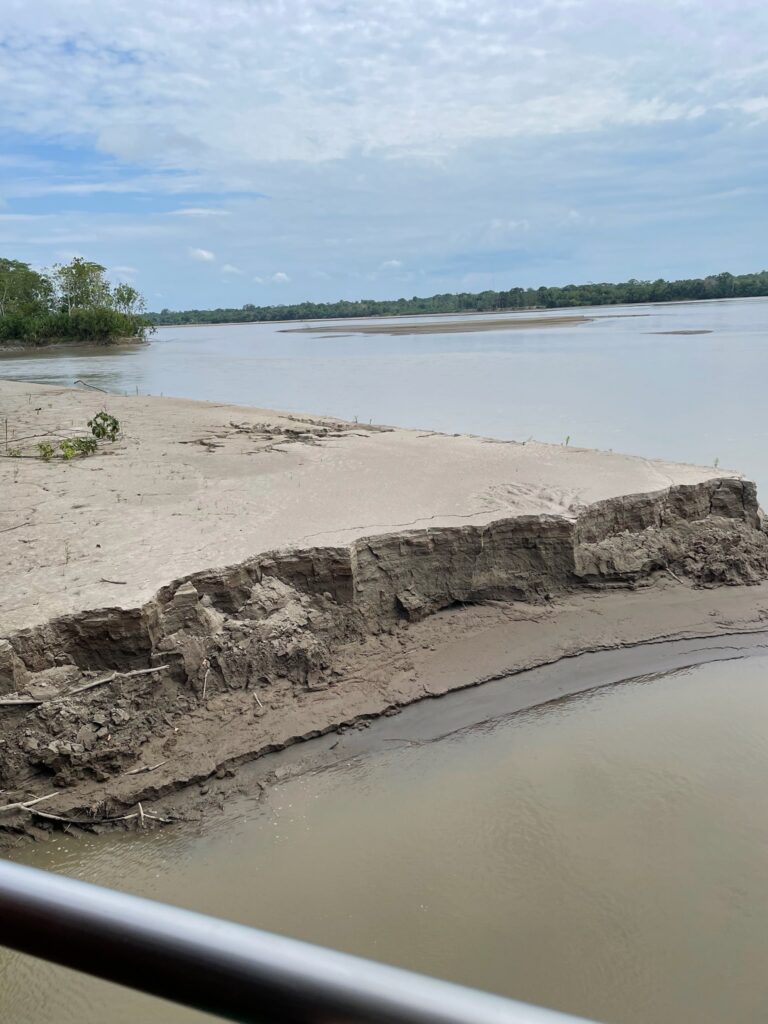
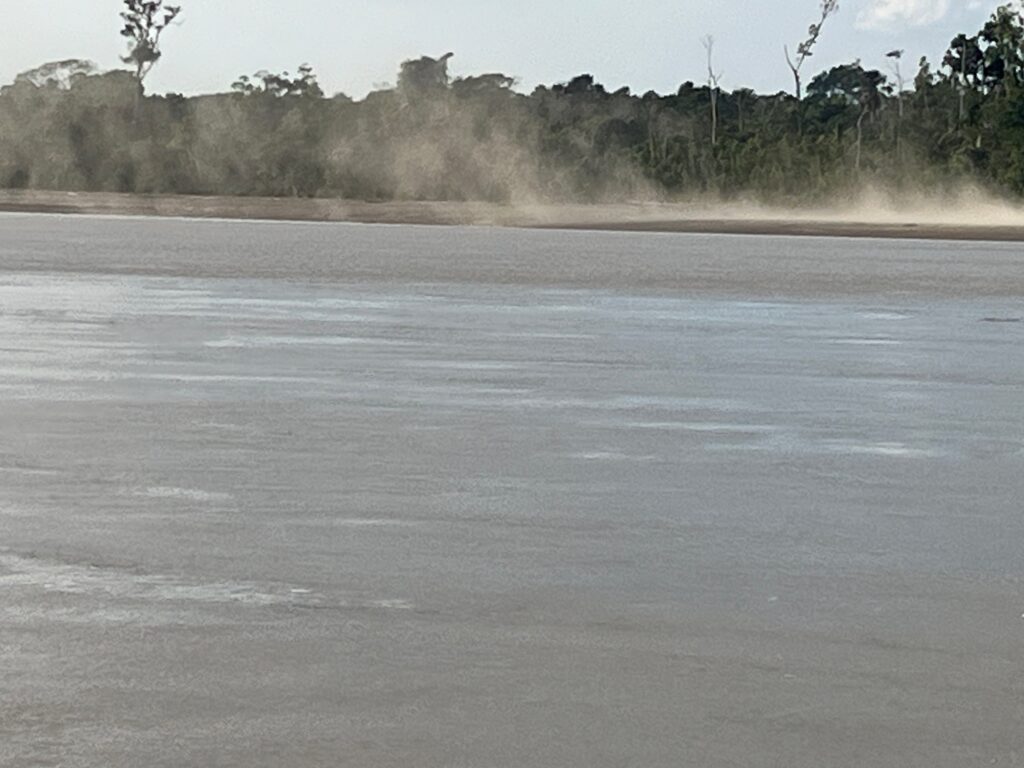
Additional Sunset Photos
